Lovett Bay Public Wharves: Some History
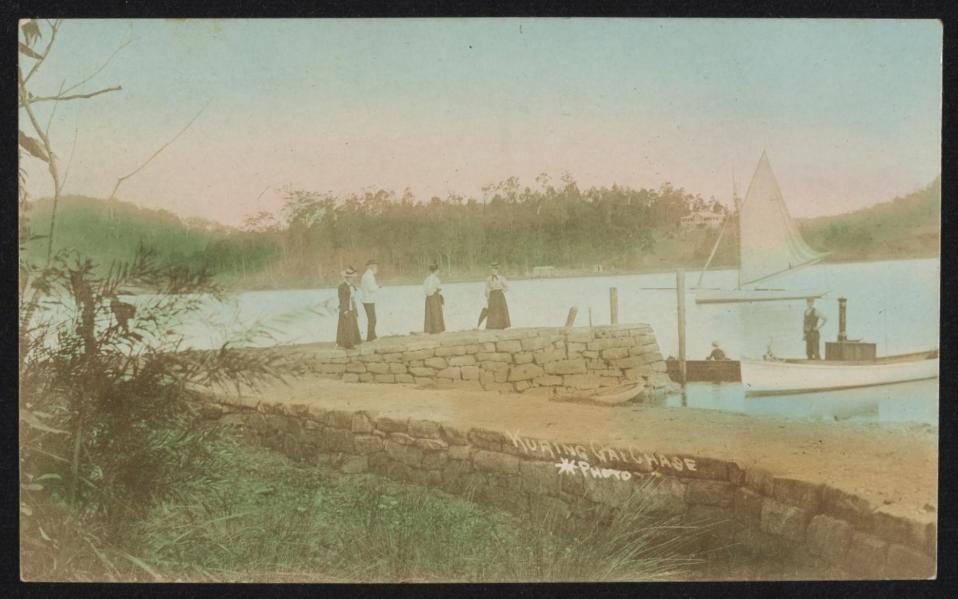
The causeway and stone jetty built by the trustees of Kuring-Gai Chase National Park in 1895 is the first public accessway in Lovett Bay. This was built through the newly formed Ku-Ring-Gai Chase National Park being gazetted in December 1894 and the Trust for the same being given permission to by the owner of Portion 17.
KURINGGAI CHASE. TO THE EDITOR OF THE HERALD.
Sir,-When on 6th October, 1892, I first submitted officially to the Minister for Lands the proposal to "dedicate the waters of Cowan Creek, and ... adjacent to same, as a national park for North Sydney, one of the principal arguments adduced was that "steps could be taken to prevent the reckless destruction of native flowers .eg, the rock-lily, formerly so abundant, is becoming scarcer every year, and must soon become extinct it not to some extent protected."
Two flowering seasons passed away before my suggestion was adopted by the preliminary notification of Kuringgai Chase in the Government Gazette of 20th June, 1894. During that interval of over 20 months wholesale depredations had been committed, not by the tourist but for trade purposes which left the foreshores for miles denuded of the special vegetation which had made them attractive in former years- the last tree ferns had been cut down, the rocklilies almost extirpated (the cutting of their flowers did no permanent harm, but almost every accessible plant had been torn away by the roots, and hundreds of Christmas bush trees of fifty growth and upwards had been felled, merely to lop off the top branches for decoration of the butchers shops &c.in Sydney). The removal of a few cartloads or boatloads of such vegetation each year would not have done any irremediable damage, but many of the depredators made a practice of camping on the creek for a week or two before Christmas and ruthlessly destroying everything they could find in accessible places, which they did not want for themselves, in order that others might not join in their harvest and cheapen the market against them at Christmas time.
Against this state of things the trustees have hitherto been unable to act owing to certain formal matters in connection with the dedicaction of the Chase not having been completed; but, seeing that the anticipated destruction during this season (the third) would put back the plate for years a strong effort has been made, and being courteously backed by the department the dedication of the Chase was finally secured by gazette notice of the 14th instant and, after overcoming further obstacles the publication of the bylaws was obtained in a supplement Gazette of the same date.
Full arrangements having been made, in anticipation, linen posters of notice of bylaws, &.c , were delivered the same evening at a distant camp at Cowan Creek, where two men had been retained to post them along the foreshores of the Chase on Saturday. Similar posters were distributed on Saturday morning at the stations along the North Shore line, and accompanied by a constable and special constable I left for Pittwater the same morning on similar duties, and to establish a repressive force there, and to interview various residents who had promised to assist the trustees as far as lay in their power.
This morning (Monday) a strong body of special constables, under the authority and instructions of the trustees and the guidance or the local constable, commence a daily patrol in a steam launch from the head of Cowan Creek down to the Hawkesbury. Under such prompt and repressive measures the trustees feel confident that they will be able to put a stop to any piratical practices on the Chase during this season and that if the necessary support is afforded them by the Government, and the moral support of the general public is on their side, such practices will become impossible for the future and that both the flora and fauna of this large tract of country, abutting on the 10-mile circuit of Sydney, will be protected for future generations in Kuringgai Chase, although probably they will have utterly disappeared from most other places.
It is to be regretted that a section of our legislators, in ignorance, I presume, of the circumstances should by their recent vote have crippled the action of the trustees. On the evening after that vote I was obliged to discharge a road party at work (uncompleted) on the Chase, and other working men, who were anxiously awaiting the commencement of other works proposed to be carried out for the convenience of the public, were advised that they could not be commenced. Thus, as all administration by the trustees is performed gratuitously, the whole weight of that adverse vote falls on the working men of the Lane Cove and Hornsby districts, of whom, I am sorry to say too many able and worthy men are unemployed, while, furthermore, the proposed increase of convenience to the public, which would have largely increased our railway receipts, must stand in abeyance.
…. December 17. E. DU FAUR, trustee. KURINGGAI CHASE. (1894, December 18). The Sydney Morning Herald (NSW : 1842 - 1954), p. 6. Retrieved from http://nla.gov.au/nla.news-article14000128
From 1867 on there were also a series of excursionist visits on steamers to the area, bringing thousands of visitors. Although most of these were landed at Careel Bay, Newport, and The Basin, they would have looked west to the to be established park.
The trustee, in relating the size of this causeway, describes:
KURING-GAI CHASE. TO THE EDITOR Of THE HERALD.
Sir,-The trustees have had the opportunity of paying an interesting official visit of inspection to the Chase. Accepting the well-known hospitality of the Hon R.H.D. White, they left Farm Cove in his steam yacht the White Star on Friday at 5pm. The trustees present were -The Hon H Copeland (president), Dr J C Cox, Messrs. E Du Faur, J. de V. Lamb, the Hon R. H. D White, M L C, the Hon F A Wright, M L A , and the hon secretary (Mr E J Siervern. The remaining trustees-the Hon Sir Joseph Abbott, Messrs T A Dibbs and W J Lyne-were unavoidably prevented from attending but Messrs Edmund Barton and Robert McMillan accompanied as guests.
After camping on Friday evening at the Basin, Pittwater, they proceeded to Lovett’s Bay (near Bay View), and inspected the works which have been carried out during the last year, under the Superintendence of Mr Du Faur. These consist of a substantial stone wharf, erected by consent of the owner of portion 17 and of the Lands Department, on the foreshore of portion 17, between high and low water marks, to deep water and a stone causeway, 8ft wide and 200ft long, from the wharf to the entrance of the Chase, which, owing to the shallowness of the upper part of the bay, was inaccessible without this concession from the adjoining freeholder. From the entrance to the Chase a path about 8ft wide has been cleared and formed through what was previously an impenetrable scrub to the head of the bay, where there is an abundance of fresh water crossing this, a similar path has been formed along the southern side of Lovett’s Bay to a charming nook at the back of "The Peninsula," Mr Oatley’s property. Here the water falls, except during such a dry season as the present, over cliffs about 80ft to 100ft high into a rock dell, where cabbage-tree palms and other vegetation luxuriate. These paths are about a mile in length.
Returning to the northern side of the bay, at a point about 12chains from the end of the causeway, the party then descended by a zigzag path, which has been laid out to the summit of a hill which towers over the bay at a height of nearly 500ft, to a flagstaff, which is less than S800ft, on a base-line from the starting-point. Notwithstanding the difficulty of overcoming such a grade, and an absolutely perpendicular escarpment of over 100ft near the summit, the pathway is of gradual and comparatively easy ascent: it has been visited by many ladies, and from its summit a splendid view is obtained over Pittwater, Newport, and the ocean on one side, and the rugged features of the Chase on the other, a description of which must be left for another occasion. From the Flagstaff another path has been scrubbed for rather over a mile, to the Flat Rock; a peculiar formation, of which a graphic description has already appeared in the press. The trustees returned to the yacht by noon highly gratified with what they had seen, and expressing their astonishment at the amount of work done, and the facility of access afforded over so large a tract of country, previously inaccessible, at an expenditure including wharf and causeway of less then £200. KURING-GAI CHASE. (1896, February 11). The Sydney Morning Herald (NSW : 1842 - 1954), p. 7. Retrieved fromhttp://nla.gov.au/nla.news-article14036808
%20Lovetts%20Bay%20Causeway%20ad%20wharf%2056.jpg?timestamp=1757445628580)
'Lovetts Bay Causeway and wharf' - lower caption at right reads 'No. 56.Kuring Gai Chase, Pittwater, Lovett Bay Wharf & Causeway'. Item: FL3592257, courtesy NSW Records and Archives
The original land grantee for Portion 17 was Joseph Cario (sometimes spelt Carrio or Carriel, also known as 'Portugee Joe'), who applied for 40 acres on the north side of Lovett’s Bay under the Crown Lands Alienation Act of 1861. It was surveyed in November/December 1881, at which date improvements had been made to the value of £40, viz; clearing £4, cultivation £6, and a house £30. A hut and garden are marked on the plan, close to the water. [LTO Map C435 2030]
Joseph Cario had married Eliza Oliver in 1871, a daughter of William Oliver. In a Statutory Declaration dated 30 April 1891 [LTO PA 10712], Thomas Oliver stated that MacDonald’s 30 acre grant at Salt Pans had been leased to Joseph Cario from 20 March 1878 for three years, where he lived with his wife in “a two-room humpy.” Both Oliver and Cario had cut wood on the land. Oliver Brooks’ wife Emma described the Carios’ home as “a bark hut with a nice garden”, on Salt Pan Point. Emma Brooks stated that they had no children, but on 29 October 1880 Joseph Cario nominated a boy, Robert Joseph, aged 9, to attend the school which was being established at Church Point
Cario paid £40 for his Lovett Bay acreage, and received his grant by purchase on 16 July 1886. [Land Titles Office: Vol.799 Fol.108] He sold his land grant in 1886. Joseph Cario owned a vessel, the Maid of Australia, which traded between Pittwater and Sydney.
Vol.799 Fol.108:
.jpg?timestamp=1757442433658)
.jpg?timestamp=1757442473905)
.jpg?timestamp=1757442504774)
Cario sells to Frederick Chave August 23 1856 part of (20 acres): Vol- Fol 808-173 – this is where the causeway and Kuring-Gai Chase Trust stone jetty/wharf is sited.
Vol- Fol 808-173 (part of Portion 17):
.jpg?timestamp=1757442581459)
.jpg?timestamp=1757442620228)
Certificate of Title Vol-Fol 1100-98 shows 1 acre 2 roods and 7 perches owned by Frederick Chave of Pitt Water, July 4 1893, with a road (or track) 1 chain wide alongside the 18 acres bought by Bolton from Mr. Chave. One chain is 66 feet wide or 20.1 metres - this is between the original Cario land grant and that land grant of 50 acres owned by Andrew McCulloch.
.jpg?timestamp=1757620776738)
.jpg?timestamp=1757620837156)
Frederick Chave sells to 18 acres 1 rood 33 perches to Francis Bolton on June 19 1893 – Vol-Fol 1100-74. Mr. Bolton sells to Newton Charles Singleton of Lovett Bay on June 1st 1942, who sells off some lots, and then sells to Athol Anderson Stronach (Portion 17), Broker, May 8th 1950, who sells off some lots and then the residue becomes Vol-Fol: 6537-191, Certificate registered July 24th 1952, as 18 acres 1 rood and 33 perches still, and he sells lots into 1950’s.
Mr. Stronarch has 10 acres of Portion 17 resumed by the County of Cumberland Planning Scheme on February 24th 1955 (Vol-Fol: 7079-45 Lots 1, 2, 4, 5, 6 – lot 3 already sold – Cert. of title registered Feb. 13 1956) and more on March 4 1960 and more on April 26 1963 (Vol-Fol 9421-39) He passed away February 12th 1985.
Bolton's acreage Vol-Fol 1100-74:
.jpg?timestamp=1757621891547)
.jpg?timestamp=1757621928509)
.jpg?timestamp=1757621986927)
The remainder 20 acres, towards the west and head of Lovett Bay, is registered in Vol-Fol 808-161 as sold to Robert John Bell and Alexander Bell, both of Balmain, Engineers, on October 14 1886:
.jpg?timestamp=1757442676903)
.jpg?timestamp=1757442712190)
Eliza Cario died in 1893, and her husband Joseph died at Parramatta in 1895.
The causeway, wharf and access tracks constructed at Lovett Bay with a walking track up the hill to Flagstaff Lookout, the works are further described in detail as:
Pittwater: Forming stone causeway, 8ft wide, along foreshore, from entrance of chase to deepwater, Lovett's Bay, 135 yards, and building substantial stone wharf at same. Scrubbing and forming pathway along foreshore from causeway to head of Lovett's Bay, on north side, and continuing same on south side to boundary of Flood and Oatley's Estate, Ventnor. Scrubbing and forming zigzag pathway from above foreshore, north side, up to flagstaff, 500ft high; ditto, paths to Flat Rocks; and many minor surveys and connections ditto ditto causeway, 6 chains 15 links; to head of Lovett's Bay, 45 chains 70 links; to Ventnor, 41 chains; Zigzag to Flagstaff, 40 chains; to Flat Rock, 37 chains 30 links; to or Flat Rock, 10 chains 15 links. Total, 180 chains 30 links — 2 miles 20 chains. ...
Returning to the northern side of the bay, at a point about 12chains from the end of the causeway, the party then descended by a zigzag path, which has been laid out to the summit of a hill which towers over the bay at a height of nearly 500ft, to a flagstaff, which is less than 800ft, on a base-line from the starting-point. Notwithstanding the difficulty of overcoming such a grade, and an absolutely perpendicular escarpment of over 100ft near the summit, the pathway is of gradual and comparatively easy ascent: it has been visited by many ladies, and from its summit a splendid view is obtained over Pittwater, Newport, and the ocean on one side, and the rugged features of the Chase on the other, a description of which must be left for another occasion.
And in this report by the Secretary:
Pittwater: Forming stone causeway, 8ft wide, along foreshore, from entrance of chase to deep water, Lovett's Bay, 135 yards, and building substantial stone wharf at same. Scrubbing and forming pathway along foreshore from causeway to head of Lovett's Bay, on north side, and continuing same on south side to boundary of Flood and Oatley's Estate, Ventnor. Scrubbing and forming zigzag pathway from above foreshore, north side, up to flag staff, 500ft high; ditto, paths to Flat Rocks; and many minor surveys and connections ditto ditto causeway, 6 chains 15 links ; to head of Lovett's Bay, 45 chains 70 links; to Ventnor, 41 chains; Zigzag to Flagstaff, 40 chains ; to Flat Rock, 37 chains 30 links ; to or Flat Rock, 10 chains 15 links. Total, 180 chains 30 links — 2 miles 20 chains. Kuring-gai Chase Trust. (1896, August 6). Evening News (Sydney, NSW : 1869 - 1931), p. 2. Retrieved from http://nla.gov.au/nla.news-article111041737
It was shown as “The Lookout” on parish maps between 1927 and 1947. The impact of this newly gazetted National Park should not be underestimated. The flow of people to the area, even outside of the warm seasons, must have been of benefit to those who lived ere permanently in providing access via boats as well as food and accommodation for those who had decided on making a weekend or longer visit.
There was even a waltz set to music especially written:
From Messrs. W. H. Paling and Co., Limited, we have received a copy of the "Ku-Ring-Gai (chase) Waltzes," by T. H. Massey. The set is composed of very tuneful music, and such as to invite lovers of the merry dance to tread a measure. CURRENT NEWS. (1895, January 29). Newcastle Morning Herald and Miners' Advocate (NSW : 1876 - 1954), p. 4. Retrieved from http://nla.gov.au/nla.news-article133347964
While these two postcards, dated December 24 1905, and once again from the great collection you can access online from the National Museum of Australia, and kindly donated by Josef Lebovic's Gallery, would have been purchased from a local store - either that at Church Point or the one run, then, by the Roche family at Bayview wharf.
They are both addressed to Miss Nell Millington at 145 Victoria Street, Lewisham - this first one, from a Lily White, even marks with an 'x' where they are staying:

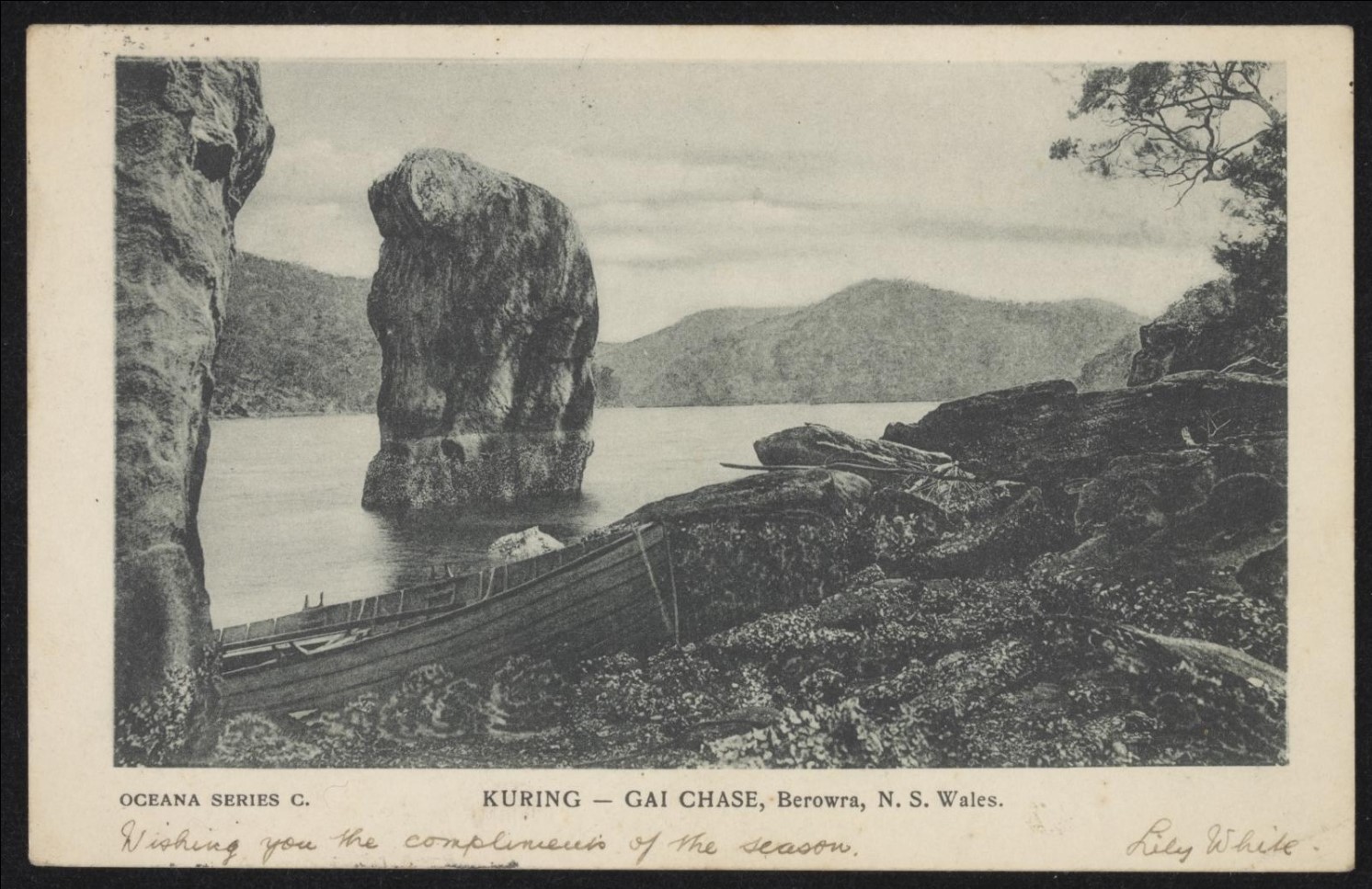
A visitor the year after those postcard dates describes:
PITTWATER.
I will write and tell you about a delightful holiday Flo and I had a few weeks ago. We had grown rather tired of the Mountains, and thought a seaside place would be a change, so at last we decided on Pittwater. We started one Friday afternoon, and, catching the 3 o'clock boat to Manly, reached it in plenty of time for the Pittwater coach, which left Manly shortly after 4 o'clock, and arrived at Pittwater in time for dinner.
Although we had a 12 miles' drive by coach, still we did not find it a tiresome one, for the road was good all the way; besides, the scenery was so beautiful. All along the route there was something interesting to look at.
Now we were passing through a forest of tall trees and beautiful cabbage-tree palms, and wild flowers growing in great profusion; and then suddenly we were confronted in all its grandeur by the ocean itself. And so on we drove, until Church Point, which is as far as the coach goes, was reached, and we found ourselves on the shores of Pittwater.
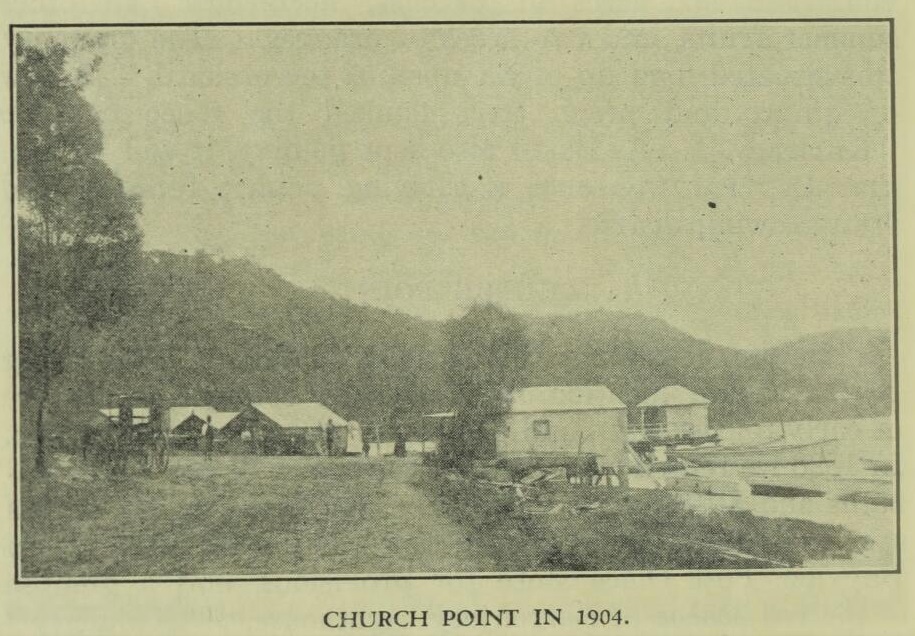
CHURCH POINT IN 1904.
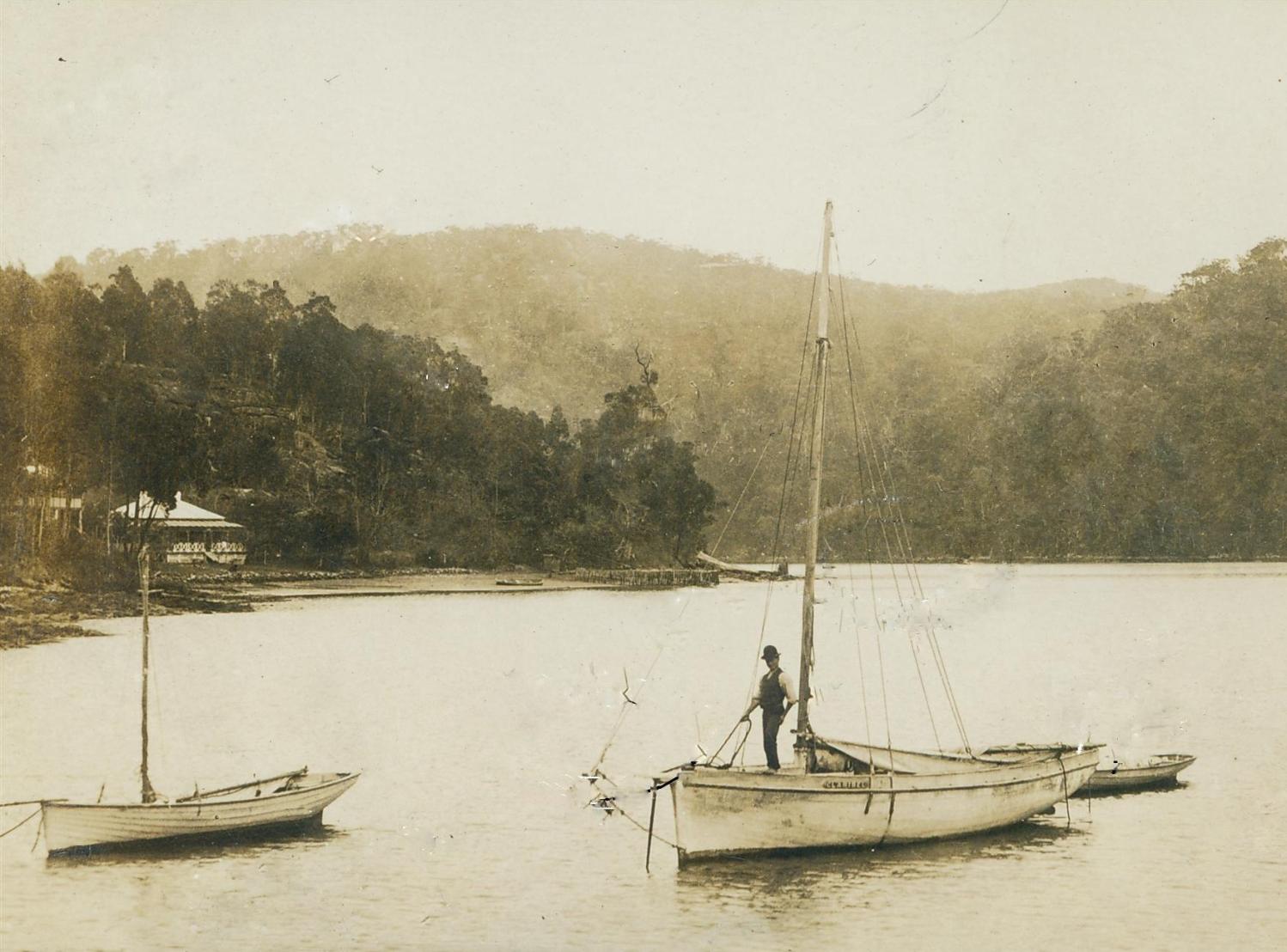
We had made arrangements beforehand as to what coach we would come down by, so we weren't surprised on leaving the coach to find a small motor launch waiting to convey us to our destination.
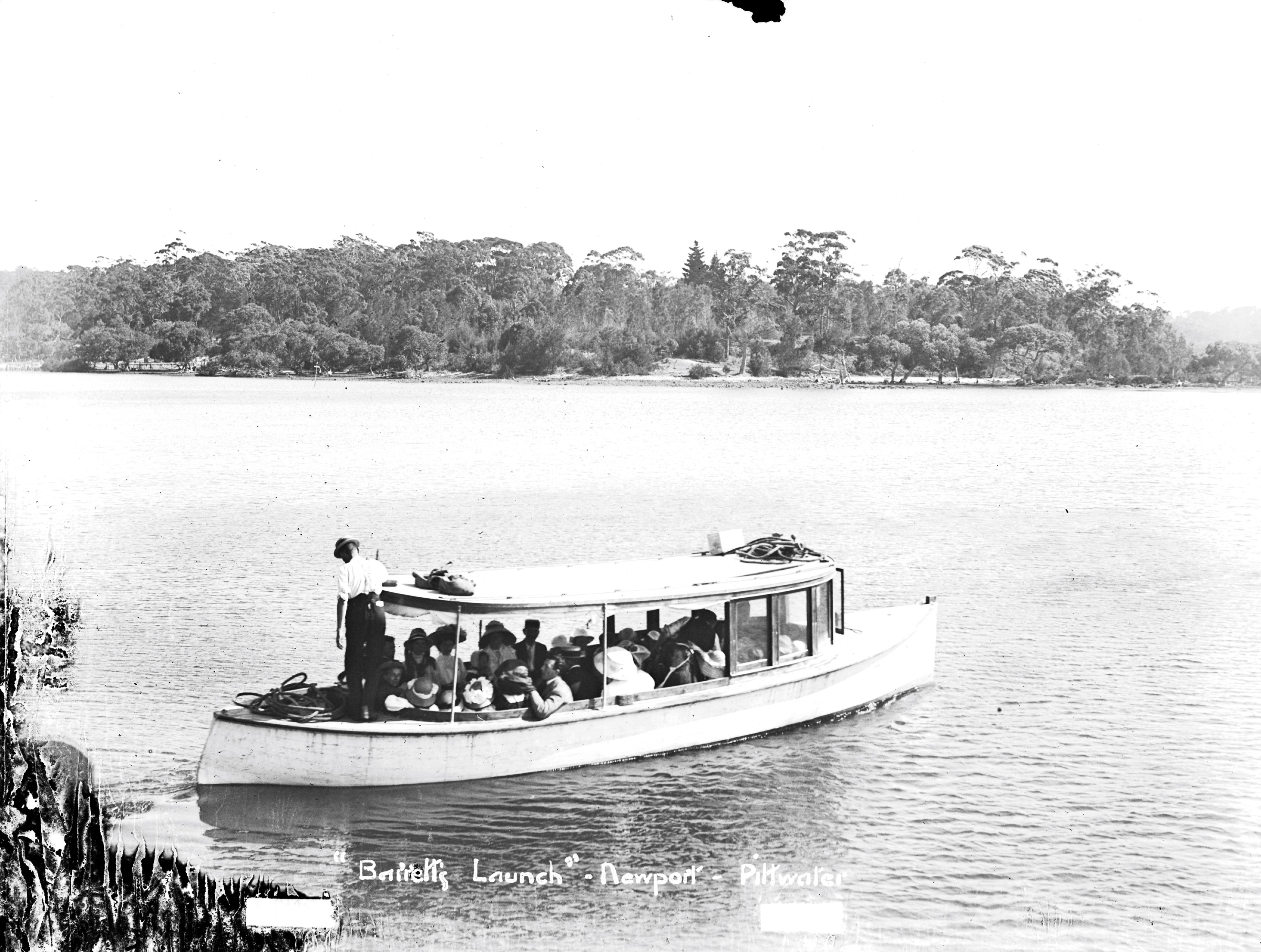
Above: Barretts' launch at Newport, Dated: circa 31/12/1908, Digital ID: 18526_a024_000028, courtesy State Records of NSW
After about 10 minutes in the launch we entered a pretty little bay surrounded almost by mountains, and picturesquely situated on the side of one of these was the cottage which was to be our abode for the next ten days.
Next morning we awoke early and made a tour of inspection, and were delighted with the place, for, besides having nice orchards, cows, poultry, plenty of milk, eggs, cream, and oysters, we discovered a bathing-place securely fenced off and boats if we cared to fish or row.
After break-fast the little launch in which we had come across in the previous evening, and which belonged to the house, was waiting at the pier to take us to see some of the beauty spots round about. That morning we went up as far as the Barrenjoey Heads, which are the entrance to it from the ocean side. On the South Head is the famous Barrenjoey lighthouse. Then we went round Lion Island into Brisbane Water, on to the mouth of the Hawkesbury River, and on our way back landed at Barrenjoey to inspect the light-house, and thence homewards, after having spent a most enjoyable day.
Next day we went in quite an opposite direction, and soon found ourselves in the Kuring-gai Chase. Leaving the launch, we followed the path up the mountain. At first we anticipated rather a dreadful climb, but soon the beauty of the flowers and ferns attracted our attention, and so onward we pressed until the summit was reached.
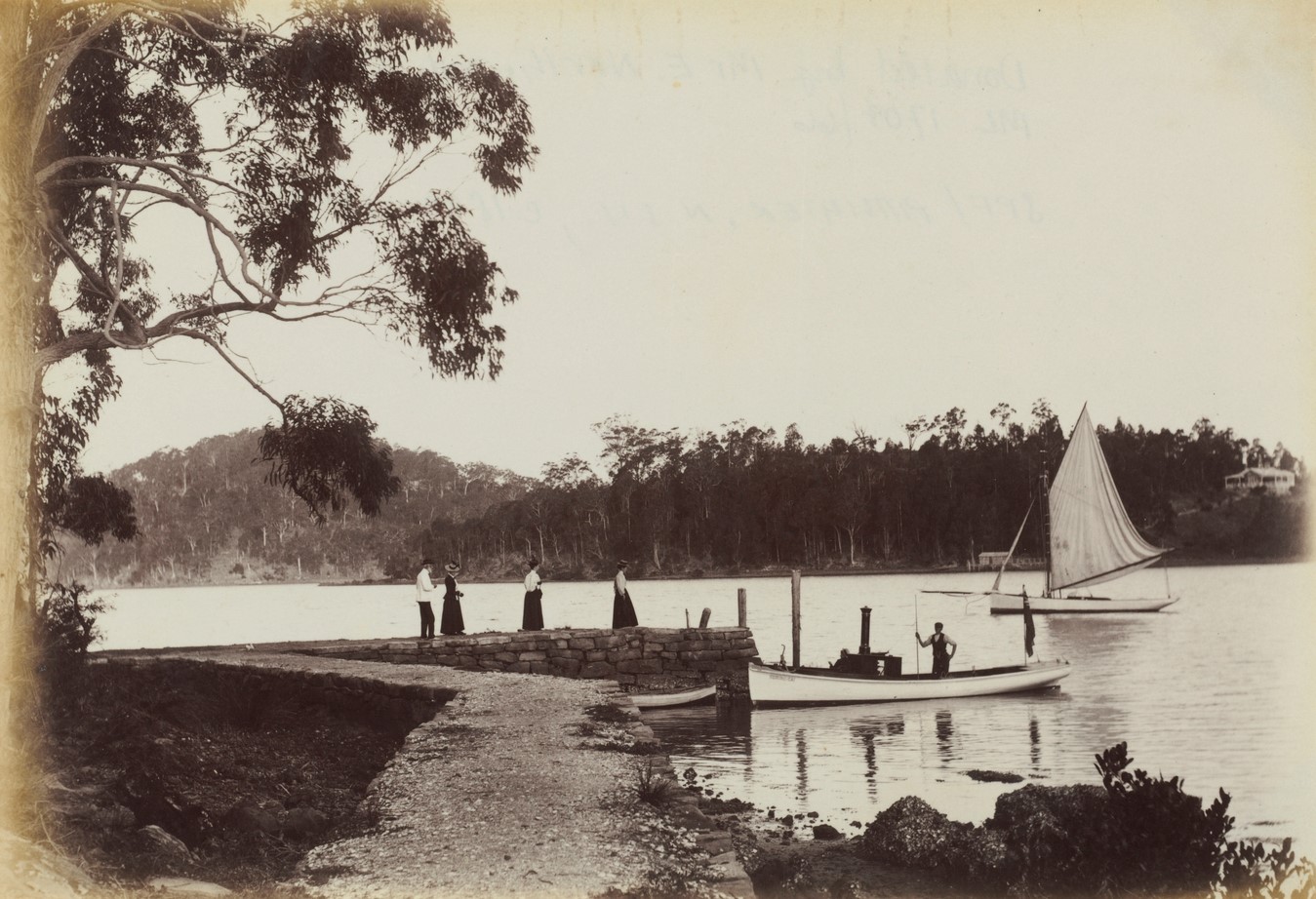
Lovett Bay and the Ku-Ring-Gai Chase Trust built causeway and the Trusts' launch, circa 1901-05. Item: SLNSW_FL1674228 circa 1900, Courtesy State Library of New South Wales
Sitting down, we gazed on the surrounding scene — one of the most glorious I had ever looked upon. Down beneath us was the water sparkling like diamonds in the Summer sunshine, and jutting out into it a large isthmus richly clothed in all its beautiful verdure and foliage; whilst studded here and there among the trees were tiny cottages. Then further on Church Point, and Scotland Island appeared; and still further on Bayview and Newport.
And so our days were spent exploring new places, picnicking, and fishing, until at last the morning came for our departure homewards. And it was rather unwillingly that we bade farewell to beautiful Pittwater. Our board, which was very good indeed, cost us 30s a week; and as there were two of us, and we stayed ten days, it came to £4 6s, a slight reduction being made for staying over the week. The coach journey cost 6s return for the two or us, and out fares by tram and ferry 1s each, making in all £4 14s. This covered everything excepting tips, but as everyone has his or her idea on that subject I thought it best to leave that item out.— CONSTANCE (Enmore). PITTWATER. (1906, December 23). Sunday Times (Sydney, NSW : 1895 - 1930), p. 4 (The Sunday Times Magazine Section). Retrieved from http://nla.gov.au/nla.news-article126553173
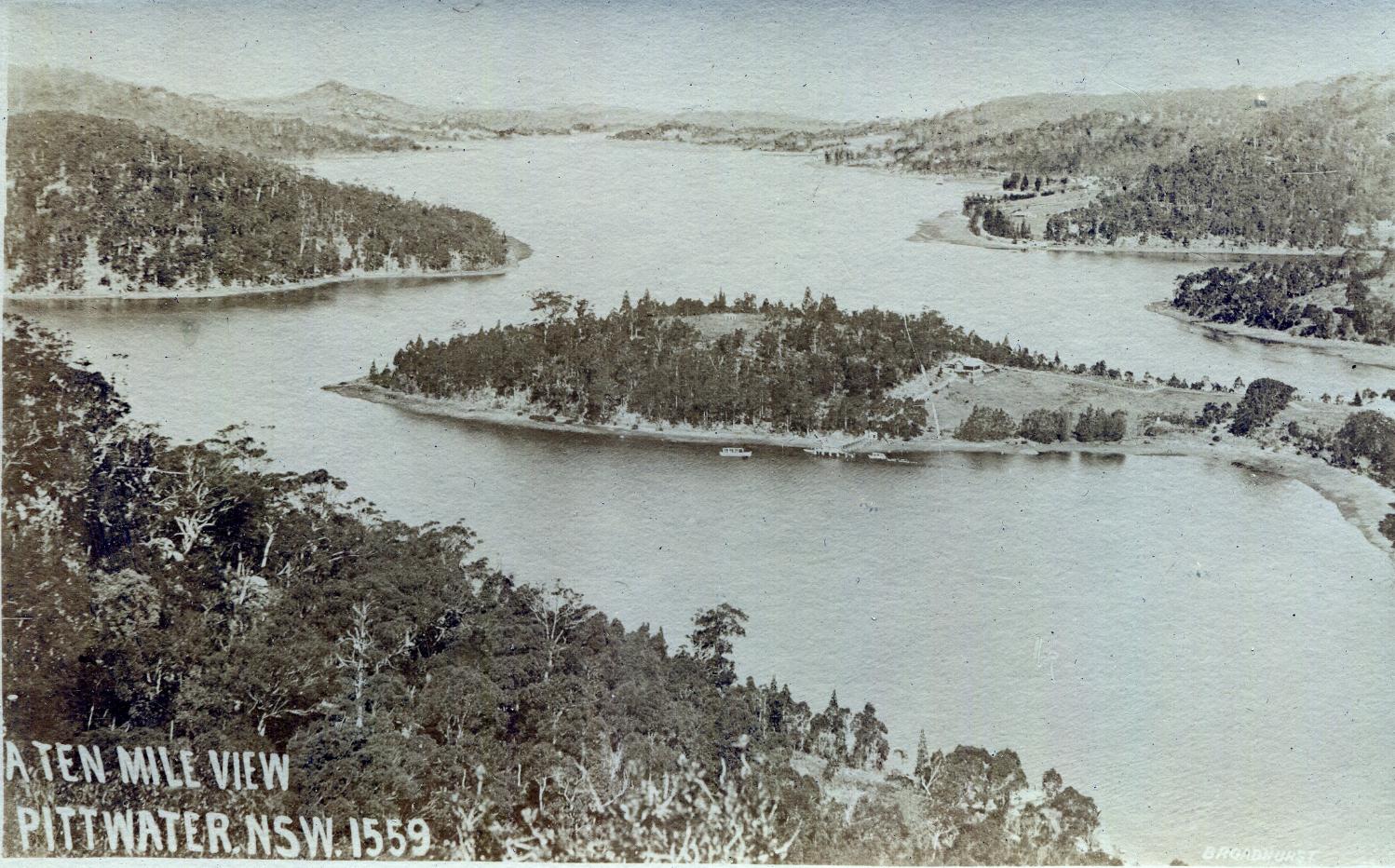
An earlier visitor describes:
Near the summit of the hill we come on a great cavern, or rather an archway, in the Hawkesbury sandstone. It is a wonderful spot indeed, for the architect or the builder has glorified the archway with the most weird and fantastic carving. It was carved by the wind. When the wild storms of wintry days swept over the Chase they took up grains of sand and tiny stones and flung the mat the bold peak till they wore a passage through it. The metallic oxides in the sandstone were obstinate, and stood firm, while the silicious particles beside them gave way, and so we get marvellous results in carving. This work, was painfully slow, but old Dame Nature is lavish in the use of time. It is nothing to her.
Just above the archway is the flagstaff, the point we have been climbing for, the point the pathway has been made to reach. The view from the summit is lovely in the extreme. Away in the distance over Flood's Peninsular was the blue sheen of Pittwater, and along the shores the little white nests in which human workers nestle o' nights. Beyond all, over a brief neck of bold, sandy looking land, is the great Pacific Ocean, restless, mysterious, awful!
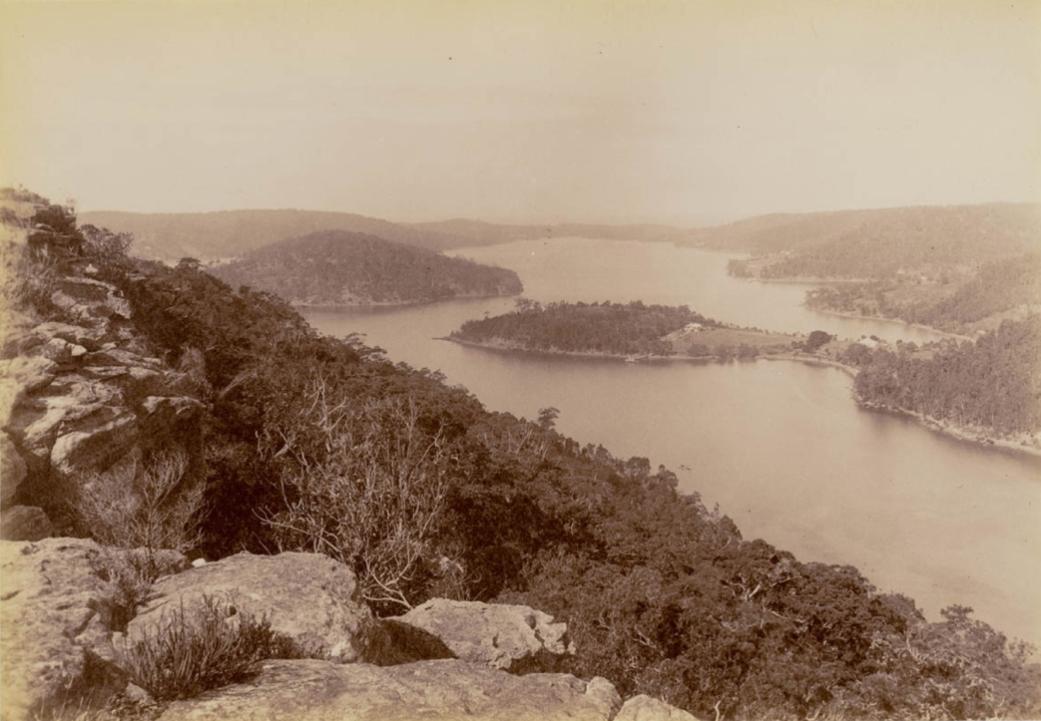
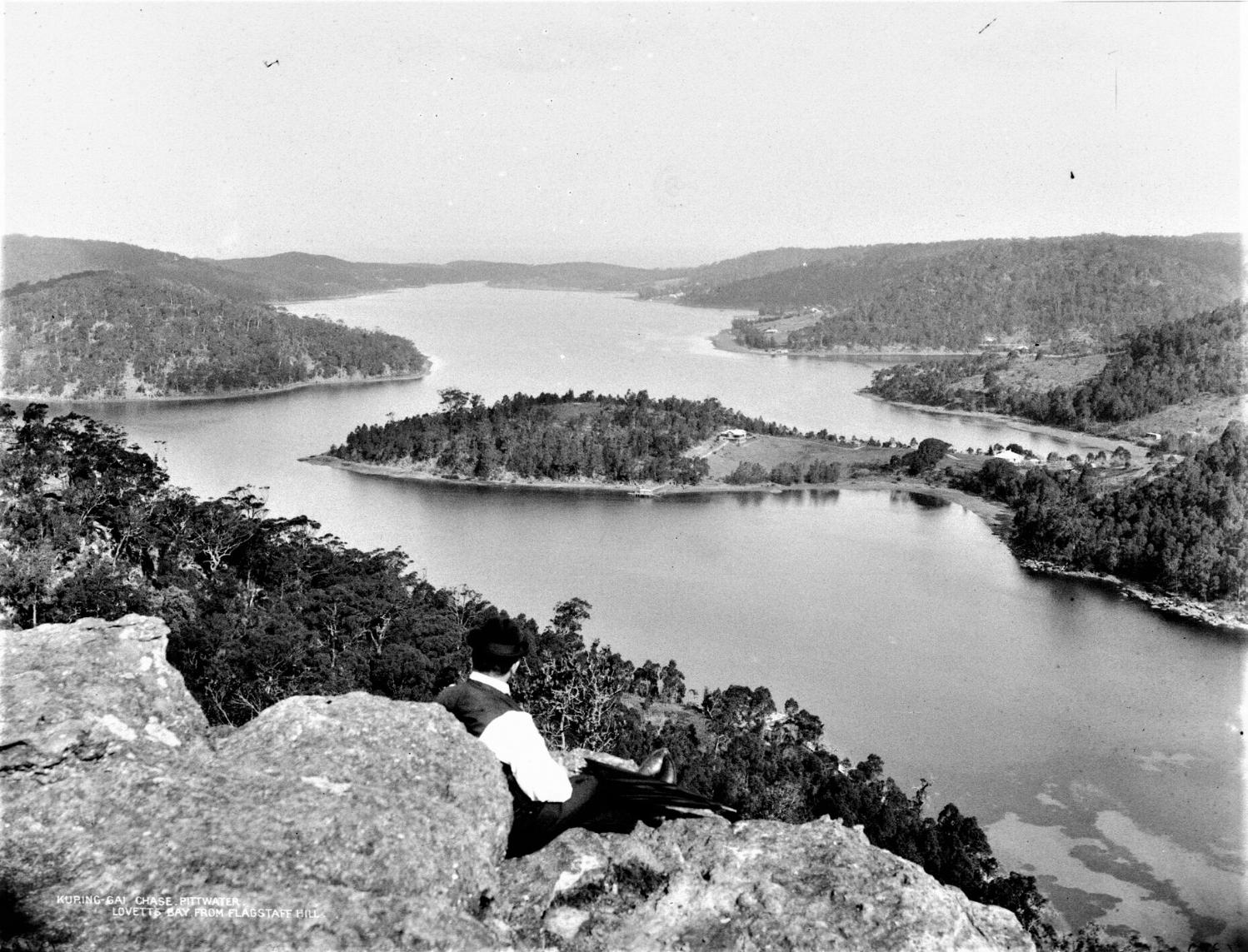
To our right and left are hills and valleys, trees, bush, gorges, and glory. For miles and miles in every direction spread, one of the most beautiful sights in New South Wales— a people's park, old, older than history, yet new and almost untrodden. Never a more perfect picture has been seen in all this wide world than is to be seen from Flagstaff Hill, Kuring-gai Chase, Pittwater, on a clear fine day. Well might a recent lady visitor, who may be described as much travelled, have observed, on her first visit to the hilltop. "Como is nowhere!" Kuring-gai Chase Trust. (1896, August 6). Evening News(Sydney, NSW : 1869 - 1931), p. 2. Retrieved from http://nla.gov.au/nla.news-article111041737
Another account of a walk in this place;
IN THE KURING-GAI CHASE.
We are giving in this issue a series of new and characteristic views of Kuring-gai Chase, which is to North Sydney what the Nat-tonal Park is to the Illawarra line. The Chase parallel with the North Shore railway line, a miles from it commencing about 10 miles from city, and between Turramurra, Wahroonga, and Hornsby, and the coast, and comprises over 5,000 acres of broken and hilly bush-covered country interacted by a perfect network of deep-water "creeks' which, like the rest of the Hawkesbury system, are really arms of the sea, presenting features somewhat similar to the New Zealand Sounds and the Norwegian Fjords except that here the "mountains," which run so steeply to the water's side, are from 550 to 650 feet high instead of many thousands.
.jpg?timestamp=1653426207159) THE TRACK FROM BEROWRA PLATFORM TO WYNDYBANK'S, WHICH DROPS 596 FEET. ON THE PITTWATER -THE PATHWAY FROM LOVETT'S BAY.
THE TRACK FROM BEROWRA PLATFORM TO WYNDYBANK'S, WHICH DROPS 596 FEET. ON THE PITTWATER -THE PATHWAY FROM LOVETT'S BAY.
It is a singularly interesting and beautiful district, a prefect paradise of delights to the man fond of scenery and the open air, of fishing and climbing and botanising and boating. It is one of the most lordly pleasure grounds in the world, yet comparatively few of the city dwellers realise what is so easily within their reach. Yachting men have long been familiar with the lower reaches of the Cowan and its tributaries, and revel in the delights of a cruise or a camp at Refuge Buy, or 'Coal and Candle.'
For a generation the ' old hands of Lane Cove and North Sydney hunted in its fastnesses until they made the marsupial life which once teemed al most extinct. No one seems to have seen all the possibilities, however, till Mr. E.Du Faur, who had rendered such valuable service to the community already on the National Gallery Trust, and in the opening out of Blue Mountain scenery, as well as in a variety of others ways, was incited to visit the Cowan by the enthusiastic accounts of his sons, who used to camp there. He was delighted with the whole place, and in October, 1892, submitted to the then Minister for Lands, the Hon. H. Copeland (but the other day appointed Agent-General), a proposition that so beautiful a tract of country, and the waters dividing it, should be preserved for ever in a state of nature as a national park. It was not till a year after that Mr. Copeland was able to go and see for himself, but the visit made him immediately an apostle of the scheme, and after the necessary survey's was completed the 'The Kuril g-gai Chase ' was gazetted in June, 1894.
The original idea was to call it 'The water park for North Sydney' in recognition of its superb series of waterways, but Mr. Copeland chose instead an aboriginal term understood to be descriptive of the native tribes who must formerly have been in great numbers about the district, since everywhere are signs of their former occupation in the way of ''kitchen middens,' cave dwellings, aud rock carvings.
A board of trustees was appointed, of which Mr. Du Faur was made managing trustee. The choice proved most happy, as that gentleman has devoted himself heart and soul to the preservation and development of the magnificent pleasure ground, carefully husbanding the very limited funds placed at the disposal of the trust by the Government, (in strong contrast to the provision made for the southern National Park). He has explored various areas, laid out tracks and roads, which presented decided engineering difficulties owing to the nature of the country, supervised every step of their construction, and generally cared for the trust. And all his work has been purely honorary.
When the park was first gazetted practically the only access to it was by steamer or sailing boat. Now the the visitor from Sydney can drop off the railway at Pymble, Turramurra. and Wahroonga, and drive down good roads to Bobbin Head, roughly about seven miles. There he can hire boats to go.
Or he can drive from Hornsby by Colah, a few miles down to the Cowan shore', or at Berowra can leave the train and take a short walk down to Windybank's houseboats and rowing boat'. From the Manly side he can get to the pier-at Pittwater, and thence over that section of the park, or he can get round by steamer through the ocean entrance past the picturesque Lion Rock and Elliot Island. On all the driving roads and most of the tracks made by the trustees there are horse paddocks, and there is water carried in pipes from gully dams.
.jpg?timestamp=1653426238197)
A VIEW OVER PITTWATER FROM THE ZIG-ZAG ON FLAGSTAFF HILL.
.jpg?timestamp=1653426263560)
A GLIMPSE FROM THE FRESH-WATER DAM BEHIND THE TRUSTEES' HOUSE-BOAT, IN KURING-GAI BAY LOOKING DOWN COWAN FROM BOBBIN ROCK (NEAR SHAW'S BOAT-SHED
SNAPSHOTS IN KURING-GAI CHASE.
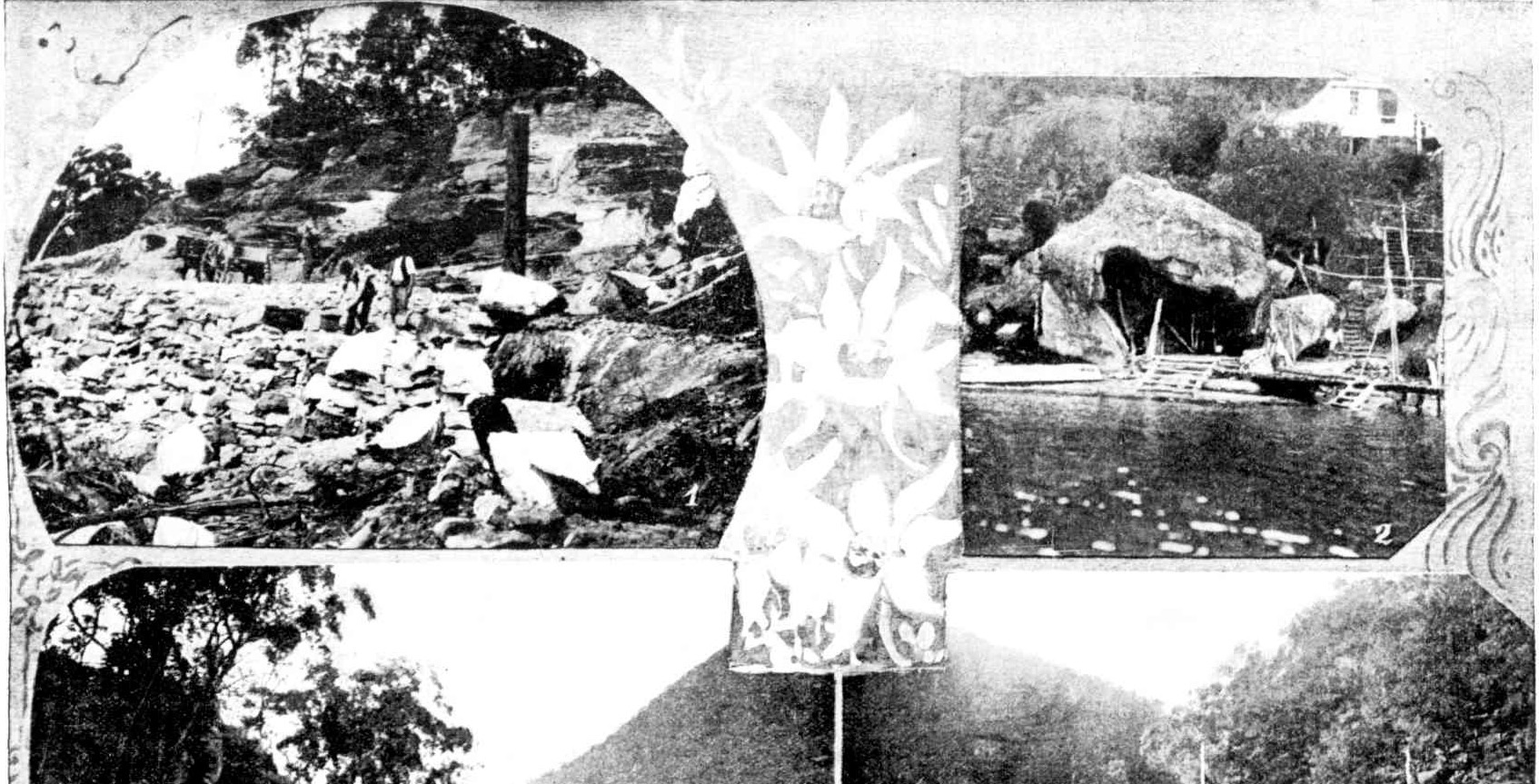
.jpg?timestamp=1653426329846)
.jpg?timestamp=1653426364175)
The official headquarters are in one of the bays in this central section— Kuring-gai Bay — wherein floats the house-boat of the trustees. It is a simple but very neat and well constructed house-boat, on which the managing trustee has copies of all the maps and plans existing relating to the reserves. Behind is a dam of good fresh water, and what will be the main track into the ' marsupial paddock.''
The house-boat, and the kerosene launch which does most of the work of the trustees, are both under the charge of the launch engineer, Mr. Paterson, an ingenious ex-man-of-warsman, who, like the overseer of the park works, Mr. George Lee, is an institution of the place. Our picture of the house-boat was taken in the very early morning last week, just when the sun first touched it.
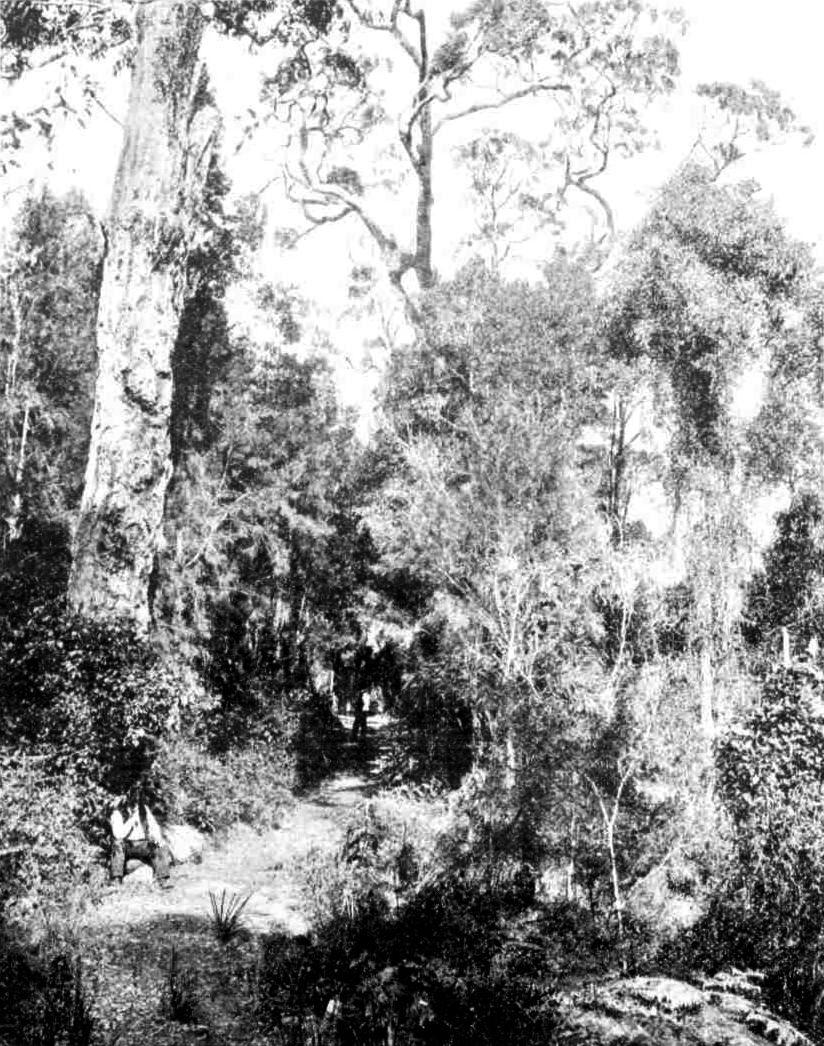

Birnie Lookout – originally known as 'Flagstaff Hill' as well as 'Bells Lookout' – was described by as “lovely in the extreme” as far back as 1896 with the view “said to be equal to anything in the way of marine views to be found in the world” (The Sydney Morning Herald, 29 October 1908).
For miles and miles in every direction spread, one of the most beautiful sights in New South Wales— a people’s park, old, older than history, yet new and almost untrodden. Never a more perfect picture has been seen in all this wide world than is to be seen from Flagstaff Hill. - Kuring-gai Chase Trust, 6 August 1896
In 1900 a launch was purchased by the Chase Trust for use in Pittwater.
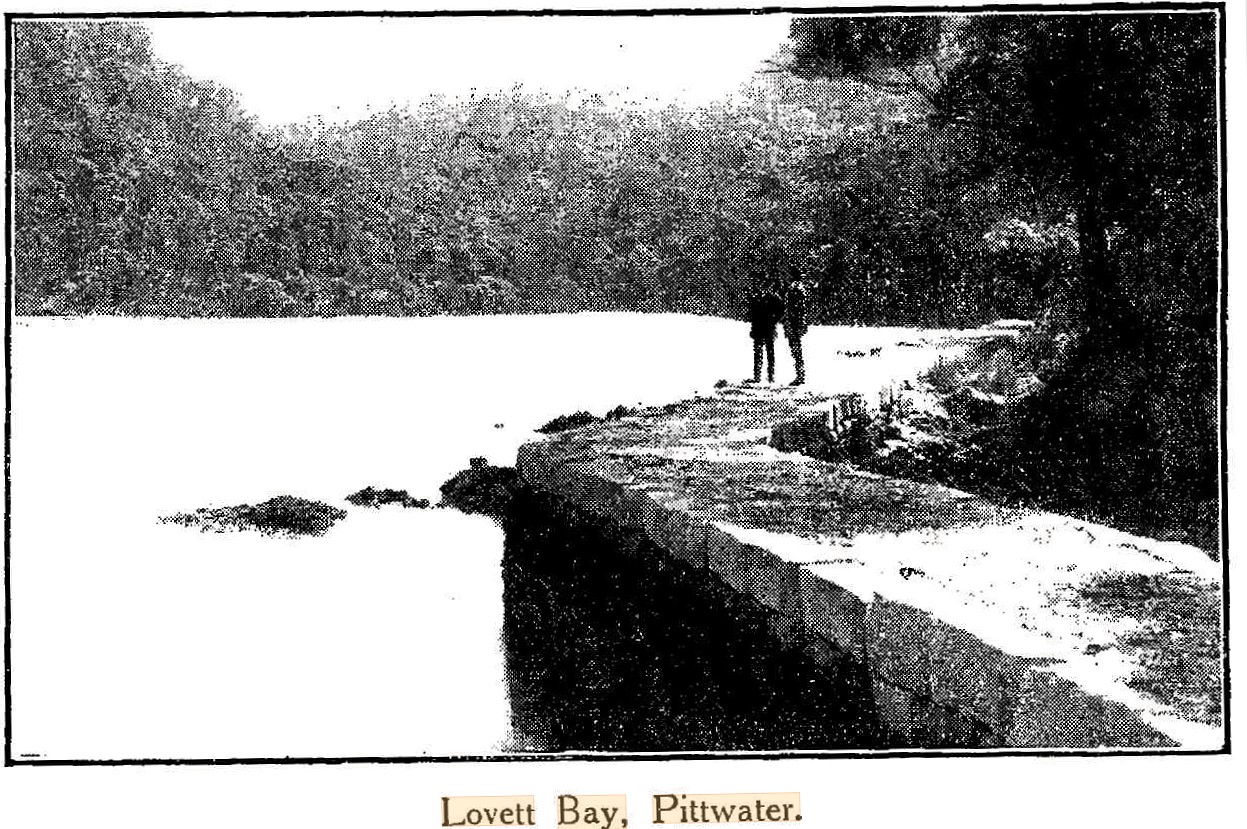
Lovett Bay, Pittwater. A charming inlet in the Ku-ring-gai Chase, which may, be reached by motor launches, to be hired at Newport, Bay View, or Church Point. From: THE BEAUTIFUL SHIRE OF WARRINGAH. (1915, April 7).Sydney Mail (NSW : 1912 - 1938), p. 34. Retrieved from http://nla.gov.au/nla.news-article166255867
Oyster Leases - Permissive Occupancies for jetties, boatsheds, skids and bathhouses
This would also coincide with the sale of lands alongside the causeway and people applying for permissive occupancies to erect jetties, boatsheds, skids and baths adjacent to or connected to their land holding, as well as the granting of oyster leases to applicants in Lovett and Towler's Bay, men such as John Williams Jnr. (1904), John Henry Richardson and James Clark in 1905 and 1906, Charles Autrey Hall in 1920 (1913 originally), and Joseph Henry Arblaster in 1926. Details of some of these are listed under Extras.
This was then part of the waterways, and with those who bought land needing to access it via the waterways, a series of Permissive Occupancies for Special Leases were sought and granted on the 'Sturdee-Rocky Point ide of Lovett By as well as from the Trustees wharf at the base of Dorothea's acreage and up to the eastern end of Little Lovett Bay.
Although the amount allowed would indicate the waterways may have been a little crowded and hard for boats to negotiate, as more jetties were built, and the oyster leases surrendered, the last renewal showing as having been a renewal granted to the widow and descendants of Charles Autry Hall in 1941, many also came with Special Conditions that included the government being able to turn them into public infrastructure (public wharves) should the need arise and also take over the wharves and anything that had been built by those who erected them, without cost. This requirement was listed in most of those Special Leases for Permissive Occupancy of the waters of the estuary.
This was versed, in approved Special Leases, as:
The right is reserved to the Governor and the Executive Council to terminate the lease at any time during its currency, should the land be required for public wharves, railways, tramways, or other public purposes, by giving not less than six months' notice in writing to that effect. Should the land be required by the Government for any public purpose during the currency of the lease, any erection upon it may be retained without compensation beyond the cost price, less a sum for deterioration. SPECIAL LEASES GRANTED. (1898, October 12). New South Wales Government Gazette (Sydney, NSW : 1832 - 1900), p. 8160. Retrieved from http://nla.gov.au/nla.news-article220979251
Early ones on the tip of Rocky Point and around into the head of Elvina Bay, opposite, for example, were:
Local Land Board Office,
Sydney, 10th September, 1892.
APPLICATIONS FOR LEASES FOR SPECIAL PURPOSES.
IT is hereby notified, for general information* that the undermentioned applications have been received for Special Leases, under the provisions of the 89th section of the " Crown Lands Act of 1884," of the lands and for the purposes hereunder stated.
Any objections lodged at this office within four "weeks from the date of this notice will receive due consideration.
T. W. HARRIOTT, Chairman.
Arturo Steffani – Rock Point Pittwater – 5 perches, wharf and boatshed. APPLICATIONS FOR LEASES FOR SPECIAL PURPOSES. (1892, September 20). New South Wales Government Gazette (Sydney, NSW : 1832 - 1900), p. 7625. Retrieved from http://nla.gov.au/nla.news-article222205026
T. F. FURBER, Metropolitan District Surveyor. Applicant : Wm. Henry Speechley. Locality : Co. Cumberland, Ph. Broken Bay, Rocky Point, Pittwater. Area : 8½p. For boathouse, jetty, and bathing-place. Advertising (1907, March 20). The Daily Telegraph (Sydney, NSW : 1883 - 1930), p. 3. Retrieved from http://nla.gov.au/nla.news-article238025608
Department of Lands,
Sydney, 31st July, 1907.
APPROVAL OF SPECIAL LEASE APPLICATIONS.
1907-5496. 1907- 3, Metropolitan. Speechley, William Henry, of Oakwood, via Inverell. Below high-water mark, fronting allotment 19 of Ventnor Estate, Pitt Water, parish Broken Bay, county Cumberland. 8 ½ perches. Boat-house, slip, wharf and Bathing-enclosure. 1. Jan 1907 to Dec 31, 1911. £3 per annum. Special Conditions: Special Lease 1907-3, Metropolitan. William Henry Speechley—The lease shall be subject to subsections 1, 3. and 4 of Regulation No. 215, and to the following special conditions :—(a) The lessee shall remove the structures at his own cost, and without compensation, within six months of determination of the lease should he be required in writing to do so by the Government. (b) the structures are to be kept in good and efficient condition and in a thorough state of repair throughout the currency of the lease. (c) The right is reserved to terminate the lease at any time during its currency should the land be required. APPROVAL OF SPECIAL LEASE APPLICATIONS. (1907, July 31). Government Gazette of the State of New South Wales (Sydney, NSW : 1901 - 2001), p. 4370. Retrieved from http://nla.gov.au/nla.news-article226593711
As the then Warringah Shire Council records indicate that council was looking after some aspects of the infrastructure associated with wharves from 1912 on, so long as residents of Lovett Bay also contributed a fair portion of any costs or fees involved, the 1930's appear to be when it was deemed this became a public wharf under the care of the local council, even if they were maintaining it for the benefit of residents and visitors in the interim prior to then.
The Warringah Shire Council, which was also consulted by the Lands Department (by then) on applications for jetties, boatsheds and skids and pool fencing (bathhouses) also required that the public be able to access land beyond these, especially where that land/jetty was alongside public lands that had been set aside.
Some of the council's access problems for all residents were solved by simply having the Cumberland County Council resume Lots of lands, at Woody Point adjacent to Hall's wharf, for instance - some of which was subsequently moved into the National Park or reallocated as Crown Land. Others were written into the Permissive Occupancy Special Leases being granted.
The WSC records for Lovett Bay mentions are under Extras, and lists many of those 1920's on applications and sows the evolvement of its policies into the 1960's and 1970's.
Also included are some of the Towler's Bay records and notes, as, although the 'public wharf' at Towler's/Morning Bay was demolished, the stones from the originals are heritage listed. Towler's Bay Public Wharf/wharves will run after Scotland Island's run as the Pittwater Pubic Wharves series heads further north.
Lovett Bay 'Public Wharf' (north end of the bay)
The Bell holding 808-161 – of 20 acres at north end of Lovett Bay is advertised at just £15 per acre in 1906:
PITTWATER, Lovett Bay.— 20 Acres, wharf, deep water, gift, £15 ac., tms. Shoppee. 113 Eliz.-st. Advertising (1906, September 7). Evening News (Sydney, NSW : 1869 - 1931), p. 1. Retrieved from http://nla.gov.au/nla.news-article114091483
In this one the price per acre has risen:
Pittwater Harbor. : LOVETT BAY, 20 acres, having deep sea water frontage, large stone - wharf. Title Torrens. Only £25 per acre; opposite Scotland Island. BOX- 2009, G.P.O. Advertising (1914, March 6). The Sun (Sydney, NSW : 1910 - 1954), p. 10 (FINAL EXTRA). Retrieved from http://nla.gov.au/nla.news-article229236401
They sell off two lots in 1917 to Henry Bartholomew Pickering and his sister Fanny Elizabeth Pickering in March and April 1917. The residue becomes Vol-Fol 2758-144 under Eliza Bell, R J Bell’s wife, May 17 1917 and consists of 9 acres 1 rood and 12 perches, further west on Lovett Bay.
On March 17 1919 Eliza Bell transfers the residue of this land holding to Grace Victoria Meares, wife of Robert Alfred Meares of Manly, Real Estate Agent.
MEARES.—The Relatives and Friend of Mrs. GRACE MEARES and FAMILY of Pooles-road, Kellyville, are invited to attend the Funeral of her dearly loved HUSBAND and their dear FATHER, Robert Alfred Meares; which is appointed to leave the Funeral Chapel of Metcalfe and Morris Ltd., 115 Church-street, Parramatta, THIS DAY MONDAY, at 2.15 p.m., for the Church of England Cemetery, Rookwood, Section 14. METCALFE and MORRIS LTD., Funeral Directors, 'Phone UW8891, Parramatta. Family Notices (1935, November 25). The Sydney Morning Herald (NSW : 1842 - 1954), p. 7. Retrieved from http://nla.gov.au/nla.news-article17218283
Donald Fraser, Medical Practitioner, becomes the owner on February 5th 1927. On December 31, 1941 he sells to Robert Swinburn of Lithgow, also a Medical gentleman, who sells to Frank Dawson Harrison of Potts Point, Company Director, later of Newport, on November 5 1945. On the 16th of August 1955 he sells this land to George James Bennett and Eric Leslie Bennet (registered December 2nd 1995 Vol-Fol: 7128 - 59 & 60; measuring 399 1/10 links wide (80 metres) by 2243 links (western edge - 451.2 metres) by 2449 1/10 links (south edge - 492.6 metres). The residue of Lots 1 to 3 is in Vol-Fol 10827-58 to 60, Deposited Plan 236002, registered July 1st 1968.
Dr Fraser had planted almond trees:
ALMONDS TOR EARLY FLOWERS.
The almond is one of the earliest of the spring-flowering trees. It seems to be willing to do good work almost anywhere. In Dr. Fraser's garden at Towler Bay, Pittwater,I saw several trees in full and beautiful flower, last spring; and at Canberra a month or two afterwards almond trees were seen doing their pretty work. IN THE GARDEN. (1933, May 20). The Sydney Morning Herald (NSW : 1842 - 1954), p. 7. Retrieved from http://nla.gov.au/nla.news-article16982249
Eliza Bell and Robert John Bell seem to be connected to Balmain, as were the Pickering family, to whom they sold acres of this land in 1917.
Isobel Dorothea Mackellar's Lovett Bay home
Dorothea Mackellar’s first Lot is under the Lot sold by Eliza Bell to Henry Bartholomew Pickering of Balmain, Broker, on March 28, 1917 (Vol-Fol 2753-22). He had already bought a Lot from the Floods' Peninsula Estate on he opposite of Lovett Bay in 1916 and would buy a further 2 Lots on the same site. Isobel Dorothea Mackellar becomes the owner of 3 acres 3 roods and 15½ perches on June 12th, 1925. The wharf at the north end of the bay shows on this map and on the 6 acres 2 roods and 30½ perches next door and with one acre east of there, which were sold by Eliza to Fanny Elizabeth Pickering (Vol-Fol 2753-23) C of T registered April 28 1917, sister of Henry Pickering. Fanny sells her holding to Dorothea Mackellar on July 28th 1925.
A landing place of 1 rood and 9 perches that was dedicated/gazetted on January 3rd 1907, from the Fanny Pickering holding and transferred to the State Planning Authority (Vol-Fol 10382-218) on August 9 1966. This is revoked on October 8th 1976, signalling the council had 'officially' become caretaker of that part by then. Residue becomes Vol-Fol 10382-217).
Henry Bartholomew Pickering's sale of his holding to Dorothea states she may have and use 'access to the wharf', already in place at that time. This map from circa 1900 shows the wharf in place at Cario's land grant, and named for the Chase Trustees, at the head of the bay - for the causeway and stone jetty constructed in 1895:
.jpg?timestamp=1547010620191)
Section from Plan of Bay View and Pittwater district Image No.: c053460078, circa 1900, courtesy State Library of NSW - note lower left hand side 'Meritana' - A Wood.
Isobel Dorothea Mackellar bought three vacant blocks at Lovett Bay to make one large site – one block over 3 acres from Henry Pickering on June 12th 1925, and two totalling over 6 acres from Fanny Pickering on July 28th, 1925. A bush block of almost 10 acres with over 250 yards of waterfront, at a total cost of £3,590 became hers, and, it would seem, the inspiration for a number of poems from then on.
In Dorothea Mackellar at Pittwater by Keith Amos, 2020, Mr. Amos states;
Almost certainly, Dorothea chose her land at Lovett Bay because she knew the occupant of the adjoining land. This was Dr. Donald Fraser, a psychotherapist whose home and practice overlooked Hyde Park, Sydney, at 34 College Street. Dorothea might well have met him through her father, whose practice and apartment (where she finished writing ‘Core of My Heart’) was in nearby Liverpool Street, also facing the Park.
Although this may not tie in with the Certificate of Title and Transfer dates, Dr. Fraser may have been using the land prior to that and the dates registered as him becoming the owner, officially, registered afterwards. A caveat had been placed on the Meares holding in 1920 which did not get lifted until Dr. Fraser became the owner.
The NSW Historical Land Records Viewer (HRLV) provides:
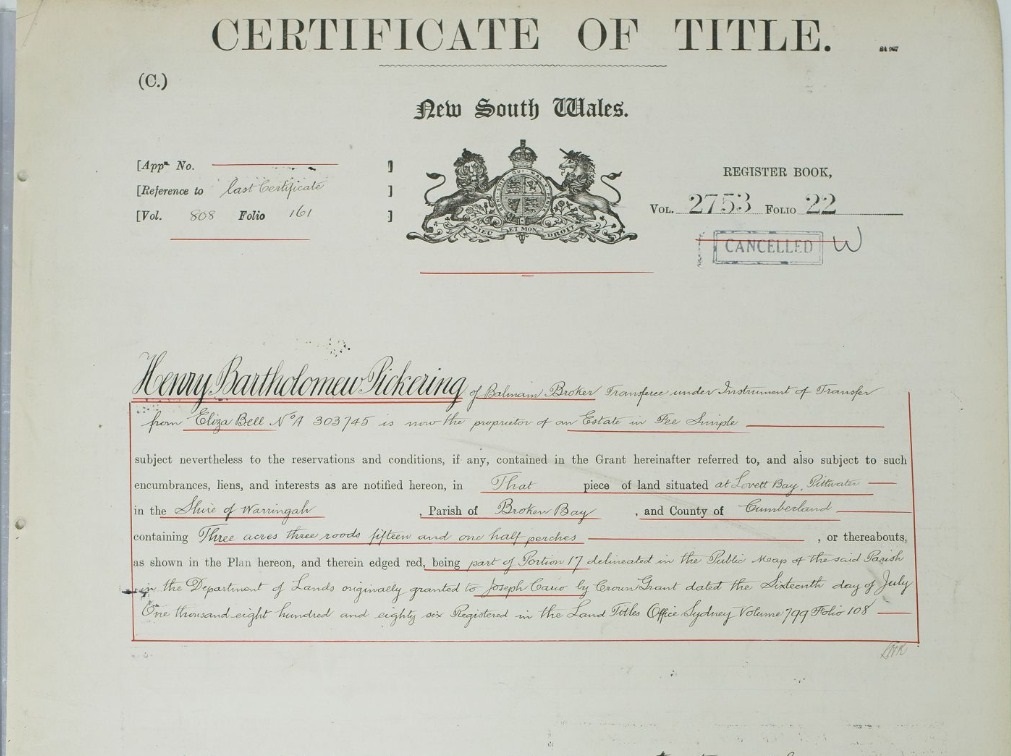
.jpg?timestamp=1652375376611)
.jpg?timestamp=1652375494581)
.jpg?timestamp=1652375517069)
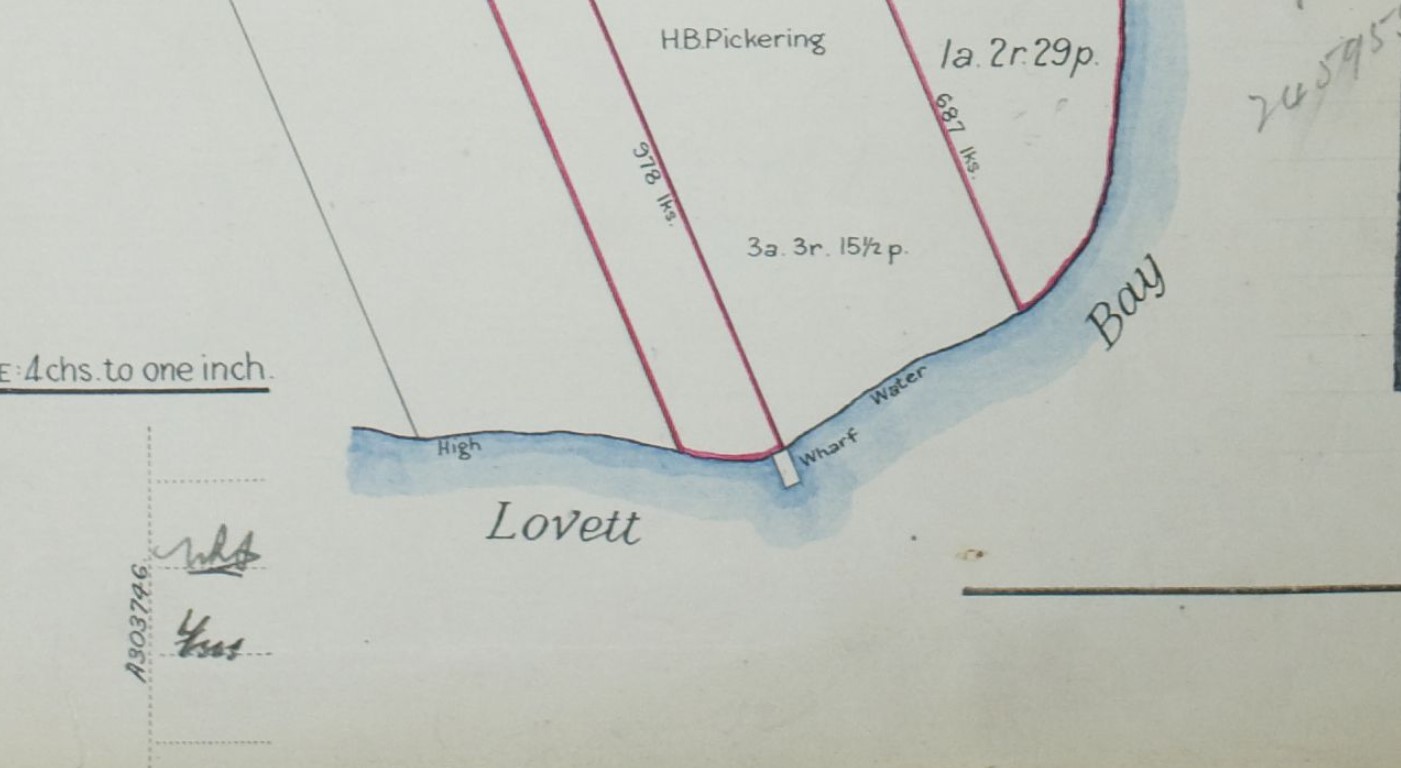
.jpg?timestamp=1652375572194)
.jpg?timestamp=1652375602335)
Department of Lands,
Sydney, 20th February, 1907.
IT is hereby notified, for public information, that, in accordance with the provisions of the Public trusts Act, 1897, His Excellency the Governor, with the advice of the Executive Council, has been pleased to approve of the appointment of The Trustees of Ku-ring-gai Chase as Trustees of the land at Lovett Bay, parish of Broken Bay, county of Cumberland, area 1 rood 9 perches, dedicated 3rd January, 1907, for landing place. [Ms. 1907-2,747] JAMES ASHTON. Government Gazette Notices (1907, February 20). Government Gazette of the State of New South Wales (Sydney, NSW : 1901 - 2001), p. 1048. Retrieved from http://nla.gov.au/nla.news-article226577666
Sydney, 8th October, 1976.
REVOCATION OF DEDICATIONS
WHEREAS under section 25 of the Crown Lands Consolidation Act, 1913, power is given for the revocation of any dedication of Crown land, dedicated by the Crown: Now, therefore, I do hereby declare that all preliminary action has been taken in connection with the revocation of the dedications of the areas described hereunder, and I do hereby revoke the said dedications, in so far as they apply to or affect areas described hereunder.
W. F. CRABTREE, Minister for Lands.
Land District—Metropolitan; Shire—Warringah, Parish Broken Bay, County Cumberland, about 1 239 square metres, dedicated 3rd January, 1907, for Landing Place at Lovett Bay. Pks 75-841. REVOCATION OF DEDICATIONS (1976, October 8). Government Gazette of the State of New South Wales (Sydney, NSW : 1901 - 2001), p. 4367. Retrieved from http://nla.gov.au/nla.news-article220117056
That track from the wharf going up the hill into the Park in 2012 show stones have been set as well as steps cut into the hill. This has Heritage Listing too in September 1990 under Warringah Shire Council and once again in the Pittwater Council LEP 2014 as ''Lovett Bay, Road remnants on Portions 4 and 5, on parts of Lots 4 and 5, DP 590990''.
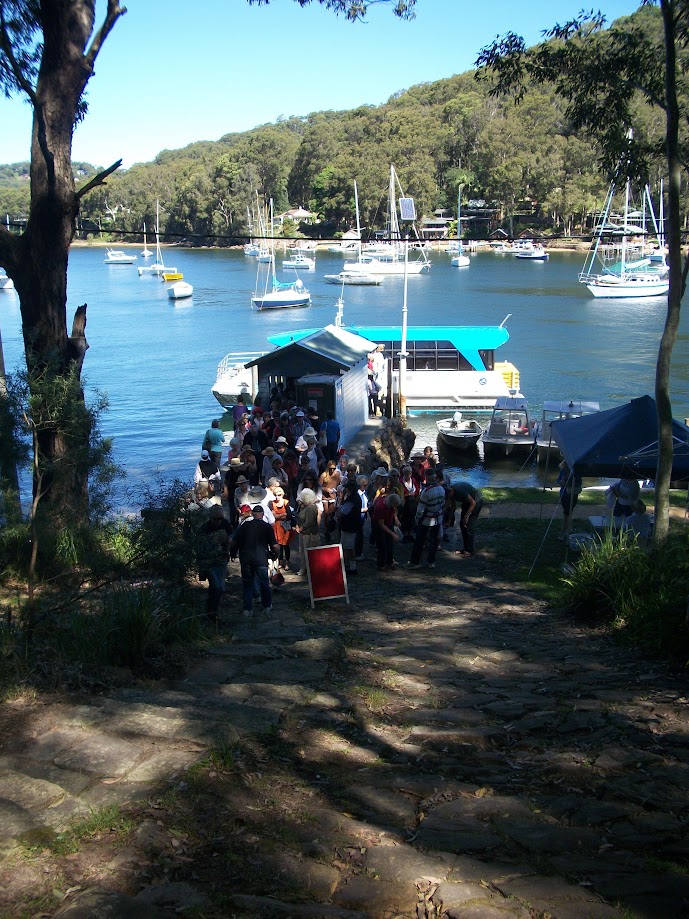
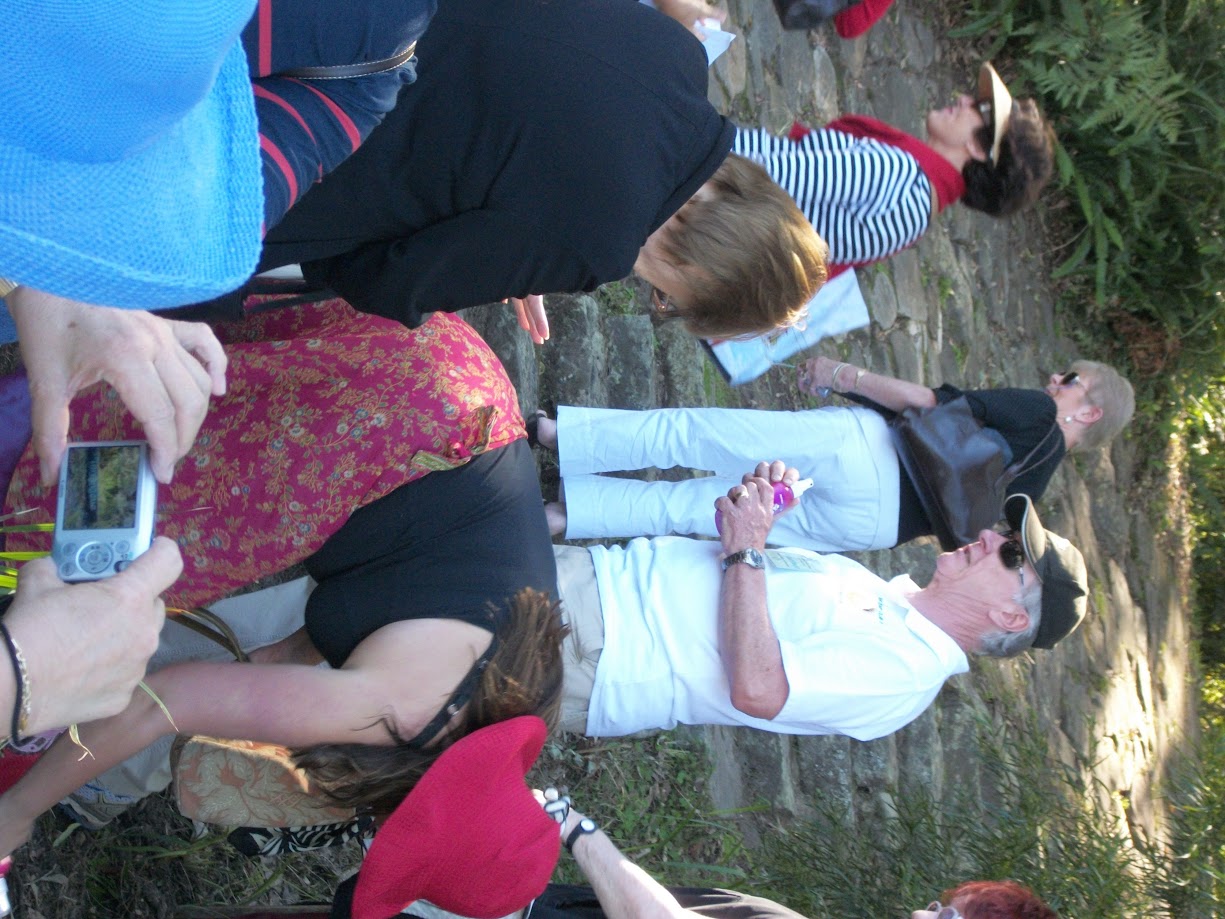
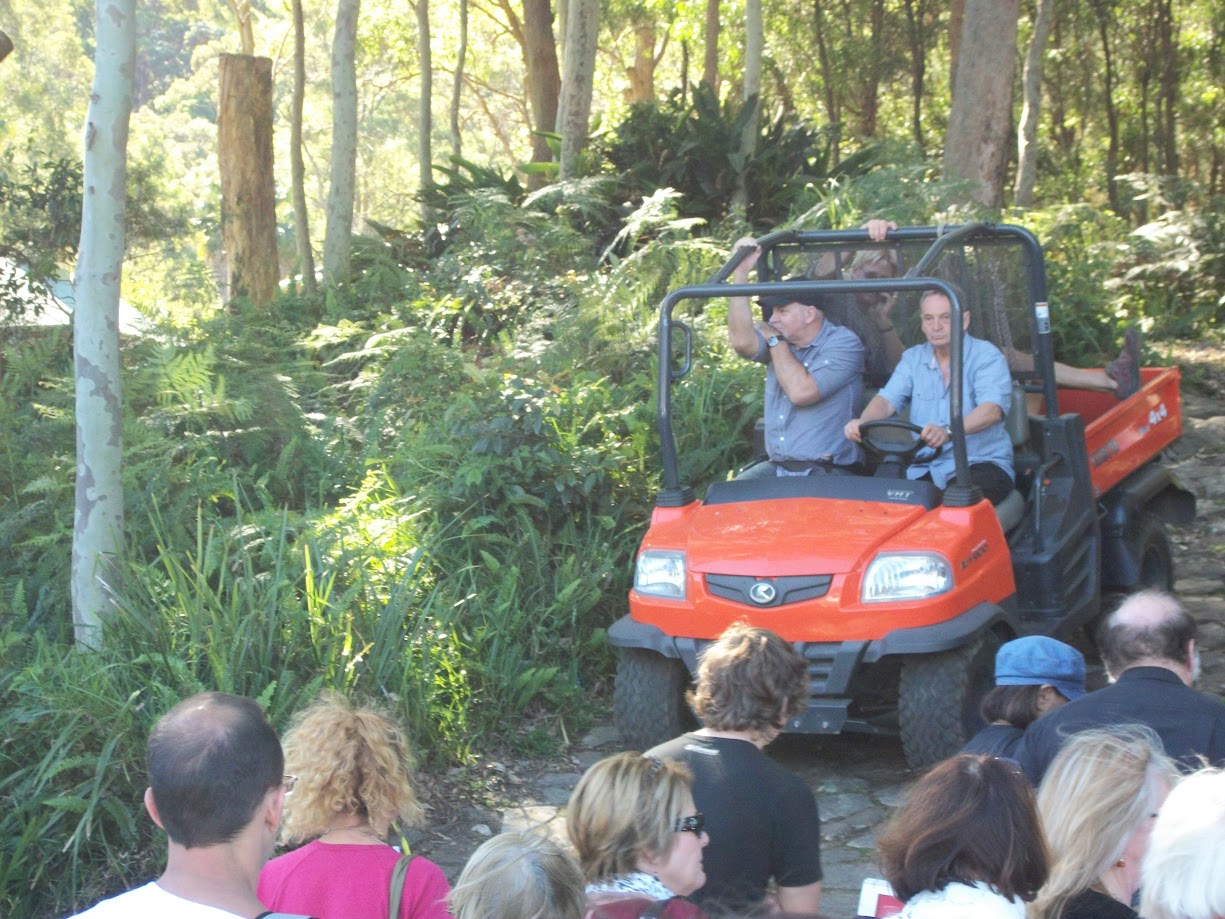
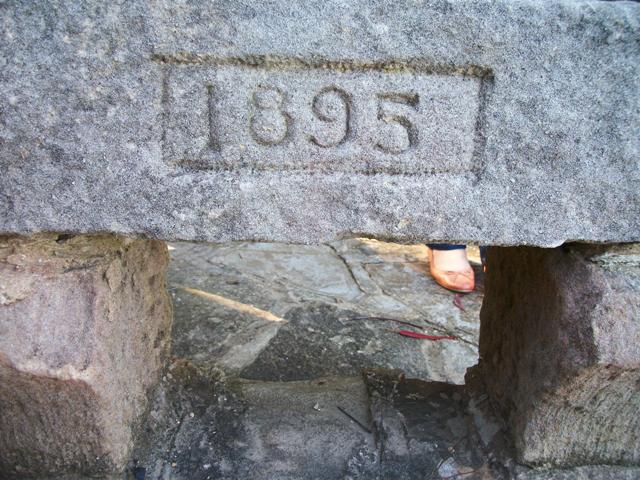
Kuring-Gai Chase National Park marker on this 'landing place' and stone causeway up the hill at Lovett Bay wharf
The Lovett Bay 'weekender' of Dorothea Mackellar, ''Tarrangaua'', was now on 8 acres, 4 roods and 17 perches. The name for the home has a meaning of "Place under the trees" – the words "high, rough hill" translate into the Aboriginal language as Tarrangaua.
By Spring Dorothea is ready to build Tarrangaua:
TENDERS. Pittwater.—Erection of a large stone cottage at Lovett Bay, Pittwater. (Quantities) Messrs. Wilson, Neave, and Berry, Union House, George-street. TENDERS. (1925, September 16). The Sydney Morning Herald (NSW : 1842 - 1954), p. 10. Retrieved from http://nla.gov.au/nla.news-article16242512
Although clearly not too patiently:
VARIOUS VERSE
[FOR THE BULLETIN.]
The Waiting Life.
Since it befell, ’twixt work and strife,
I had not time to live my life,
I turned my back on it until
Work should be done and strife be still
My hands and head for use are free,
Nor does my own life worry me,
But docile as a spaniel waits
Until this present stress abates.
Tranquil, unwatched, it’s there, I know,
With all its joy contained. But oh,
I hope, when I have time to play,
My life will not have run away!
N.S.W.
DOROTHEA MACKELLAR. Vol. 46 No. 2380 (24 Sep 1925) ). VARIOUS VERSE [FOR THE BULLETIN.] The Waiting Life., The bulletin Retrieved from http://nla.gov.au/nla.obj-633433035
MEMBERS OF INSTITUTE OF ARCHITECTS OF N. S. W. 31st JANUARY, 1925 Berry, John L., c/o Messrs. Wilson, Neave & Berry, Union House, George St., Sydney. Royal Australian Institute of Architects & Institute of Architects of New South Wales & Board of Architects of New South Wales. Vol. 14 No. 2 (1 Feb 1925) ). MEMBERS OF INSTITUTE OF ARCHITECTS OF N. S. W. 31st JANUARY, 1925, Architecture : an Australasian review of architecture and the allied arts and sciences Retrieved from http://nla.gov.au/nla.obj-3004435911
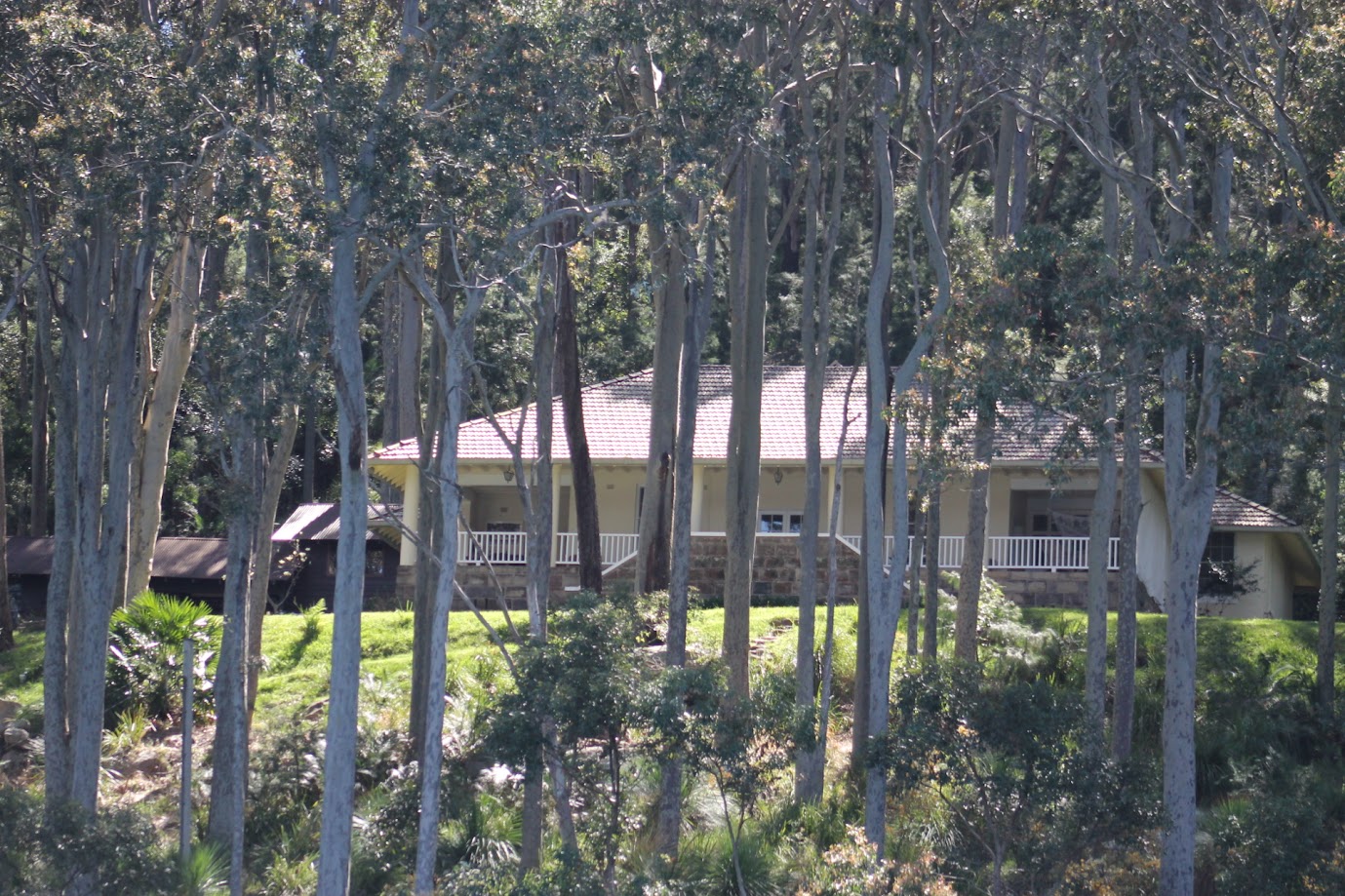
The home, designed by architect Hardy Wilson, can only be reached by boat. It was her long-time retreat, often arriving from her parents’ home, Rosemont in Woollahra, in a chauffeur-driven yellow Rolls Royce at Church Point. Some sources state Dorothea's new-built home cost £1200 in total.
In Dorothea Mackellar at Pittwater by Keith Amos, 2020, Mr. Amos states;
The construction was challenging: 60,000 bricks, terracotta roofing tiles, tons of sandstone (quarried offsite) for the foundation and retaining walls, and a large amount of timber, were all landed at high tide and winched up to the site. Most materials were shipped from Sydney and unloaded at the bay from a barge. The timber boards and window sills were tallow wood, doors and cupboards Queensland maple, the ceiling and roof framing Douglas fir (oregon). Ceilings were fibro laid on the top of the joists, the walls double brick, verandah columns rendered brickwork. The tiles had a glazed Marseilles pattern first marketed in 1924. Taylor (the builder) probably had a big building team to complete the job as quickly as possible. The work most likely began before the end of 1925, continuing into 1926.
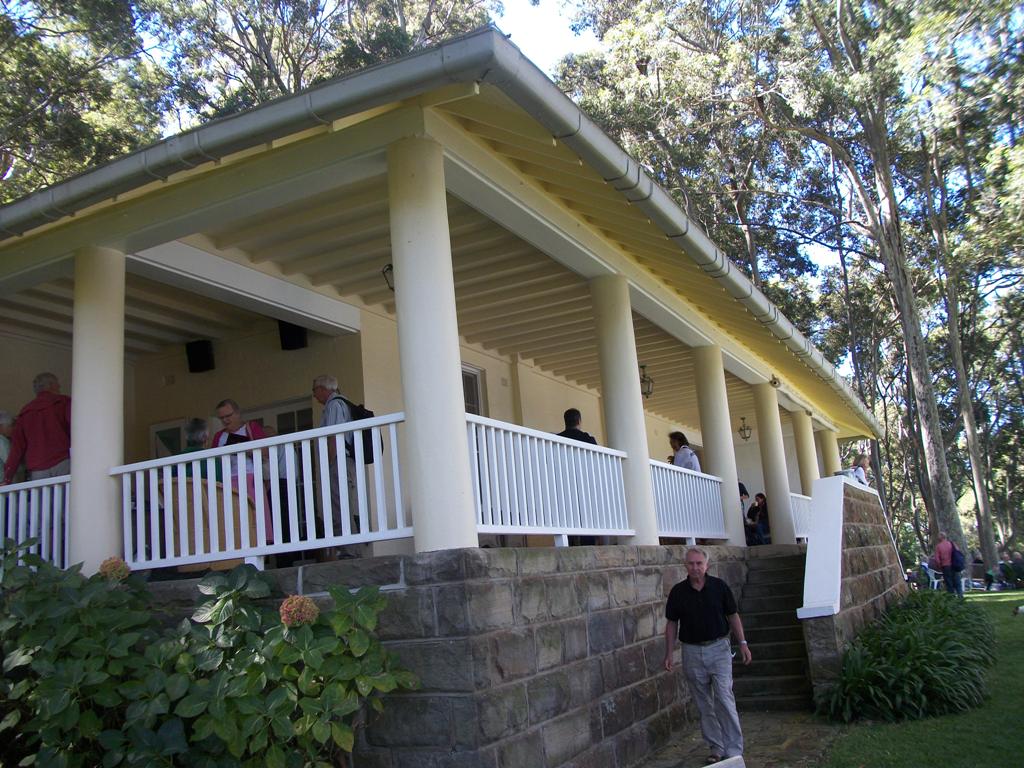
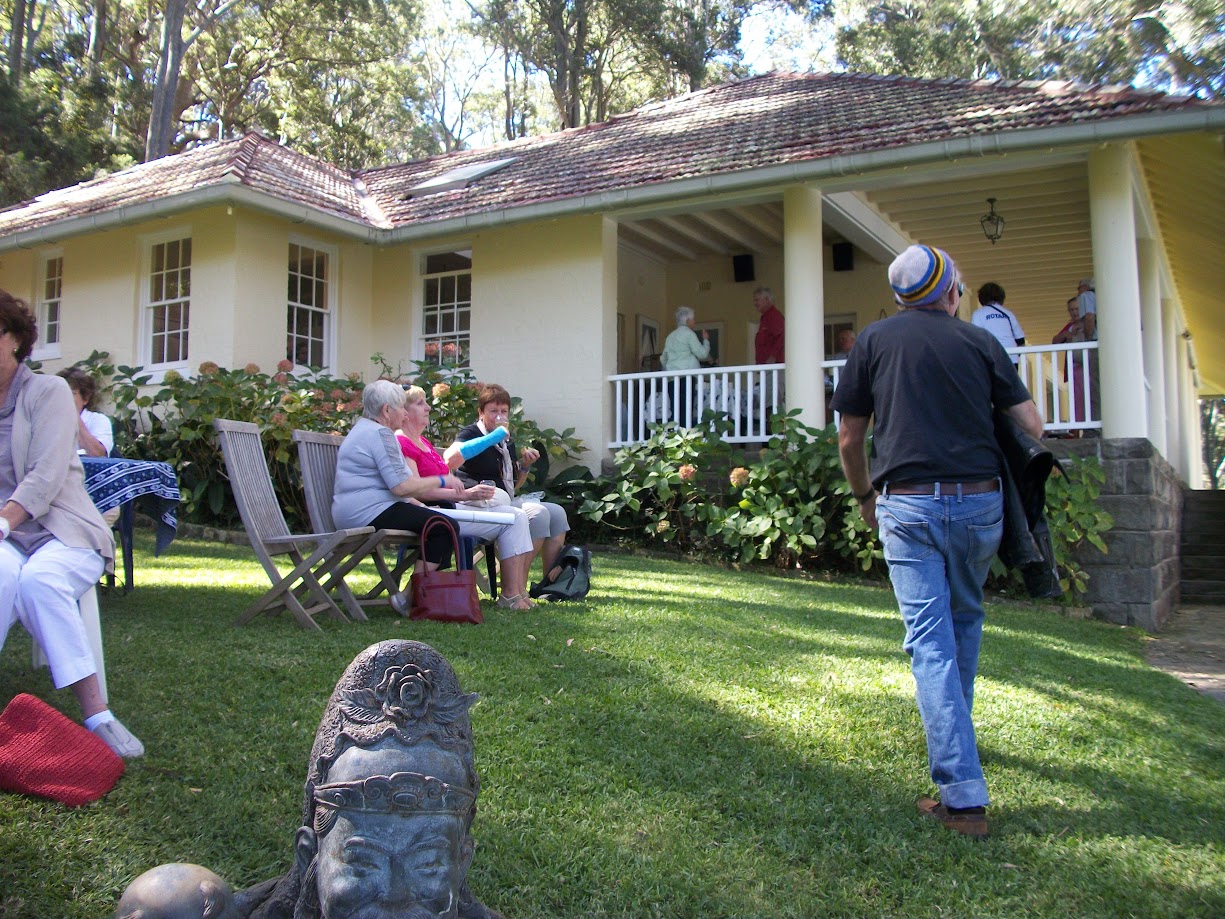
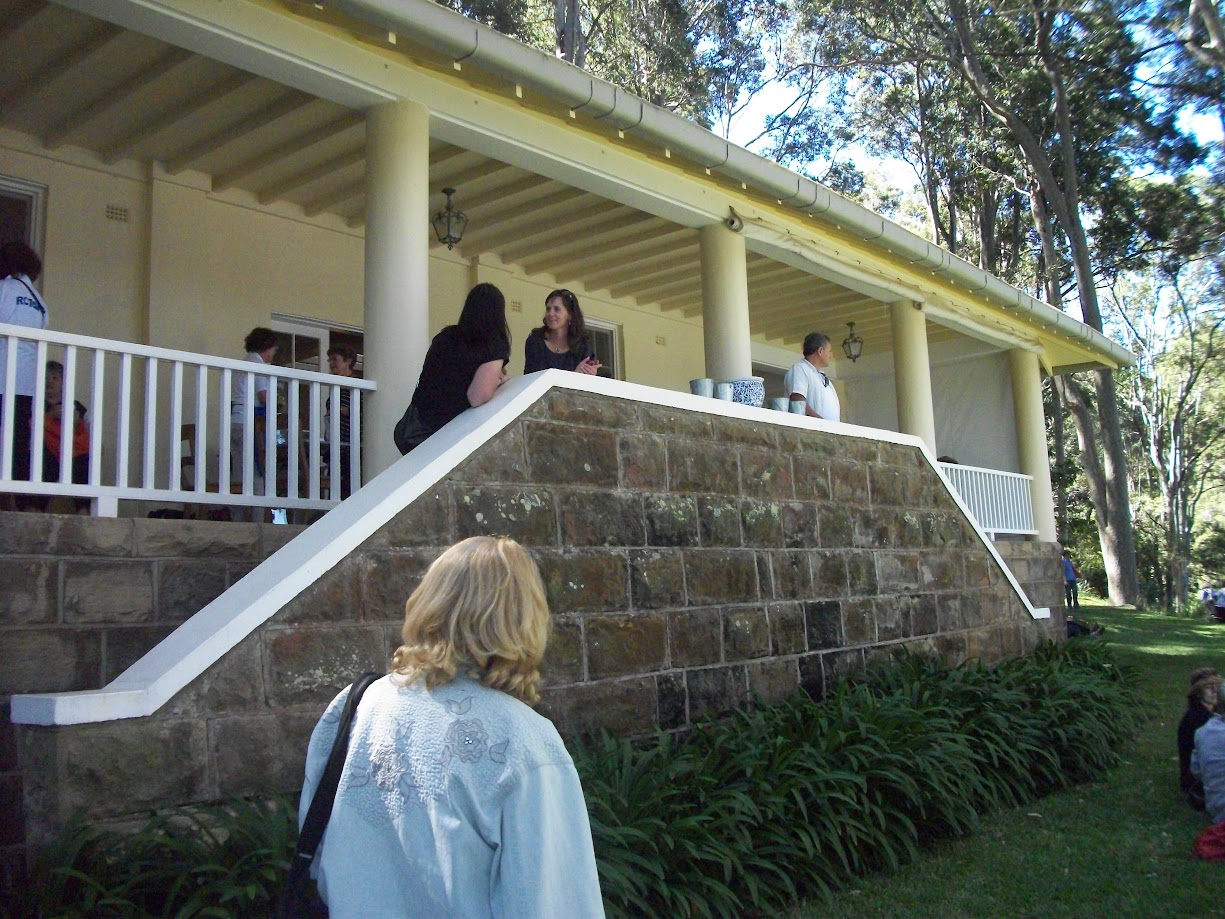

.jpg?timestamp=1757623310550)
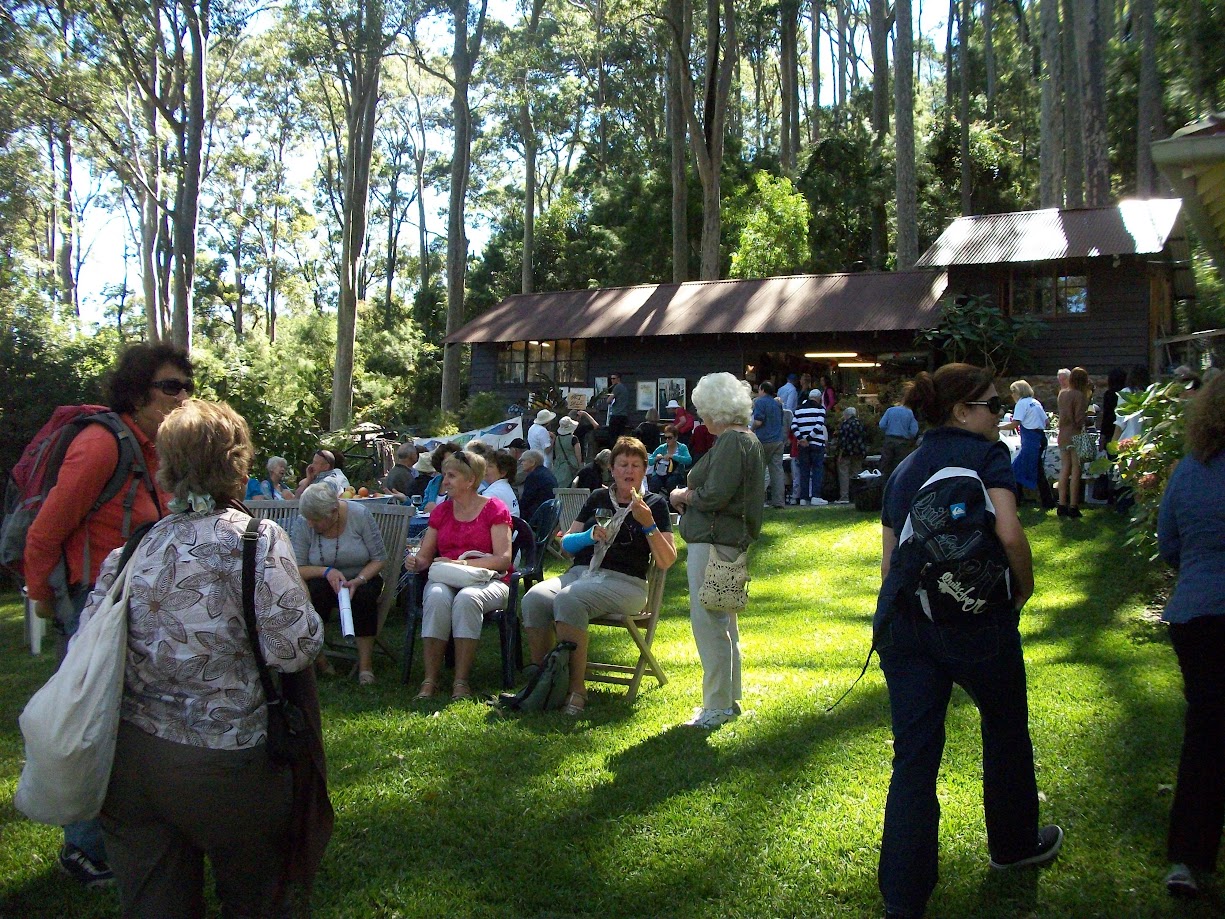

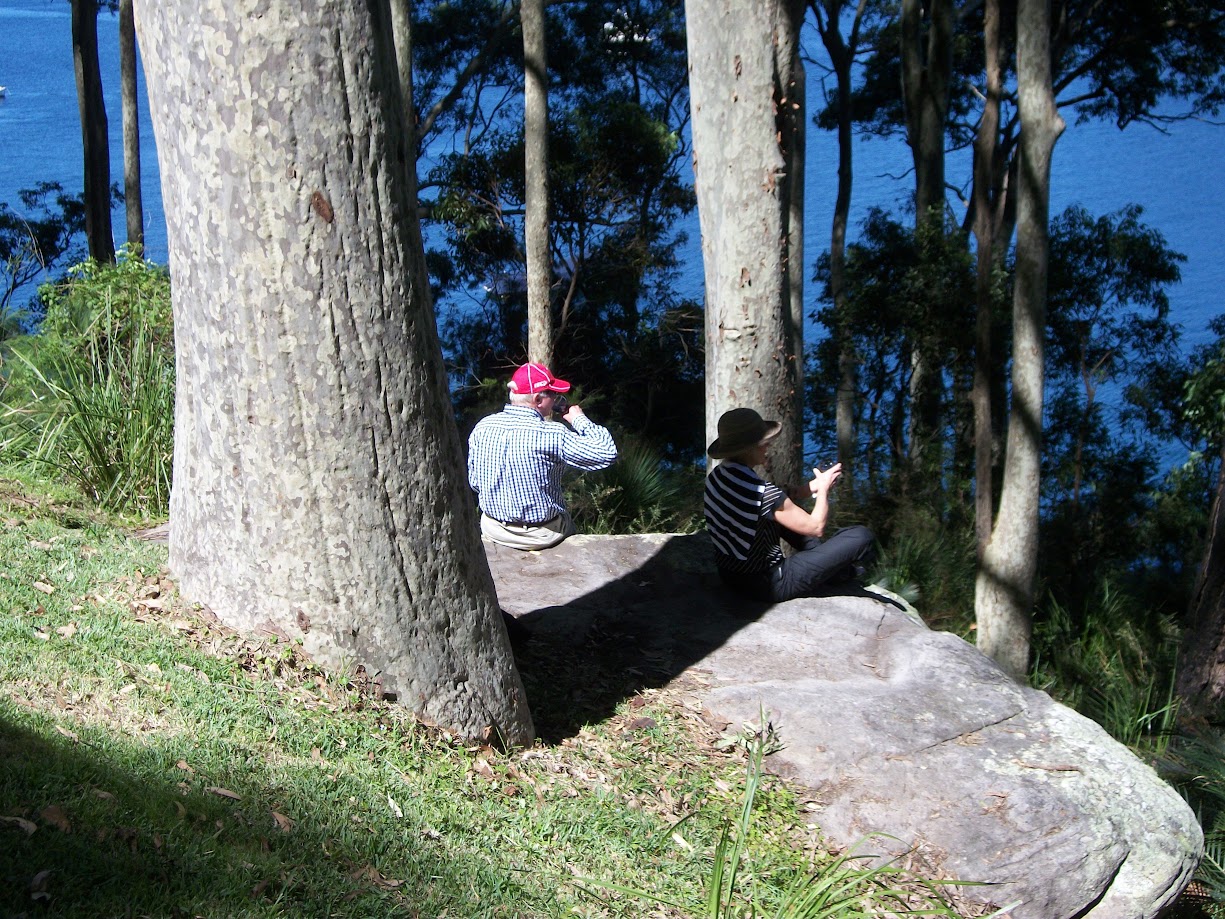
Above photos taken at Tarrangaua Open Day held by Susan Duncan and Bob Storey on behalf of the Rotary Club of Pittwater's fundraiser for the Palliative Care Centre at Mona Vale Hospital in March 2012. Although we choose not to share any interiors of the private home taken then, two images taken that day lend an insight that Bob, and his then wife, Authoress and Editor Susan, had an especial connection to this community cause:
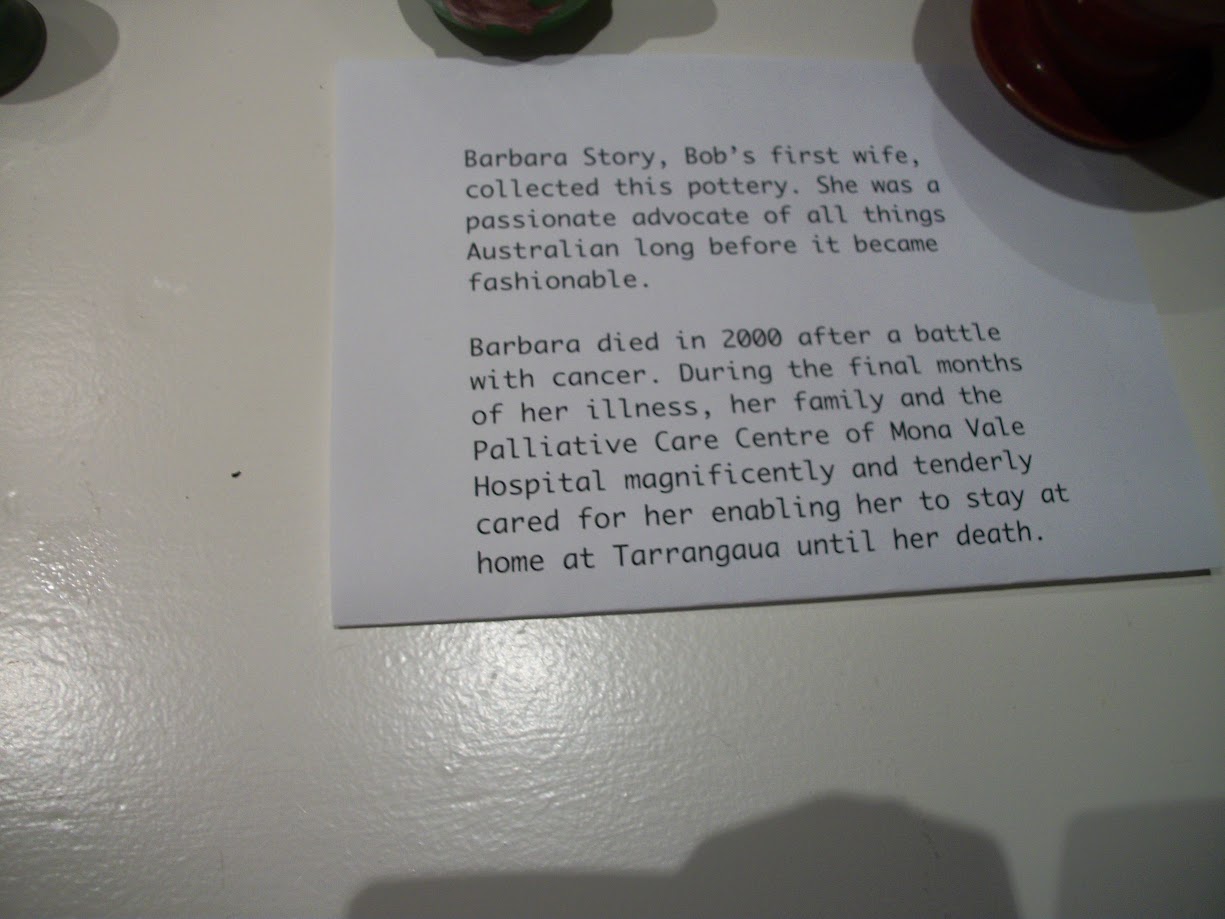
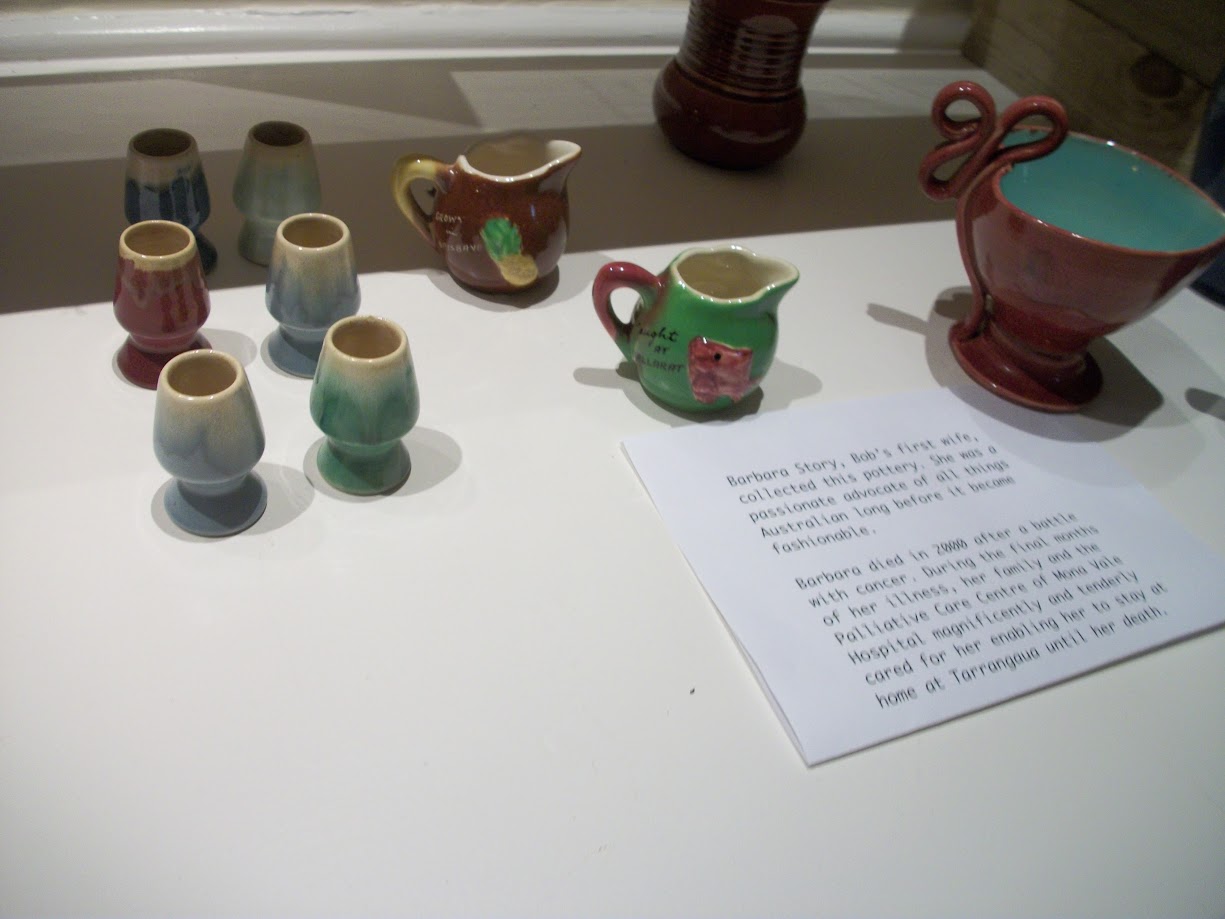
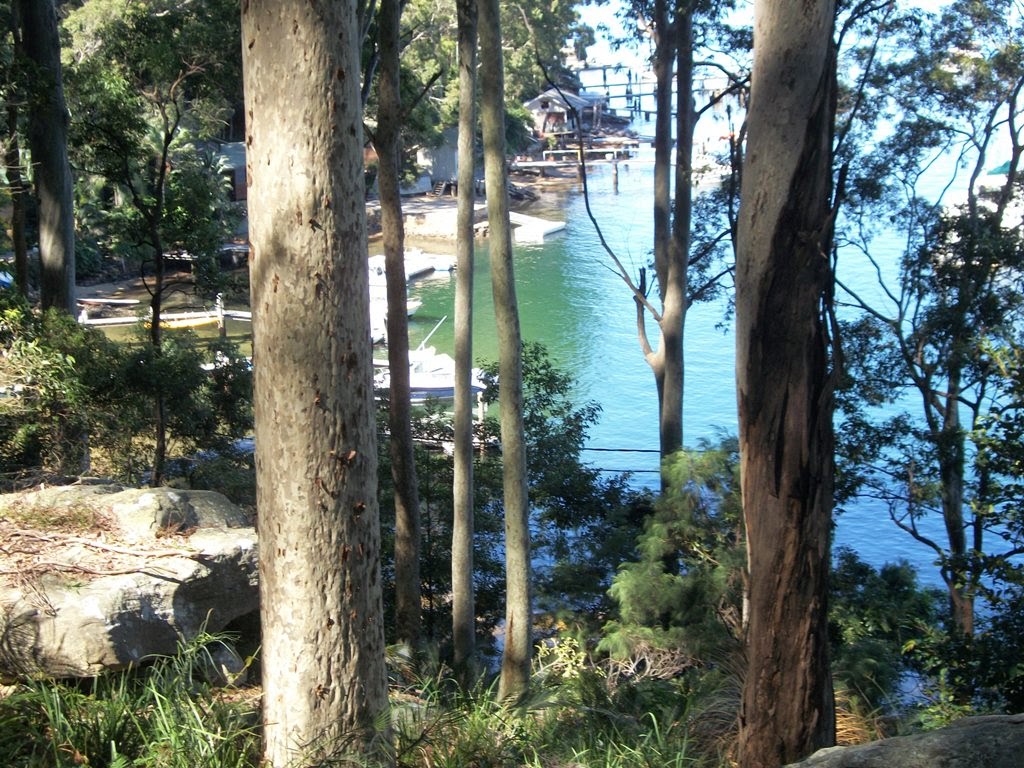
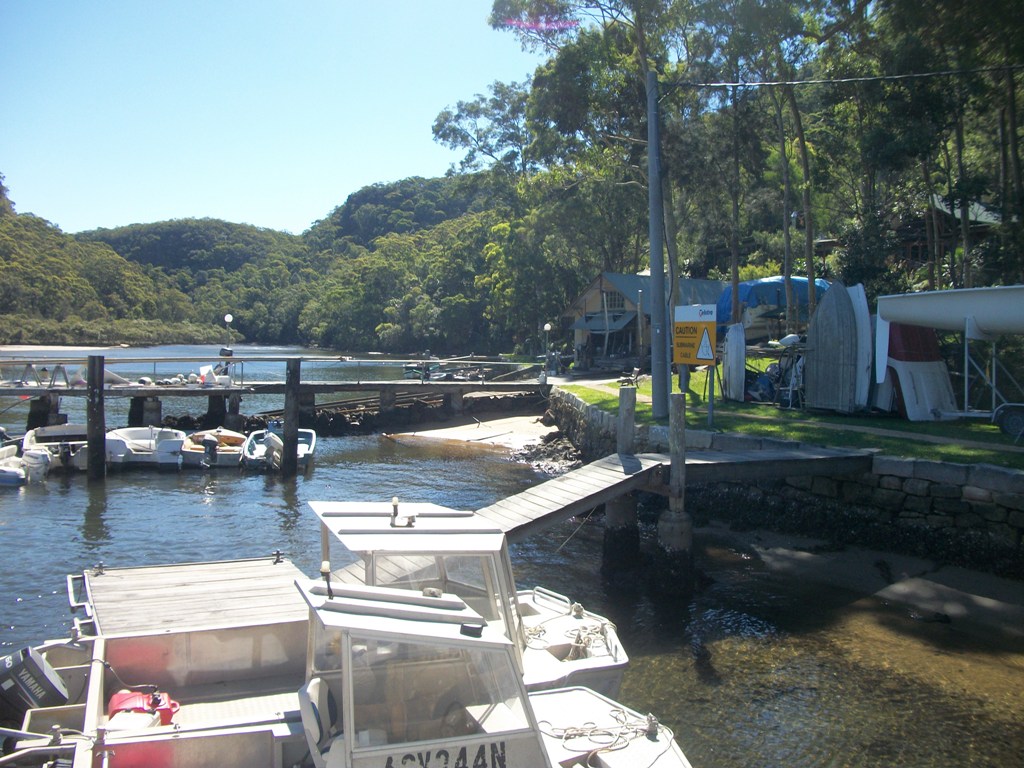
view into Night Bay and Salvation Creek from Lovett Bay in Autumn Sunshine, March 2012 - note the stone wall now pat of a retaining wall at the bay edge
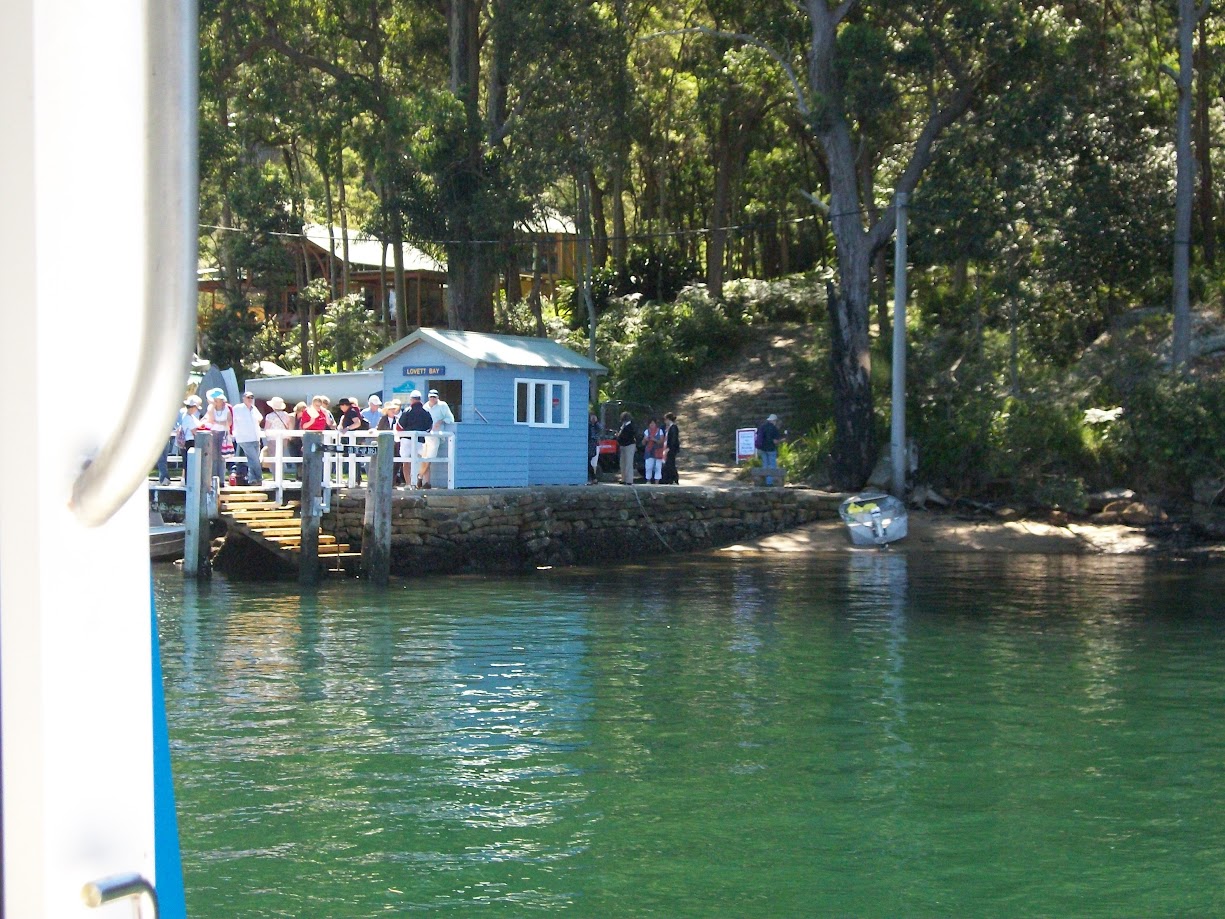
.jpg?timestamp=1757624615137)
.jpg?timestamp=1758250160221)
The Lovett Bay retreat was sold after her death in 1968 at age 82 for $27,000. A 1993 advertorial showing the land size was then down to just over one acre. The home and land holding sold again in 2020 for approx.. $6 million:
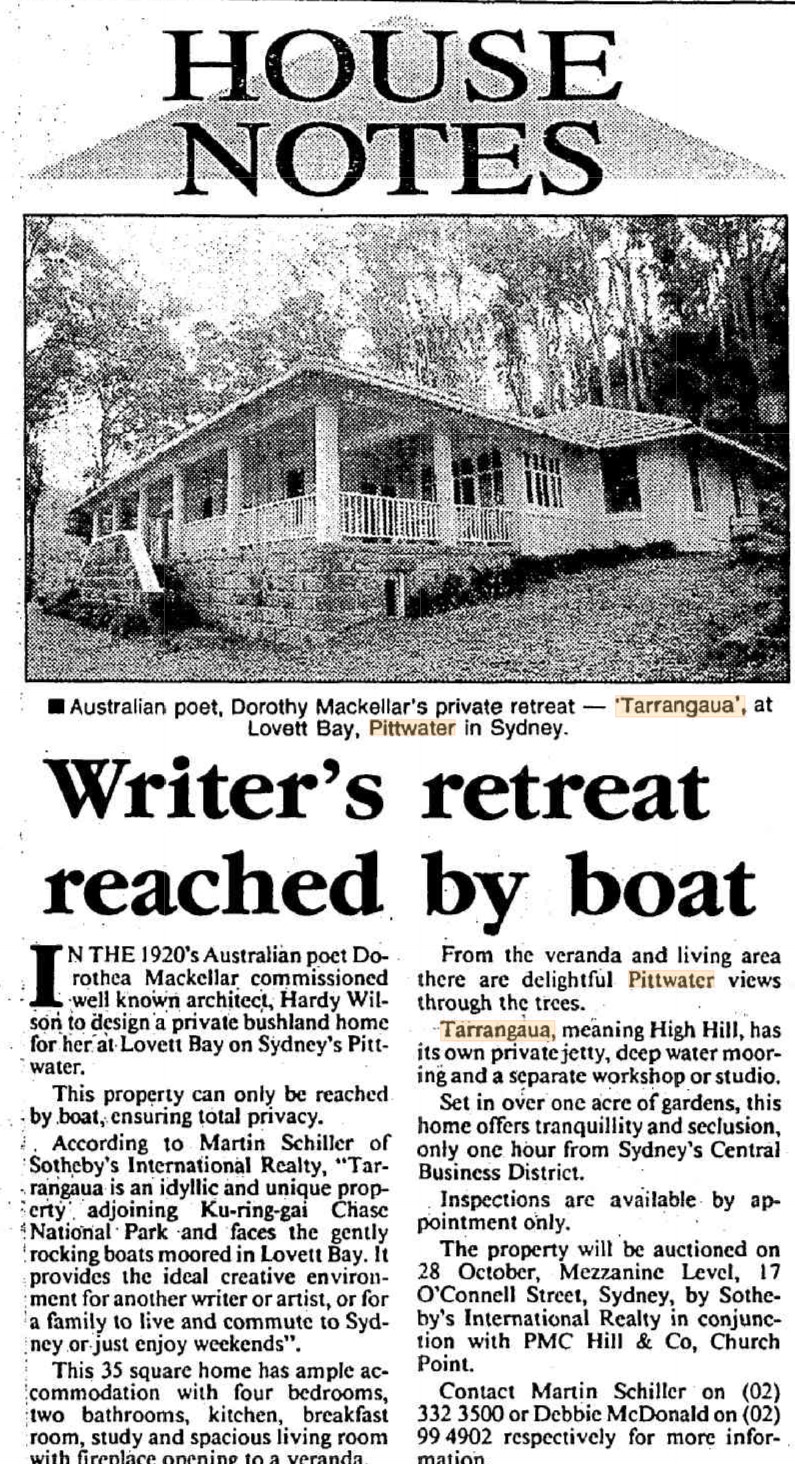
Anyone who has been to this home or gone past in their boat would know one of its most outstanding features is the wonderful grove of tall straight trees that surround it - something this poet loved. There are also verses penned by Dorothea around the finish of the build in mid 1926 which have clearly been inspired by this beautiful part of Pittwater - some examples - worth noting in these poems is that when she refers to an 'apple tree' she means our own angophoras:
PEACEFUL VOICES.
I fortunate, I knew a refuge
When the strained spirit tires
Of town's metallic symphony
Of wheels and horns and wires:
Where through the golden empty stillness
Cool flowing voices speak,
The alto of the waterfall,
The treble of the creek.
From far beyond the headland's shoulder,
South-easters bring to me
Reminder of earth's wandering,
The strong voice of the sea.
I happy, in a leafy fortress
Listen to hidden birds
And small waves of a hidden tide
Mingling their lovely words.
-DOROTHEA MACKELLAR. PEACEFUL VOICES. (1926, February 6). The Sydney Morning Herald (NSW : 1842 - 1954), p. 11. Retrieved from http://nla.gov.au/nla.news-article16265351
BARGAIN.
What do you think the Kindly Folk, the fairies, gave to me?
A bird-delighting fountain
And an almond-tree,
A trembling silver tinkle of creek, a little house of stone,
And a clean and leafy woodland
Wherein to walk alone.
What was the price the Good Folk asked?
Never their gifts are sold.
I would not chaffer with them
For the fairy gold.
I freely gave a promise instead, that pleased the fairies well,
But what It was, for Paradise,
Orchid-valleys, and trees of spice
l will not tell.
DOROTHEA MACKELLAR. FOR THE CHILDRENS. BARGAIN. (1926, May 15). The Sydney Morning Herald (NSW : 1842 - 1954), p. 11. Retrieved from http://nla.gov.au/nla.news-article16292243
LETTERS TO THE EDITOR - LAMBERT EXHIBITION.
TO THE EDITOR OF THE HERALD.
'Sir,-If the general public remembered that the Lambert exhibition, at present In the Education Department's gallery, will close on the 12th of this month, those people who have realised It would not be strolling from one masterly work to another in such un jostled comfort. This loan exhibition is of absorbing interest, containing, as it does, so much of Lambert's recent and best work, which has never been assembled before, and, since a great deal of it is from private collections, will never be seen in this way again. It is interesting, too, to contrast it with the excellent exhibition lately held in Horderns' art gallery. Here the exhibits are almost entirely different, and the effect of them is concentrated. The whole gives a deep impression of power, versatility, and an energy that is never slip-shod in its swiftness. It is no wonder that not one of these loan pictures is for sale.
I am, etc.,
DOROTHEA MACKELLAR. Pittwater, Dec. 6.
LETTERS TO THE EDITOR. (1930, December 10). The Sydney Morning Herald (NSW : 1842 - 1954), p. 8. Retrieved from http://nla.gov.au/nla.news-article16737363
POETESS IN HER SYDNEY GARDEN.
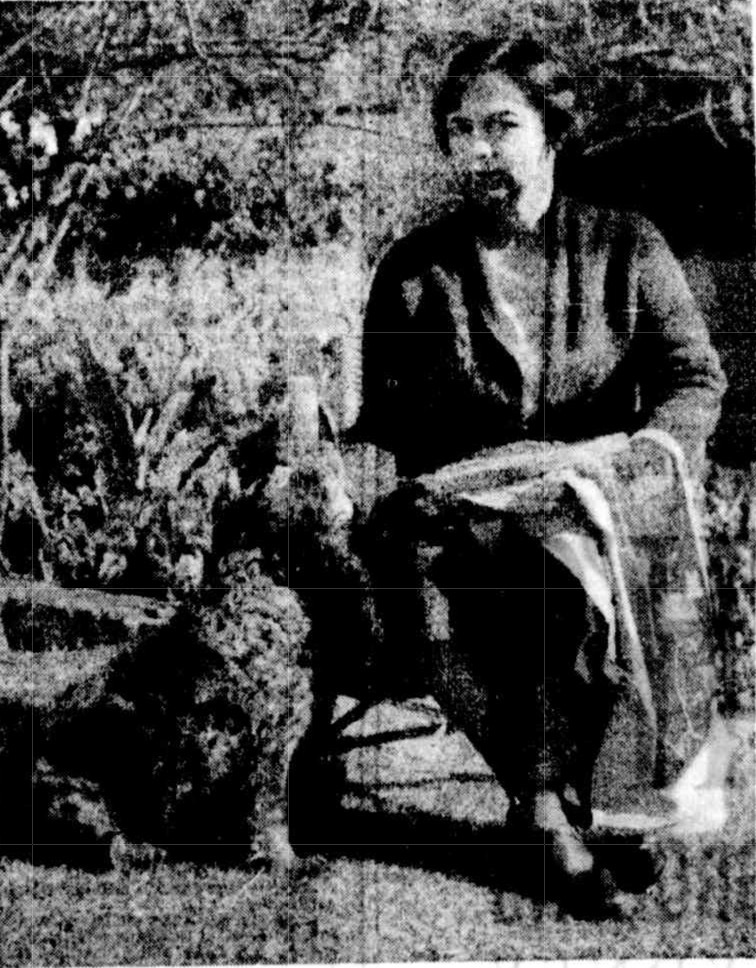
MISS DOROTHEA MACKELLAR, the well-known poetess, photographed in the garden of her home at Darling Point yesterday morning. In the afternoon she opened a private view of animal drawings by Mr. John Skeaping, at 17 Rowe-street. Miss Mackellar said that the artist's work reminded her of the prehistoric drawings in the Altamira Caves, in Spain. POETESS IN HER SYDNEY GARDEN. (1936, August 13). The Sydney Morning Herald (NSW : 1842 - 1954), p. 17. Retrieved from http://nla.gov.au/nla.news-article17260179
Dorothea's home at Lovett Bay remained in her possession for decades and was her refuge - in between trips abroad:
MISS DOROTHEA MACKELLAR, of Darling Point, the poetess, has just returned from two weeks' holiday at her cottage at Pittwater, where she enjoyed a quiet holiday, devoting most of her days to swimming and fishing. SPOTLIGHT ON SOCIETY (1937, April 22). The Sun (Sydney, NSW : 1910 - 1954), p. 37 (LATE FINAL EXTRA). Retrieved from http://nla.gov.au/nla.news-article230341202
SECRET BALLOT
Sir, — I read with great interest Mr. J. P. Ormonde's article last Thursday, but his last three paragraphs, opposing the secret ballot, puzzle me, especially the statement that the secret ballot "robs the leadership of the power of initiative."
Unless leadership has become flabby, it necessarily retains the initiative. Possibly Mr. Ormonde, by a lapse of memory, has confused "initiative" with "absolute power." "Initiative," according to the Universal English Dictionary, ed. 1936, means: "1. Initial step, introductory measure, first move. Phr. to have the initiative, to have the power or right of making the first move; to take the initiative, take the lead. 2 (polit.). Right to introduce legislative measures. 3. Mental capacity for originating; ability to start something new; to make new departures; enter-prise, originality."
The power or right of making the first move. Not the power to compel every man to follow, regardless of his own convictions. That is totalitarianism.
DOROTHEA MACKELLAR.
Lovett Bay, via Church Point.
SECRET BALLOT (1947, January 15). The Sydney Morning Herald (NSW : 1842 - 1954), p. 2. Retrieved from http://nla.gov.au/nla.news-article27904847
The house was heritage listed under Pittwater Council: House; Tarrangana; Lot 2, DP 228812, Lovett Bay and PO 77/32.
Anecdotes of Dorothea swimming across the bay to visit Australian actor 'Chips Rafferty' have become part of local folklore. He and his wife had bought land there by Spring 1948. Although Dorothea may not have had to negotiate oyster leases any longer, Item in Warringah Shire Copuncil records record at the meeting held on March 7 1939:
40. John C. Jones, 27/2/39, reporting that the public wharf and baths at Lovett's Bay, Pittwater are in a very bad state, and that the wharf provides the only means of access for the residents. Referred to the Engineer for report.
The meeting held he following month on April 18th 1939 records:
Lovett’s Bay Wharf and Baths: 16. Submitting estimate, £55, for repairs to wharf and baths at Lovett's Bay, Pittwater, and reporting that Mr. J.C. Jones is prepared to donate one-third of the cost of the work to a maximum of £25: Resolved, - That subject to Mr. Jones' paying the contribution, the work be carried out and the necessary money voted for the purpose. (Crs. Hitchcock, Latham).
Just when the pool was permanently removed has not been found - anyone who knows, please write in.
Dr Fraser's acreage remained in his hands until he sells to Robert Swinburn, of Lithgow, MD on December 31st 1941. Dr. Swinburn sells to Frank Dawson Harrison of Potts Point on November 5th, 1945. Mr. Harrison sells to George James Bennett, of Newport, Storekeeper and Eric Leslie Bennett, also of Newport, also a Storekeeper, on August 16 1955 with the C of T transferred into Vol-Fol: 7128-59 and 60 – 9 acres, 1 rood, 12 perches:
.jpg?timestamp=1757985003291)
.jpg?timestamp=1757985033660)
.jpg?timestamp=1757985072943)
The Bennett's acreage being subdivided and sold off is recorded in the Warringah Shire Council meeting as a 1965 requirement to dedicate a section of this along the waterfront is cancelled. In the April 24 1967 meeting, the records show:
REPORT BY THE SHIRE ENGINESR TO THE ORDINARY MEETING OF WARRINGAH SHIRE COUNCIL HELD ON 24th APRIL, 1967:
S5. LOVETT BAY, PITTWATER _65/146. Applicant, J. Middleton - owner, E. L. Bennett. Lots A and B, Zoning Residential A (3 allotments). Comments. Application to subdivide into 5 lots was approved on 30.9.65, with a condition that a 50' wide strip along the frontage be dedicated as a Public Reserve. In overcome family difficulties, it is requested that Council approve amended design showing only 3 lots. Detail search has also revealed that a fo??Ied approach and ‘’Landing Place’’ was dedicated along the water frontage in 1907 so that the request for dedication of a 50' wide reservation along the frontage should not now be required. RECOMMENDATION. That proposal ‘’A’’ be approved, subject to standard condition 13 and the width of the access corridor to Lot 3 being not less than 20'.
Land Registry Services map of same - the pathway named 'The Chase' marked in white and going to the right - Tarrangaua, also Heritage listed, marked in silver alongside:
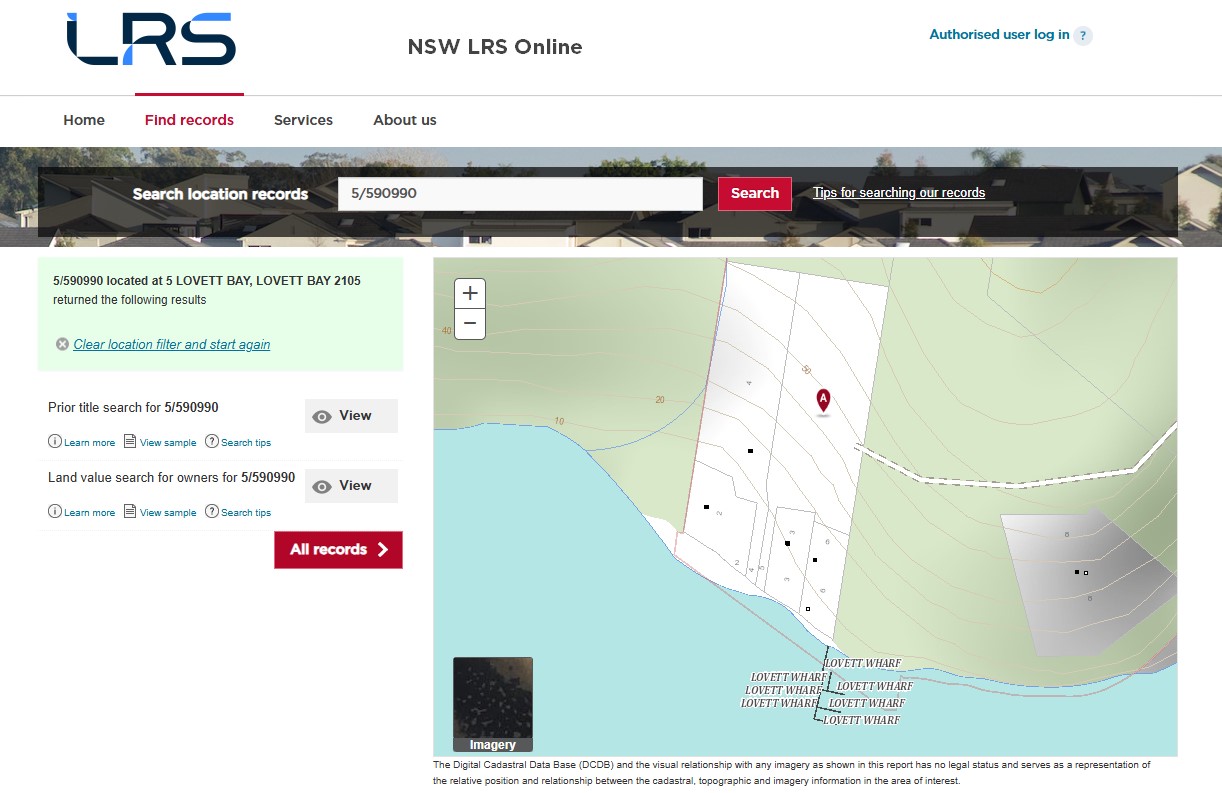
Those dedications and changes to them were:
Department of Lands,
Sydney, 20th February, 1907.
IT is hereby notified, for public information, that, in accordance with the provisions of the Public trusts Act, 1897, His Excellency the Governor, with the advice of the Executive Council, has been pleased to approve of the appointment of The Trustees of Ku-ring-gai Chute as Trustees of the land at Lovett Bay, parish of Broken Bay, county of Cumberland, area 1 rood 9 perches, dedicated 3rd January, 1907, for landing place.
[Ms. 1907-2,747] JAMES ASHTON. Government Gazette Notices (1907, February 20). Government Gazette of the State of New South Wales (Sydney, NSW : 1901 - 2001), p. 1048. Retrieved from http://nla.gov.au/nla.news-article226577666
Transferred into the Dept. of Lands in 1966. Then:
Sydney, 19th December, 1975.
PROPOSED REVOCATION OF DEDICATIONS
AS I am of the opinion that the purposes of the dedications of the areas described hereunder have failed, notice is hereby given, in accordance with the provisions of section 25 of the Crown Lands Consolidation Act, 1913, that it is intended to revoke such dedications with a view to dealing with the lands in accordance with the provisions of that Act.
JOHN M. MASON, Minister for Lands.
hand District—Metropolitan; Shire—Warringah
Parish Broken Bay, County Cumberland, area about 1239 square metres, dedicated 3rd January, 1907, for Landing Place at Lovett Bay. Pks 75-841. PROPOSED REVOCATION OF DEDICATIONS (1975, December 19). Government Gazette of the State of New South Wales (Sydney, NSW : 1901 - 2001), p. 5464. Retrieved from http://nla.gov.au/nla.news-article220172738
A Heritage listing by both Warringah Shire Council then Pittwater Council is for: - Stone Retaining Wall Site of former causeway in Lovett Bay, north side, adjoining Lots 2 & 3, DP 584315, Lots 4 & 5, DP 590990 & Lot 6, DP 545717
So although the Lovett Bay Public wharf at this location has been certainly repaired and replaced a few times, the original site and causeway remnants date from 1895.
.jpg?timestamp=1758226343506)
Wharf, Kuring Gai Chase - section from SLNSW_FL1674228 circa 1900, Courtesy State Library of New South Wales
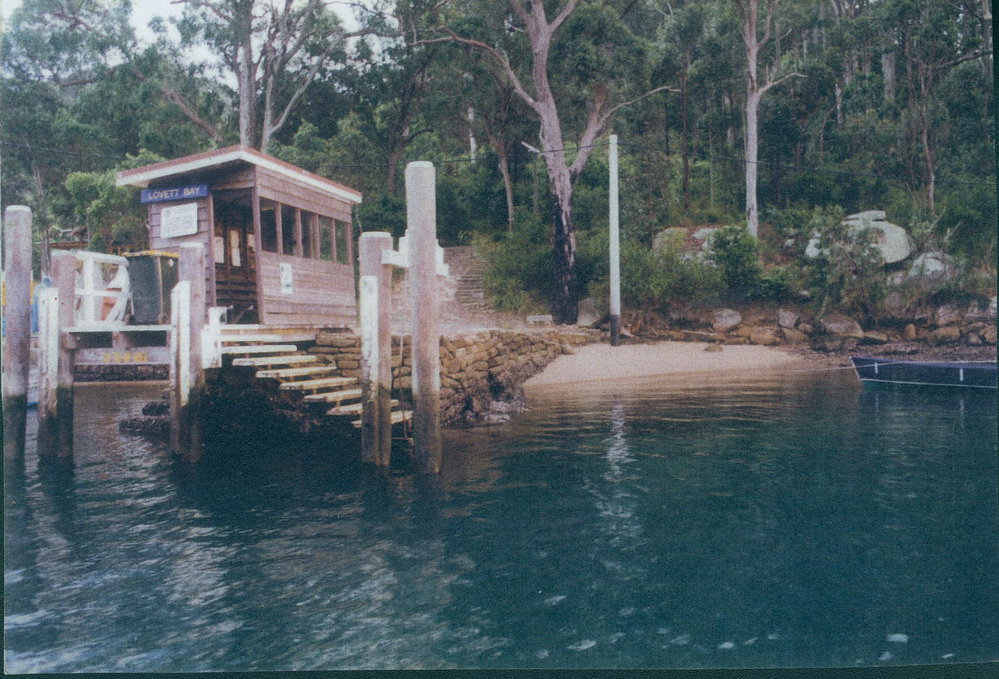
Lovett Bay Warf circa 1993-2000 - the shelter sheds were given their pale blue and dark blue and gold motifs by Pittwater Council to match the council's colours/logos
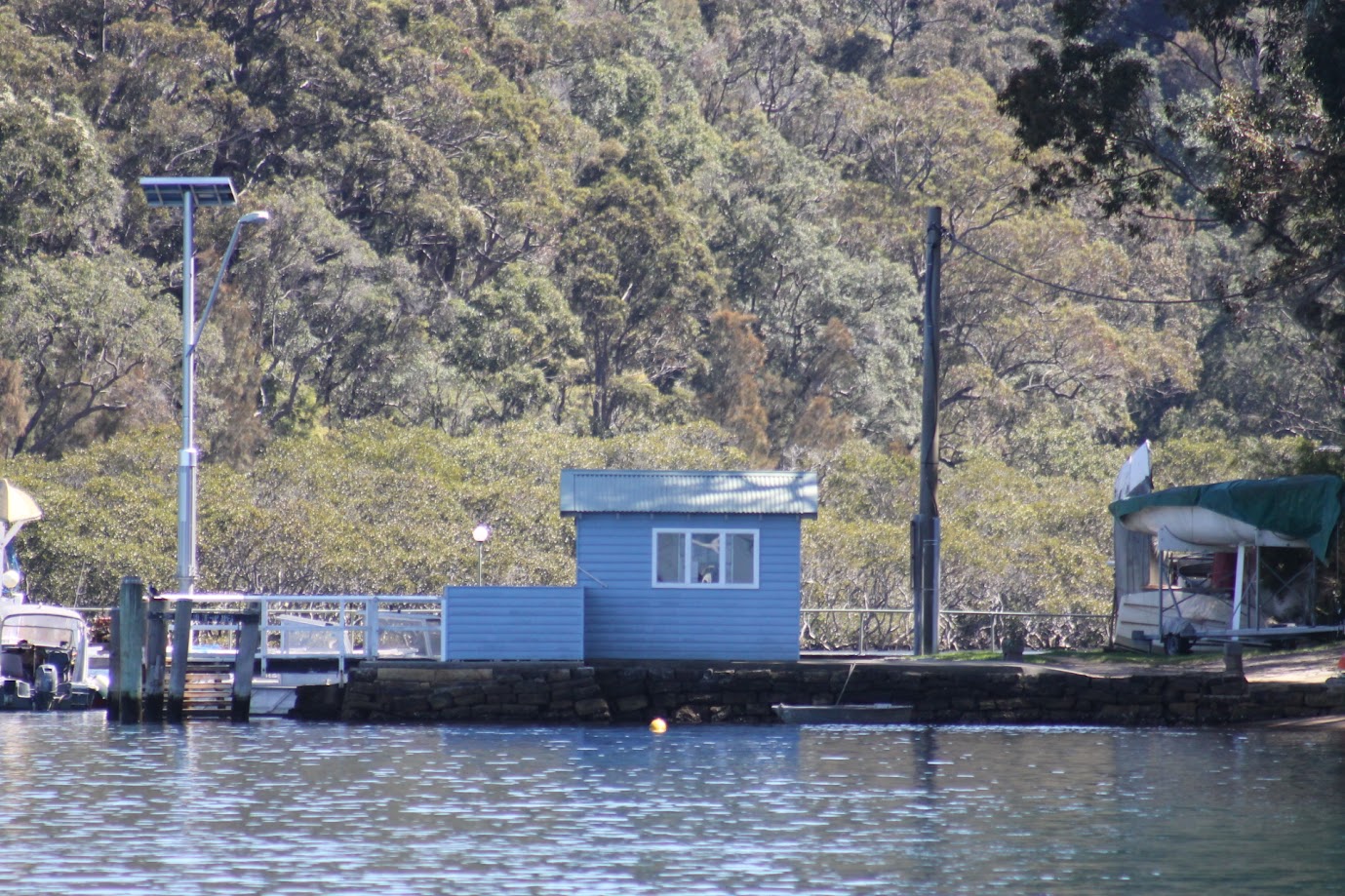
 Lovett Bay Public wharf, September 16, 2015
Lovett Bay Public wharf, September 16, 2015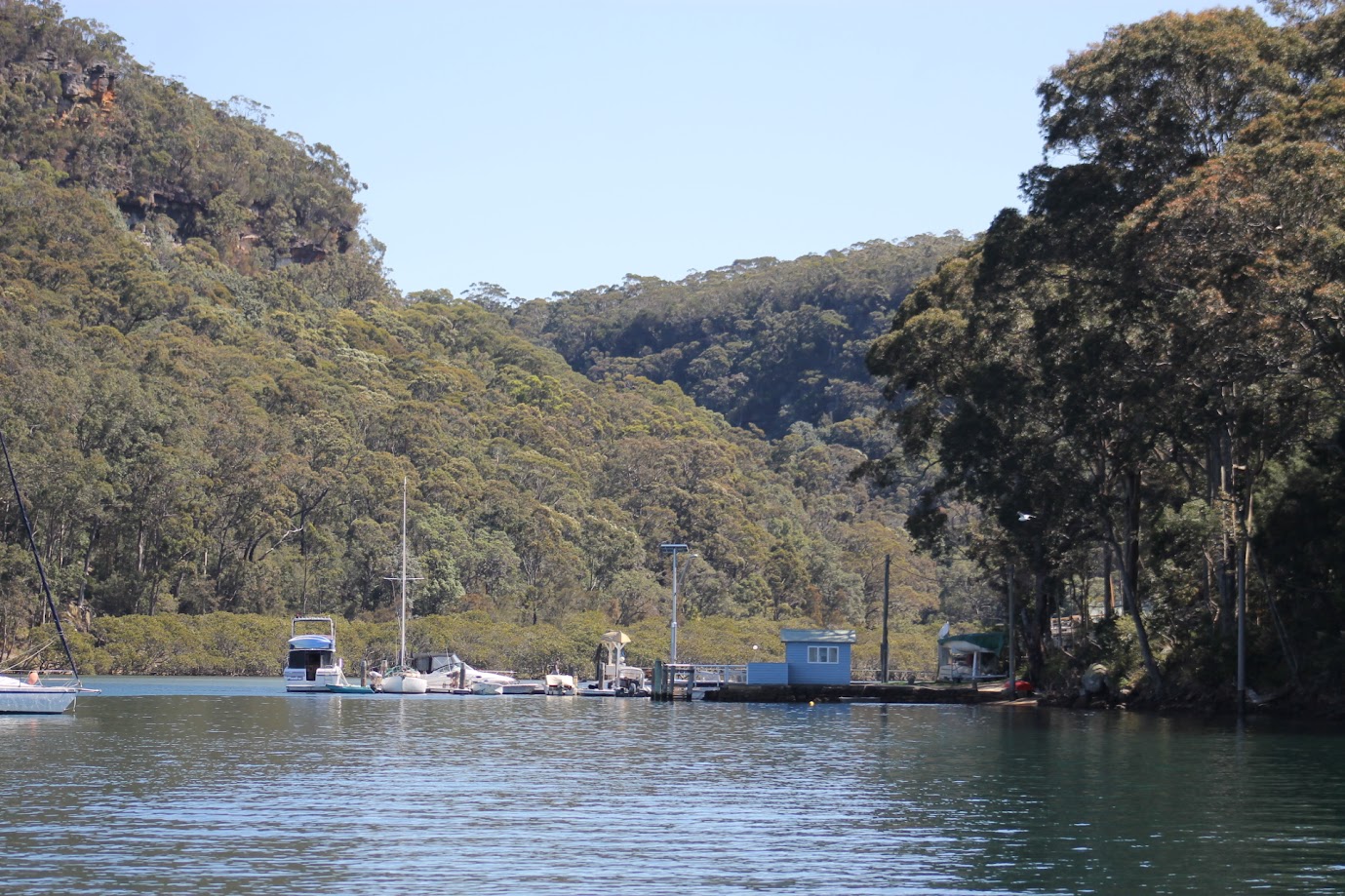
C S Harnett photo of Pittwater taken from above Lovetts/Elvina Bays view north shows then in place wharves/jetties - inlcuding a faint outline of 'Hall's Wharf'. Image from: Australian Geographical Society & Australian National Publicity Association & Australian National Travel Association. (Vol. 12 No. 2 1 December 1945). Walkabout Retrieved from http://nla.gov.au/nla.obj-736940158
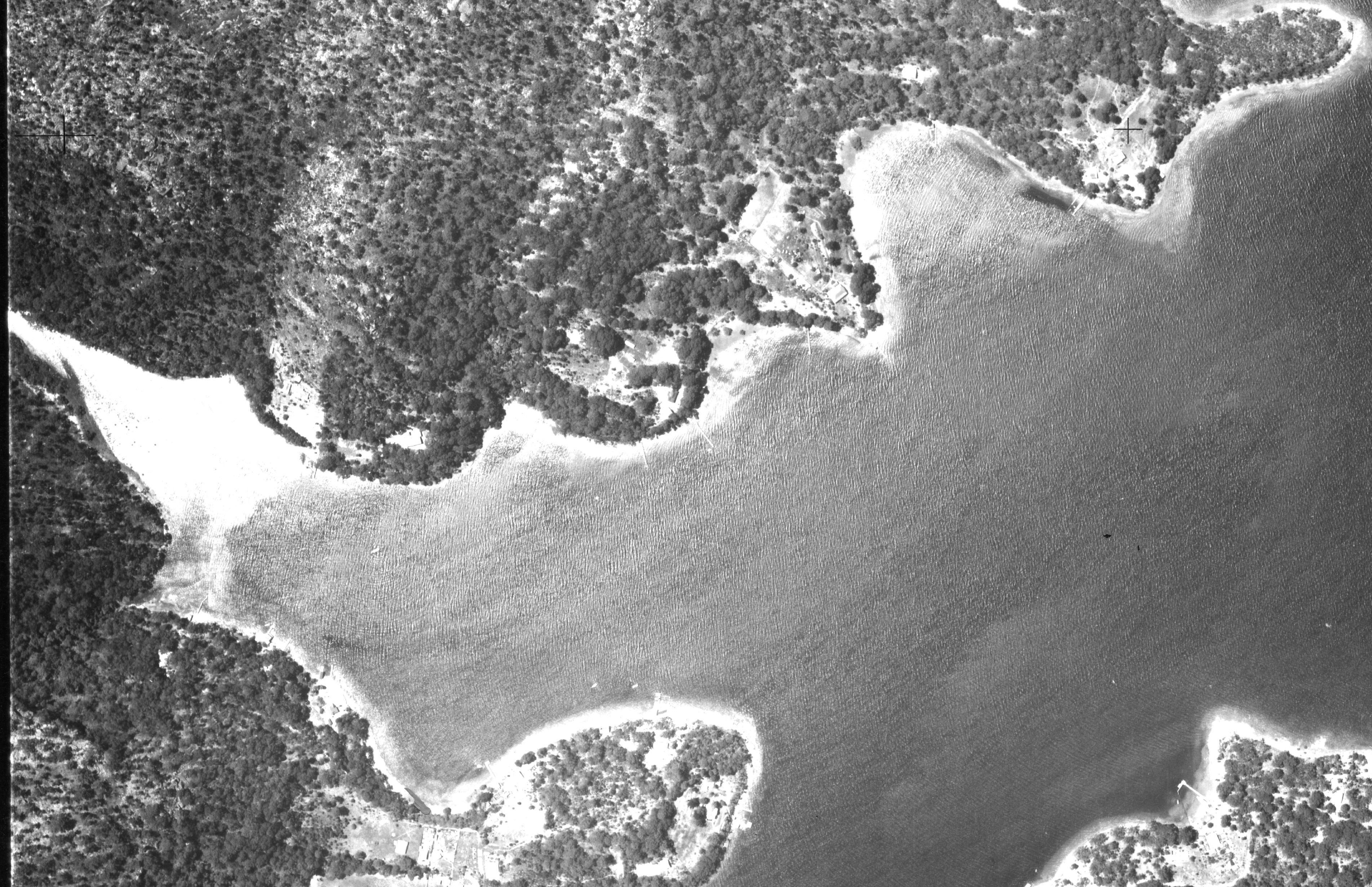
Sections from Crown Lands Aerials, Commonwealth of Australia, dated 1.1.1947
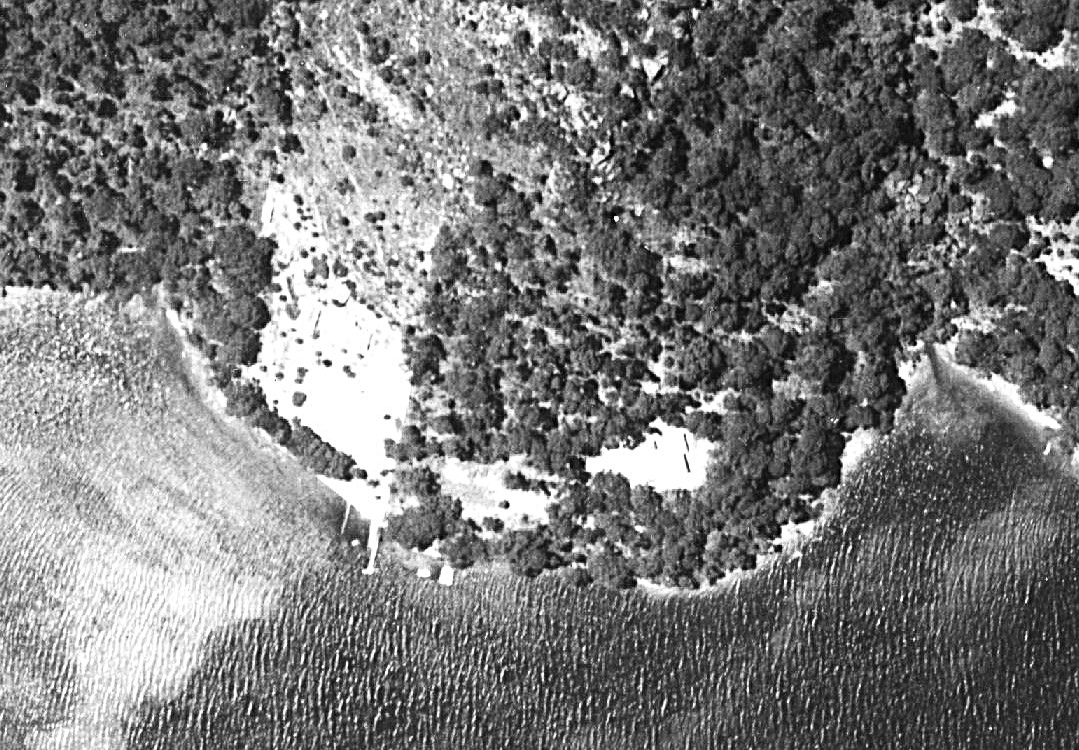
SMALL World Department: Chips Rafferty is enjoying a holiday at his house at Pittwater. Enjoying because he’s still on Ealing’s payroll, holiday although he’s busting rocks and mixing concrete and generally improving the estate. The other day he was introduced to a young boat-man named Brian Debenham. Said Chipsy, tilting his beard skyward and screwing his eyes in-reminiscent concentration: “When I was in England they wanted me to play the part of a character named Debenham in the film Scott of the Antarctic. There was an Australian in Scott’s expedition named Debenham. A geologist or something he was. Said Brian: '‘l know. He's my father.” Australian Broadcasting Commission. (Vol. 10 No. 41 9 October 1948). RADIO ROUNDABOUT, ABC weekly Retrieved from http://nla.gov.au/nla.obj-1432119951
Halls Wharf (Eastern end of Little Lovett Bay, adjacent to Towlers' or Morning Bay)
Local lore states Hall's Wharf was named to honour the contribution to the community of Charles Autrey Hall. Mr. Hall was a dentist who built his family home overlooking Towlers/Morning Bay in Pittwater in the 1920s.
His North Sydney dentistry practice kept him 'in town' and away from this home throughout the week, but he travelled back of a weekend to spend time with his family, always keeping a chair in his home to tend to the mouths of the locals!
Dr. Hall actually bough the Arthur Wood acreage over 'Woods' Point', at the far east point of Lovett Bay and into Towlers from Mr. Wood's wife Jane after he had passed away, becoming the owner of the 40 acres on July 24th 1913. He had apparently been camping on the land prior to purchasing it in 1913.
The original Certificate of Title records Mr Wood as becoming the owner on July 5th, 1889.
Arthur Branscome Wood was a teacher and instructor in music, who quite possibly knew Steffani, who had the property o the end of Rocky Point and they were both part of the 'music scene' of then and both sent or accompanied the finest of Australian female singers to London. Mr. Wood acquired 40 acres of land at Towler’s Bay when a Conditional Purchase by Joseph Shaw lapsed.
.jpg?timestamp=1758406689133)
.jpg?timestamp=1758406754504)
.jpg?timestamp=1758406848373)
.jpg?timestamp=1758407043415)
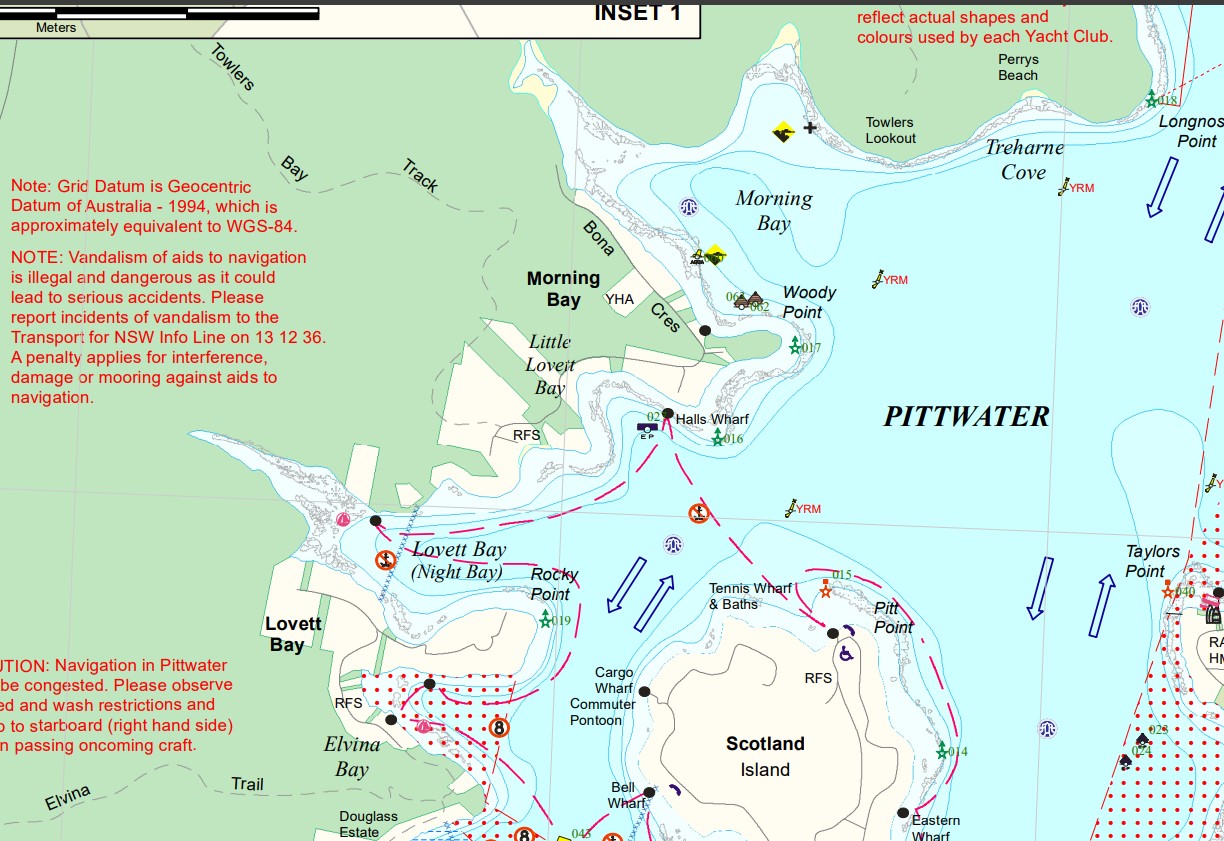
Boating maps - RMS - Pittwater ( Section from: 9A- September 2022) Public Wharf, Jetty or Landing places are marked on the map with a large black dot.
Charles Autry Hall, Dentist Place of Business: 35 Blue Street North Sydney - although he moved when this was resumed so the Harbour Bridge was built.
They had stock on the property:
Charles Autry Hall and Ernestine Hermine Penty Hall, Pittwater and 35 Blue-street, North Sydney. STOCK ACT, 1901. (1920, October 8). Government Gazette of the State of New South Wales (Sydney, NSW : 1901 - 2001), p. 5960. Retrieved from http://nla.gov.au/nla.news-article224612722
And an Oyster Lease from 1913 on - a quite substantial one initially, before others built jetties to access properties:
Charles Autry Hall. On the south-western side of Towler's Bay, extending from the head of the bay, around Johnston's or Rocky Point, along the frontages of portions Nos. 80,13, and part of portion No. 1. " Broken Bay, Cumberland. 2,500 yards for 10 years. APPLICATIONS FOR LEASES FOR OYSTER CULTURE. (1913, September 17). Government Gazette of the State of New South Wales (Sydney, NSW : 1901 - 2001), p. 5757. Retrieved from http://nla.gov.au/nla.news-article221609819
Sydney, 23rd January, 1926.
FISHERIES acts—renewal of leases.
APPROVAL has been given for the renewal of the Oyster Culture Leases specified hereunder for a further term of five years in each instance, from the dales and at the rentals set out, but without any light of renewal.
CHARLES W. OAKES.
Schedule.
No.. 6,449, Arnold Blacka and John Gordon Blacka;
l,422f- yards frontage at Bermaguee River (plan cat. No. B. 23-85); rental rate 10s. per 100 yards; total annual rental, £7 3s., from 20th July, 1925.
No. 8,136, Charles Autry Hall ; 1,030 yards frontage at Pitt Water (plan cat. No. P. 2-42); rental rate, 10s. per 100 yards; total annual rental, £5 3s., from 29th June, 1925. FISHERIES ACTS—RENEWAL OF LEASES. (1925, January 23). Government Gazette of the State of New South Wales (Sydney, NSW : 1901 - 2001), p. 459. Retrieved from http://nla.gov.au/nla.news-article223005213
Sydney, 25th June, 1935.
APPROVAL has been given for the renewal of Charles Autry Hall's Oyster Culture Lease No. 16,783, of 200 yards at Pittwater, as shown on plan catalogued No. P. 14-42, for a term of five years from 29th June, 1935, at a rental at the rate of 10s. per 100 yards per annum, being equivalent to a total annual rental of £1, subject to the right of the holder of the lease to a further renewal, after due application, for an additional period of five years, at a rental to be determined in conformity with section 12 (33b) of the Fisheries (Amendment) Act, 1910, and to the special condition that under Fisheries Regulation No. 66, the whole or any part of the land comprised in the lease may be resumed at any time without compensation for any public purpose, or for th3 granting thereover of a Special Lease under the Crown
Lands Acts.
FRANK A. CHAFFEY. Government Gazette Notices (1935, July 12). Government Gazette of the State of New South Wales (Sydney, NSW : 1901 - 2001), p. 2802. Retrieved from http://nla.gov.au/nla.news-article223080992
Date of Death 29/09/1937, Granted on 14/02/1938 Date Duty Paid: 03/04/1939. The property is placed on the market but does not sell immediately. The advertisement describes:
Estate of the late C A Hall
PITTWATER TOWLERS BAY
A MAGNIFICENT WATER FRONTAGE PROPERTY IN AREA ABOUT 40 ACRES - offering with its extensive frontage along the water ample opportunities to the Speculator for Subdivision or by reason of its unique position specially adapted for Aquatic Clubs or Residence for a Retired Gentleman
On the land is erected a Fibro Bungalow Iron roof containing Verandahs large Living-room Dining-room 3 Bedrooms Kitchen and Offices Boatshed Stone Pier and Wood Wharf
TORRENS TITLE
INSPECTION BY APPOINTMENT
Solicitor T J Purcell Esq 66 King Street
HARDIE GORMAN PROPRIETARY LIMITED in conjunction with T HOLLINGSWORTH 62 Walker Street North Sydney will offer the above by Public Auction In the Salerooms Ocean House
Martin Place at 11 am on WEDNESDAY 15th JUNE 1938. Advertising. (1938, June 4). The Sydney Morning Herald (NSW : 1842 - 1954), p. 30. Retrieved from http://nla.gov.au/nla.news-article17471752
This, in those early days of shifting from being a place of farms and people who bought land but did not develop it too much, was still a place people could become lost in:
LOST IN THE BUSH
Missing for six days pears and oyster diet
John O'Connor, 24, of 576 Darling-street, Rozelle, was lost in the bush at French's Forest last Tuesday. He was discovered in a weak condition in a hut at Towler Bay yesterday afternoon by a party of campers.
O'Connor had been wandering about for six days, and had eaten only a few green pears, which he obtained from an abandoned orchard and some oysters picked from the rocks at a point some distance north of where he was discovered. He was in a very weak state, and was taken by Constable Fitzsimmons to Mona Vale Police Station, where he was given a good meal and a bed to sleep in. He was able to leave for his home this morning.
The experiences of O'Connor were such that on Sunday morning he thought he would succumb owing to exhaustion, exposure, and want of food. He states that he left the city on Tuesday morning with a friend. John Backhouse, Crown-street, Darlinghurst, to gather wildflowers in French's Forest. They walked several miles, and eventually lost sight of each other. Both men called out and whistled loudly, so as to attract attention, but each failed to hear the other, and wandered aimlessly on. Backhouse had the fortune to strike a path, which he followed, and reached Manly, but his mate was not so lucky, and wandered about till nightfall without finding anyone to guide him. or a track or road leading to habitation.
On Tuesday night he slept as well as he could under a tree. The night was cold and damp, and he suffered a good deal. On Wednesday and Thursday he had a frightful experience, walking here and there and sleeping in the open. He had had no food, and was weakening. His eyesight was also becoming affected, and at times he had fits of dizziness. He happened to come across the old orchard on Friday about noon, and was in such a state of hunger that he voraciously ate the few green pears he plucked from a tree.
He rested awhile, and although weak and depressed in spirits, he staggered about. He happened to reach the coast, and was fortunate to be able to obtain some oysters from off the rocks. The shells he broke with a stone. Wandering, along near the water's edge, O'Connor thought he would be able to reach Manly, but the country he was in is very rugged, and he was compelled to travel further inland. He became bushed again, and at nightfall on Friday night he was in a regular maze, and had no idea where he was. He again slept the night under a tree, and on Saturday made another effort to get out of the difficulty he was in.
The little food be had on Friday bad buoyed him up a little, but still he was famishing, and was beginning to give up all hope of being able to last out another day's trudging aimlessly about. He had to rest in the open again on Saturday night, but being overtired, faint, and worried, he hardly closed his eyes for the night. He lay on his back, and as he told the police, prayed for help.
At daybreak yesterday he pulled himself together as well as he could. He was hardly able to stand, but his determination would not allow him to give in. He, therefore, struggled along, and at last, to his unbounded joy, came across some campers. They realised the state the unfortunate man was in, and gave him a good meal and some provisions. They made him rest for a few hours. He picked up wonderfully in the time, and feeling that with the information the members of the party had given him of his bearings, he could find his way to Manly, he started off.
He had not gone far, however, when he was overcome with faintness, and had to seek refuge in a hut close by. He lay down, and was resting, when a party, including his mate, Backhouse, and friends, who had been looking for him for days, happened to arrive. They had provisions with them, and after reviving him they came across Constable Fitzsimmons, of Mona Vale, who was one of a second search party. LOST IN THE BUSH (1915, December 20). The Sun (Sydney, NSW : 1910 - 1954), p. 8 (FINAL RACING). Retrieved from http://nla.gov.au/nla.news-article221932164
The YHA History for the site states:
1940
Towlers Bay YHA was the first hostel to grace Pittwater. Towlers Bay was a corruption of the name, Bill Toler, who was a keen camper in the area. The Navy had originally used the building as sailors’ quarters before it became a little-used boarding house.
Early YHA member Paddy Pallin discovered the run-down property and recommended that YHA obtain the site.
Around 1943 YHA leased the building and volunteers made the hostel habitable. Bushwalkers and sailing enthusiasts often rested weary heads there after a day in the bush or on the water. At night camp fires glowed - sometimes there would even be folk dancing!
At other times the hostel hosted important gatherings such as in 1948 when for one of the first times, YHA members from around the nation met together on an official basis.
1950
Scottish-born Ebena Isles spent most of her childhood in Australia, becoming a teacher and social worker. As an early YHA member she visited Towlers Bay hostel and sometimes took children there when she worked for the Sydney University Settlement, which helped disadvantaged people.
Department of Education
HIS Excellency the Governor and the Executive Council, have approved of Mrs. Doris Magee, Miss Ebena Isles, and Miss Joyce McMillan, being appointed as members of the National Fitness Council of New South Wales, vice Frank Austin Pallin, John Patrick Metcalf, and Miss Dorothy Llewellyn.
HIS Excellency the Governor and the Executive Council, have approved of Mr. Royston James Henderson, being appointed as a member of the National Fitness Council of New South Wales, in the absence of Mr. Colin Hugh John McKinnon, on long service leave.
R. J. HEFFRON, Acting Premier. APPOINTMENTS (1958, June 27).Government Gazette of the State of New South Wales (Sydney, NSW : 1901 - 2001), p. 1919. Retrieved from http://nla.gov.au/nla.news-article220275713
The house that Charles Hall had built was on the opposite side of the bay and on the 27th of February 1959 the nature loving Ebena bought the property. She mostly lived there alone, “making do” with just tank water, an electricity generator, and cooking on both a primus and gas stove.
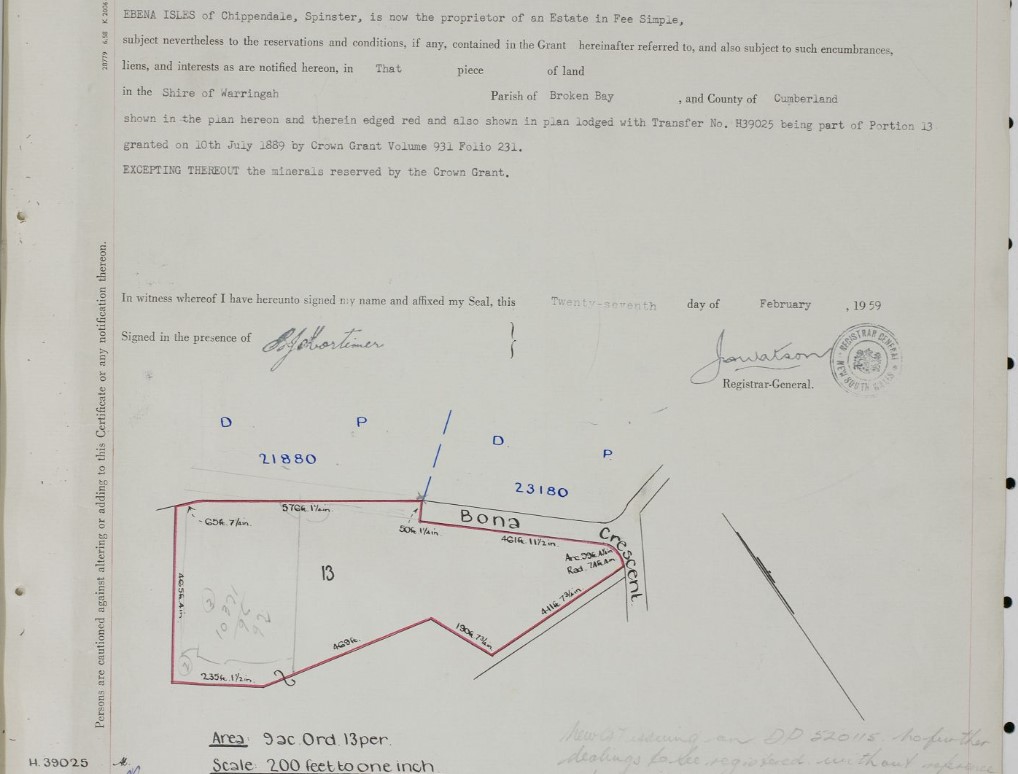
1960
The newly formed National Parks & Wildlife Service took over the site and demolished the building in 1967. Although the hostel closed another opened on the same day, in the same area, on the opposite side of the bay.
After YHA lost Towlers Bay hostel to the National Parks & Wildlife Service Ebena saw that her house would make an ideal hostel, and generously donated her own home to YHA. In 1967 it became Pittwater YHA. Eventually Ebena moved away to the Blue Mountains where she lived until the age of 95.
1980
By 1984 the bay had reverted to its original name of Morning Bay. In 1988 an extension was added to the hostel which today continues the tradition of hospitality Ebena instituted when it was her own home.
The ferry stop Pittwater YHA guests alight from today is called Halls Wharf, named after that charitable dentist.
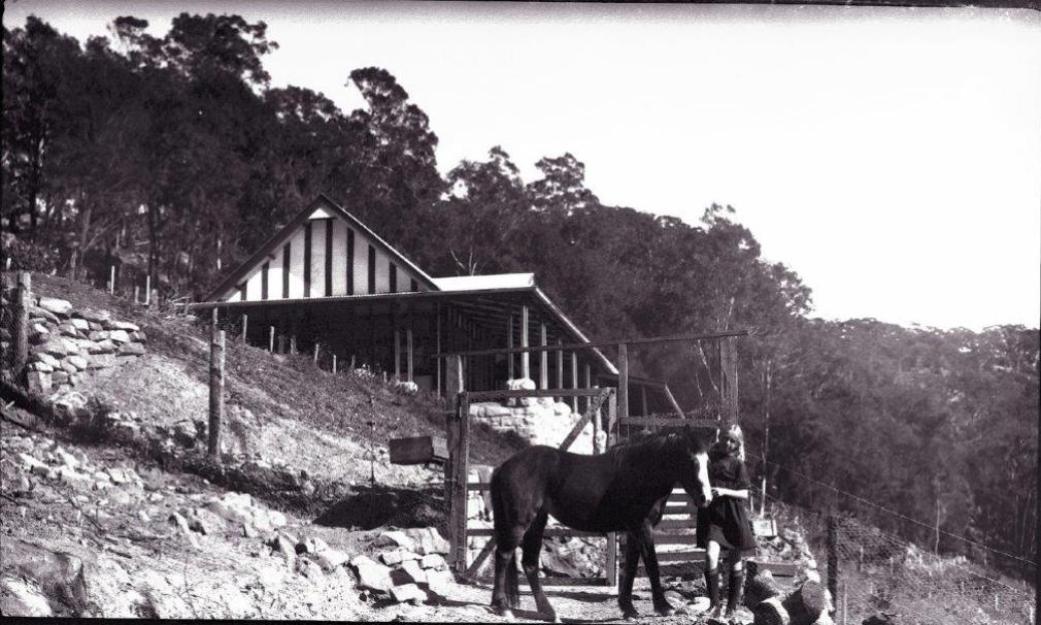

Towler's Bay view, 1967 (bad fires in 1965). Photo courtesy Lindsay Bridge.
The oyster lease is renewed:
Sydney, 29th May, 1941.
FISHERIES AND OYSTER FARMS ACT, 1935-1938.
Renewal of Leases.
APPROVAL has been given for the renewal of the Oyster Culture Leases specified hereunder, for a term of five years from the dates and at the rentals set out, but without right of further renewal.
J. M. BADDELEY. Schedule.…
No. 15,783, Ernestine Hermine Penty Hall, Espa Eunice Autrey Wilkes and Felix Autrey Hall, trustees of the estate of the late Charles Autry Hall, 200 yards at Pitt Water (plan cat. No. P. 34-42) ; annual rental, 10s., from the 29th June, 1940.
Special Condition.
These leases are renewed subject to the special condition that the whole or any part of the land comprised therein may be resumed at any time without compensation for the granting thereover of a special lease under the Crown Lands Acts, and that the whole or any part of such land may be withdrawn from lease if required for any public purpose with compensation determined in accordance with the provisions of section 7G of the Fisheries and Oyster Farms Act, 1935-1938. FISHERIES AND OYSTER FARMS ACT, 1935-1938. (1941, June 20). Government Gazette of the State of New South Wales (Sydney, NSW : 1901 - 2001), p. 2256. Retrieved from http://nla.gov.au/nla.news-article225114534
Warringah Shire Council minutes of Meetings Records on November 26 1951:
Correspondence – K. Stephens 19/11/51, requesting that consideration be given to providing a public landing wharf to give access between Towler and Lovett Bays, Pittwater, the only access being by water. Resolved - That this be referred to A. Riding-Councillors for consideration. (Crs. McKay, Hewitt)
On December 15, 1952:
(5) K. Stephens, 2/12/52, expressing thanks for the work' done at Hall's wharf, Lovett's Bay. ;Received;
On January 18, 1960:
Cumberland County Council,/,B. Portion 30; Parish of Broken Bay, Towlers Bay, Pittwater, Estate of the late H.W. Sanders _advising completion of negotiations for the completion of this land, and to facilitate transfer to Warringah Council by transmission, forwarding declaration off Trust for completion under seal. Advising that before the acquisition is completed a plan of subdivision will be prepared and submitted to Council for consent, and stating that should approval be given to the Plan it will be annexed to a Memorandum of Transfer and after this document has been lodged at the Land Tiles Office if will be given a dealing number
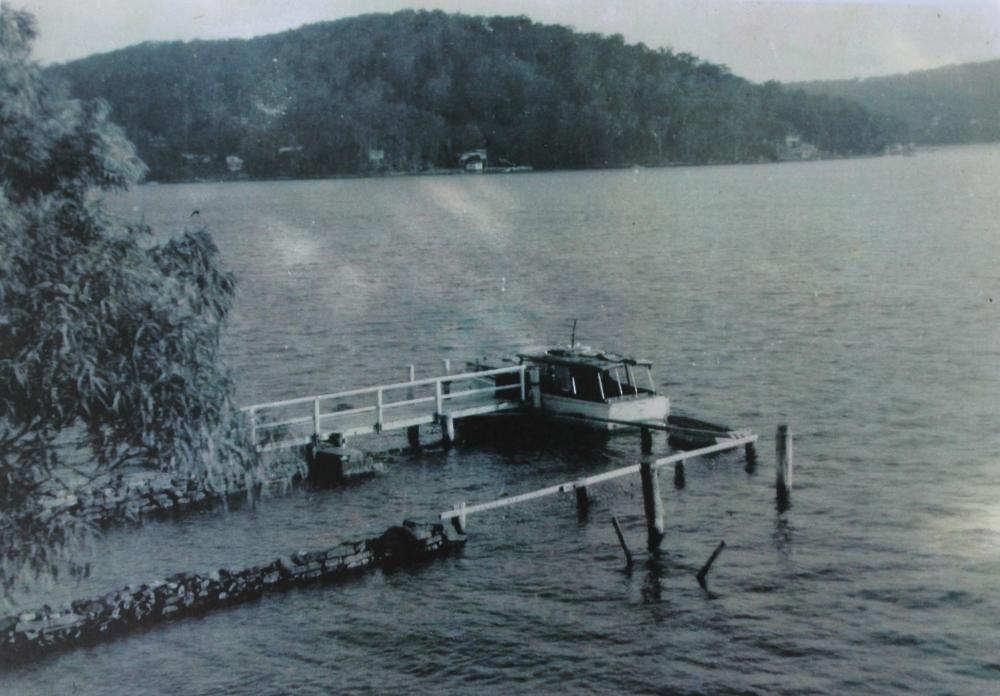

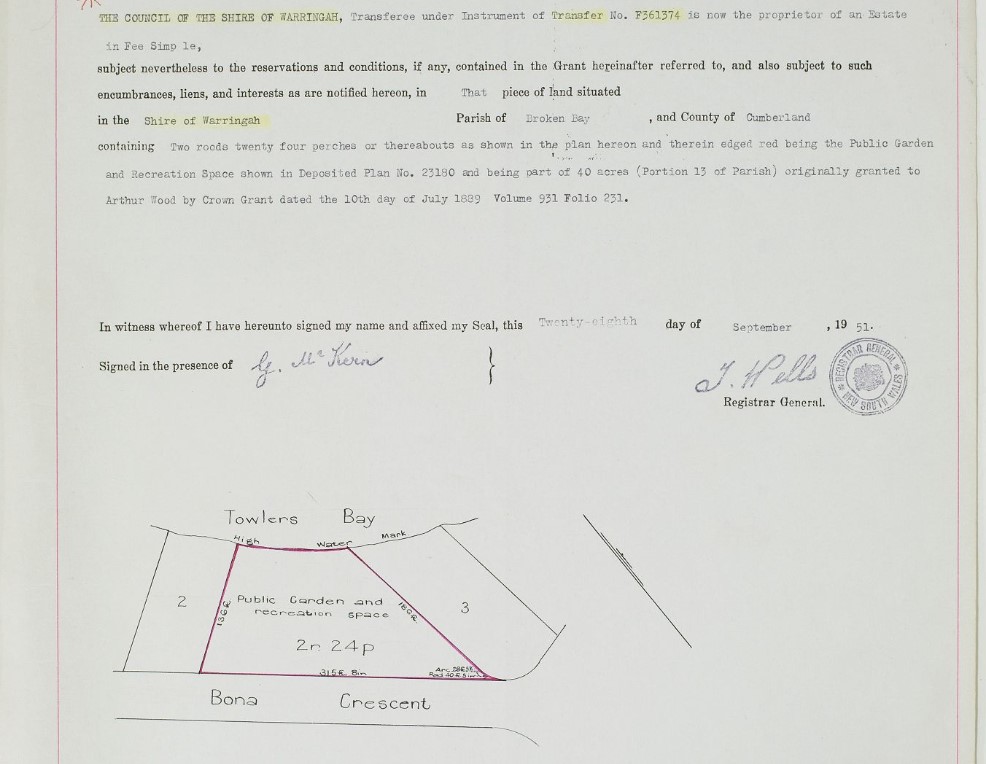
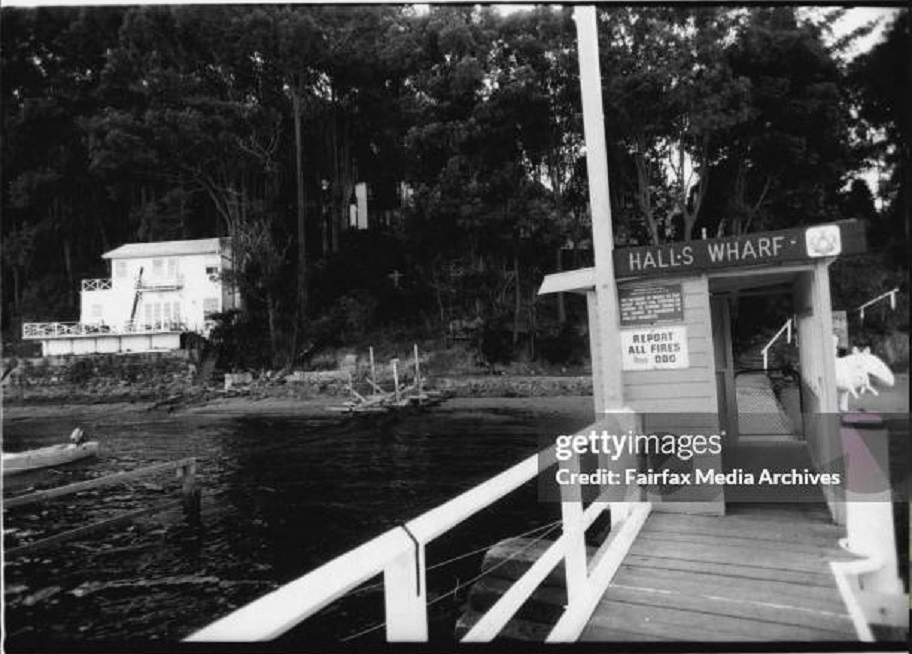
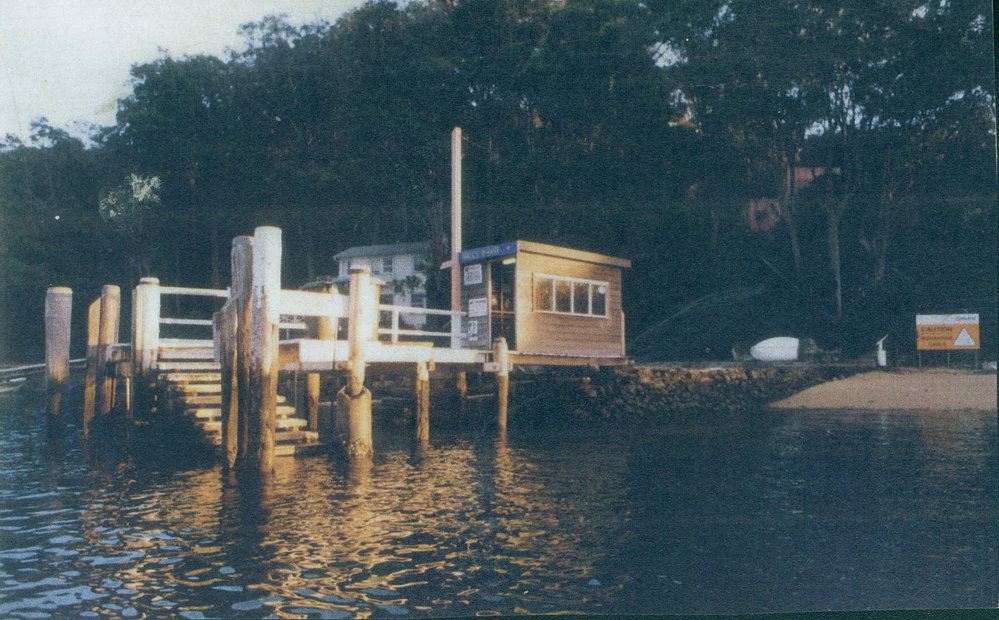
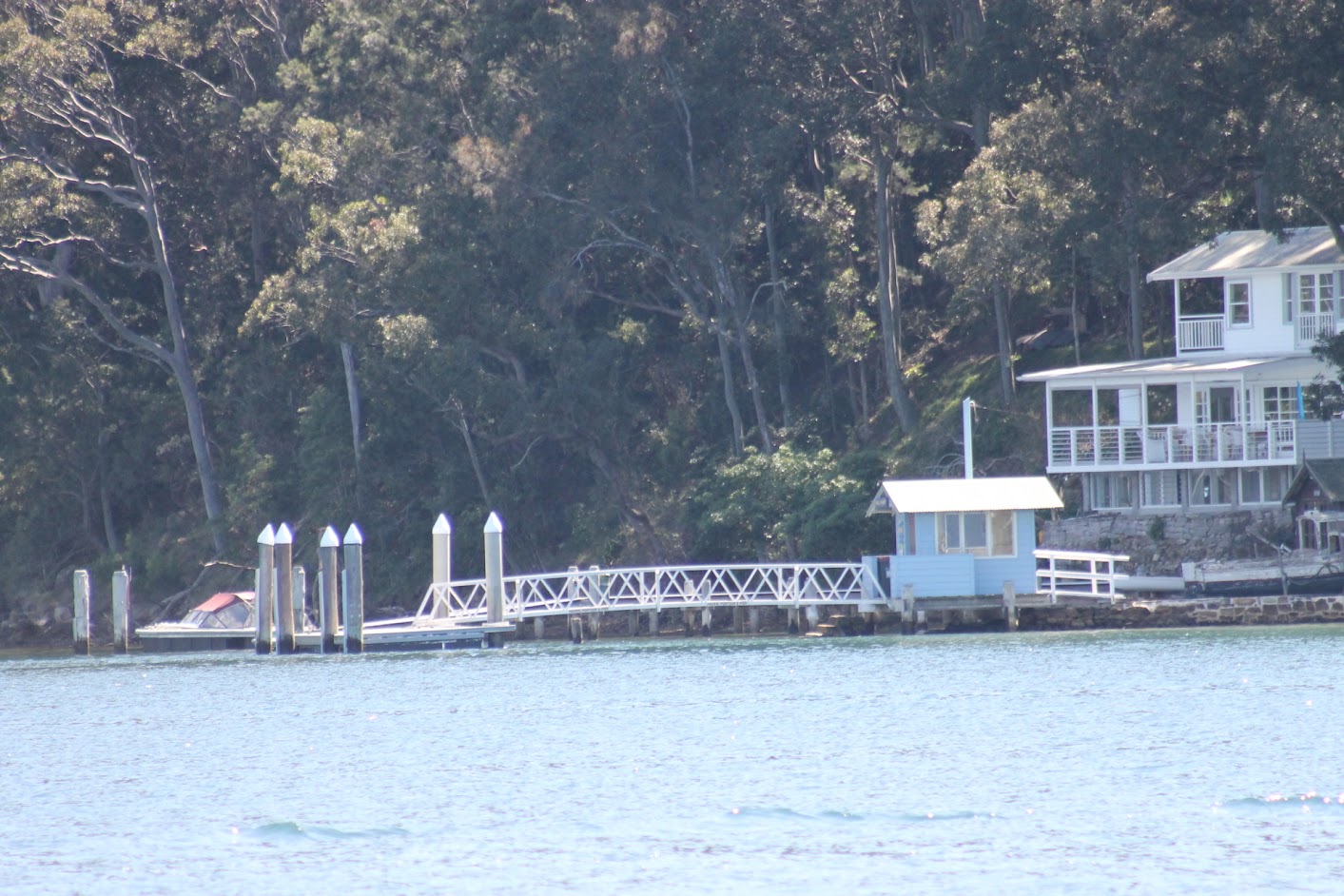
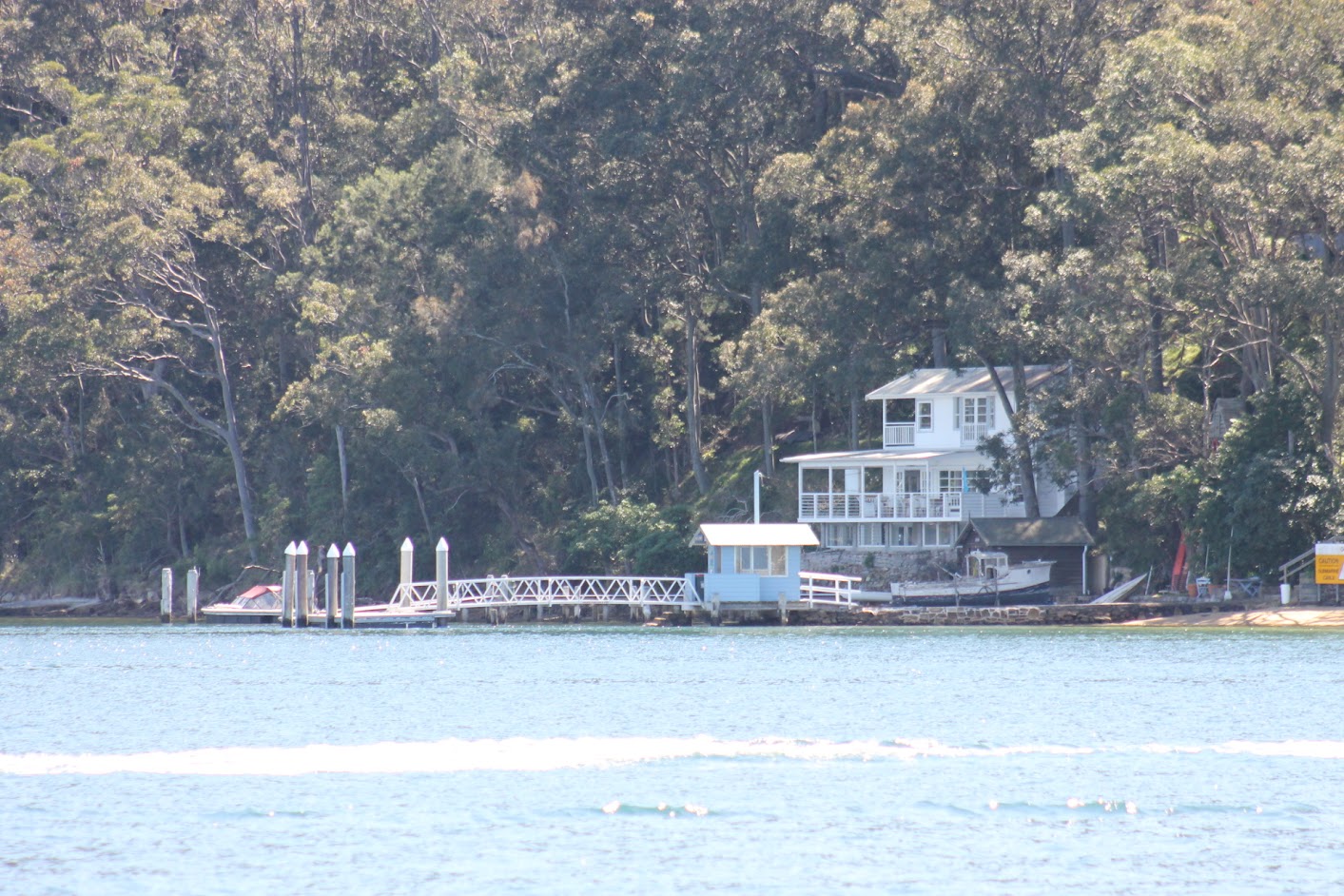
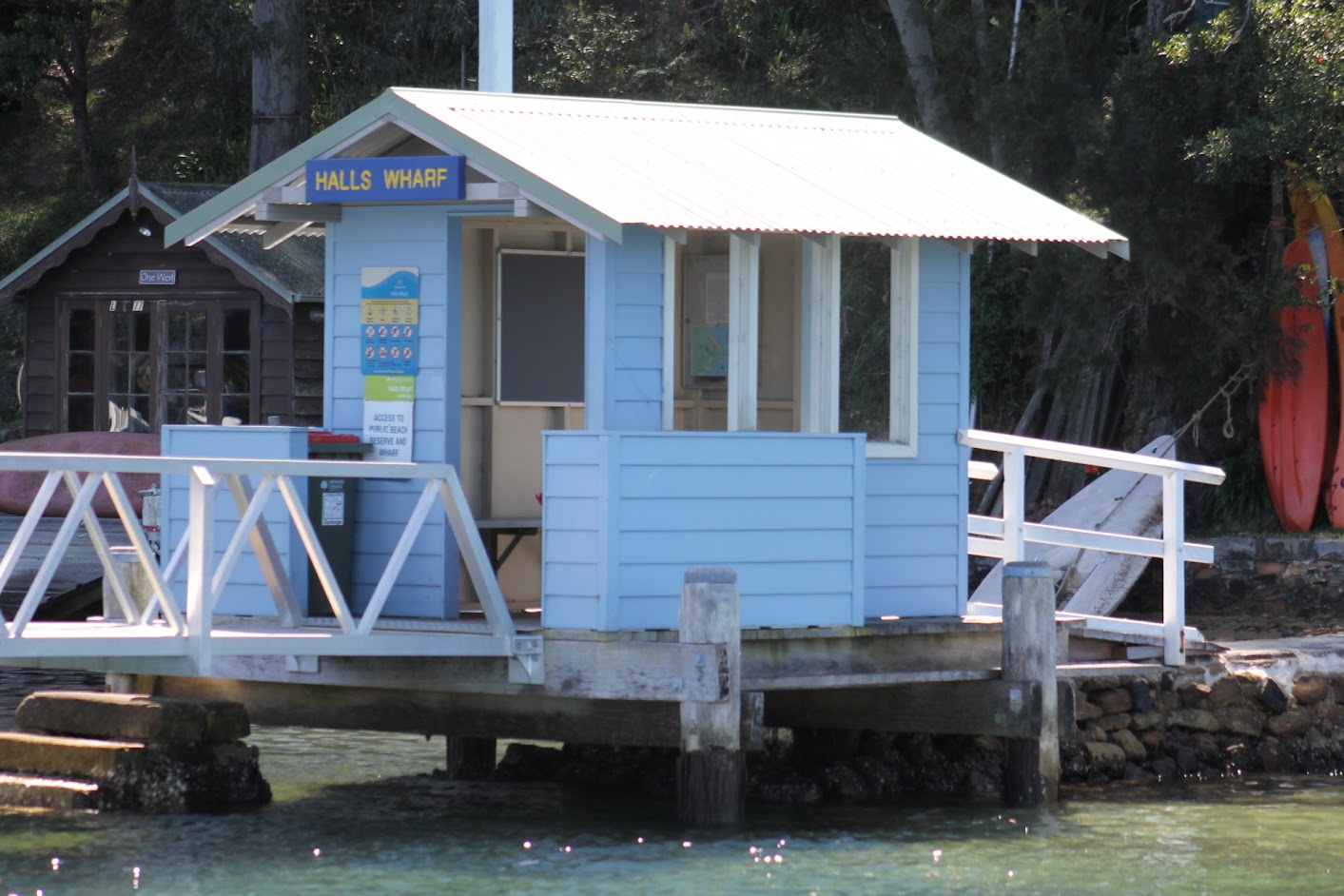
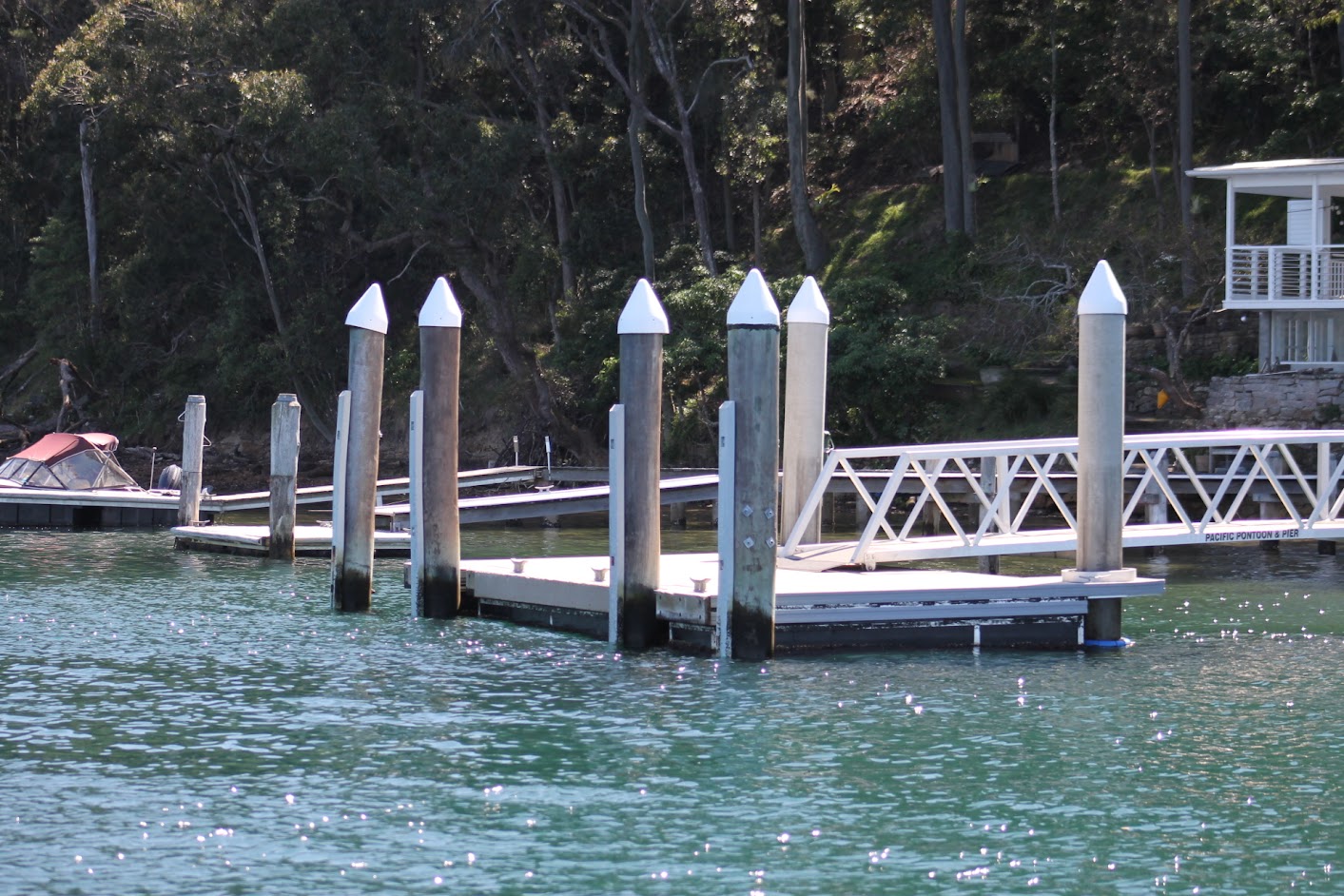
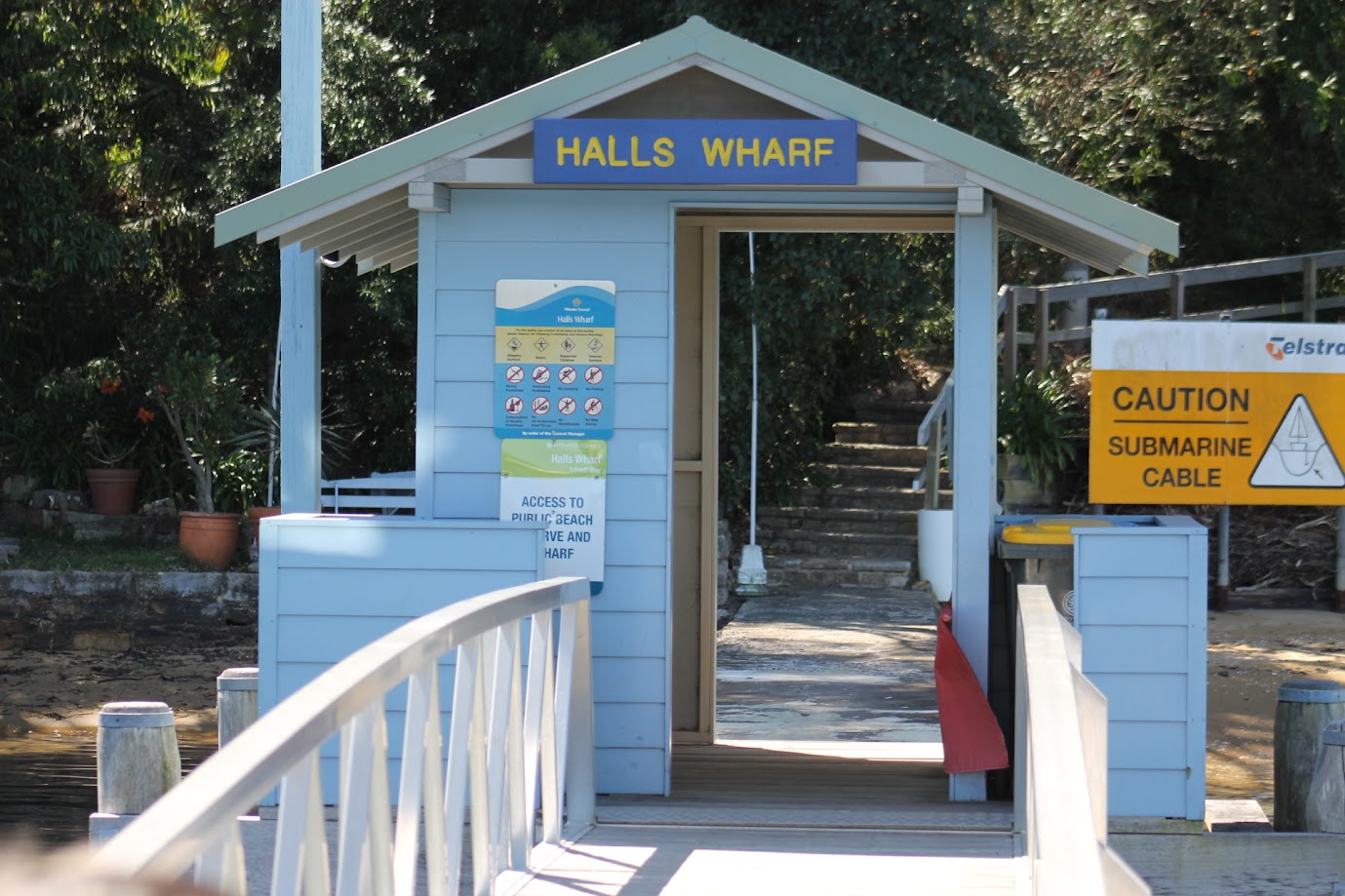
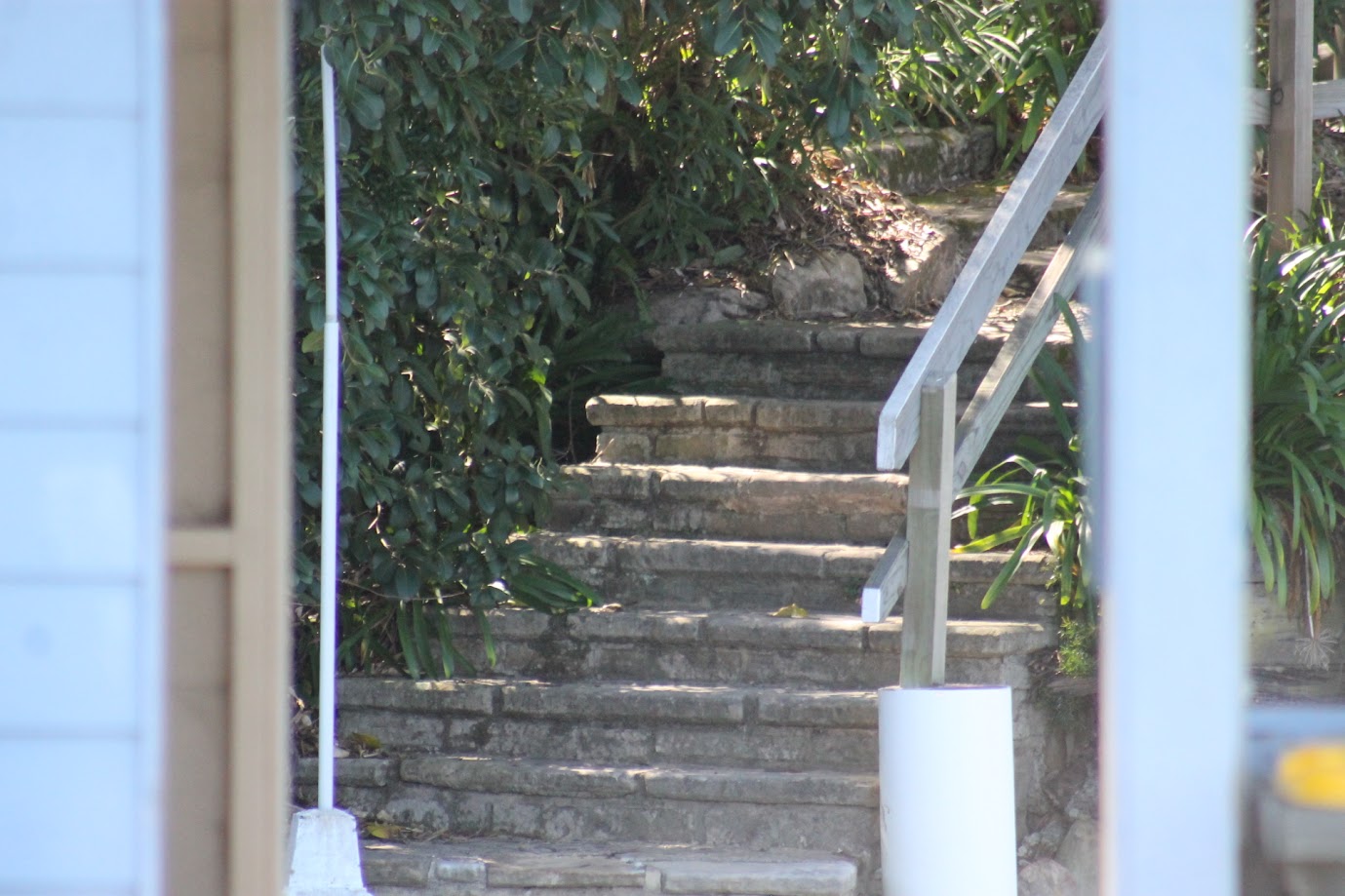
Portion 1 - Between Woods & Cario
While we're here, a few notes on that in-between acreage.
A jetty was built in for access in 1885, with the Special License applied for by the first land grantee and whom he sold the holding to, alongside Wood's holding..
Portion 1, of 50 acres, between Portion 17 and Mr. Woods to the north-east, is granted to Andrew Hardie McCulloch junior, and embracing Little Lovett Bay. Further north to this is Portion 13, of 40 acres. [50 acres in DP 3455, granted March 6, 1883, Vol-Fol: 639-130].
Andrew Hardie McCulloch Jnr. was serving in the NSW Parliament at this time and would leave Sydney due to inconsistencies in handling the money of others in his capacity as a lawyer.
He sells to Frederick Chave 'of Parramatta' and Percy Vernon McCulloch on May 31st 1884 [becomes Vol-Fol: 702-232 (Chave – both become Vol – Fol 905-21) and 702-233]. Percy McCulloch mortgages his share to William Henry Paling on January 8th 1886. Paling transfers this mortgage to Frederick Chave on October 4th 1888. Mr. Chave takes a mortgage with Louisa Little, who was also purchasing land at Clareville at this time.
Vol-Fol: 702-232:
.jpg?timestamp=1757542478507)
.jpg?timestamp=1757542643333)
.jpg?timestamp=1757542719956)
Vol – Fol 905-21:
.jpg?timestamp=1758401285101)
.jpg?timestamp=1758401327287)
.jpg?timestamp=1758401374684)
Frederick Chave
Frederick Chave was born June 16 1831 to John Voysey (1774-1838) and Ann (née Williams 1791-1853), at Windsor on the Hawkesbury. His mother was born in Sydney, his father came here in 1814 as a convict on the "General Hewitt" and was granted a Certificate of Freedom in May 1827. Ann was the only child of her parents although her mother had children via a previous marriage. Ann had also previously been married to a John Smith, who died in 1829. They had had 4 sons and 2 daughters before her first husband passed away, from 1810 to 1827.
Fredrick's brother George died at 6 months of age in 1833, making him the only child of his parents union, although he had step-siblings. In 1860 he marries Elizabeth Chapman at Maitland, NSW. The pair have several children, including: Frederick William Chave; Ernest Charles Chave; Elsie Florence Chave; Una Margaret Chave; Albert George Chave; Percy C. Chave; Ethel L. Chave; Alfred Edward Chave; Alice Edith Chave; Ada Chave; Emma Chave and Arthur Bede Chave.
Around May 1884 Frederick Chave settles at Pittwater. Formerly he had been a station owner at Neribone in the Bligh District, NSW and had acquired Dungaleer Station at Warren. For many years his family lived in the Baulkham Hills near Parramatta.
In 1884 the school in the chapel at Church Point became a Public School and Samuel Morrison was appointed as the school’s third teacher. Morrison cemented his place in the community by marrying local girl, Emma Chave, daughter of by then prominent landholder and orchardist, Frederick Chave.
Marriages. MORRISON—CHAVE.— May 13, at Carlton Villa, Pittwater, by Rev. B. T. Willis, Samuel Morrison, late Headmaster of Saunders-street School, Belfast, to Emma, eldest daughter of F. Chave. Family Notices (1887, May 20). The Daily Telegraph (Sydney, NSW : 1883 - 1930), p. 1. Retrieved from http://nla.gov.au/nla.news-article239806298
See: Church Point and Bayview: A Pittwater Public School Set on the Estuary - 1880 to 2016: Some History and Methodist Church at Church Point: The Chapel the Point is Named after - Some History and Church Point Public Wharf - 1885 to 2025: Some History and La Corniche, Bayview
In February 1885, Frederick Chave purchased the coastal vessel ‘Maid of Australia’ for £100. Joseph Cario of Lovett Bay (Portion 17), married to William Oliver’s daughter Eliza and living on the same side of the bay as Frederick Chave, makes frequent trips to Sydney in the ‘Maid of Australia’. He takes firewood, with staghorns and tree ferns as a sideline. On his return trip he carries supplies for the settlers living on his side of the bay. (Ref: Samuel Morrison, son-in-law of Frederick Chave)
The coaster Maid of Australia has been sold by Mr. G. Crestenoff to Mr. F. Chave, of Pittwater, for £100. IMPORTS.—FEBRUARY 14. (1885, February 17). The Sydney Morning Herald (NSW : 1842 - 1954), p. 6. Retrieved from http://nla.gov.au/nla.news-article28367085
The Royal Alfred paddle steamer has been purchased from the Port Jackson Steam Co, by Mr. Halstead for £1500, and the ketch, Maid of Australia, has been purchased by Mr. F. Chane, of Pittwater for £100. The Young Dick, steamer, has been purchased by Mr. F. Silva, of Watson’s Bay, from Mr. B. Wanning, for £1000. Along the wharves. (1885, February 17). Evening News(Sydney, NSW : 1869 - 1931), p. 4. Retrieved from http://nla.gov.au/nla.news-article111182893
Frederick Chave, developed three properties on points between Towlers and Lovett Bays with the names of "Carlton Villa", "Brighton Villa" and "Bleak House" named after his favourite book by Charles Dickens which had been published in 1853. Mr. Chave’s home is a 'Gentleman’s Villa' with seven rooms and a kitchen. One of the furnished houses is available as a country resort.
In February 1885, Messrs Chave and McCulloch apply to erect a boathouse, bathing house and jetty on piles 'on the north side of Lovett’s Bay' (Portion 1). The description of this first Little Lovett Bay Wharf is:
Department of Lands,
Sydney, 24th February, 1885.
APPLICATION TO ERECT A BOAT HOUSE, BATHINGS HOUSE, AND JETTY ON PILES.
NOTICE is hereby given that application has been made by the parties hereunder mentioned to erect a boat house, bathing house, and jetty on piles, in front of their property, particularized in the annexed description ; and all persons interested are invited to state, within one month from this date, their objections, if any, why such persons should not be permitted to erect the boat house, bathing house, and jetty on piles in question.
JAMES S. FARNELL.
Reg. No.
Ms. 85-1481 S.P. 1920 Applicant; Messrs. Chave & M'Culloch.
Description.
County of Cumberland, parish of Broken Bay, at Pittwater,—
Bathing house: Commencing on the high-water mark of Pittwater, at a point bearing south-westerly, and distant about 23 chains 50 links from the north-east corner of applicants' property and bounded thence on the north-west by a line bearing north-easterly 200 links; thence on the north-east by a line bearing south-easterly 100 links; thence on the south-east by a line parallel to the first mentioned boundary, bearing south-westerly to the aforesaid high-water mark; and thence on the south*west by that high-water mark north-westerly, to the point of commencement.
Boat shed and jetty: Commencing on the high-water mark of Pittwater, at the south-west corner of the proposed bathing house; and bounded thence on the north-west by the south-eastern boundary of that bathing house bearing north-easterly about 200 links; thence on the north-east by a line bearing south-easterly about 100 links; thence on the south-east by a line parallel to the first-mentioned boundary bearing south-westerly to the aforesaid high-water mark and thence on the south-west by that high-water mark north-westerly, to the point of commencement. APPLICATION TO ERECT A BOAT HOUSE, BATHINGS HOUSE, AND JETTY ON PILES. (1885, February 24). New South Wales Government Gazette (Sydney, NSW : 1832 - 1900), p. 1315. Retrieved from http://nla.gov.au/nla.news-article221625752
On 9 November 1886 Frederick Chave attends the distribution of prizes, a gathering and festivities, for the Public School, “when a most pleasant day is concluded with the usual loyal cheers, three hearty ones also being given in honour of the family of Mr Chave, of Pittwater, whose efforts mainly contribute to the successful carrying out of the day’s programme”. (SMH 12 Nov 1886 P.7)
In 1887 one of the Chave properties at Pittwater, opposite Scotland Island, is advertised for sale, having 700 Fruit Trees:
PITTWATER, opposite SCOTLAND ISLAND.
30 ACRES OF GOOD ARABLE LAND, portion planted with about 700 Fruit Trees, AT PITTWATER, with W.B. COTTAGE, containing 6 rooms and outhouses thereon. This property, which was formerly known as Chave's, is immediately opposite SCOTLAND ISLAND.
HARDIE and GORMAN have received instructions to sell by public auction, in the ROOMS, 133, PITT STREET, THIS DAY, 12th OCTOBER. the above-described ORCHARD PROPERTY at PITT-WATER, surrounded by the improved properties of Messrs. Willens, Wood, S. B. Bailey, Dr. Tibbitts, and others. The attention of the public generally is particularly directed to the Sale as offering great PROSPECTIVE ADVANTAGES, for besides the income to be derived from the cultivation of the land, the proposed RAILWAY to PITTWATER (the bill for which is now before Parliament) is surveyed close to the property, and must, If carried out, Immensely enhance the value. Advertising (1887, October 12). The Sydney Morning Herald (NSW : 1842 - 1954), , p. 15. Retrieved from http://nla.gov.au/nla.news-article13674341
At a concert taking place in the Public School on 16 June 1888, Miss Alice Chave, Miss Chave, Miss Elsie Chave, Master A. Chave and F. Chave, all attend and give valuable assistance. (SMH 19 June 1888 P.8)
In 1897 F. Chave is on the committee of the Bayview –Pittwater Association. (SMH 6 Nov 1897 P.7) Chave and his son-in-law, Samuel Morrison, attend the meetings together.
On 12 May 1898 Frederick Chave purchases about 16 acres of the mid section of the Weller Grant (Portion 43) near Church Point. Frederick Chave’s wife, Elizabeth, lives here for some years after her husband’s death and has an orchard upon the land. Her daughter lives nearby with her husband Samuel Morrison, occupying the premises of the Pittwater Public School at Bayview, and owning 'La Corniche' at Bayview until they sell this when the public school is moved to Mona Vale.
CHAVE. — August 3, at his residence, Pittwater, Frederick Chave, aged 66 years. Burial to-day, Thursday, 3 p.m., at Church Point. Family Notices. (1898, August 4). The Sydney Morning Herald(NSW : 1842 - 1954), p. 1. Retrieved fromhttp://nla.gov.au/nla.news-article14130030
A wedding took place at the residence of the bride's mother, Roseneath, Alt-street, Ashfield, on March 31, when Miss Ada A. Chave, daughter of the late Mr. F. Chave, Pittwater, was married to Mr. John Robertson, of Cowra, the ceremony being performed by the Rev. Mr. Eccleston, of Killara. The bride, who was given away by her brother, Mr. A. B. Chave, wore a grey silk embroidered voile. The bridesmaids were Miss Una M. Chave (sister) and Miss Ethel Morrison (niece ).
The bridegroom's present to the bride was a handsome gold bracelet, and to the bridesmaids a gold chain and pendant and gold brooch respectively. The bride and bride-groom subsequently left for the South Coast, Mrs. Robertson travelling in a dark blue cloth dress, trimmed with white kid, and a black hat. Many beautiful presents were received, including a purse of sovereigns and silver salver from friends in Cowra where the bride had recently been matron of the district hospital. SOCIAL. (1906, April 14). The Sydney Morning Herald (NSW : 1842 - 1954), p. 13. Retrieved from http://nla.gov.au/nla.news-article14765383
DEATH Of A PIONEER COWRA. Wednesday
Mrs. Elizabeth Chave has died at the age of 92. Her husband, the late. Mr Frederick Chave travelled by bullock dray from Parramatta to Warren where he acquired Dungaleer Station. Some years later he returned to Sydney and settled at Pittwater. At one time Mr Chave owned Kuring-gai Chase. Mrs. Chave is survived by ten children, 25 grandchildren, and ten great-grand-children. DEATH OF A PIONEER. (1934, August 2). The Sydney Morning Herald (NSW : 1842 - 1954), p. 10. Retrieved from http://nla.gov.au/nla.news-article17095056
When he died in 1898 Frederick Chave was buried in the little churchyard at Church Point. Other members of his family settled in Bayview.
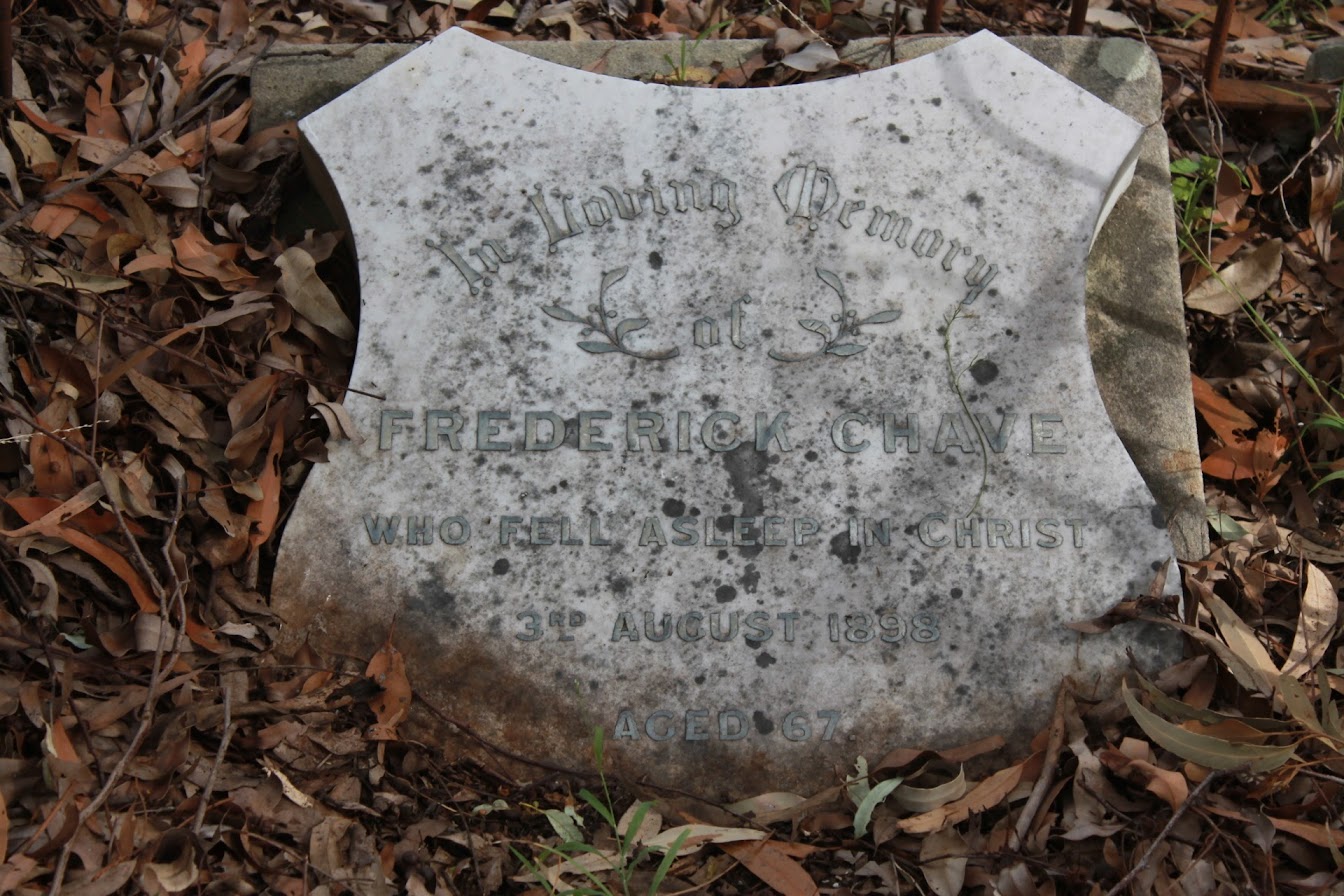
.jpg?timestamp=1547010620191)
Section from Plan of Bay View and Pittwater district Image No.: c053460078, circa 1900, courtesy State Library of NSW
''Near the north entrance to Lovett Bay, Mr. Chave had the finest orchard in the district. One shilling (10 cents) bought a bucket of grapes grown from a "dingle" or area of hollow ground between his house and the road. He also grew figs, lemons, oranges and olives.''
“Mr. Chave’s orchard is the finest in the district.” - Samuel Morrison
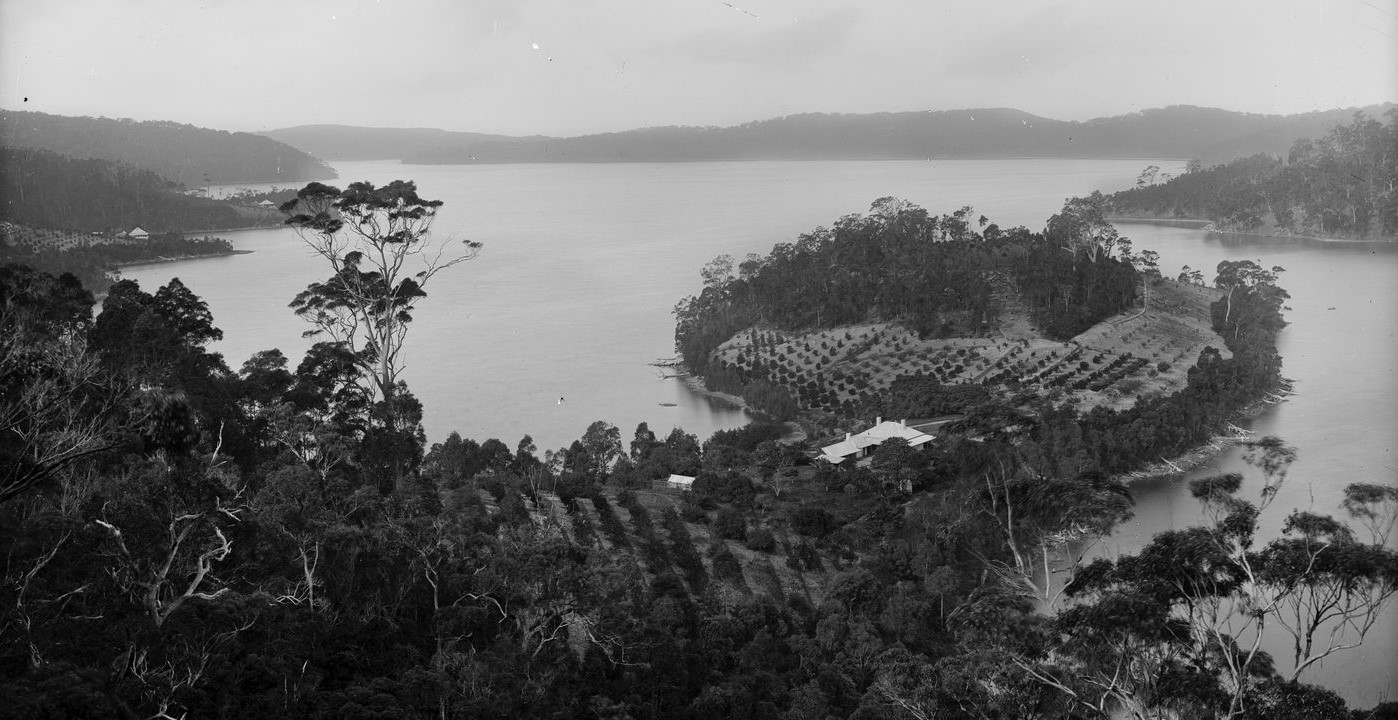
'At Pittwater' by Charles Kerry, circa 1887-1888. From Tyrell Collection, courtesy Powerhouse Museum - section from same image - is Rocky Point, Elvina Bay to left, Lovetts' Bay to right and Scotland Island
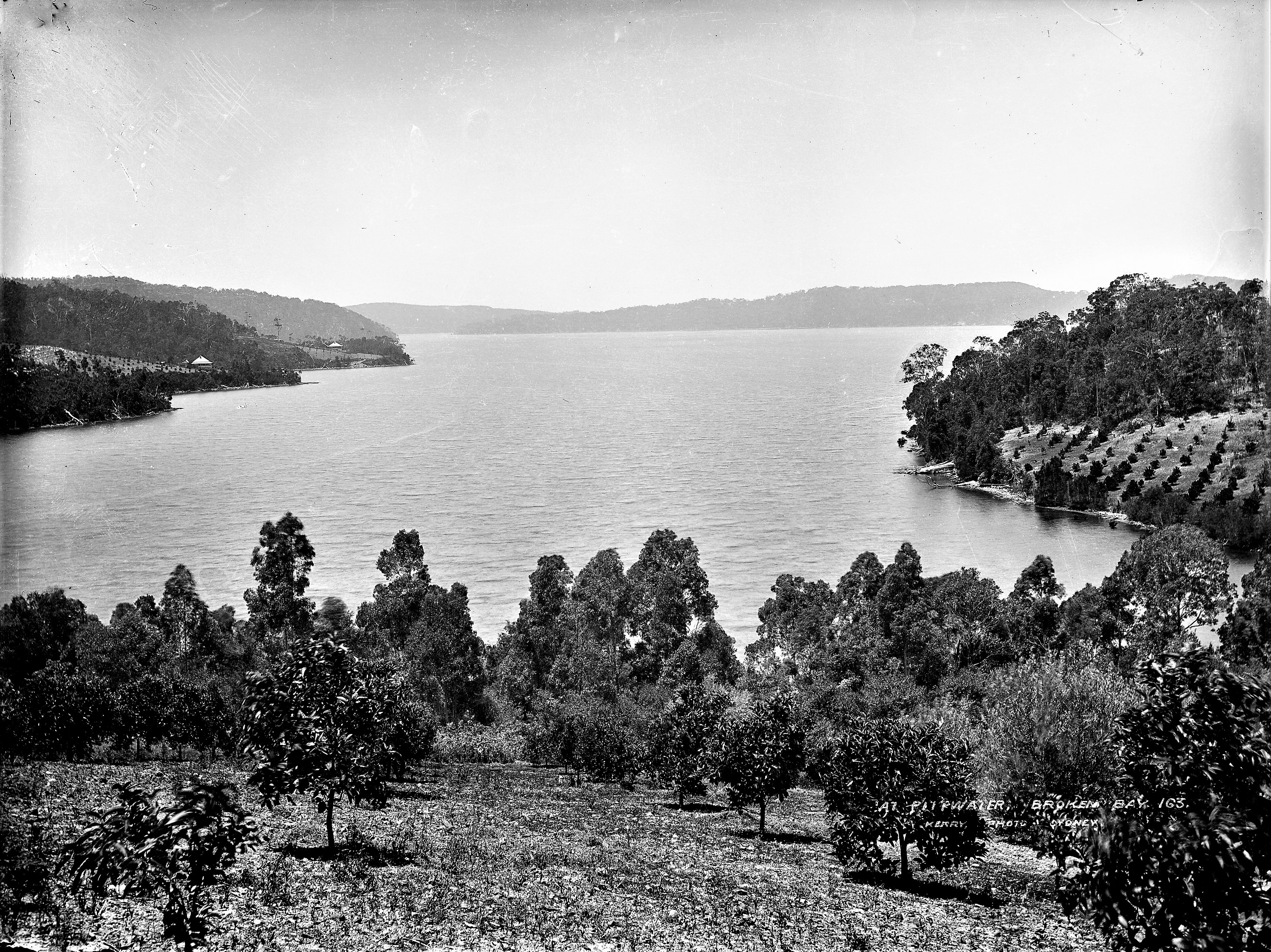

Lovett Bay circa 1883-1887, by Charles Kerry & Co. part of the Powerhouse Museum's Tyrrell collection, and section from to show homes/orchards around Towlers' Bay and section from to show homes/orchards around the Lovett to Towlers' Bay reaches at this time
Edward Charles Johnston (1850–1913) - Eulalic
Frederick Chave sells part to Edward Charles Johnston of Glebe, Gentleman, Vol-Fol: 1098-194, who buys the 5 acres alongside where today's Halls Public Wharf is on June 12 1893, registered in the LTO on June 24 1893. The property is name 'Eulalic' on the above map and the drawing shows a jetty protrudes from the land.
The meaning of Eulalia is "well-spoken" or "sweetly speaking," derived from the Greek words eu (well) and lalein (to speak). The name gained significance through Saint Eulalia of Mérida, a 4th-century Christian martyr, which helped popularise it in Christian Europe. It can also refer to a type of ornamental grass (Chinese silver grass) or a sound as soft as a lullaby.
One early article speaks about the tropical fruits on properties within this land. The property of Robert Robinson at Towlers' Bay was well-known for this and mentioned a few times, while Edward Johnston's was another fruit bearing 5 acres, and possibly yet another early 'weekender' or place for retreat.
On the Towler's Bay side there are several residents who pull across the water to the wharf at Church Point and meet the steamer from Sydney or the coach from Manly, as the case may be. The dynamite powder hulk is moored in Towler's Bay, with residences on shore for the officers in charge.
Mr. Robert Robinson has his residence of Raamah at the same place. Mr. Robinson informs me that he can grow to perfection such tropical fruits as bananas, guavas, ginger, mangoes, pineapples, Brazilian cherries, &c. This fact will demonstrate that there can be little or no frost in this locality.
Other residents of this side of the bay are Mr. F. Chave, Woodlands, who has a very nice orchard, mostly summer fruit ; Mr. E. C. Johnstone, who has a nice residence and orchard; Mr. A. Steffani is another prominent resident, while the residence of the firm of Flood and Oatley occupies a lovely peninsula in the quiet waters of the bay. Mr. Geo. Brown has a residence and an orchard in the neighborhood, and there is also a small church and cemetery at Church Point. Manly to Broken Bay. (1893, November 11). Australian Town and Country Journal (NSW : 1870 - 1907), p. 19. Retrieved from http://nla.gov.au/nla.news-article71191632
.jpg?timestamp=1757707129717)
.jpg?timestamp=1757707234316)
Fred Chave – the residue 45 acres becomes Vol-Fol: 1106-201:
.jpg?timestamp=1758404370464)
.jpg?timestamp=1758404407720)
He sells Lot 4 to William Alexander Lingham of Sydney, Importer (11 acres 2 rood - Vol-Fol: 1247-155) on May 5th 1898, who names his part 'Bilhilingia':
.jpg?timestamp=1758404225983)
.jpg?timestamp=1758404259128)
.jpg?timestamp=1758404321008)
 - Copy.jpg?timestamp=1758404154262)
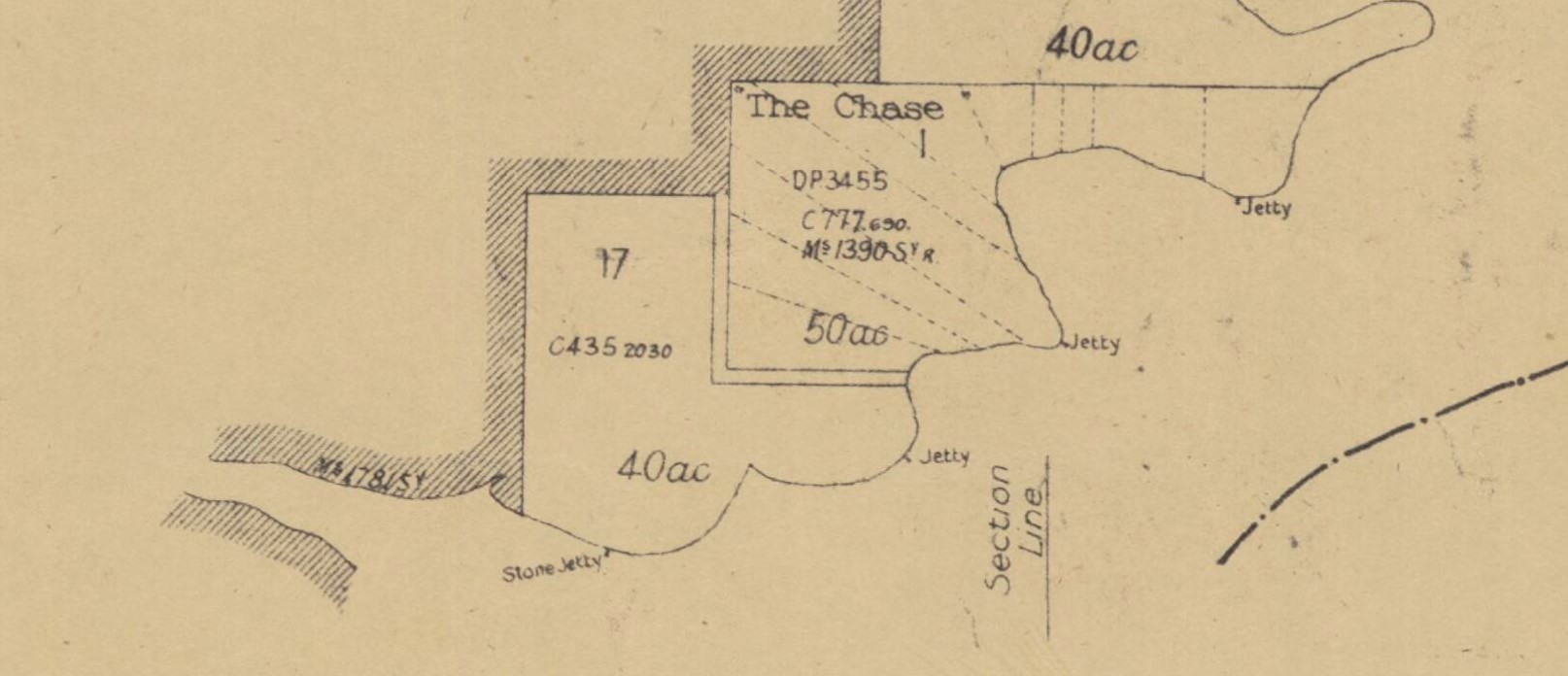
Section from New South Wales. Department of Lands. (1933). Parish of Narrabeen, County of Cumberland Metropolitan Land District, Warringah Shire, Eastern Division N.S.W Retrieved from http://nla.gov.au/nla.obj-233833265 shows position of stone jetty at north Lovett Bay – the jetty on the causeway at Little Lovett Bay and others at ‘The Chase’ subdivision of Lot 1 – McCulloch. Same appears I 1954 version of Lands Map; New South Wales. Department of Lands. (1954). Parish of Narrabeen, County of Cumberland Metropolitan Land District, Warringah Shire, Eastern Division N.S.W Retrieved from http://nla.gov.au/nla.obj-233833014
Lot 5 is sold to James Macintosh on February 21st 1898 (5 acres 0 roods 25 perches Vol-Fol 1247-246)
The Perpetual Trustee Company sells this 5 acres to Alfred Ernest Burton on February 11th 1915 (the Printer who became a Motor launch and Row Boat proprietor through the old Booth store at Church Point and ran the store/post office for around a year - preferred being in the boats). 'Alf' Burton sells to Herbert James Fitzpatrick on June 1st 1926 – becomes Vol-Fol 3875/117 and 118 with Ducker listed as co-owner in Vol-Fol 3875-117. They subdivide the 5 acres into lots and sell to individuals from 1927 to 1950; that last April 5th 1950 sale of Lots 1,2,3,4,5, and 16 to Robert Theodore Oswald Lammert, Builder, who lives at Church Point (Vol-Fol: 6192-48) is on Bona Crescent and on waterfront (Lot 16).
Around this time, the Minutes of WSC Meeting of 13th September. 1926
28. G. A. Robin. 27.8.26, submitting amended plan of H. J. Estate Fitzpatrick's subdivision near Lovett Bay (Burton's Block.) Resolved, - (Crs. Campbell, Hope) That the plan be approved, provided the Engineer is satisfied with the marking of the 41 Block drainage easements.
They subdivide the 5 acres into lots and sell to individuals from 1927 to 1950; that last April 5th 1950 sale of Lots 1,2,3,4,5, and 16 to Robert Theodore Oswald Lammert, Builder, who lives at Church Point (Vol-Fol: 6192-48) is on Bona Crescent and on waterfront (Lot 16).
He sells one Lot, Lot 1, to Perry Norman Robens of Balgowlah on May 3rd 1951 – Vol/Fol: 6465-53, and he discharges his mortgage on April 29th 1952.
The ‘Cumberland County Council’ takes Lots 2 to 65 inclusive on July 29th 1952 Vol-Fol: 6587-224 and then takes the residue on May 7th 1953 – Vol-Fol: 6713-230: being of 3roods 15 ½ perches and consisting of Lot 16 in Deposited Plan 14201, and Lots 3 and 4 in Deposited Plan 22826 -they sell Lots 3 and 4 back to Robert Oswald Theordoe Lammert on May 26 1964.
The Residue in 10108-206, retaining section of reserve with a lane 20 feet wide marked thereon.
ENVIRONMENTAL PLANNING AND ASSESSMENT ACT 1979
Notification Placing Land Under Care, Control and Management of the Council of the Shire of Warringah
THE Minister administering the Environmental Planning and Assessment Act 1979, pursuant to section 11 of that Act, by this notice places the land described in the Schedule hereto under the care, control and management of the Council of the Shire of Warringah for use as a public park, public reserve or public recreation area for active/passive recreational purposes: Provided that the Council:
(a) shall not erect or permit to be erected on the land any building or structure without the prior consent of the Minister; and
(b) shall demolish any existing improvements on the land at the earliest date hereafter.
Dated at Sydney, this 12th day of August, 1988.
E. SMITH, Acting Secretary,
Department of Planning.
Schedule
All that piece or parcel of land in the County of Cumberland, Parish of Broken Bay, Shire of Warringah, containing 0.077 8 ha or thereabouts, being lot 16, D.P. 14201, and being the whole of the land in Certificate of Title, volume 10108, folio 248. File No: 79/12246 (6114). ENVIRONMENTAL PLANNING AND ASSESSMENT ACT 1979 (1988, August 12). Government Gazette of the State of New South Wales (Sydney, NSW : 1901 - 2001), p. 4280. Retrieved from http://nla.gov.au/nla.news-article231383525
Vol-Fol: 6713-230:
.jpg?timestamp=1758584164795)
.jpg?timestamp=1758584317578)
.jpg?timestamp=1758584194213)
Mr Robens Lot 1 is taken/and or sold to the ‘Cumberland County Council’ on August 19, 1955 – and the ‘Council of the Shire of Warringah’ becomes the owner from September 25th 1958.
The residue gets sold by his mortgagee company Permanent Trustees, with Henry Hallorhan marking out the Lots on April 21st 1899 – Vol-Fol: 1280-181(4 acres 0 roods 18 perches) and 182 (Lots 6, 7, 8, 9; 8 acres 1 rood 27 perches and Lots 1, 2 and 3; 17 acres). Hallorhan transfers Lots 7 and 8 (3 acres) to Ernest Charles Chave on October 27 1904 – Vol-Fol: 1569-25
Hume Jones Chapman buys Lot 9 on November 13 1899 (Vol-Fol: 1303-96). William Graham Freeman buys Lot 6 on February 22 1904 (Vol-Fol: 1525-197). Lots 4 and 3 in Vol-Fol: 1531-39 an DP 3455
Herbert James Fitzpatrick’s ‘Elvina Lodge’ placed on the market in March 1953 – the May and November 1929 Sydney tele[phone directory lists; ‘Fitzpatrick H J Elvina Lodge Pittwater 24’ Telecom Australia & Telstra Corporation. November 1929. COUNTRY EXCHANGES, Sydney telephone directory Retrieved, from http://nla.gov.au/nla.obj-899422949
The description is:
REAL ESTATE AUCTION SALES
RICHARDSON & WRENCH LTD.
(Continued from previous Column)
Pittwater - Church Point
AN OUTSTANDING WATER-FRONT HOME "ELVINA LODGE," at LOVETTS BAY. with VAC. POSS. ATTRACTIVE MODERN BUNGALOW on the Headland, commanding PANORAMIC VIEWS over PITTWATER and within 10 minutes of mainland by launch. Wynyard Bus at Church Point.
IT has WIDE VERANDAH AT FRONT (enclosed one end Cooper Louvres). VERY SPACIOUS LOUNGE-DINING-ROOM (panelled walls, extensive observation windows, open fireplace). 2 DOUBLE BEDROOMS (built-in wardrobes), BATHROOM. COMPLETELY FITTED KITCHEN (refrigerator, oil and gas stoves, etc.). Laundry, Outside Hygela toilet, shower-rooms, etc Across the rear of the Bungalow Is a SPACIOUS LOUNGE VERANDAH (part enclosed). BARBECUE of Stone.
THE WHOLE PARTICULARLY WELL FURNISHED and In PERFECT ORDER throughout. (Inventory available for inspection.) 32-VOLT EL. LIGHT'PLANT. Ample Tank Water. THE LAND. 100ft x 300ft. has gentle slope, giving EASY ACCESS to JETTY, SWIMMING BATH and SANDY BEACH.
Inspection by appointment through Auctioneers. In Conj.: R. T. FORSYTH PTY. LTD., Willoughby. Advertising (1953, March 7). The Sydney Morning Herald (NSW : 1842 - 1954), p. 29. Retrieved from http://nla.gov.au/nla.news-article18360500
Lovett Bay is a Place of Peace - one of those slightly hidden away nooks we sneak off to when the Summer crowds have filled every beach and all the streets and we have resolved into 'swim where you like' mode, knowing the weather will cool, the crowds go home, and it will be just us and nature as stillness and quietness settles over the bays of the estuary, rolls over us much like the early morning Winer fogs roll down over the water from the park.
In fact, around here we have a decades old phrase only some get - to wit:
Love It - Lovett Baayy!.
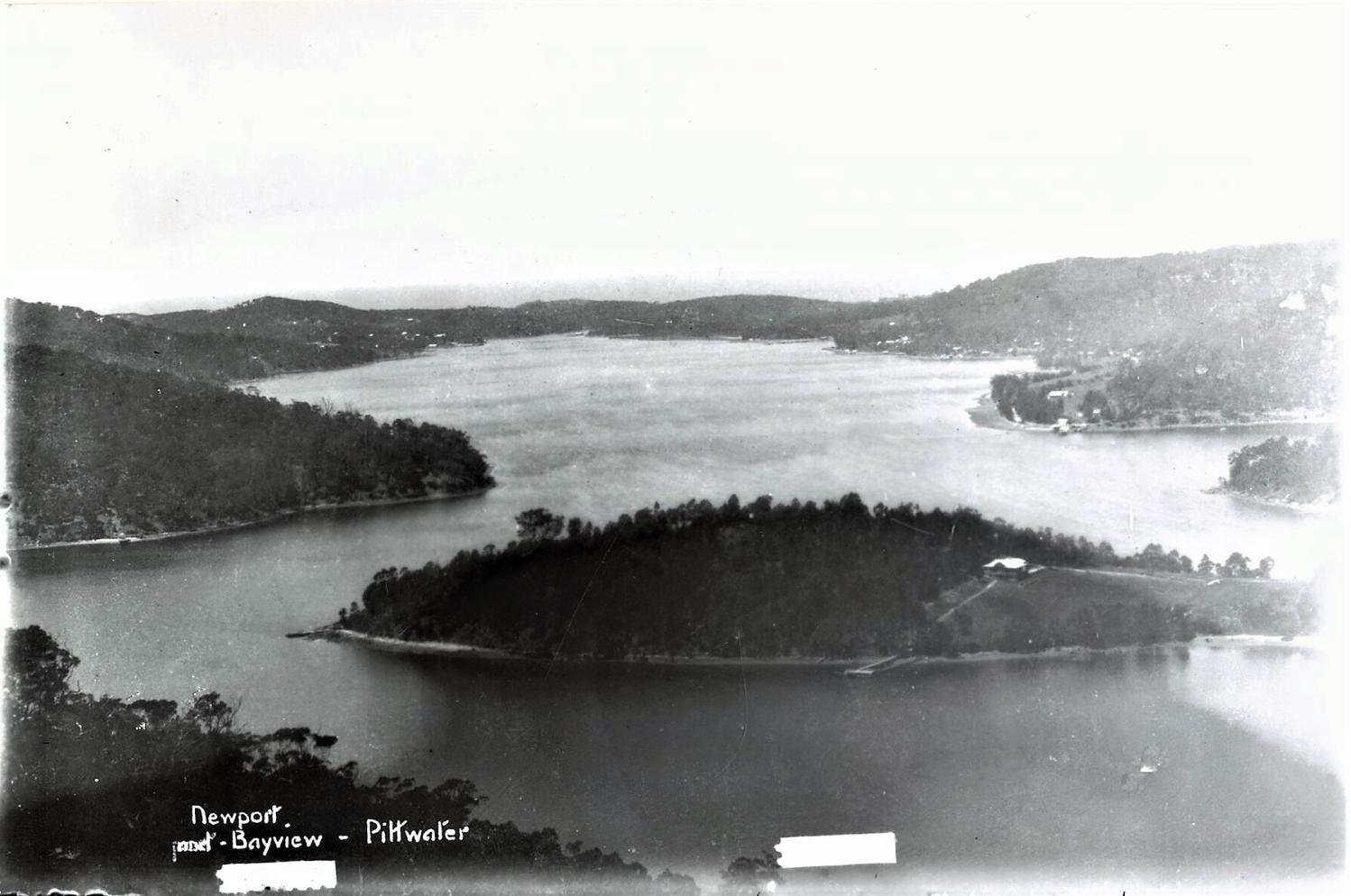

|
Edward Johnston Lovett Bay Research.pdf Size : 264.74 Kb Type : pdf |

|
Lovett Bay wharves and Causeway Research Notes.pdf Size : 898.753 Kb Type : pdf |
References - Extras
- Salt Pan Cove Public Wharf on Regatta Reserve + Florence Park + Salt Pan Reserve + Refuge Cove Reserve: Some History
- Dorothea Mackellar Of Lovett Bay - The Poet From Whom The Electorate Received Its Name
- John William Pilbean Goffage MBE ''Chips Rafferty'' of Lovett Bay: Victory in the Pacific Day 2021
- Prospector Powder Hulk at Towler’s Bay
- Pittwater's Tropical Fruits: From The Middle Of Winter
- Pittwater Summer Houses: Rocky Point And Elvina Bay Peninsula - A Place Of Holiday Songs and Operas In Ventnor, Fairhaven, Trincomalee and Maritana
- Pittwater's Lone Rangers - 120 Years of Ku-Ring-Gai Chase and the Men of Flowers Inspired by Eccleston Du Faur - 2014
- Pittwater’s Parallel Estuary: The Cowan ‘Creek’
- The Pittwater YHA: Some History - extra records added in September 2025
- The Cowan ‘Creek’ + Lovett Bay Heights Tracks: Some Notes From The Pages Of The Past With Early Photos
- The Elvina Bay-Lovett Bay Loop - Photos By Kevin Murray and Joe Mills, October 2020
- The Towlers Bay Loop + A Hike To Mount Murray Anderson photos By Kevin Murray and Joe Mills October 2020
- Walk on the Bairne Track in Ku-ring-gai Chase National Park July 18 2024, Photos by Kevin Murray and Joe Mills accompanied by Glenys Murray
- Tarrangaua Open House at Lovett Bay
- Church Point and Bayview: A Pittwater Public School Set on the Estuary - 1880 to 2016: Some History
- Methodist Church at Church Point: The Chapel the Point is Named after - Some History
- Church Point Public Wharf - 1885 to 2025: Some History
- La Corniche, Bayview
- Pittwater Roads II: Where the Streets Have Your Name - Church Point
- Pittwater Roads II: Where the Streets have Your Name - Bayview
- Pittwater Roads II: Where The Streets Have Your Name - Clareville
Pittwater wharves history series 2024-2025:
- Palm Beach Public Wharf: Some History
- Clareville Public Wharf: 1885 to 1935 - Some History
- Boulton's Jetty on 'Old Mangrove Bay' + Newport hotel jetty + Newport Public wharf: Some history
- Salt Pan Cove Public Wharf on Regatta Reserve + Florence Park + Salt Pan Reserve + Refuge Cove Reserve: Some History
- Bayview Public Wharf and Baths: Some History
- Brown's Bay Public Wharf, on McCarrs Creek, Church Point: Some History
- Church Point Public Wharf - 1885 to 2025: Some History
- Elvina Bay's Public Wharves: Some History
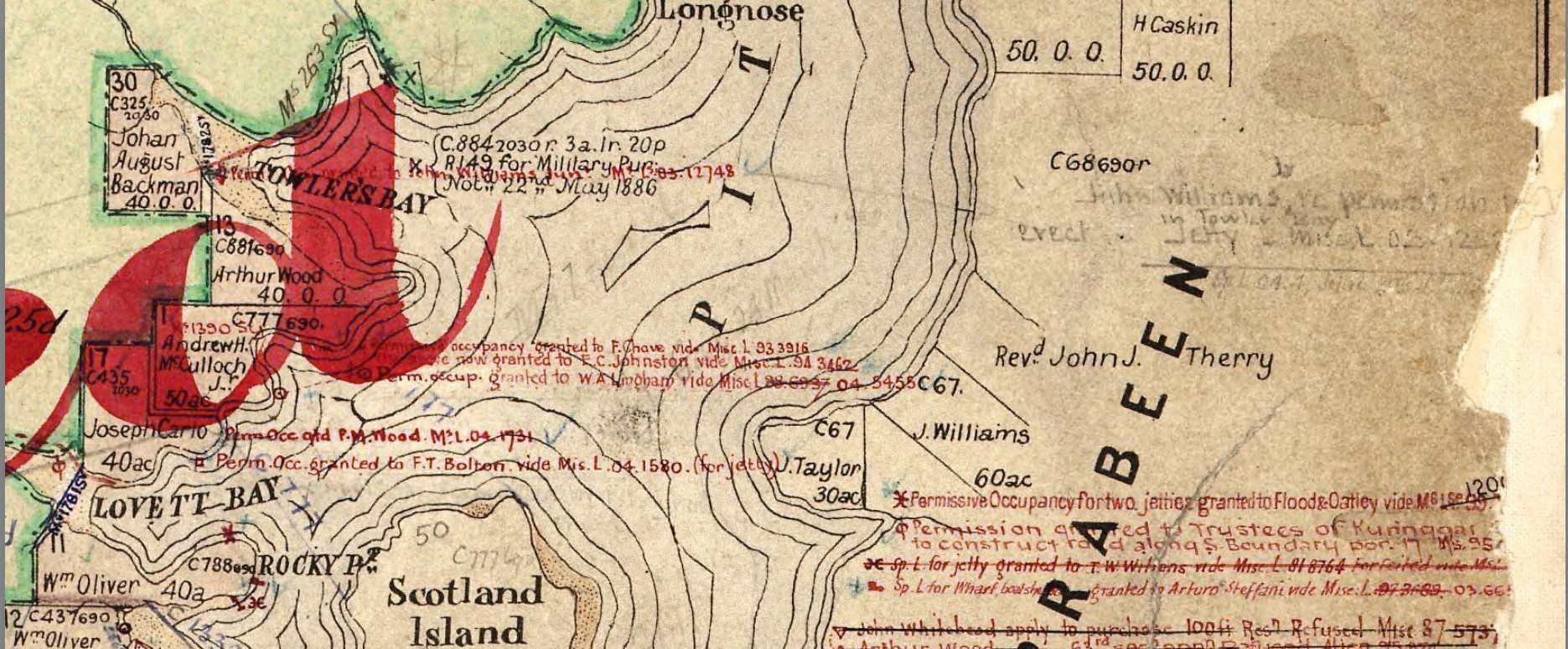
Section from Parish of Broken Bay map, dated 1895 - cancelled January 1923, courtesy HRLV/LTO
Sturdee Lane, Lovett Bay may refer to:
Admiral of the Fleet Sir Frederick Charles Doveton Sturdee, 1st Baronet, GCB, KCMG, CVO (9 June 1859 – 7 May 1925)
Lieutenant General Sir Vernon Ashton Hobart Sturdee KBE, CB, DSO (16 April 1890 – 25 May 1966), his nephew
Rear Admiral Arthur Rodney Barry Sturdee (1919–2009), cousin of the above
Lieutenant General Sir Vernon Ashton Hobart Sturdee, KBE, CB, DSO (16 April 1890 – 25 May 1966) was an Australian Army commander who served two terms as Chief of the General Staff. A regular officer of the Royal Australian Engineers who joined the Militia in 1908, he was one of the original Anzacs during the First World War, participating in the landing at Gallipoli on 25 April 1915. In the campaign that followed, he commanded the 5th Field Company, before going on to lead the 8th Field Company and the 4th Pioneer Battalion on the Western Front. In 1918 he was seconded to General Headquarters (GHQ) British Expeditionary Force as a staff officer. Vernon Ashton Hobart Sturdee was born in Frankston, Victoria, on 16 April 1890, the son of Alfred Hobart Sturdee and his wife Laura Isabell, née Merrett.
It is A H Sturdee who would seem most likely the Sturdee Lane of Lovett Bay, has been named for.
Alfred Hobart Sturdee CMG VD (1863 - 1939)
Born 6 May 1863 in Portsea, Hampshire, England, United Kingdom - Died 19 June 1939 at age 76 in Victoria, Australia
Alfred Hobart Sturdee, the son of Frederick Raney Sturdee RN (1815 - 06 Jan 1885) Deptford, Kent, England, and Anna Frances Hodson (06 Mar 1822 - abt 1889) Saint Helena, was a medical practitioner from England, who came from a prominent naval family and was the brother of Doveton Sturdee, who later became an admiral of the fleet. Alfred emigrated to Australia in the 1880s, travelling as a ship's doctor. He was the husband of Laura Isabel (Merrett) Sturdee — married 1889 in Victoria.
MARRIAGE.
STURDEE-MERRETT. — On the 16th ult. at Holy Trinity Church, Williamstown, by the Rev. Cannon Sergeant, AIfred Hobart Sturdee, M.R.C.S. Eng., of Yarraville, son of the late Captain Sturdee, R.N., of Southsea, Hants, to Laura Isabel (Lily) Merrett, only daughter of the late S. H. Merrett C.E. Public Works Department, Melbourne. Family Notices (1889, May 18). Independent (Footscray, Vic. : 1883 - 1922), p. 2. Retrieved from http://nla.gov.au/nla.news-article73240764
He served in the Boer War, where he rode under fire to a donga near the enemy's position to aid wounded men. He had served in the Boer War as part of the 4th Victorian Imperial Busmen, winning the Queens South Africa Medal with 3 clasps and the Kings South Africa Medal.
He was promoted Colonel and appointed Companion of the Order of St Michael & St George (CMG) and the Volunteer Officers' Decoration (VD).
OFFICERS OF THE AUSTRALIAN IMPERIAL REGIMENT.
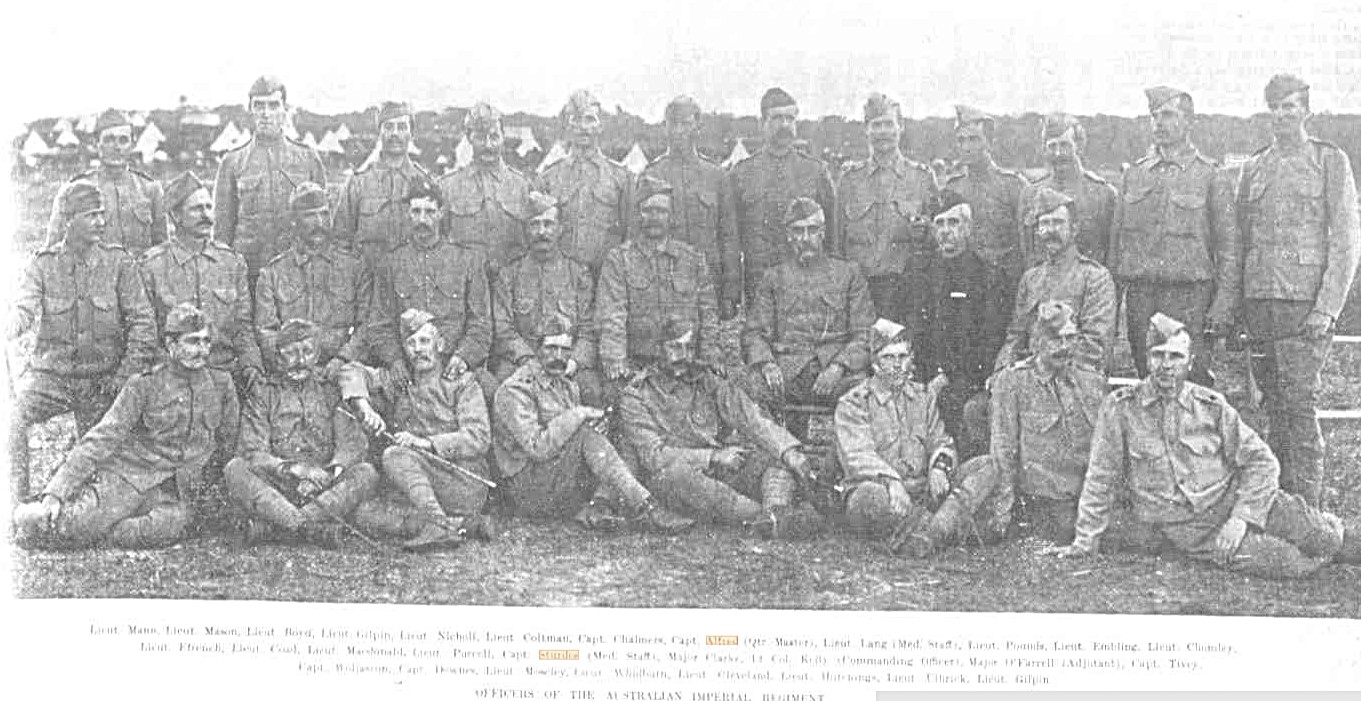
Lieut. Mann, Lieut. Mason, Lieut. Boyd, Lieut. Gilpin, Lieut. Nicholl, Lieut. Coltman, Capt. Chalmers, Capt. Alfred (Qtr.-Master), Lieut. Lang (Med. Staff), Lieut. Pounds, Lieut. Embling, Lieut. Chomley.
Lieut. Wrench, Lieut. Coad, Lieut. Macdonald, Lieut. Purcell, Capt. Sturdee (Med. Staff), Major Clarke, Lt.-Col. Kelly (Commanding Officer), Major O'Farrell (Adjutant), Capt. Tivey.
Capt. Wollaston, Capt. Downes, Lieut. Moseley, Lieut. Whidiiurn, Lieut. Cleveland, Lieut. Hutchings, Lieut. Ulbrick, Lieut. Gilnin. OFFICERS OF THE AUSTRALIAN IMPERIAL REGIMENT. (1900, April 28). The Australasian (Melbourne, Vic. : 1864 - 1946), p. 31. Retrieved from http://nla.gov.au/nla.news-article139778965
With his son Vernon, Sturdee served during the Gallipoli campaign before returning to Australia in 1917. Sturdee was Mentioned in Dispatches on three separate occasions. Alfred H. Sturdee later moved to McMillan Street, Elsternwick and died in 1939. He is buried in Cheltenham Pioneers Cemetery.
Obituary
COLONEL A. H. STURDEE
Colonel Alfred Hobart Sturdee, who was formerly principal medical officer of the Repatriation Department in Victoria, died yesterday morning, after a long illness, at his home in Gladstone street, Sandringham.
Colonel Sturdee, who was aged 76 years, was a brother of Admiral Sir Doveton Sturdee, the first baronet, who was com-mander of the British Fleet that smashed the German squadron at the battle of Falkland Islands in 1915. Born in Eng-land, he came to Australia in 1886. He served in the South African War and throughout the Great War with the Army Medical Corps. He was mentioned three times in despatches, and awarded the C.M.G. He retired from the military forces in 1930.
He leaves a widow, a son (Colonel V. A. H. Sturdee, D.S.O., who was invested on Friday with the Order of C.B.E.), and a daughter (Mrs. Weston).
The funeral was held yesterday at the Cheltenham Cemetery. The Rev. E. D. Fethers conducted the service, and arrangements were made by W. G. Apps and Sons Pty. Ltd. Obituary COLONEL A. H. STURDEE (1939, June 20). The Argus (Melbourne, Vic. : 1848 - 1957), p. 2. Retrieved from http://nla.gov.au/nla.news-article12140883
...The son of a captain in the Royal Navy, Col. Sturdee served in the South African War and in the Great War, when he was mentioned four times In dispatches.
In 1916 he was made a Companion of the Order of St. Michael and St. George.
Repatriation Work
ON his return from the war he became senior medical officer of the 3rd Military District. He was attached later to the Repatriation Commission, retiring in 1930.
Many medical men attended the funeral. The Repatriation Commission was represented by the Deputy Commissioner (Mr. J. C. McPhee) and Dr. Hugh Melville, senior medical officer in Victoria. Chief mourners were Col. Vernon Sturdee, son; Mr. F. G. Weston, son-in-law, and Sir Charles Merrett, brother-in-law.... COL. A. H. STURDEE DIES (1939, June 20). The Sun News-Pictorial (Melbourne, Vic. : 1922 - 1954; 1956), p. 9. Retrieved from http://nla.gov.au/nla.news-article278594066
His wife passed away a few years later:
LAURA ISABEL STURDEE late of No. 34 Gladstone Street Sandringham' Widow, deceased. After fourteen clear days EIRA HODSON WESTON Of 35 Victoria Street Sandringham. Married Woman and KENNETH STURDEE of 12 Irving Avenue Windsor. Accountant, two of the Executors appointed by decsaeed's Will , dated 4th September 1939 WILL APPLY to the Supreme Court for grant of probate of the said Will, leave being reserved to LIEUTENANT-GENERAL VERNON ASHTON HOBART STURDEE the other Executor therein named to come In and prove the same. "MADDOCK, LONIE AND CHISHOLM. Solicitors. 339 Collin Street Melbourne. Family Notices (1944, November 20). The Herald (Melbourne, Vic. : 1861 - 1954), p. 4. Retrieved from http://nla.gov.au/nla.news-article246009409
His daughter was christened 'Eira', and she married in 1926:
WESTON—STURDEE.—On the 3rd December, at St. Mary's Church Caulfield, by the Rev. Canon Langley, Francis Henry, elder son of the late Mr. and Mrs. Robert Weston, of Middlesborough, England, to Eira Hodson daughter of Colonel and Mrs. A. H. Sturdee, Tatiara, Elsternwick. Family Notices (1926, January 15). The Argus (Melbourne, Vic. : 1848 - 1957), p. 1. Retrieved from http://nla.gov.au/nla.news-article3729010
Sturdee’s son Vernon had an even more distinguished career. After the First World War Vernon Sturdee went on to become a Lieutenant-General, serving as Chief of General Staff for the Australian Army in 1940. Vernon Sturdee lived in St. Georges Road, North Fitzroy.
An association with Harley Hixson, who married Olive Agnes Flood, the youngest daughter of Joseph Washington Flood and his wife Florence (nee Suttor), and who served in the Naval Brigade, and the Boer War, would point to the Sturdee of Lovett Bay being named as a tribute to Alfred Hobart Sturdee. Although it would appear they knew each other or moved in the same social circles before Francis Hixson, and his sons in the Naval Brigade, were part of that conflict:
Ball at Government House:
THE GUESTS.
PRIVILEGED VISITORS.
Among those who on eyed the exclusive privilege of the entree were his Excellency the Admiral and Mrs Pearson, The Chief Justice and Lady Darley and also the Misses Darley, Captain Sturdee, R.N , Major-General and Mrs. French and the Misses French, Mr and Mrs. E U Wine, Mr. Justice Stephen Mr. Justice and Mrs A.H Simpson and Miss Stephenson. Mr Justice and Mrs. Walker, the hon. Dr. and Mrs Norton and Miss Norton, the Hon. Mr. and Mrs Gould and Miss Gould, the Hon. Dr. and Mrs. MacLaurin, the Hon. John and Mrs. Hughes and Miss Hitchens, the Hon. W. J. and Mrs Trickett and the Misses Trickett, the Hon. C. J. and Mrs. Roberts and the Misses Roberts, the Hon. J. N. and Mrs and Miss Brunker, the Hon. J. H. and Mrs Young and the Misses Young, the Hon. J. A. and Mrs. and Miss Husuc, Colonel and Mrs and the Misses Roberts, the Hon. F. W. and Mrs. Grubb) (Tasmania), Flag Captain and Mrs. Dickson, Mr. and Mrs. Edmund Barton, the Hon. T. M. and Mrs Matters and Miss Slattery, Captain Dunbar (H I G.M S Moewe), Mr Critchett Walker, C M.G. (Principal Under-Secretary Lieutenant -Colonel and Mrs, and Miss Airey, Colonel Sydenham Smith, R.A , the Vice-Consul for Germany, Flag-Lieutenant Stewart, R N.
GENERAL VISITORS
Sir Wyndham Anstruther Hart, Mr and Mrs J Alison Mr Mrs and Miss Archer Mr. and Mrs. Ardcu.Mr Mt and Miss Anderson Major Airey Colonel Mrs and the Misses Airey and Miss Tully Mr and Mrs 1 cities Arcus Mr and Mrs. Duncan Anderson Mr and Mrs James Allen, Major and Mrs Endres Mr, Mrs and Miss Burdekin Colonel ... Mr Harley Hixson .... THE GUESTS. (1899, September 15). The Sydney Morning Herald (NSW : 1842 - 1954), p. 6. Retrieved rom http://nla.gov.au/nla.news-article14228528
Harley Hixson:
Harley Hixson (sometimes spelled incorrectly in following articles as 'Hickson') was the youngest son of Captain Francis Hixson - the gentleman responsible for getting a light on the Barrenjoey Headland. His first known visit to Pittwater would have been when the First Naval Exercises took part here in 1885 aboard the Wolverene.
See: First Naval Exercises by New South Wales Colonial Ships – The Wolverene at Broken Bay
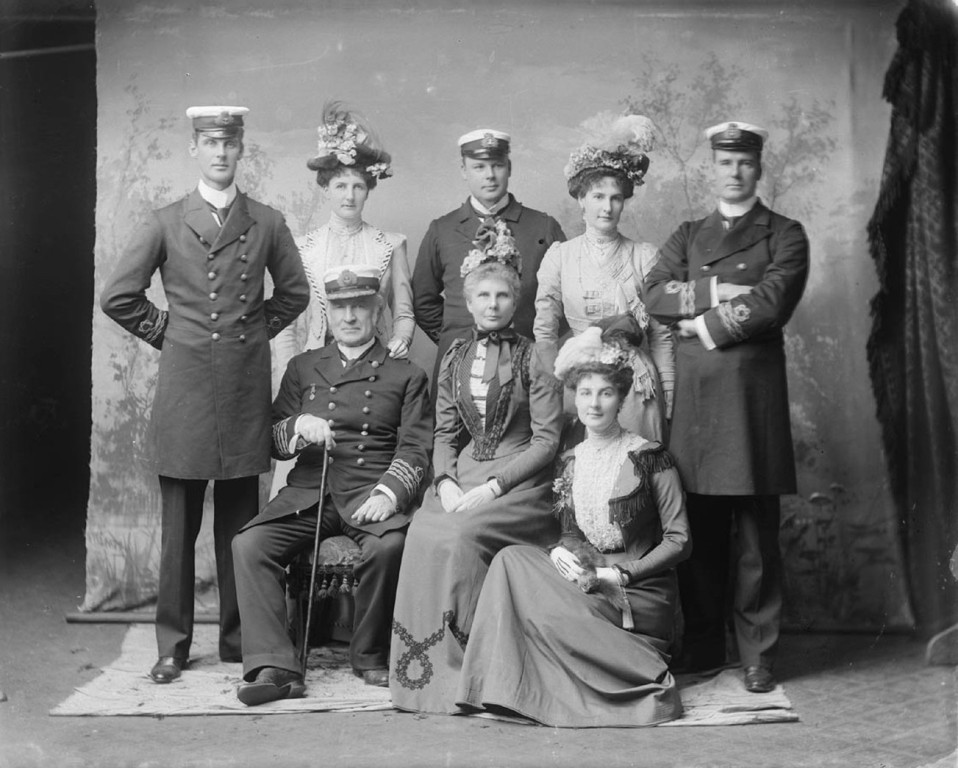
Taken just prior to leaving for Singapore - Boxer Uprising 1900 (Some sources indicate another son, Edward, was serving with the Queensland Naval Contingent, and this is why is is not present in this family photograph.) Back Row, Left to right - (Back): Harley, Annie, Herbert, Mabel Francis William. Front Row; Francis (Snr.), Sarah, Florence.
Harley and Olive married in the Spring of 1900:
HIXSON—FLOOD.—November 28, 1900, at the Church of St. Mark, Darling Point, by the Rev. G. North Ash, M.A., chaplain Mounted Brigade, N.S.W., assisted by the Rev. Willoughby Flower,. M.A., rector, Harley Lord, youngest son of Captain Francis Hixson, R.N., Officer Commanding Naval Forces N. S. Wales, to Olive Agnes, youngest daughter of the late J. W. Flood, of Sydney. Family Notices. (1900, December 8). The Sydney Morning Herald (NSW : 1842 - 1954), p. 1. Retrieved from http://nla.gov.au/nla.news-article14348659
.jpg?timestamp=1760032273760)
Above: from Album 50 Allen album 1909 - Caption reads; 'Sunday, 15th of August 1909' After Lunch (at La Corniche Bayview) Monty Walker took Mr & Mrs De LaSalle, Jarvis Alison and myself to Church Point & from there to Ventnor where Mr & Mrs Harley Hickson used to live.' Image No.: a3286021h, courtesy State Library
BOUDOIR CONFIDENCES. (By "PORTIA.")
SYDNEY, Saturday.
The wedding of Miss Olive Flood and Mr. Harley Lord Hixson was a very fashionable affair. Miss Flood is the youngest daughter of Mr. J. W. Flood, of Ocean-street, Woollahra, one of our "old families," and Mr. Hixson is a son of Captain Hixson, who commanded the New South Wales Naval Contingent as far as Hongkong.
The wedding came off at St. Mark's, Darling Point, which is quite the most swellish church for the purpose in the colony, and which on this occasion was profusely decorated with lilies and hyacinths, the altar being smothered in these flowers. The bride was given away by her brother-in-law, and was charmingly attired in rich ivory satin, flounced with lovely point lace, the shoulders supporting a court train of brocade. She also wore a coronet of orange blossoms, and carried a magnificent bouquet.
The bridesmaids were Misses Ethel Mackenzie, Florence Hixson, Kathleen French, and Irene Marks, and all were attired in white Swiss muslin, trimmed with lace. The after ceremony took place at Mrs. Flood's residence, when guests were entertained to the number of two hundred. The Naval Brigade Band played on the lawn, by permission of the bridegroom's father. BOUDOIR CONFIDENCES. (1900, December 3). Newcastle Morning Herald and Miners' Advocate (NSW : 1876 - 1954), p. 3. Retrieved from http://nla.gov.au/nla.news-article136236404
It is worth remembering that sisters of Harley married Fairfax sons, some of whom had residences at Woollahra, where the Oatleys lived. A read through of the surnames of those who attended her sister Florence's wedding in 1897 is also like a long list of the next generation of early settlers, their children and grandchildren.
Harley Hixson came off the ships to do what he had been trained to do prior to his marriage:
NOTICE OF PARTNERSHIP.
I beg to announce that I have this day admitted Mr. HARLEY LORD HIXSON as a PARTNER in my business of Stock and Share Broker. In future the business will be carried on at the same address under the name and style of PARTRIDGE and HIXSON. May 1,1894. G. H. PARTRIDGE. 112 Pitt-street. Advertising (1894, May 1). The Sydney Morning Herald (NSW : 1842 - 1954), p. 2. Retrieved from http://nla.gov.au/nla.news-article28259512
The couple had a daughter, who came home with them from London in late 1901:
HIXSON — September 9, at 'Frogpool', Chislehurst, England the wife of Harley Lord Hixson, of a daughter. Family Notices (1901, September 12). The Sydney Morning Herald (NSW : 1842 - 1954), p. 1. Retrieved from http://nla.gov.au/nla.news-article14409248
The following are passengers by the R.M.S. Ormnz. from London, via ports:— For Sydney. Brisbane, and New Zealand: Mr. A. H. Nicholson and valet. Mrs. Hendy. Mrs. Hannay. Mrs. Deffei. Mr. and Mrs. Vivian and 2 children. Miss Cox. Mr. and Mrs. Harley Hickson, infant, and nurse. …. MARITIME MISCELLANY. (1901, December 30). Evening News (Sydney, NSW : 1869 - 1931), p. 2. Retrieved from http://nla.gov.au/nla.news-article112576331
This shows the couple were regular visitors to where the Suttors had their old home and lands, as well as listing yet more old names of old Sydney Town including Oswald Watt of Bilgola.
The Bong Bong Races.
The annual Bong Bong Picnic Races took place on January 19 and 20, and though the traces of the recent bush fires wore visible,/ the permanent buildings had fortunately escaped injury On the first day the president of the club, the Hon. H. E. Kater, entertained His Excellency the Governor and a number of other guests to luncheon In a large marquee, the tables being decorated with yellow flowers and ribbons.
A number of pretty summer toilettes were worn by the visitors. Mrs. Harrison Smith wife of the Governor's private secretary, wore cream muslin with touches of cerise, and a hareen suite; Mrs. Oswald Watt, pale green taffeta voile, and a green mushroom hat; Miss Nan Dangar, pale heliotrope muslin; Mrs. Conset Stephen, pale pink blouse, white skirt, am black feathered hat; Mrs. Harley Hickson amethyst muslin, and hat to match; Mrs. Herbert Marks, white muslin and violet hat; Mrs Chris Bennett, a pale heliotrope muslin, ant black hat; the Misses Blomfield wore dark blue and white muslin respectively; Mrs. Donkin, grey and white floral muslin; Mrs. Rothe, a white costume; Mrs. Murray Campbell, pale blue and white voile, a black and cream hat; Mrs. W. Manning, white linen costume, straw hat with pink roses; Mrs. P. S. Mitchell, white linen costume, and mushroom hat; Miss E. Morse, white costume with green and white hat; Miss Von Arnheim, a crash dress and white hat; Mrs. P. M. Osborne, white linen dress and blue hat, etc.
There were also present Mr. Wyatt Rawson, Mr. Harrison Smith, Captain Wilson, Mr. Frank Throsby (vice-president), Mr. Chris Bennett (vice-president), Mr. T. A. P. M'Carthy (secretary), Dr. Ewan Frazer, Mr. and Mrs. Broadhurst Hill, Mr. and Mrs. Hope Osborne, Mr. Consett Stephen, Mr. and Mrs. Roy Green, Captain Dorien Smith, Mrs. E. Jenkins, Mrs. Holdship, Mr. and Mrs. H. Fairfax, Mr. Keigwin, Mr. H. Osborne, Dr. Stevenson, Mrs. Simpson, Mr. G. Martin, Mr. Gardiner, Mr. M'Court, Mr. M. Walker, Mr. Pat Osborne, Mr. Harley Hixson, Mr. O. Watt. Mr. P. Badgery, Mr. J. Lamb, Mr. M. Campbell, Mr. Westmacott, Mr. De Lauret, Mr. J. Alison, Mr. P. S. Mitchell, Mr. Leonard, Mr. D. L. Watt, and others. The Bong Bong Races. (1905, January 25). Australian Town and Country Journal (Sydney, NSW : 1870 - 1907), p. 43. Retrieved from http://nla.gov.au/nla.news-article71498112
These kinds of events, far from Pittwater, are where the conversations and the visits to here that resulted, that aren't recorded anywhere but in family diaries and photo albums, took place. The Allen family were also regular visitors to Oswald Watt's 'Bilgola House', even taking yet another famous Australian songstress there for 'lunch' on Wednesday 23rd of September, 1914 - Dame Nellie Melba.
Harley passed away when only 40 years old (born January 9th, 1868) - he had been suffering from ill health:
Death of Mr. H. L. Hixson.
Quite a gloom was cast over the district on Saturday morning last when it became known that Mr. Harley L. Hixson, the youngest son of Captain Francis Hixson, R.N., had peacefully passed away at his late residence, "Hawthorn," Moss Vale, on Friday night last. Mr. Hixson was a member of the Sydney Stock Exchange, and until recently an alderman of Moss Vale. He was amongst the first members of the Moss Vale Golf Club and held the position of treasurer at one time, and filled a similar position in connection with the Bong Bong Picnic Race Club. For many years he was an officer in the Naval Brigade, in which body he took a keen interest, and retired with the rank of commander. His death is much regretted, as he was well known and highly respected, and always took an active interest, so far as his health allowed, in all local matters.
The remains were interred in the Bong Bong Cemetery on Sunday afternoon, the Rev. Joseph Best, rector of Moss Vale, officiating. A large number of representative men attended as a mark of respect and by special request the departed one's favourite hymn, Lead, Kindly Light,' was sung during the service. The chief mourners were Messrs. F. W. and H. O. N. Hixson (brothers), Messrs. G. E. and J. O. Fairfax (brothers-in-law). Amongst others present were - Mr. S. . F. Osborne, Dr. F. C. Stevenson; Mr. O. Z. Throsby, Mr. Chris. Bennett, Mr. E. E. Row, Colonel Taunton, Colonel G. R. Campbell, Mr. H. W. Fairfax, Mr. Gavin George, Mr. T. A. F. McCarthy, Mr. F. J. Lytton Hitchins, Mr. F. H. Throsby, Mr. A. H. Garraway, Mr. J. R. Scroggie, Rev. W. Fisher, Mr. E. H. Badgery, Mr. I. S. Ponder, Mr. A. G. Miller, Mr. W. Jones, Mr, W. McKenzie, Mr. F. E Bassingthwaiglite, Mr. J. W. Cunningham. Many beautiful wreaths were sent, including one from his Excellency the Governor and Miss Rawson. Death of Mr. H. L. Hixson. (1908, November 18). The Scrutineer and Berrima District Press (NSW : 1892 - 1948), p. 2. Retrieved from http://nla.gov.au/nla.news-article124097532
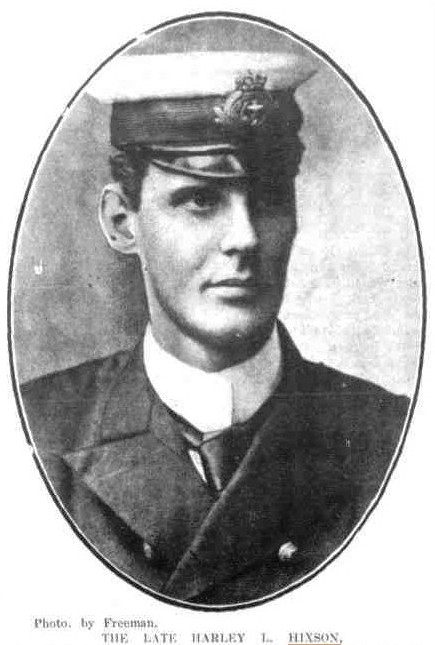
Death of Capt. Hixson R.N.
Captain Francis Hixson, late R.N., died-at his residence, Wordsley, Double Bay, on Tuesday morning. In November last one of his sons (Mr. Harley Hixson) died, and the Captain never quite recovered from the shock of that bereavement.
He is survived by three daughters, Mrs G. E Fairfax, Mrs. J. O. Fairfax, and Mrs, M'Cay (wife of Dr. M'Cay, of Calcutta) and three sons, Messrs. F. W. E. M., and H. O. N. Hixson.
Captain Hixson belonged to the type, of British sailor which has made the Empire famous. He was born at Swanage, Dorsetshire, in 1833. As a youngster he joined the navy, and soon gave indication of more than ordinary ability.
Captain Hixson was awarded the Royal Humane Society's silver medal, in 1858 for his plucky rescue, ate an-. A B. who fell overboard in Shark Bay, Western Australia. The danger of sharks was a commonplace, but the captain, who was then acting as second master on the Herald, jumped overboard, and supported the drowning man till a boat arrived.
Captain Hixson left the Imperial Navy in 1863 to take up the appointment of Superintendent of Pilots and Lighthouses for New South Wales. It was Captain. Hixson's connection with the New South Wales Naval Brigade that brought him most, prominently before the public. He was its father, and watched it grow from infancy till it attained a high state of efficiency.
The Naval Brigade |was enrolled in 1863, shortly after Captain Hixson relinquished his connection with the navy.
He was sworn in as its first officer, and the Government of the day appointed him to the command.
With Lady Hoskins, Captain Hixson organised the Royal Naval House, and was a member of the committee of that institution. He was the chairman of the board of the Sydney Sailors Home, a position be held, for over 40 years, and it is largely owing to his exertions that the institution has been such a financial success, whilst being a home for shipwrecked sailors.
He also was one of the originators of the Royal Shipwreck Relief and Humane Society of New South Wales, and for some years held the position of president.
The remains were interred in St. Thomas burial ground, North Sydney, on Wednesday, and the funeral procession was largely of a naval and military character. Death of Capt. Hixson, R.N. (1909, March 6). The Scrutineer and Berrima District Press (NSW : 1892 - 1948), p. 4. Retrieved from http://nla.gov.au/nla.news-article128660441
Many old friends of the Eaton family in Wagga and the surrounding district will read with interest the account of the marriage in London of Hugh Seymour Eaton, only son of the late Horace Eaton, a grandson of the late Mr. Henry Eaton and of Sir Hugh Dixson, of Abergeldie, Summer Hill, Sydney. When Mrs. Eaton was in Sydney visiting relatives she was accompanied by her son; who possessed a very charming personality and made friends wherever he – went. The pretty bride of the wedding, which was solemnised by the Rev. Prebendary Gough of the Holy Trinity Church, Brompton, London, was also -Australian-born and both parents claimed Sydney as their birthplace. Mrs. H. Eaton was Miss Colleen Harley Hickson, only daughter of the late Mr. Harley Hickson (a brother of Mesdames G. and J. O. Fairfax), her mother being a Miss Flood, a member the Suttor family, Bathurst. The bride, who looked very dainty in her bridal robes of white, and silver tissue and rare old lace, was given away by her step-grandfather, Colonel Philip Whiston, and was attended by Miss Isabel Maclagan (another Australian) daughter of Major-General and Mrs. Maclagan, and granddaughter of the late Major General French. It is like a glimpse of Sydney twenty years ago; to meet so many of one's girlhood friends; remarked one of the guests at the reception, held at the Hans Crescent Hotel by Colonel, and Mrs. Percy Owen (aunt of the bride). Many handsome presents, as well as cables, were received from Australian friends at home and abroad by the young couple, who spent their honeymoon in Scotland. SOCIAL GOSSIP. (1924, December 27). Daily Advertiser (Wagga Wagga, NSW : 1911 - 1954), p. 1. Retrieved from http://nla.gov.au/nla.news-article143338936
A few more from Album 50 Allen album of 'Sunday, 15th of August 1909', on the Rocky Point- Lovett Bay-Elvina Bay pennsula and at Bayview (where they'd stopped for lunch at then named 'La Corniche' - first one at Bayview):
.jpg?timestamp=1760034327672)
.jpg?timestamp=1760034377455)
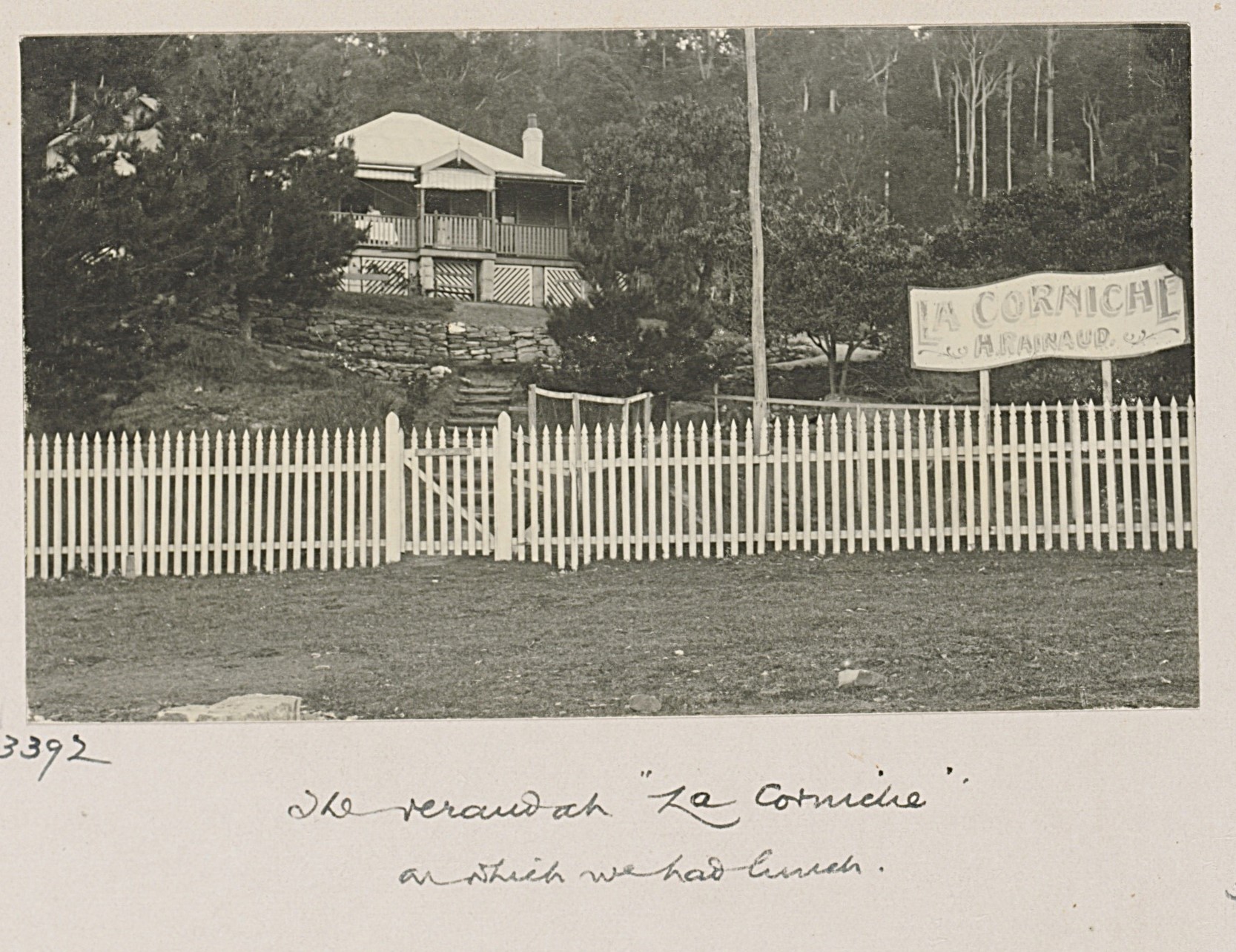
.jpg?timestamp=1760034595502)
.jpg?timestamp=1760034641673)
.jpg?timestamp=1760034684639)
Towler's Bay
James Shaw, residing at Towler’s Bay, Pitt Water, was listed in the 1869-70 electoral roll; James Shaw and Joseph Shaw junior were listed in 1873-74. A Conditional Purchase of 40 acres of land at Towler’s Bay by Joseph Shaw lapsed, and was taken up by Arthur Wood, being granted to him on 10 July 1889. [LTO Vol.931 Fol.231]
Heritage listed: 68. Youth Hostel Lot 3, DP 520115, Towlers Bay. 69. Store, jetty and shed Below MHWM, adjoining LPGRS, Towlers Bay, south side 70. ;Bonnie Doon; wharf Below MHWM, south side of Coasters Retreat, adjoining Ku-ring-gal National Park
'The Chase’ subdivision of Lot 1 – McCulloch. DP 2286 - under WSC in May 1950:
.jpg?timestamp=1758588889469)
.jpg?timestamp=1758589021116)
DP 3455 version:
.jpg?timestamp=1758589381339)
.jpg?timestamp=1758589446431)
.jpg?timestamp=1758589521936)
.jpg?timestamp=1758589556142)
Warringah Shire Council Minutes of Meetings - Lovett Bay mentions
Minutes of Meeting of 12th June, 1922
C Sub.A. Moorhouse, plan of subdivision of Lot 6, The Chase Estate, Lovett Bay :-Referred to Councillor Hitchcock for report.
Minutes of Meeting of 13th September. 1926
28. G. A. Robin. 27.8.26, submitting amended plan of H. J. Fitzpatrick's subdivision near Lovett Bay (Burton's Block.) Resolved, - (Crs. Campbell, Hope) That the plan be approved, provided the Engineer is satisfied with the marking of the 41 Block drainage easements.
31st October 1927
6. Scott and Scott:. Submitting plan of proposed re-subdivision of Mr. Robinson's Lots 15/20, DP. 8013, Lovett Bay. (Sub A) .1 Referred.to the Engineer
Meeting of 5th March, 1928
W. J. Oliver 25/2/28 Requesting approval to the - transfer to him of lot 8A, Bayview wharf Estate Resolved (sub A) (Crs. Hitchcock, Hope) - That the Council approve of the Transfer. Professor F. Andersen 29/2/28 On the same matter.
13th May, 1929
42. M. Bryant. Respecting the disabilities 6/5/29. suffered by the ratepayers and residents of Scotland Island, Elvina Bay, Lovett Bay and Towler Bay by the discontinuance of the ferry service and also by the absence of a store at Church Point. 42a. Amos Corbet 8/5/29. On the need for a public boat-shed at Church Point. Consideration deferred till next meeting.
16th December 1929
11 - That the proposal of S. C. Bosler to metal a septic tank on his property at Lovett Bay be approved.
September 16 1937:
39. Mona Vale Progress Assoc., 8/11/37, re a petition to the Minister for Local Government Department for a road of access to Lovett Bay and Flood's Peninsula by means of a track running from Coal & Candle Creek and crossing West Head Road, and continuing to Elvina Bay, and stating that the Minister has replied that the matter should be referred to the Council. Resolved,. ; That the Council send a letter to the Public Works Department asking that the Government put on relief workers to make this road. (Crs. Hitchcock, Campbell)
March 7 1939:
40. John C. Jones, 27/2/39, reporting that the public wharf and baths at Lovett's Bay, Pittwater are in a very bad state, and that the wharf provides the only means of access for the residents. Referred to the Engineer for report.
April 18th 1939:
Lovett’s Bay Wharf and Baths: 16. Submitting estimate, £55, for repairs to wharf and baths at Lovett's Bay, Pittwater, and reporting that Mr. J.C. Jones is prepared to donate one-third of the cost of the work to a maximum of £25: Resolved, - That subject to Mr. Jones' paying the contribution, the work be carried out and the necessary money voted for the purpose. (Crs. Hitchcock, Latham) .
February 1st, 1944:
A. Bosler, stating he recently bought Lots 21/6, Lovett Bay, Pittwater, that he is unable to procure barbed wire for the fencing of the land, and requesting permission to put a plain wire fence across Sturdee Lane, an unused road, to assist in keeping cattle off the land. Resolved, - That he be informed the Council cannot grant such permission: (38) E. Y. Mills, 21/1/44, reporting that certain persons Elvina Bay have been removing dressed stone work from the approach to the wharf in Elvina Bay, Pittwater, for use on their own property in constructing slipways, etc, that the wharf is consequently becoming v. danger, and requesting Council to compel the offenders to replace the stone work, etc, in a proper workman- like manner. Resolved, - That the matter be referred to the Police with a View to prosecution. (Crs. Spicer, Dunbar)
August 5th 1947:
(16) Land Board 0ffice 29/7/47, further regarding application by Messrs. Beaver and Williams, and forwarding sketch of boat-sheds and jetties fronting Lot 4 D.P. 29284, Lovett Bay. Referred to the Works Committee.
November 11, 1947:
Messrs. Beaver & Williams for a Permissive Occupancy at Lovett Bay and inquiring whether Council would have any objection to a Permissive Occupancy for a jetty only. Resolved, - That no objection be-raised
May 25th 1948:
4 (7) Land Board Office, 15/5/48, inquiring whether there is any objection to the granting of an application by R.T. C. Lammert Permissive for a Permissive Occupancy for a boatshed, platform jetty and Occupancy slips below highwater mark fronting Lot 9, i)?. 345, Lovett Bay. Resolved, - That no objection be raised, subject to the usual conditions regarding access. (Crs. Dunbar, Kent)
October 26 1948:
(6) Land Board Office, inquiring whether there would be any objection to the granting of a Permissive Occupancy for swimming bath, jetty, boatshed and slips below highwater mark off Lot 52, Hudson Parade, Clareville. Resolved, - That no objection be raised subject to the submission of satisfactory plans, and to the usual access conditions. (Crs. Kent,McLean) (7) Same, inquiring whether there is any objection to the granting of a Permissive Occupancy to A. J. Bush for boatshed and slipway below highwater mark fronting Lot 18 Lovett Bay. Resolved, - That Council raise no objection subject to the usual access-conditions. (Crs. Harris, Ken)
March 8 1949:
Land Board Office, 21/2/49 inquiring tether there is any objection to the granting of a Permissive Occupancy to R.T.C. Lambert for a bathing enclosure below highwater mark. Fronting Lot 9 Lovett Bay. Resolved; That the Council raise no Occupancy objection to a Permissive Occupancy for a bathing enclosure only, subject to the provision of access for the public along the foreshore. (Crs. Butchers Thomas)
May 17 1949:
5)Mrs. F. A. Clark 28/4/49, requesting access to her property at Sturdee Lane, Lovett Bay, and inquiring what Council proposes to do about a road from the top of the hill to Lovett Bay. Resolved, -She be informed Council is not aware of any road connecting Lovett Bay with West Head Road, and no such road could be put in without the permission of Kuring-gai Chase Trust, (Crs. Butcher, Bayliss)
June 28 1949:
Same 6/ /49, Inquiring whether there is any objection to the granting of a Permissive Occupancy to F. E. Cox for boatshed, baths and slipway below highwater mark of Lot 4 Lovett Bay. A :ttpancr T'a the Council raise no objection, subject to access for the public being provided between the structures and the owner's property and that the plans are approved by the Council. (Crs; Mckay, Bayliss)
February 7 1950:
(3)same 22/12/49, inquiring whether there are any objections to the granting of a Permissive Occupancy to A. J. Vernon for baths, landing, 2 slips, and jetty fronting Lot 20, D.P. 14.201, Lovett Bay. - That the Council raise no objection, subject to the provision of access for the public between the structures and the owner’s land. (Cr. Butcher) 21 Same (5)ai 4/1/50, inquiring whether there are any objections to the granting of a Permissive Occupancy to F.H.Perriman for excavating a channel fronting Lot 3, D.P. 21181, Crystal Bay, Do. 290 Pittwater. Resolved -That the CouncIl raise no objection. (6) §j, 24-/l/O, inquiring whether there are any objections to the granting of a Permissive Occupancy to C.R.Downey for boatshed and baths, fronting Lot 35, D.P.10002, Mccarr's Creek. - That the Council raise no objection, subject to the provision of access for the public between the structures and the owner's land, and that plans and specifications of the buildings are approved. (Cr. Butcher) (7) Sameg 24.11750, inquiring whether there are any objections to the granting of a Permissive Occupancy to J.W.Hanlen for pump sites at McCarr's Creek. Resolved, _That the Council raise no objection, subject to adequate protection being given to any dam or wall constructed. (Crs. Butcher Thomas)
November 26 1951:
Correspondence – K. Stephens 19/11/51, requesting that consideration be given to providing a public landing wharf to give access between Towler and Lovett Bays, Pittwater, the only access being by water. Resolved - That this be referred to A. Riding-Councillors for consideration. (Crs. McKay,Hewitt)
December 15, 1952:
(5) K. Stephens, 2/12/52, expressing thanks for the work' done at Hall's wharf, Lovett's Bay. 'Received;'.
October 27 1958:
Cumberland County Council: forwarding for Completion under Seal, Declaration of Trust in respect of Transfer of Lot 3, DP 23104, Lovett Bay. Resolved; that this Document be Completed.
Coasters’ Retreat Progress Association 16/10/58 regarding pathway between Bennett’s wharf and Bonnie Doon wharf, and council’s reply that the reserve through which is formed is under the control of the Kuring-Gai Chase Trust, it cannot expend its funds upon maintenance thereof; requesting that the council give specific details of the various rating assessments issued to owners in that area, and inquiring if the fact that the various lots front an unmade pathway, out of the control of council, is taken into consideration when rates are assessed. Response; That Kuring-Gai Chase Trust be informed that the Council regards this work as its (The Chases’) responsibility, and that the Council offer to carry out the works on the Trusts’ behalf on payment of the amount due; and the Engineer prepare an estimate top be forwarded with the letter; that the Council advise the Coasters’ Retreat Progress Association of the action taken by the Council and that all facts are taken into consideration when the Valuer General assess rateable values. (Crs. Fisher/Reynolds.)
Coasters’ Retreat Progress Association – 16/10/58- asking that a Building Inspector make an early inspection of structures in the area from Soldiers’ Point on the western shores of Pittwater to Bonnie Doon wharf, residents being concerned about the erection of structures which obviously have not been subject of Council’s consideration. Received; Chief Health and Building Inspector stated this inspection had already been carried out.
April 11 1960:
Mrs. E L Mackellar, Blue Haven, Lovett Bay, Church Point, 25/3/60, addressed to the President asking to be supplied with a definite answer as to the likelihood of electricity being supplied to the western shores of Pittwater. Mrs. E D Morrow, Meritana, Elvina Bay, Church Point, 25/3/60 addressed to the President asking to be supplied with a definite answer as to the likelihood of electricity being supplied to the western shores of Pittwater. Resolved; that this be referred to the Chairman of the Mackellar County Council for consideration. Mrs. E. M. Stackhouse, Lovett Bay via Church Point, 3/4/1960, addressed to the President asking to be supplied with a definite answer as to the likelihood of electricity being supplied to the western shores of Pittwater. Resolved; that this be referred to the Chairman of the Mackellar County Council for consideration.
June 27 1960:
(J) Mackellar County Council, 15/6/60, re proposal to extend electricity services to Scotland Island and the western shores of Pittwater -advising that Mackellar County Council has Resolved; This Council approves the scheme to provide electricity to Scotland Island, McCarr's Creek, Elvina Bay and Lovett 's Bay, subject to this Council requiring the Warringah Shire Council to subscribe by means of an electricity rate 50% of the revised cost and that, when 50% of the revised cost of the Scotland Island extension is available, this Council will provide the balance of capital expenditure and proceed with the first stage of the scheme, such work to be scheduled for commencement in the year 1961.; Noted
September 19 1960:
Item 6:_Bona Crescent, Lovett Bay - Letter from West Pittwater Progress Association addressed to the President, regarding possible removal of jetty, adjoining Mrs. Canfield's property, but which is used by the public, and requesting Council to' protect the interests of the residents in this matter. Resolved that the applicant be advised that Council adheres to its previous decision. (Brown/Job). as instructed by Council, following Town Planning Development Committee of 15/8/60.' Resolved._that as regards ;A. Riding, steps be taken to investigate whether the Council can dispose of land at corner of Norma and Whale Beach Roads, land being Lot A Coonanga Road, and land at Hudson Parade, Refuge Cove if it is possible to disposeof residue after leaving access to the water; and that Council regards it as essential that other lands listed in the Engineer's Report be retained. (Crs. Brown/Miles).
August 8 1961:
Item 44. R.Stewart, Lot 7 (Waterfrontage) Lovett Bay (B/S/654161)_Application for approval to erect a concrete pile and timber jetty: Resolved, that approval be granted for the use of concrete piles and timber bearers and that the matter of Council's future policy be set down for consideration by the Works Committee.. (Ors. Jones/Wade). J. K. Gascoigne, Lots 2 and 3, D.P.5857, Pittwater Road, North Manly (B/G/6220/61) _Proposed eight storey, 32 units residential flat building, approved in principle on 13.4.61. Moved by Councillor Wilson, seconded by Councillor Jones, that the application be refused because of the overwhelming opposition to such a proposition by the residents of the District. DEFEATED. Councillor Wilson requested that his name be recorded as being opposed to the Committee's recommendation, to which request the President answered ;Yes;.
April 2 1962:
West Pittwater Bushfire Brigade – forwarding a rough plan of a shed and possible site for a bush fire shed on Block B (MP 54929) Lovett Bay; suggesting the building be made of fibro, both walls and roof. Note: The erection of such a shed is to form part of the Central Bush Fire Fund requisition for the year 1.7.1962 to 30.6.1963 and this letter is submitted subject to financial approval being granted by that fund. The land on which they propose to erect it is owned by Warringah Shire Council, having being transferred to the C.C.C. strictly for Country Open Space purposes, an under the instrument of trust, any erection of any building must be approved by the C.C.C.. Resolved; that this matter be referred to Health and Building Committee.
November 12, 1962:
(C) West Pittwater Progress Assn., 22.10-62._re garbage collection service to the Western Shores of Pittwater along the coast-line of McCarrs Creek, Elvina Bay, Lovett Bay and Towlers Bay, Supporting representations by Mr. L. Sims for a-garbage collection Service-and suggesting that the system involving disposable garbage-bags at present being investigated by Council might be appropriate to make a large scale test in that area. 35 Resolved, that the Assoc. be advised ' of the position, as regards disposal of garbage by barge and brought forward after the experiment has been completed.'(Cris; Brown/Bertram)-
December 15 1966:
AMENDMENT CARRIED, and as the MOTION, CARRIED. The Committee then proceeded to deal with the items on page 6 seriatim. ROAD CONSTRUCTION. Elvina Bay to West Head Road (O.M.29.8.66) $55,000 Lovett Bay to West Head Road (0.M. 29.8.66) $100,000 3. Resolved to recommend that these items be not included in the estimate
Report by. Shire Engineer 10th April, 1967;
26. PITTWATER WHARVES _West Pittwater Progress Association, requesting erection of shelter sheds on wharves at Lovett Bay and Elvina Bay. Engineer's Recommendation. That a report and estimate be submitted to the Administrator.
TOWN PLANNER'S REPORT 10.4.67. 2, 6. PITTWATER.FORESHORES - APPLICATIONS FOR PERMISSIVE OCCUPANCIES --f a) Paradise Road Avalon. Lot 47, D.P.17910. Bath. b) Prince Alfred Parade, Newport. Lot 6, D.P.13457. Bath and Jetty extension. _ c) Halesmith Road, Winji Jimmi. Lot 10, Jetty expansion, Ramp & Pontoon, (d) Lovett Bay. Lot B. Jetty. RECOMMENDATION: The Lands Department be advised Council consents to the applications, subject to compliance with Foreshore Policy. e) Lovett Bay, Lot 4. Boatshed, jetty, small reclamation. RECOMMENDATION: The Lands Department be advised Council consents to the application subject to the Permissive Occupancy for Boatshed being conditioned to ensure its removal within a period of 5 years.
DR Fraser acreage being subdivided and sold off – house and 1 acre advertised in 1968 REPORT BY THE SHIRE ENGINESR TO THE ORDINARY MEETING OF WARRINGAH SHIRE COUNCIL HELD ON 24th APRIL, 1967:
S5. LOVETT BAY, PITTWATER _65/146. Applicant, J. Middleton - owner, E. L. Bennett. Lots A and B, Zoning Residential A (3 allotments). Comments. Application to subdivide into 5 lots was approved on 30.9.65, with a condition that a 50' wide strip along the frontage be dedicated as a Public Reserve. In overcome family difficulties, it is requested that Council approve amended design showing only 3 lots. Detail search has also revealed that a fo??Ied approach and ‘’Landing Place’’ was dedicated along the water frontage in 1907 so that the request for dedication of a 50' wide reservation along the frontage should not now be required. RECOMMENDATION. That proposal ‘’A’’ be approved, subject to standard condition 13 and the width of the access corridor to Lot 3 being not less than 20'.
Heritage listed by Pittwater Council - Stone Retaining Wall Site of former causeway in Lovett Bay, north side, adjoining Lots 2 & 3, DP 584315, Lots 4 & 5, DP 590990 & Lot 6, DP 545717 -= Lot 5 map from LRS: - also shows the layout of the other lots of this former Pickering acreage
4th December, 1967..
S7. BONA CRESCENT. LOVETT BAY - 67/180. Applicant - owner, W.E.Boyd. Lots 17/18, D.P.14201, Zoning Residential A (2 allotments). Comments. Proposed to alter an internal boundary to correct an encroachment by existing cottage. The proposal is a reasonable one and new lots would probably be of preferable shape and size to those existing, but, if approved, Council would be unable to approve the erection of a dwelling on new Lot 2, RECOMMENDATION. That the application be refused on ground that mean width of proposed Lot 2 is less than the requirement of 60' as provided in Clause 45 (1) (b) of Warringah Shire Town Planning Scheme Ordinance, but the applicant be advised that Council is at present negotiating with the State Planning Authority to have this clause of the Ordinance amended to permit of more favourable consideration being given to subdivisions of this type.
REPORT OF THE SHIRE ENGINEER SUBMITTED TO THE ORDINARY MEETING OF W4, WARRINGAH SHIRE COUNCIL HELD ON 20th JANUARY, 1968:
CONSTRUCTION AND MAINTENANCE: Elvina Bay Wharf. Shelter shed erected. Painting in progress. Lovett Bay Wharf. Shelter shed removed from land and re-erected on wharf. Painting in progress.
March 11, 1968:
SHIRE BUILDINGS. The following building works were carried out either by day labour or contract during the year:
Lovett & Elvina Bays shelter sheds on wharves - by Day Labour
ORDINARY MEETING OF WARRINGAH SHIRE COUNCIL HELD ON 25th MARCH, 1968:
S3. LOVETT BAY _68/51. Applicant _owner, Econobuild Centre Pty. Ltd. Lot 4, D.P. 235395, Zoning Residential A (5 allotments). Comments. Amended plan showing lots which comply with Council's requirements for size and shape. The land is situated at Lovett Bay where there are no public roads and lots have legal access only to Pittwater. RECOMMENDATIN. That the amended plan be approved, subject to standard conditions. 54. OFF RIVIERA AVENUE, AVALON _68/67. Applicant, B.C. Degotardi & Smith - owner, Avalon Heights Estate Pty. Ltd., K.M. Kelly and A. Holt. Land in PA 38624, Lot 1, D.P. 215436, Lots 119 and 129, D .P. 30509 and Lots 11/12, D.P. 209443, Zoning Residential A (32 allotments). Comments. Proposal complies with Council's subdivisional requirements. No land is proposed for dedication as public reserve as an agreed upon area now known as Stapleton Park was dedicated, by owner under agreement with Cumberland County' Council and Warringah Shire Council on 2nd April, 1956. RECOMMENDATION, That the plan be approved, subject to standard conditions 1,2,3, 4,6,7,8,9,10,11,12,13 and 15. S
ORDINARY MEETING OF WARRINGAH SHIRE COUNCIL HELD ON 4th NOVEMBER, 1968:
STURDEE LANE, LOVETT BAY - REQUEST FOR COUNCIL'S VIEWS ON PROPOSED 342Y SUSPENSION TO PERMIT RESIDENTIAL DEVELOPMENT. (T.P.68/231). Lot 56, D.P.8013. Applicant: State Planning Authority of N.S.W. Letter dated 1.10.68. ZONING: Reserved County Open Space. Notes: 1. The land is reserved for County Open Space and adjoining lands have been acquired by the Cumberland County Council/State Planning Authority for addition to Ku-ring-gai Chase. There are no Varying Scheme proposals to amend the Open Space reservation. 2. The owner verbally advised that he holds a Cumberland County Council letter dated about 1962 describing the land as ‘’built-up’’ Open Space. 3. It is considered that, in the public interest, there is no merit in permitting residential development. RECOMMENDATION: The State Planning Authority be advised that _a) there are no Varying Scheme proposals to alter the County Open Space reservation; b) it is in the public interest to retain the County Open Space reservation. Therefore, Council objects to action under 342Y of the Local Government Act.
February 3, 1970:
DOCUMENTS FOR EXECUTION UNDER SEAL; 38. :I Resolved, That the Common Seal of the Council be affixed to the following documents: Iease executed. By Narrabeen Beach Surf Lifesaving Club. Memorandum of Transfer Part Portion 30, Towlers Bay
January 10, 1972:
WATER SUPPLY FOR LOVETT BAY. Petition, J. Hindmarsh and others, requesting a water supply to Lovett Bay; offering to make a financial contribution. 25. Resolved1 That this petition be referred to the Metropolitan Water, Sewerage and Drainage Board _copy to Mr. de Burgh, Board Member. (Crs. Huntingdon/Seinsbery).
March 13, 1972:
Precis of Micellaneous Correspondence, contd. Sewerage and Drainage Board, addressed to Mr. T. de Burgh, and forwarded to this Council, advising that at the present the Board has no proposals to construct a main to serve properties in this area. Resolved: That the information be noted and forwarded to Mr. J. Hindmarsh and others who forwarded a petition recently requesting a water supply to Lovett Bay. PROVISION OF WATER SUPPLY TO SCOTLAND ISLAND. Letter 25.2.72 from Metropolitan Water, Sewerage and Drainage Board, addressed to Mr. T. de Burgh, and forwarded to this Council (full copy supplied with the agenda). 58. Resolved _That the information be noted, and details of the reply be forwarded to the petitioners who were sponsored by Mrs. E.M. Mayor, arising from a request for comment by Mr. de Burgh following the Ordinary Meeting of Council held 6th December, 1971.
Special Meeting, 15.1.1973. 3. _FIXING OF FEES 5. Resolved _That the Shire Clerk's recommendation be adopted, viz: (i) That for the year 1973, an annual fee of fourteen dollars ($14.00) be and is hereby fixed for each twice-weekly garbage removal service provide4,or available to be provided _(a) to each built-on ratable assessment in the Shire; AND (b) if applicable, for each approved flat, separately occupied shop or office, after the first, on each ratable assessment; PROVIDED that if the garbage or the major part thereof from any block of flats is proved to have been disposed of by incineration, then the garbage removal fee is to be assessed by the Shire Health Surveyor. AND (2) That for the year 1973 an annual fee of fourteen dollars($14.00) be and is hereby fixed for a once-weekly garbage service to be provided; or to be available if required, in the same manner as the former two-weekly garbage service, to all built-on ratable properties on Scotland Island and the western shores of Pittwater, incorporating ; Lovett Bay, Elvina Bay, Towler Bay and McCarr's Creek. (1972 fee _$13.00). AND (3) That in respect of non-ratable properties, a fee of twenty cents (20 cents) be and is hereby fixed for the removal of the contents of each garbage bin having a capacity of approximately two cubic feet. (1972 fee 13 cents). NOTE: Clause 29 of the specifications and conditions relating to the garbage contracts permits the contractors, pursuant to Section 285 of the Local Government Act, 1919, as amended, to enter into separate arrangements with owners or occupiers of premises, for:(a) The collection and/or removal of waste materials such as old iron, stones, bricks, earth, garden refuse, old bedding, furniture, trunks, tyres and other household junk and waste which, for the purpose of the contract is styled ‘yard refuse’. (b) ;Trade refuse; of any kind. Clause 3 of the said specification and conditions expressly provides that the contractor may, pursuant to Section 285 of the Local Government, Act, 1919, as amended, enter into separate arrangements with owners or occupiers of premises for the provision of garbage services in excess of those required to be rendered by the contractors under Clause k of their contracts with this Council, the charge for each has been fixed under the contracts at fourteen cents (14 cents per bin having a capacity of approximately two cubic feet; subject to a discount of one cent per bin if the account is paid within 30 days. (Crs. Huntingdon/Sainsbery). The meeting concluded at 8.30 p.m.
September 17 1973:
USE OF COUNCIL'S PUBLIC WHARVES ; PITTWATER Before discussion on this item, the President announced receipt that evening of a Petition dated 16.9. 1973 from 122 residents of Scotland Island and Lovett Bay, which he read to the meeting; it requested the Council to allow and encourage the continuation of the water taxi service conducted by the Scotland Island and Western Shores Ferry Service for the benefit of all concerned. The President also announced that in pursuance of the Committee's request, the Council's solicitor, Mr. Doyle of H. Wilshire Webb Son & Doyle, had furnished an Opinion as to the Council's powers to restrict the use of public wharves and whether or not the Council's previous resolutions are valid and the Solicitor had suggested- a recommendation-which should be passed to regularise the matter. 26. Resolved ; That in exercise of its powers under Section 413 of the Local Government Act to maintain, control and manage public wharves, Council hereby, declares that the public wharves at Church Point, Scotland Island and the western shores of Pittwater as far north as Towlers Bay shall not be used for carrying passengers for reward otherwise than by the Pittwater Ferry Services and the Scotland Island Western Shores Ferry Service, at times already agreed upon and approved by Council. (Crs. Creagh/Hoy)
December 1st 1979:
Bush Fire Prevention THAT the items: Video Camera; $5,000 and; Access Path and Wharf Construction, Lovett Bay; $11,000 be deleted. FURTHER THAT the purchase of 3 tonne van (Canteen) s I and a Toyota DYNA Crew Cab truck be reported upon to the Adjourned Special Meeting.
July 12 1990:
Report to Development Unit. The application was only granted consent by Council on the basis of amendments overdrawn on the submitted plans which shortened the jetty length from 35 metres to 32.6 metres and realigned the proposed steps parallel to the length of the jetty, within a maximum jetty end width of two (2) metres, all in accordance with the normal requirements of Council's Pittwater Foreshore Development Policy. Current Modification Application The modification application shows a jetty length of 32.6 metres with steps transverse to the jetty end with an annotated width dimension of 3.75 metres, (but scaled width of four (4) metres) and essentially the same as the original plans submitted with the first application and granted development consent by Council, in an amended form. In support of the modification request, the applicant wrote ‘’We are happy to accept Councils recommendation, with one exception. The steps as shown on the amended plan and consent do not give any access to the front of the jetty, making it impossible to board the ferry. There are two alternatives to using the ferry service, the first being the use of a small runabout commuter boat. My wife and I are in the Senior Citizen category and are well past using that type of boat. The second is the use as public wharves and this is absolutely out of the question in this case as Hall's wharf is about a 35 minute walk through a rough bush track and much too far for us to walk and carry our provisions. Lovett Bay wharf has no ready access from our direction. We feel ours is a special case and ask Council to agree with our request.’’ The applicant had previously been advised by Council staff that under the Pittwater Foreshore Development Policy:_1.The age of the applicant and his wife was not a relevant consideration; 2.Private jetties are designed to accommodate private vessels, not the public ferry; 3.The adjoining structures granted consent in 1957, 1959 and 1967, ie. between 23 and 33 years ago, and prior to the introduction of Council's Pittwater Foreshore Development Policy. They no longer met the currently acceptable standards for waterfront structures. Assessment Development: In the vicinity includes jetties with ‘L’ ends, approved in 1957, 1959 and 1967. The Pittwater Foreshore Development Policy was drafted after these structures were approved, and specifically did not allow ‘L’ ends in view of the visual impact of such structures.
September 4 1990:
A6.Stone Retaining Wall Site of former causeway in Lovett Bay, north side, adjoining Lots 2 & 3, DP 584315, Lots 4 & 5, DP 590990 & Lot 6, DP 545717 A7. Wharf remains Former Youth Hostel site below mean high water mark, Towlers Bay, north side, adjoining Ku-ring-gai National Park
April 30, 1991:
Cottage Point Wharf and Coal, & Candle Creek Wharf - Cottage Point Wharf is accessed by a pedestrian way from Cottage Point Road. The wharf is wholly within Cowan Creek which forms part of Hornsby Shire and is totally within Ku-ring.-gai Chase National Park. The Council has no tenure of this wharf by way of Permissive Occupancy from the Nationals Parks & Wildlife Service nor is the wharf included within Ordinance 35A. The wharf primarily services recreational boat users within k'u-ring-gai Chase National Park and serves no particular local resident or commuter requirements. In these circumstances it is suggested 'that the Council approach the National Parks & Wildlife Service with a view to accepting tenure and responsibility for the ongoing provision and maintenance of this wharf.
Coal & Candle Creek Wharf is within Warringah Shire at Illawong Bay. This wharf is a public wharf pursuant to Ordinance 35(A) but again no separate tenure agreement exists with the National Parks & Wildlife Service. The wharf was initially provided when a marina existed at Illawong Bay. This marina was demolished following the development of the Akuna Bay Marina complex. The wharf's sole function is to serve recreational boat users associated with the National Park. In these circumstances it is suggested that the Council enquire from the National Parks & Wildlife Service as to their willingness to accept tenure, provision and maintenance of these wharves.
Morning Bay Wharf - Towlers Bay. This wharf is a heritage item within the draft Warringah Shire LEP Heritage Items. The wharf apparently previously served the youth hostel at Towlers Bay but that commuter function is now served by Halls Wharf at Lovett Bay. No commuter service operates to this wharf. The wharf is in substantial need of repair and because of its location and construction, being a stone wharf would be very expensive. Further, Council is receiving reports involving the theft of dimension stone from this wharf, which because of its isolation and lack of use is difficult to police. The primary function of this wharf appears to be to now service recreation users associated with Ku-ring-gal Chase National Park and it is again suggested that this wharf be offered to the National Parks & Wildlife Service. In the event of the National Parks & Wildlife Service not accepting tenure and responsibility for the ongoing maintenance and provision of these wharves it is suggested that Council give consideration to closing and removing these wharves pursuant to Section 414(2) of the Local Government Act.
A6. Stone Retaining Wall Site t i Lovett Bay, Lots 2 5,02 590990 & LrJL A7. Wharf remains Former Youth Hostel site below mean high water mark, Towlers Bay, north side, adjoining Ku-ring-gai NatIonal Park
March 3 1992:
C.20 _WEST PITTWATER BUSH FIRE BRIGADE STATION _LOVETT BAY. Protect: Replacement of existing shed. Les: $411.1 To-house. Evaii.Y2LtHeil _$0.00 Organisation/Grant $0.00 - not approved for 1992. Repair work to be carried to rectify storm damage to existing shed.
April 24 1992:
Finance & Personnel Committee Meeting 05/05/92 A.07 - WEST PITTWATER BUSH FIRE BRIGADE STATION - LOVETT BAY. Prolect: Replacement of existing shed. Design: In house. Funding: Council - $0.00 Organisation/Grant - $0.00 Status: Funding not approved for 1992. Repair work to rectify storm damage completed. SECTIONR - PROJECTS CURRENTLY UNDER CONSTRUCTION 8.07 - PITTWATER WHARVES - JOB 4579J. P Project: Repairs and replacement of existing wharves - Scotland Island and Western Foreshores. (Bells, Eastern, Tennis Court and Elvina Bay South). Design: Jambin Pty Ltd. Contractor: Lane & Thompson. Funding. Council - $71863.00 Organisation/Grant - $69405.00 Status: Bells Wharf completed. Tennis Court Wharf completed. Elvina Bay south to commence 29.4.92. Total project 85% completed. 3.08 - AVALON SURF LIFE SAVING CLUB. P Prolect: Pergola and screen wall to top deck of existing clubhouse. Design: Club. Builder: Club - Voluntary labour. Funding: Council - $0.00 Organisation/Grant - $0.00 Status: Building Application approved - 7.8.91. Letter sent requesting work schedule
Oyster Leases
HENRY EDWARD WILSON 100 yards, parish Broken Bay, on the western shore of Pittwater, extending along the western side of the inlet within Council's portion No 8 and Martin Burke's portion No 9, being the inlet behind Great Mackerel Beach
JAMES CLARK 2700 yards parish Broken Bay, on the western shore of Pittwater extending south westerly from the southern point of entrance to Towler’s Bay and thence along the northern side of Lovett Bay, and fronting portions Nos 4 and 17 of 50 and 40 acres respectively
JAMES CLARK 800 yards parish Broken Bay, on the northern side of a small inlet of the northern shore of Towler's Bay and lying northerly from John Williams' junior's oyster lease No 1996
JAMES CLARK-2000 yards parish Narrabeen on an eastern and southern side of Pittwater, extending southerly and north westerly along the foreshores from Newport Wharf
JAMES CLARK-100 lands parish Narrabeen on the eastern shore of Pittwater, adjoining the eastern end of 7 II Richardson s oyster lease No 4008 at Horse Shoe Cove
JAMES CLARK 100 acres parish Broken Bay on the western shore of Pittwater, at the bend of the small hip line- lmmeHitch south of Lovett Bay and fronting Wm Olivers portion No 12 of 35 acres
JAMES CIARK-700 v areas parish Broken Bay on the southern side of Lovett Bay exten line south-easterly from the eastern end of li Richardson's oyster lease No 4845
JAM! S CLARK-1000 yards parish Narrabeen on the
south western side of Scotland Island Pittwater JAMES CLxRK-3(M> Yards parish Narrabeen, on the eastern shore of Pittwater adjoining the northern end of T H Richardson's oyster lease No 4000, at Salt Pan Point
JAMES CLARK 1700 yards parish Broken Bay at the head of the Basin, Coasters' Retreat Pittwater extending westerly, southerly and easterly from a point adjacent to the south west comer of Robert Mcintosh of portion No 14, of m acres
JAMES CLARK-100 yards parish Narrabeen, on the southern side of Careel Bay Pittwater, adjacent to the stone wharf near the north east corner of Thomas Warners portion No 34 of SO acres JAMES cr ARK-400 lands parish Narrabeen on southern side of Careel Bay on the eastern side, and adjacent to the stone wharf near the north west corner of Henry Girkin's portion No 35, of five acres and fronting that portion
JAMES CLARK-100 innis parish Narrabeen on the southern bank of McGirr's Creek, near Its head and extending westerly from T H Richardson'in star I caRE No 444
JAMES CLARK-<100 yards parish Broken Bay on the northern bank of McCarr's Creek, near its head and extending south westerly from J H Richardson's oyster lease No 4142
JAMES CLARK 1400 yards parish Narrabeen on eastern bank of McCrae's Creek extending i... shortly from a point adjacent to Ireland's bathing place and fronting portions Nos 21 "0 and 1
JAMES CLARK 200 yards parish Narrabeen on the eastern bank of Mccarthy Creek near its entrance to Pittwater at Church Point and extending' south w easterly from a point adjacent to Booth's boatshed and fronting Mrs Oliver's portion No 91 of (W acres.
JAMES ClARK 200 yards parish Narrabeen, on the rnnlTtorn shore of Pittwater at the Mare and id jacent to the nord ern end of W. S Ongley'!) Advertising (1906, July 12). The Sydney Morning Herald (NSW : 1842 - 1954), p. 10. Retrieved from http://nla.gov.au/nla.news-article14785399
Objections to Extensive Oyster Leases
Recently the Fisheries Board decided to lease 10,000 yards of foreshore In Pittwater to an enterprising man for oyster fattening body. The area was not continuous, but scattered round Pittwater, Bayview, Newport, Careel Bay, The Basin, and Saltpan Point. Several objections were, however, received to the leasing, residents having water frontages urging that there would be depreciation of their property, interference with their water approach, and deprivation of net-fishermen by taking away their hauling grounds. They, also pointed out that unsightly stakes and stones would be laid on the losses in connection with oyster culture, and that the sewage from houses round this arm of Broken Bay would make the oysters dangerous food.
Mr. F. Farnell (chairman of the board) and Mr. J. A. Brodie (chief inspector) paid a visit to the place a few days ago to investigate the validity of the objections, and reported that none of the objections was tenable. Provision had been made for boat access to properties abutting on the lease, the hauling grounds were not to be leased, the Navigation Department had no objection to the erection of ballast walls to protect the oyster banks at Careel Bay and Saltpan Point so long as they did not extend further out than low water mark, and there was no danger of the oysters becoming affected by sewage.
With this report before It the board decided to grant the majority of the leases, but set apart Towler's and Lovett's Rays and other parts used by the public for public oyster reserves. FRANCE REFUSES SOCIALISM. (1906, August 4). The Sydney Morning Herald (NSW : 1842 - 1954), p. 10. Retrieved from http://nla.gov.au/nla.news-article14791145
Department of Fisheries,
Sydney, 17th November, 1905.
IT is hereby notified for general information that the undermentioned person has applied to LEASE FOR OYSTER CULTURE the portion of land set opposite his name. Tracings showing the position of the portion may be inspected at this department dally (excepting Saturdays), between 11 and 3 o'clock, and on Saturdays between 11 and 12 o'clock. Any person may, by memorial to the Board of Fisheries, within thirty days from the date of this Notice, and on grounds to. be stated in such memorial, pray that lite lease of the portion may not be granted.
J. A. BRODIE,
Secretary. PITTWATER.
John Henry Richardson, 200 yards, parish Broken Bay, on the southern bank and near the head of Lovett Bay, Pittwater. Advertising (1905, November 25). The Sydney Morning Herald (NSW : 1842 - 1954), p. 7. Retrieved from http://nla.gov.au/nla.news-article14734427
OYSTER LEASE
Joseph Henry Arblaster; about 1 acre. Offshore Lovetts Bay, Pittwater; about 200 yards south of the south-west corner , pot. 17. Appin. 13883, Joseph Henry Arblaster; about 1 acre. Offshore at Towlers Buy, Pittwater; about 75 yards north of north-east corner leaseo 8136, section 3. Application; 13885, Joseph Henry Arblaster; about 1 acre. At McCarrs Creek, Pittwater; about 200 yards west of the north-west corner portion 1. Appln. 13880, Joseph Henry Arblaster; about 1 acre. Offshore at Towlers Bay, Pittwater, about 150 yards south-westerly from north-west corner portion 149. Appln. 13887, Joseph Henry Arblaster; about 1 acre. Offshore at Pittwater; about 150 yards northerly from north-east corner leaso 7302. E. B. HARKNESS, U.S.. Chief Secretary's Department. 18.0.26. (C.C35Q) Advertising (1926, June 29). The Daily Telegraph (Sydney, NSW : 1883 - 1930), p. 2. Retrieved from http://nla.gov.au/nla.news-article245764021
"Even before the fires we expected to be short of local timber in 20 years," he said. "No money should be spared to protect our forests. "We can never replace the damage done." Late last night a fire was burning on several thousand acres west of Lovett's Bay and Towler's Bay, Pittwater. The fire was close to about 30 homes and weekend cottages.
The ranger at The Basin (Mr. Borman) said the fire might threaten the houses before morning if a westerly wind sprang up. He said some of the weekend cottages were unoccupied. Mr. Borman said the fire had destroyed wild flowers on the Kuring-gai Chase . Trust property. FIREBUG SET BUSH BLAZE (1951, October 30). The Daily Telegraph (Sydney, NSW : 1931 - 1954), p. 1. Retrieved from http://nla.gov.au/nla.news-article248986443
John Williams Junior - Towler's Bay, Pittwater, parish Broken Lay, county Cumberland. Area. About 5 ½ perches. Purpose for which the Lease is desired. Jetty. APPLICATION FOR LEASE FOR SPECIAL PURPOSE. (1904, November 12). Government Gazette of the State of New South Wales (Sydney, NSW : 1901 - 2001), p. 8473. Retrieved from http://nla.gov.au/nla.news-article226485464
APPROVAL OF SPECIAL LEASE APPLICATIONS.
4291 – 1904-15805 S.L. 1904-4. Williams, John, Jun., of Bay View, Pittwater, via Manly. Below high-water mark, Towler's Bay, parish Broken Bay, county Cumberland. 5 ½ perches for Jetty. 1 Jan 1904 to Dec 31 1908. Annual rent; £2
4292- 1904-15806 -S.L. 1904-10. Bennett, Charles Woolfield, of 55 Market Street, Sydney. Below high-water mark at Pittwater, Broken Bay, fronting Lessees property, parish Narrabeen county Cumberland. 14 ½ perches for Jetty, boatshed, slip and bathing place. 1 Jan 1904 to Dec 31 1908. Annual rent; £9.
Special Conditions, Provisions, Covenants, and Reservations
Special Lease No. 4,291. John Williams, junior.—The lease shall not be subject to subsections 2, 5, 9, 10, and 12 to 20 of Regulation No. 215,but shall be subject to the following special conditions:— (a) The jetty shall be maintained in good order and condition during the currency of the lease, (b) A substantial hand-rail shall be erected along one side of the jetty and be maintained in good order. (c) The Special Lease shall cease and determine in the event of the lessee surrendering or forfeiting his lease of portion 30, parish of Broken Bay, county of Cumberland, before the expiration of the term of the Special Lease.
Special Lease No. 4,292. Charles Woolfield Bennett.—The lease shall not be subject to subsections 2, 5,9,10, and 12 to 21 of Regulation No. 215, but shall be subject to the following special condition:—(a) The lessee shall maintain all improvements upon the lease in a proper state of repair during its currency, reasonable wear and tear excepted. APPROVAL OF SPECIAL LEASE APPLICATIONS. (1905, March 1). Government Gazette of the State of New South Wales (Sydney, NSW : 1901 - 2001), p. 1479. Retrieved from http://nla.gov.au/nla.news-article220926788
Frederick Chave sells to 18 acres 1 rood 33 perches to Francis Bolton on June 19 1893[Vol-Fol 1100-74]. Mr. Bolton sells to Newton Charles Singleton of Lovett Bay on June 1st 1942, who sells off some lots. The May 2nd 1944 Warringah Shire Council minutes of meetings records:
(45) Kuring-gai Chase Trust, 20/4/44, forwarding, for what- ever action council may wish to take, copy of a report by the Cicada Glen Trust's Foreman Ranger, with a statement from Ranger Walkley regarding the unauthorised removal of ferns from Cicada Glen's Creek, being part of a reserve under the control of the Council. Resolved, - That the offenders be asked to show cause why the Council should not take action against them, and the Trust be thanked. 48a - C. Singleton, 29/4/44, submitting plan of proposed subdivision of land at Lovett Bay, Pittwater. Resolved, - That approval be granted.
Singleton then sells to Athol Anderson Stronach (Portion 17), Broker, May 8th 1950, who sells off some lots and then the residue becomes Vol-Fol: 6537-191 Certificate registered July 24th 1952, and 18 acres 1 rood and 33 perches – he sells lots into 1950’s. Mr. Stronarch has 10 acres of Portion 17 resumed by the County of Cumberland Planning Scheme on February 24th 1955 (Vol-Fol: 7079-45 Lots 1, 2, 4, 5, 6 – lot 3 already sold – Cert. of title registered Feb. 13 1956) and more on March 4 1960 and more on April 26 1963 (Vol-Fol 9421-39). Mr. Stronach passed away February 12th 1985.
.jpg?timestamp=1757988571557)
.jpg?timestamp=1757988653553)
.jpg?timestamp=1757988770053)
.jpg?timestamp=1757989049383)
.jpg?timestamp=1757989105286)
.jpg?timestamp=1757989146190)
.jpg?timestamp=1757989176190)
.jpg?timestamp=1757989245105)
LOCAL GOVERNMENT ACT, 1919
Cumberland County Council: Proposed Resumption of Land at Lovett Bay, Pittwater
HIS Excellency the Governor, with the advice of the Executive Council, and in pursuance of the Local Government Act, 1919, has approved of the Cumberland County Council's causing a notice of resumption of the land together with all mines or deposits of coal, ironstone, kerosene shale, limestone, slate or other minerals under the said land (excepting any such _ mines or deposits as were reserved to the Crown in the original Grant of the said land) described in the Schedule hereto, together with a description of such land, to be published in the Government Gazette and in a newspaper circulating in the area in which the land is located, such land being required by the Cumberland County Council for the purpose of carrying into effect the provisions of the County of Cumberland Planning Scheme. (S, 59-4,110).
P. D. HILLS, Minister for Local Government. Department of Local Government,
Sydney, 4th March, 1960.
Schedule
All that piece or parcel of land situate in the Shire of Warringah, parish of Broken Bay and county of Cumberland, being part of portion 17: Commencing at the northernmost north-eastern corner of the said portion 17; and bounded thence on the east by the eastern boundary of that portion bearing 180 degrees 862 feet 7 3/8 inches; on the south by part of the northern extremity of the lane 40 feet wide forming the western boundary of lots 6 and 7, deposited plan 23,104 bearing 270 degrees 4 feet 2 inches to the north-western corner of that lane; again on the east by the- western side of the said lane 40 feet wide bearing 180 degrees 398 feet £ inch to the north-eastern boundary of lot E, shown in plan catalogued 4,764 (L); on the south-west by part of that boundary and by the north-eastern boundary of lot D bearing in all' 301 degrees 486 feet 9 ¼ inches; on the west by the northernmost eastern boundary of lot C bearing 360 degrees 1,011 feet If inches; and on the north by part of the westernmost northern boundary of the said portion 17 bearing 90 degrees 421 feet 4 7/8 inches to the point of commencement,—having an area of 10 acres 3 roods 34 perches or thereabouts said to be in the possession of Athol A. Stronach, and shown on plan with the Department of Local Government, Sydney. (6035). LOCAL GOVERNMENT ACT, 1919 (1960, March 4). Government Gazette of the State of New South Wales (Sydney, NSW : 1901 - 2001), p. 617. Retrieved from http://nla.gov.au/nla.news-article220306994
The Vol-Fol of that resumed land:
.jpg?timestamp=1758590463416)
.jpg?timestamp=1758590547833)
.jpg?timestamp=1758590590883)
.jpg?timestamp=1758590628112)
.jpg?timestamp=1758590674729)
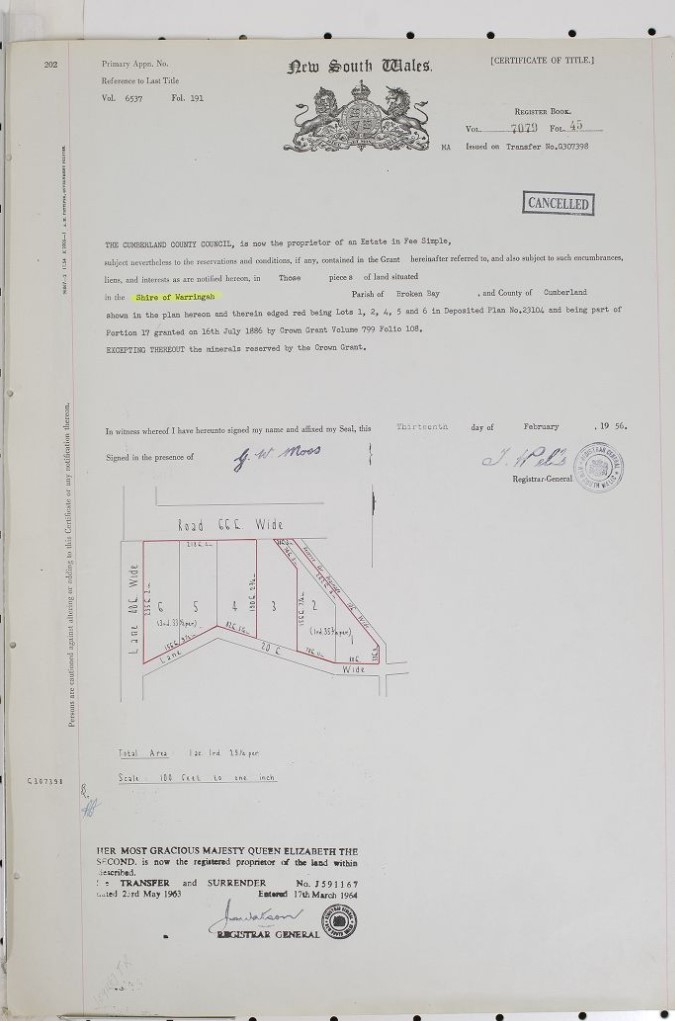
Kuring-gai Chase Trust. No. II.
(By the Hon. Secretary.)
In my last article I promised a short resume of the trustees' object and aims, and a statement of the methods followed in the expenditure to date. For the information of those who may not have read my introductory remarks, I will repeat that the Chase was dedicated in the latter end of 1894, and a sum of £200 was credited on account in the Bank of New South Wales wherewith to commence operations. The greater portion of our 53,000 acres being a "terra incognita" to the majority of the trustees, an early opportunity was taken of inspecting as much as was possible in a two days' tour, and a general plan of campaign was decided upon.
In order to make the proportion of expenditure understandable, it should be explained that nature has divided the Chase into eight distinct portions, no single portion being accessible by land directly from any other portion, i.e., the park consists of a series of ridges divided by ravines of a terribly rough nature, such as only an experienced bushman or mountaineer could cross. These several portions are approached by land from various centres of population, and commencing at the Hawkesbury Bridge, are respectively named : Berowra, in area 4000 acres ; Cowan, in area 500 acres ; Colah, in area 2600 acres ; Wahroongah, in area 500 acres ; Bobbin, in area 3000 acres ; Central ; Jersey, in area 500 acres ; Pittwater. Berowra section is approached from Berowra Station, from which a steep, though well-made track, has been constructed by the Works Department to Windybank's well known boating establishment on Cowan Creek. Colah section adjoins, and is approached from Colah or Hornsby Stations. The route from the latter is by a good coach drive along the Peat's Ferry-road, crossing the Great Northern Railway Line at a level crossing about one-third of a mile south of Colah Station, thence north-easterly along a formed road about four miles in length to the Gilrigong or Cowan Creek. The easiest walking station is Colah, returning southerly along the railway line to the crossing above described, and thence to the water along the road recently formed, four and a half miles in all to the water's edge. Wahroongah section abuts upon what is known as Wahroongah, and is approached along an at present indifferent track in a northerly direction from the railway station, passing the junction of Lover's Jump and Spring Creeks at a point distant about two and one-sixth miles from the railway station, and a road is now being cleared along the bank of the latter creek to Cowan ; total distance, about five miles. Bobbin section is approached from Pymble or Turramurra Stations. From the former the Lane Cove-road is followed to the convent, thence
along the Bobbin End-road, the last two miles a capital driving road, the last three miles presently being a bush track requiring same patching up. From Turramurra Station the Eastern-road is followed for three-quarters of a mile, where Biffin's-road turns off to the east, and junctions the Bobbin End-road a little this side of King's Orchard. Jersey section : Accessible from Gordon and neighbouring stations; shortest distance to boundary of Chase from Gordon Station, viz., Stony Creek road, about 4½ miles. Central section : Situated between Pittwater section and West Head, but practically only approachable by water at the present time. Pittwater section, though approachable by a 14-mile drive from Pymble along the Pittwater road past Tumble Down Dick, is really only accessible from Manly via Narrabeen and Church point ; and it is upon this section that the greatest expenditure has been incurred, as, through the agency of Mr. Dugald Thomson, M.L.A., a sum of £150 was obtained for expenditure in the portion of the park included in the Warringah electorate. As previously explained, the trustees having so large an area under control, it is a matter of extreme difficulty to so scatter expenditure that no portion of the reserve shall be thought to be neglected, and in this respect the principal difficulties are presented. Many little improvements suggest themselves at first blush which mature consideration proves would only mean the frittering away of small sums, which, unless backed up by further grants, must eventually prove useless ; for instance, no good can come of clearing a camping ground if no road approach is made to such camp ; and perhaps the dual expenditure is impossible. Then, too, with the limited funds at our disposal, the opening up of paths to our fern gullies only cleans that the work of spoilation is rendered more easy, and we are loath to do this, until we can increase our patrolling force.
The present emolument paid to special constables is but £20 per annum, one of whom keeps an eye upon Pittwater section, and another Cowan, while our "honorary specials" have no defined location, and their visitations are irregular. It will be readily conceded that to prevent a to-tal disregard of our bylaws, with this small outlay we have, what the Yankees describe, "a tall or-der" in hand ; but we hope to attain most, not by precept, but rather by the example of the right thinking portion of our visitors. The following concise reports set out the nature of work done, lengths of roads and pathways con-structed, and localities attempted to be improved: —
Pittwater: Forming stone causeway, 8ft wide, along foreshore, from entrance of chase to deep water, Lovett's Bay, 135 yards, and building substantial stone wharf at same. Scrubbing and forming pathway along foreshore from causeway to head of Lovett's Bay, on north side, and continuing same on south side to boundary of Flood and Oatley's Estate, Ventnor. Scrubbing and forming zigzag pathway from above foreshore, north side, up to flag staff, 500ft high; ditto, paths to Flat Rocks; and many minor surveys and connections ditto ditto causeway, 6 chains 15 links ; to head of Lovett's Bay, 45 chains 70 links; to Ventnor, 41 chains; Zigzag to Flagstaff, 40 chains ; to Flat Rock, 37 chains 30 links ; to or Flat Rock, 10 chains 15 links. Total, 180 chains 30 links — 2 miles 20 chains. Kuring-gai Chase Trust. (1896, August 6). Evening News (Sydney, NSW : 1869 - 1931), p. 2. Retrieved from http://nla.gov.au/nla.news-article111041737
PERSONAL. VICE-REGAL. The Governor-General and Lady Tennyson and suite, escorted by Messrs. Du Faur and Kilgour (trustees), visited the Kuring-gai Chase yesterday. Train was taken to Turramurra, and after driving to Bobbin Head the party lunched on board of the house-boat at Cowan Bay. The visitors were then taken round in a launch to Pittwater and Towler's Bay and on to Bayview. Here the vice-regal party landed and proceeded overland to Manly, and thence to Sydney by launch. PERSONAL. (1903, July 9). The Sydney Morning Herald (NSW : 1842 - 1954), p. 7. Retrieved from http://nla.gov.au/nla.news-article14534711
THE AUDACITY OF THE SWALLOW.
Dr. Richard Arthur, M.L.A., writes to "The Daily Telegraph" (Sydney).—"When visiting Pittwater the other day with the Premier and some other gentlemen, we had the opportunity of seeing a swallow's nest placed in an almost Incredible position. "The trustees of the Kurin-gai Chase have a launch driven by an oil engine, which is enclosed In a small glassed-in cabin. On the top of the lamp in this cabin two swallows have built their nest, which now contains two swallowettes, three days old.
"Mr. Willmott, who is in charge of the launch, informed us that he destroyed the nest twice. The launch was then laid up for a week, but a small port-hole was left open. When he again entered the cabin he found a fully-formed nest, which contained three eggs. The female bird stuck to the nest, and either ignored his presence, though his head, while he was cleaning the engine was within a few inches of her, or would make a pretence of flying at him.
"Now, when the launch goes on a trip, the parent birds perch themselves on the bow. If they leave the boat they will turn up some hours later, even though it has travelled five or six miles in the meantime, and fly straight into the cabin. Mr. Willmott believes that the swallows have chosen this extraordinary position for their nest to escape the iguanas. He is speculating how the parents will teach the young ones to fly." THE AUDACITY OF THE SWALLOW. (1906, December 15).The World's News (Sydney, NSW : 1901 - 1955), p. 4. Retrieved from http://nla.gov.au/nla.news-article128277180
Towler's Bay
James Shaw, residing at Towler’s Bay, Pitt Water, was listed in the 1869-70 electoral roll; James Shaw and Joseph Shaw junior were listed in 1873-74. A Conditional Purchase of 40 acres of land at Towler’s Bay by Joseph Shaw lapsed, and was taken up by Arthur Wood, being granted to him on 10 July 1889. [LTO Vol.931 Fol.231]
Heritage listed: 68. Youth Hostel Lot 3, DP 520115, Towlers Bay. 69. Store, jetty and shed Below MHWM, adjoining LPGRS, Towlers Bay, south side
The battle to save flora and fauna went on, with laws introduced eventually:
WILD FLOWERS. PROTECTION FROM VANDALS. LEGISLATION NEEDED.
Havoc is already being made among the wild flowers.
A general wish was expressed yesterday by nature lovers that the action promised by the Premier to prevent the vandalism that is going on in respect to our native flora, now arrayed in all its glory, would be taken early.
In the opinion of Mr. P. Lynne Rolin, president of the Wild Life Preservation Society, there is only one remedy, and that is to absolutely prohibit the sale of wild flowers. Many of those who collected flowers plucked them out by the roots, he said, and thus whole areas were being denuded of their natural flora. "It is wretched to see how the wattles and the Christmas bush are every season stripped bare of their beautiful blossom," he added. "It we had the proper civic spirit this spoliation could not go on, but that spirit for some reason is sadly lacking among us."
Mr. A. W. Atkinson, hon. secretary of the same society, asserted that the regulations regarding the gathering of wild flowers in Ku-ring-gai Chase were being flagrantly violated, and suggested that more rangers should be appointed, and heavy penalties imposed on offenders. There would be few wild flowers left in the neighbourhood of Sydney unless action were taken at once.
"I would certainly like to see the wild flowers treated with greater respect than they are at present," said Mr. J. H. Malden, Government Botanist and Director of the Botanic Gardens. "Why do not people collect them with the same kindly feeling as they do with cultivated flowers?" he asked. "They do not pull up daffodils or carnations by the roots. The best results will, I think, come from the undoubted spread of the teaching of botany in the schools. That is going to have a far reaching effect. It will produce a love for wild flowers. Of all the capital cities Sydney is, next to Perth, the most favoured in respect to beautiful native flora." Mr. Maiden is of opinion that there should be a close season for waratahs, the giant lily, and some of the bush flowers that are becoming scarce. He mentioned that under the Local Government Act the councils were empowered to regulate the plucking of wild flowers and other flora in their respective areas.
Mr. D. W. Shiress, president of the Naturalists' Society, deplored the vandalism in National Park and Kuring-gai Chase, and considered that the authorities should exercise more vigilance. He was also of opinion that efforts should be made by the local councils to plant more native trees in preference to introduced varieties. "Among our gum trees," he said, "we have one, known as the mountain bloodwood, that will grow anywhere around Sydney, that is as beautiful a tree as any in the world."
The president of the Wattle Day League(Mr. W. W. Froggatt) remarked that no one objected to the mere picking of wild flowers by the ordinary visitor to the bush at this time of the year. The "flower hog" was the man with the motor car, who filled up his car with flowers—many more than he wanted—and who often tore them up, root and all. That was the type that should be prosecuted. He was surprised that more people did not grow wild flowers. The boronia grew well from cuttings, and the waratah could be grown from cuttings as well as from seed. The art of growing wild flowers was not to cultivate them, but to grow them under their natural conditions, and in their native soil, and never to use any fertilisers. WILD FLOWERS. (1922, September 7). The Sydney Morning Herald (NSW : 1842 - 1954), p. 8. Retrieved from http://nla.gov.au/nla.news-article16023440
VANDALS WARNED Action To Protect :. Wild Flowers
Sir,-The trustees of the Ku-ring-gai Chase-are very much concerned at the destruction and despoliation of native flora.
The destruction of wild flowers by unthinking pickers and commercial-minded thieves is appalling, despite all our efforts. The flannel flower, once, so common, is now almost a thing of the past. In areas where a very few years ago millions of Christmas Bells made the bush a thing a beauty, scarcely one is now to be found, and the same applies to many other flora.
The position is so serious that lately the trustees have enlisted the aid of the police, who have already been of great assistance to our rangers; Even at the outset of the season there have been 40 prosecutions and more than 60 others are pending. Everything is protected in this sanctuary. It is an offence to pick any kind of tree, shrub, or plant even picking gum tips is illegal. Penalties imposed by the Courts have ranged from the imposition of a fine to a gaol sentence of six months' hard labour.
As apparently the imposition of heavy fines has not deterred offenders, in fact there have been more prosecutions in the past three months than in any preceding year-the trustees feel that unless this crime decreases, they will have no alternative but to proceed under a charge on which the offender may be sent to gaol.
COLIN C. BURNSIDE, - President, Ku-ring-gai Chase Trust. Letters. (1949, August 31). The Sydney Morning Herald (NSW : 1842 - 1954), p. 2. Retrieved from http://nla.gov.au/nla.news-article27583345
Across the Bays (little Lovett + opposite first wharf)
AT Ventnor. Bay View, Pittwater.— Board, Residence, fising, boat'g, bathing etc. terms mod. Mrs. Ridgway. Advertising (1904, November 26). The Daily Telegraph (Sydney, NSW : 1883 - 1930), p. 5. Retrieved from http://nla.gov.au/nla.news-article237855259
In 1898 the Wheeler family rent the Morrisons’ cottage ‘Killarney’ at Bay View at one pound per week with seabaths and a good boat included. Mr. J. S. N. Wheeler relates insights on this cottages in his 1940 published The Early Days of Bayview, Newport, Church Point and McCarr’s Creek, Pittwater:
This has brought us to the twelfth mile-post from Manly. Along the road bordered with trees the coach descends to Figtree Flat, also known as Cape’s Flat, and the orchard of W. J. R. Baker, with “Killarney” cottage lying between the two. This flat with its green sward was a favourite picnic ground. The annual school picnic and distribution of prizes were held there on November 9 each year, the birthday of the then Prince of Wales (later King Edward VII.).
Baker’s orchard has long since disappeared. It comprised six acres of peaches, nectarines and other summer fruits, and two acres of oranges. The orangery was situated high up at the apex of the orchard. A row of quince and peach trees flanked the fence next to "Killarney." As Baker also kept poultry, it will be seen that Bayview was once a thriving poultry-farming and fruit-growing district.
CHURCH POINT.
Before describing this district in detail, it is fitting that I should mention the furnished cottages, a feature of early tourist days, and tending to make the place known.
In 1898 we rented “Killarney” cottage at £1 per week, sea baths and a good boat included. My first evening at this spot includes a boyish reminiscence of a walk after tea to Bayview Post Office store for provisions, and a glimpse of the red beacon of Barrenjoey Lighthouse. “Killarney” had a lawn, summer-house, and a white fence—a spot where cool nor’-easters blew the tang of salt sea across the bay. I remember that a big, green-painted lugger, the Thomas and Martha, owned by Thomas Oliver, used to anchor off this spot. She carried firewood for sale in Sydney. Next door lived a fisherman, Tom Wilson, in a squat cabin-type of cottage half hidden by bracken and bush shrubs. From him we used to buy a dozen large black bream and black fish for a shilling for breakfast. Cases were packed with fish—the night’s harvest—and sent up to Manly on the roof of the coach in the morning.
At Mrs Chave’s orchard, a quarter of a mile away, a bucket would be filled with grapes for a shilling. The grape vines grew in a dingle half way between the house and the road. Mrs Chave, an old lady aged ninety-three years, passed away in 1934.
Just above “Killarney” was another furnished cottage, “Drumtochtee,” in which some of the Oliver family once lived. S. Morrison, schoolmaster, owned both these cottages. Later “Drumtochtee'’ was bought and renovated by Rainaud and named “La Corniche.” Luncheons were provided there for visitors. Another furnished bungalow, “Rosstrevor,’’ prettily situated with a beach in front, in a combe on McCarr’s Creek, belonged to J. Ireland, a confectioner of Leichhardt. It was named after his house in that suburb. It was cosily furnished, and had the usual appurtenances of a boat and baths.

CHURCH POINT IN 1904.
Surprise! Surprise!
By Elvina Holmes (Nee Fitzpatrick)
When it was announced at a recent Mass for catechists that Father Carol Grew was present on the altar, and that he came from the Diocese of Broken Bay, I made myself known to him. He was surprised to learn that he was talking to a person called Elvina, and when he asked me if I could write an article in his parish magazine, I too got a surprise.
I have been deciding how I would write this article and decided I would start at the very beginning.
An aunt called Mrs. Elvina Noonan, who lived at Manly, was very ill in hospital and this is where her sister, Florence, who lived at Randwick, was visiting her and met up with Elvina’s friend and neighbour. His name was Herbert. Elvina died on 1st July, 1922 and Herbert and Florence were married at Randwick in December 1923.
Herbert Fitzpatrick had just bought Scotland Island and this is where they spent their honeymoon, in a very small fibro cottage.
It was at this time that all the streets on the Island were named after members of both families (with the exception of Thompson street and Robertson road) and as Herbert prospered and developed areas around Pittwater, Newport and Avalon,more streets and parks were named after members of the families. It is no wonder he named Elvina Bay after the lady who had been responsible for he meeting his wife.
Frank was the first born and when I arrived 12 months later I also was named Elvina. We were both born at Manly in the Crescent Hospital under the medical care of Dr. Moncrieff Baron, who was the medico for dad’s family at Manly. Dr. Baron and Dr. Drummond went on to found the Far West Home. We were living at Clifton gardens at this time but came to Manly to live about 7 years later.
There were two ferries operating from Church Point, one called “Florence”, the other “Elvina”. We had a holiday home over at Lovett’s Bay called “Elvina Lodge” and this is where many happy years were spent growing up. Two other brothers were born, Herbert Anthony (Called Tony) and the youngest named Geoff. He has a daughter named Elvina (the third)!
When we were at “Elvina Lodge” we used to count the number of houses being built on Scotland Island, which were very few. A niece who lived with us (actually her mother was Elvina the first) used to tell us about Scotland Island, and all the yarns about a treasure being hidden there.
There was no electricity in those days, but we did have a telephone and a Mr. Whymark* from the Church Point store would bring supplies over to us. There was a man named Mr. Hall who lived in Towlers Bay who used to bring us down goats milk and apart from his house and another little shed built over the water near our house, there were no other houses on our side of Lovett’s Bay. In this little shed lived a Mr. Bill Besser and we would visit him and see sometimes water lapping up through the floor boards. He taught us to swim and dive in our baths and we heard when war broke out he was interned being a German.
For quite a few years the Redemption Fathers and students from Pennant Hills would wend their way down to “Elvina Lodge” for their month’s annual holidays. They would pitch tents and have a great time with the launch “Elvina” and dad’s yacht “Bona”.
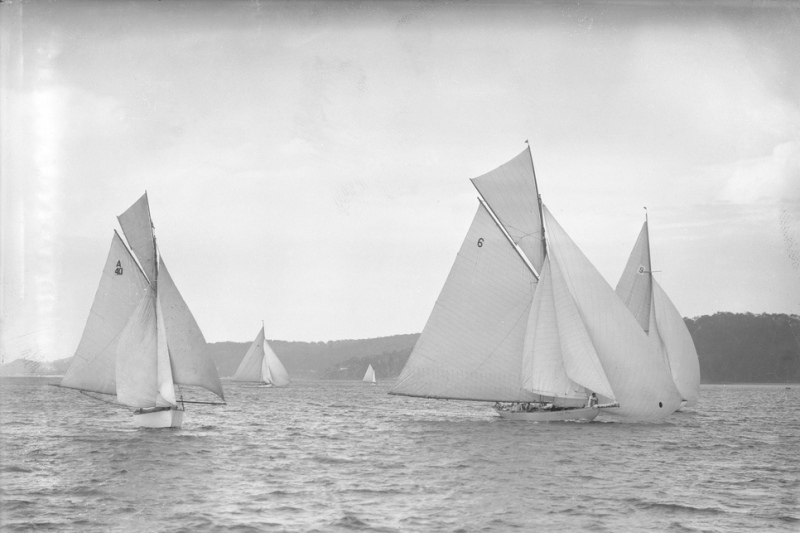
Pittwater Regatta - The vessel RAWHITI appears at the centre of this image with the number '6' on the mainsail. To the left is CUTTY SARK, displaying the text 'A 40' and the vessel to the far right with the number '19' on the mainsail is BONA, Image No: 11538, courtesy Australian National Maritime Museum.
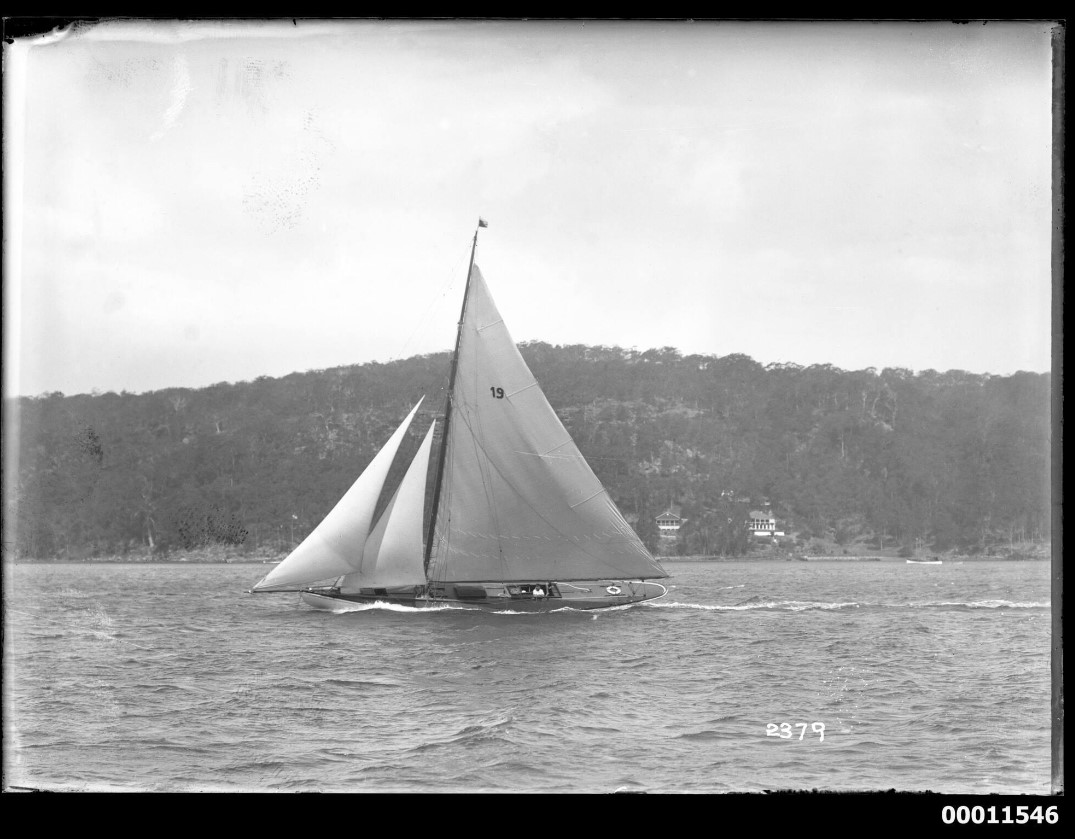
Bona on Pittwater, courtesy Australian National Maritime Museum.
There were just so many Masses said during these holidays, that when the house was burnt down by bush fires around 1936, we all wondered why. I must mention that the Redemptorists would come on this holiday complete with their cow, and if they could find a track down from West Head, perhaps in future years a road may be built to open up this beautiful area.
Wealth isn’t permanent and dad lost most of his wealth, but his dream was always the development of Pittwater. He would say the views between Manly and Palm Beach and Pittwater were the best in the world.
My father died in 1938 (Dr. Baron signed the death certificate) aged 48. Two years later we moved from Manly.
It wasn’t until 1983 that I first set foot on Scotland Island.
I had recently been to Pittwater, caught the ferry over to our old wharf (now named Hall’s Wharf), walked along Bona Avenue and up to where this Mr. Hall used to live. The house is now a Youth Hostel and the frangipani trees were still there. We used to play under these trees and gather up the blooms. When word got around that I was connected with the area, the Council invited us to the Community Hall on Scotland Island. This was a step in the right direction and I couldn’t believe my eyes to see how populated the area was.
The old ferry “Elvina” still in operation seems to me to be the original one, it looks so old.
Dad found no treasure on Scotland Island. I think the treasure is Scotland Island itself.
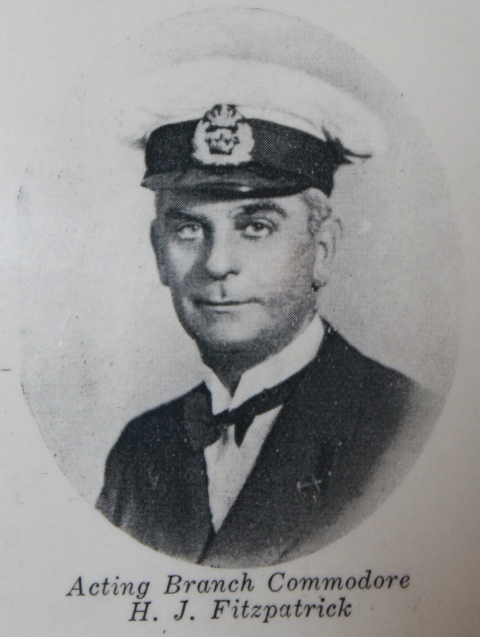
Elvina Holmes, daughter of the past owners of Scotland Island, and her daughter Jennifer, along with her husband Reg, were honoured guests at the opening of the new Scotland Island Community Hall on July 17, by the President of Warringah shire, Cnr. Paul Couvret.
Florence Terrace was named after her mother Florence Fitzpatrick, Kevin street after uncle Charlie Kevin, Vivian street after Uncle Vivian (her mother’s brother) and Elsie street after another aunt. Harold street came from yet another uncle and Richard road was named after her maternal grandfather, while Catherine Park was named after her maternal grandmother and Elizabeth Park was named after H.J.’s mother.
Loranna street was named after a launch, as was Florence, another launch.
Bona Crescent in Lovett Bay is named after Herbert's yacht.
Robertson road was named after D.G. Robertson, and so was Robertson Bay where Yamba now stands.
Pickering family of Lovett Bay - Notes
Fanny Elizabeth Pickering ‘formerly of Manly’ passed away October 4 1952, Probate Notice states she is a spinster – NSW BDM’s: PICKERING FANNY ELIZABETH 27096/1952 parents: WILLIAM FRANCIS and MARGARET registered at MANLY
Henry Bartholomew Pickering passed away January 4th 1933 NSW BDM’s: PICKERING HENRY B 296/1933 parents WILLIAM F and MARGARET registered at DRUMMOYNE
PICKERING January 4. at his brother's residence, Huntley's Point, Henry Bartholomew, of Church Point Pittwater, second son of the late William Francis Pickering, of Sydney. Family Notices (1933, January 5). The Sydney Morning Herald (NSW : 1842 - 1954), p. 8. Retrieved from http://nla.gov.au/nla.news-article16943322
Windward secured her Initial win of the Season for big yachts and was well handled by Mr. J. Muston. Her success was popular with P.E.Y.C members, and, no doubt, pleasing to her designer, Mr. Bill Pickering, now living in retirement at Lovett's Bay, Pittwater. Windward's most formidable opponent was Vanessa, which again displayed her qualities in working to windward in a blow … IN THE "BLOW" (1930, February 18). The Sun (Sydney, NSW : 1910 - 1954), p. 5 (FINAL EXTRA). Retrieved from http://nla.gov.au/nla.news-article226031838
An H B Pickering was granted permissive occupancy for boatshed, landing place and skids 3 ¾ perches, fronting Lot 45, private subdivision Por.11 – so on the Rocky Point peninsula – but facing Lovett Bay and the land he would later buy in 1917 and then sell to Dorothea.
Vol-Fol 1244-215 of former Floods is Rickards subdivision Vol-Fol- 2520-6 from 1915 on shows the sale of these lands and Mr. Pickering (Henry) buying some facing the other side of Lovett Bay. James Joseph Smith buys Lots 13 and 14 Vol Fol: 2638-221, December 10 1915 (Steffani lots on Litho.)
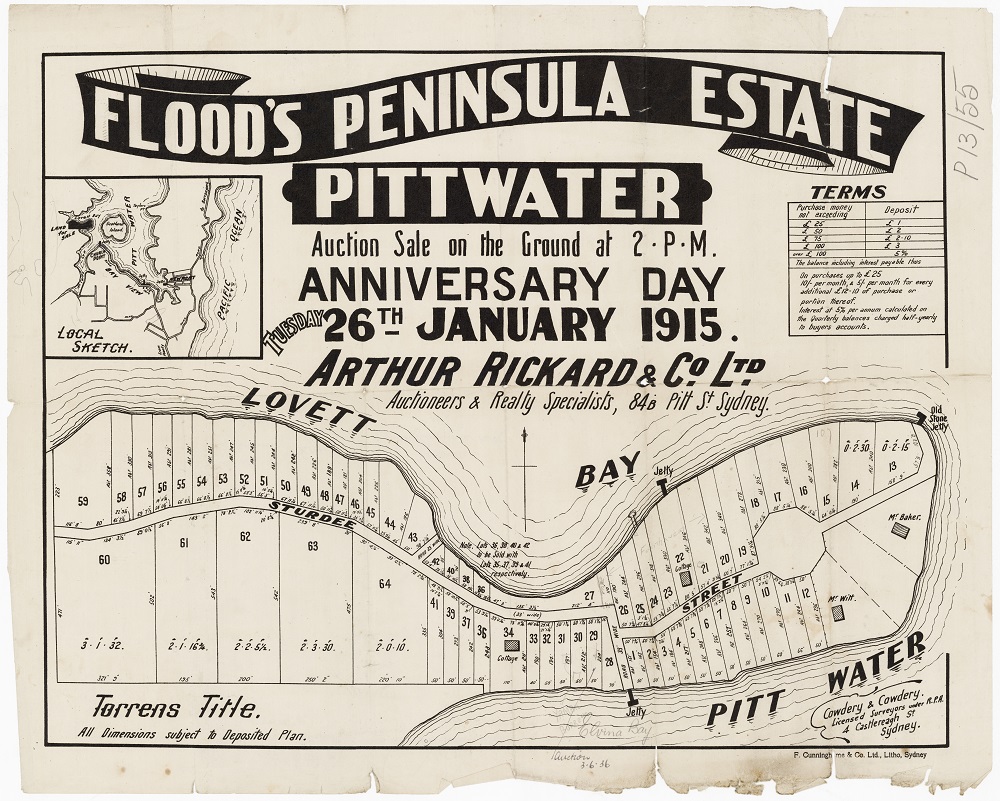
Lithograph courtesy State library of NSW. Item: SLNSW_FL9056004
Henry Bartholomew Pickering buys Lot 45 March 15 1916, the second sale of a Lot under Rickards – Vol- Fol 2653-159 (which goes to his sisters Fanny and Margaret – becoming Vol-Fol 4583-16 &17) – and buys Lot 46 on April 5th 1918 Vol-Fol 2836-133 (also goes to the girls same Vol-Fol). He also buys another Lot, alongside these.
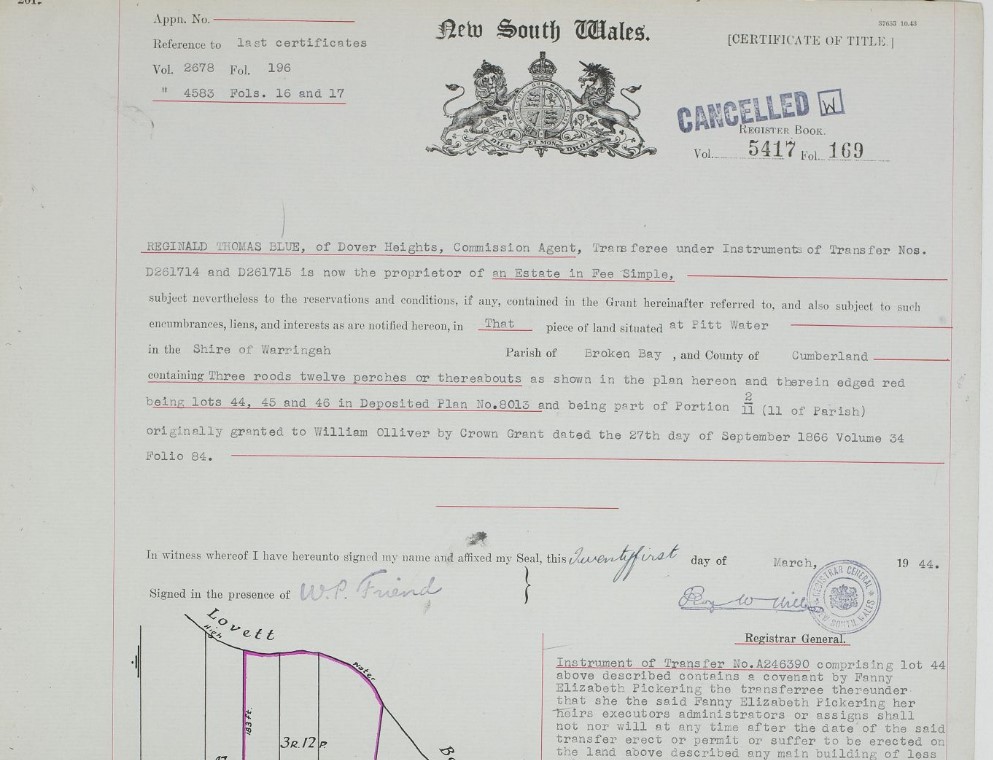
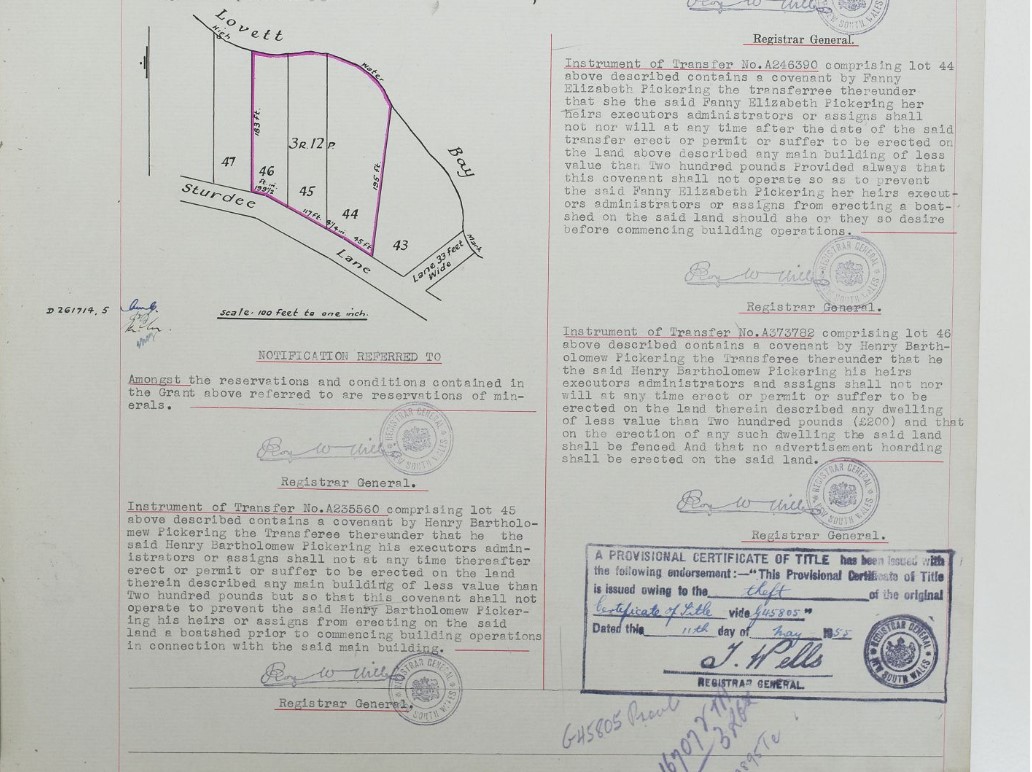
They sell Lots 44, 45, 46 and to Reginald Thomas Blue of Dover Heights, Commission agent, on January 25th, 1944 – Vol-Fol: 5417-169. Family members, who include; Roy Stephen Blue, Alana Pearl Schofield, Nerida Elevenia Branchley – transfer to Edith Lydia MacKellar, wife of John Athol MacKellar of Pymble, on December 24th 1954. and Jack Trevor Russell, of Oyster Bay, Airline Pilot, and Iris Russell, his wife, become joint tenants by transfer of the whole on October 13, 1966.
They hold onto it all until selling Lot 46 on March 10, 1981 to Francis Joseph Fallon of Lovett Bay and his wife Leonora, Vol-Fol: 14399-72, and Lots 44 and 45 are now in Vol-Fol: 14399-70 and 71.
Robert Alfred Meares buys Lots 21, 22, 23, 24, 25 and 26 on august 1st 1918 – Vol Fol: 2875-26/27 – Lot 22 has Fairhaven on it.
George Palmer buys Lot 48 -Vol-Fol: 3080-214, on June 24, 1920
George Oswald Hyde buys Lot 43 on June 24th 1920 – Vol-Fol: 3102-189
There was a William Pickering designing yachts in Australia – eg: ADVENT OF THE IOLANTHE
IOLANTHE was then produced, 38ft 6in overall, with a beam of 6ft 2in.She was a constant delight. Yachtsmen saw their way clearly before them. In 1895 the formula, L. x S.A. over 6,000, was Introduced, and James Coxhad Herreshoff built to the design of W. Pickering. Construction of this craft was an important step in Australian yacht designing. Herreshoff was a shallow-bodied craft, 33ft. 6in. L.W.L., with overhangs fore and aft. A bulb fin and a balanced rudder were other features of Herreshoff's departure from the orthodox lines. Herreshoff flattened the opposition, and in 1899 won the 100 guinea cup presented by the late Samuel Hordern, commodore of Royal Prince Alfred Yacht Club of New South Wales. Motor Boating-Yachting-Aquatics. (1937, December 9). Referee(Sydney, NSW : 1886 - 1939), p. 32. Retrieved fromhttp://nla.gov.au/nla.news-article127614763
Pickering family - NSW BDM's
Marriage:
87/1855 V185587 46 PICKERING WILLIAM F to WEIR MARGARET JA
MARRIED.
On Thursday last, the 19th instant, at the Free Church, Pitt-street, by the Rev. Mr. Salmon, Mr. W. F. Pickering, draper, George-street South, to Margaret, eldest daughter of Mr. James Weir, William-street, Woolloomooloo. Family Notices (1855, April 23). Empire (Sydney, NSW : 1850 - 1875), p. 4. Retrieved from http://nla.gov.au/nla.news-article60179191
On Thursday last, the 19th instant, at the Free Church, Pitt-street, by the Rev. Mr. Salmon, Mr. W. F. Pickering, draper, George-street South, to Margaret, eldest daughter of Mr. James Weir, William-street, Woolloomooloo. Family Notices (1855, April 23). The Sydney Morning Herald (NSW : 1842 - 1954), p. 8. Retrieved from http://nla.gov.au/nla.news-article12968446
CLEARANCES.
February: 10.-Louis and Miriam, brig, 150 tons,' Captain Pilfold, for Port Nicholson. Passengers-Mr. . Miles, Mr. Badcock, Mr. Pickering, and Mr. T. Weir. CLEARANCES. (1849, February 12). The Sydney Morning Herald (NSW : 1842 - 1954), p. 2. Retrieved from http://nla.gov.au/nla.news-article28646439
Children:
PICKERING JAMES W 2044/1856 V18562044 44A WILLIAM F MARGARET NV
PICKERING HENRY B 1151/1858 WILLIAM F MARGARET SYDNEY
PICKERING BARBARA 1161/1860 WILLIAM F MARGARET SYDNEY
PICKERING (FEMALE) 3709/1865 WILLIAM F MARGARET PADDINGTON
PICKERING CHARLES F 3987/1867 WILLIAM F MARGARET PADDINGTON
PICKERING FANNY E 4394/1869 WILLIAM F MARGARET PADDINGTON
PICKERING FRED SYDNEY 4741/1871 WILLIAM F MARGARET PADDINGTON
On the 6th instant, at his residence, 3, Elizabeth-terrace, Underwood-street, Paddington, WILLIAM FRANCIS PICKERING, native of Wragby, Lincolnshire, England, aged 43. Family Notices (1872, July 8). The Sydney Morning Herald (NSW : 1842 - 1954), p. 1. Retrieved from http://nla.gov.au/nla.news-article28413770
On the 6th instant, at his residence, 3, Elizabeth-terrace, Underwood-street, Paddington, WILLIAM FRANCIS PICKERING, late of William-street, draper, and native of Wragby, Lincolnshire, England, leaving a wife and seven children to mourn their loss. Family Notices (1872, July 9). The Sydney Morning Herald (NSW : 1842 - 1954), p. 1. Retrieved from http://nla.gov.au/nla.news-article13260199
His parents: PICKERING WILLIAM F 2274/1872 WILLIAM and BARBARA
Margaret – and Balmain connection again:
PICKERING — December 14th, 1919, at her residence, Numa Street, Balmain, Margaret, widow of the late William Francis Pickering, of Sydney, aged 86 years. Family Notices (1919, December 16). The Sydney Morning Herald (NSW : 1842 - 1954), p. 6. Retrieved from http://nla.gov.au/nla.news-article28093452
Parents: PICKERING MARGARET 22497/1919 JAMES and ELIZABETH BALMAIN NORTH
In the Supreme Court of New South Wales.
In the Insolvent Estate of William Francis Pickering, of William-street, Woolloomooloo, draper. TAKE NOTICE, that I. William Francis A Pickering, the abovenamed Insolvent, intend to apply to the Chief Commissioner of Insolvent Estates at Sydney, on Tuesday, the 10th day of March next, at noon, that a Certificate may be granted to me, under the Act of the Governor and Legislative Council, 7 Victoria, No. 19,—Dated at Sydney, the fourth day of February, A D. 1857.
WILLIAM FRANCIS PICKERING. 246 4s. 6d. TAKE NOTICE, that I, William Francis Pickering, the abovenamed Insolvent, (1857, February 6). New South Wales Government Gazette (Sydney, NSW : 1832 - 1900), p. 235. Retrieved from http://nla.gov.au/nla.news-article229955351
And again; IN INSOLVENCY. (1869, August 27). New South Wales Government Gazette (Sydney, NSW : 1832 - 1900), p. 2173. Retrieved from http://nla.gov.au/nla.news-article225586073
Windward's Gascoigne Cup Race
The staysail schooner yacht Windward skilfully sailed by her owner. J. M. Hardie, won the Gascoigne Cup race for big class yachts yesterday over an ocean and harbor course of 20.6 nautical miles. The race was held in a fresh southerly wind and moderate sea; conditions that tested the capabilities of the yachts and crews. At Long Reef, Narrabeen, the rounding times were: Windward 3.14.35, Thetis 3.22.55, Brand V. 3.23.35, Morna 3.37.3, and Norn 3.38.35. The breeze provided a dead muzzle to North Head, which Brand V. cleared with a lead of three lengths from Windward. Brand V. maintained the lead on the work to Bradley's Head. Here she met with a calm patch and was passed by Windward which yacht eventually crossed the finishing line in Neutral Bay, Imin. 33sec. ahead of Brand V. Jusl prior to the start of the race Utiekah II. (H. Nossiter) carried away one of her chain plates and was compelled to withdraw from the race. The 8-metre yacht Norn (A. F. Albert), for some unaccountable reason, raced with a small trysail, and was outclassed by her 8-metre opponent Brand V. Maple Loaf, with owner N. G. Booth at the tiller, gained his third consecutive win In the third of four races for the latt. Cadet Dinghy Championship of New South Wales. Both races were conducted by the Royal Sydney Yacht Squadron. Sydney's Amateurs The strong southerly wind encountered by the competing yachtsmen was responsible for a number of mishaps In the big programme of races held by the Sydney Amateur Sailing Club yesterday. In the Merrington Cup race for A class yachts, Nyr(a (It. L. Patrick) and Niobe (G. Carter) were dismasted. Gen-estre (K. King) carried away her mast in the race for B class boats. Womcrnh, a half-decked boat, sailed by J. Sullivan, when crossing the starting line In the race for B class yachts and boats, collided with the bow of the starter's launch and Immediately filled and capsized, precipitating her crew into the water. The crew were rescued by Mr. A. H. Spence, and the boat was towed into Neutral Bay and beached. The top section of the mainsail of Hoana (Oscar Backhouse), a competitor in the A class yachts race for the Merrington Cup, was torn in a strong squall. Hoana's skipper carried on and finished In third place. Windward's Gascoigne Cup Race (1933, December 10). The Sun (Sydney, NSW : 1910 - 1954), p. 23. Retrieved from http://nla.gov.au/nla.news-article230199058
YACHTING.
Cutter Windward First.
The cutter-rigged Windward, with J. Muston at the helm, won her first race of the season on Saturday, when she defeated Morna, sailed by A. Stevens, In the Royal Sydney Yacht Squadrons annual contest for the Revonah Cup. The schooner Windward, which was steered by her owner, … YACHTING. (1935, March 18). The Sydney Morning Herald (NSW : 1842 - 1954), p. 15. Retrieved from http://nla.gov.au/nla.news-article17164795
MANY ALTERATIONS TO DEEP
KEELERS
Schooner 'Windward' Will Carry a
Wishbone Gaff On New Masts
'SAYONARA' TO RE-ENTER RACING
( By 'FOR'ARD HAND')
WHEN Mr.' J. M. Hardie's staysail schooner, 'Windward,' reappears, she will appear somewhat strange to those who follow yachting on Sydney Harbor. A: new mainmast of 51ft 6in has been stepped, and a new foremast, 45ft 4ln,. has been placed in position. The craft, which won the Sir Thomas Lipton Cup for 1934-35. is to carry a new suit, of Australian-made sails, one of which will be a .Wishbone gaff, to be attached to the foremast by two gooseneck, fittings. This sail is an American idea, and was carried on the 'Vamarle'. in 1933, and proved a success on New York Harbor. The dimensions of the 'Windward's' new sails are interesting. The mainsail will be 576 sq. feet, inainstaysail 141 sq. feet, wishbone foresail -165 sq. feet, forestay sail 104 sq. feet, quadrilateral jib 206 sq. feet. This jib will be the first of its kind utilised in Australia. MANY ALTERATIONS TO DEEP KEELERS (1935, September 12). Referee (Sydney, NSW : 1886 - 1939), p. 17. Retrieved from http://nla.gov.au/nla.news-article135522294
Mackellar Brothers
Dorothea Mackellar had three brothers: Keith, Eric, and Malcolm. Keith Kinnaird Mackellar was an older brother to poet Dorothea Mackellar, and significant for being the only Australian soldier who was brought back to Australia of over one thousand men who lost their lives in the Boer War. Mackellar lost his life within a month, on 11 July 1900, a week before his twentieth birthday, when shot through the head with a Mauser bullet in a skirmish near Derdepoort in Pretoria. It is said the Boers lured Mackellar and his men to their farm by dressing in the khaki uniforms and helmets of the Australian Horse. When a burial party found Mackellar’s body the next day, they discovered 36 empty cartridge cases. He was first placed at rest at the Wonderbloom farm near the site where he fell, and then in the military section of the cemetery in Pretoria.
His funeral service was conducted with a church parade at All Saints’ Church Woollahra on 5 August 1900, with hymns accompanied by the Band of the Scottish Rifles. There was a large congregation. His death was felt keenly by the Mackellar family and is said to have inspired Dorothea’s first recorded poem ‘When It Comes’, written when she was 15.
…So would I like to die, but where?
On the open plain, in the open air,
Where the red blood soaks in the thirsty grass
And the wild things tread my grave as
They pass –
There would I die.
According to Dorothea’s private nurse and memoirist, she was unable to speak about her brother without emotion even in the last years of her life.
The Boer War ended in 1902, and in 1905 Mackellar’s family brought his body home to Australia at a cost of £1000. He was transported in a container marked ‘Curios’ so as to avoid contact with customs and any superstitious sailors who might find him.[13] Mackellar now rests in Waverley Cemetery in the Mackellar family plot under a white marble cross from South Africa. His family’s act was significant in that of over one thousand Australian soldiers who lost their lives in this war he is the only one who was brought back to Australia. Witton, Vanessa, Mackellar, Keith Kinnaird , Dictionary of Sydney, 2018, https://dictionaryofsydney.org/entry/mackellar_keith_kinnaird,
Eric and Malcolm were the sons who later managed their father's properties and became respected community members in the Gunnedah area.
Eric Buckland Mackellar (1883-1950) - Brother of Keith Kinnaird Mackellar, Isobel Marion Dorothea Mackellar and Malcolm Mackellar. Husband of Ann Frances (Thornton) MacKellar.
MARRIAGES.
MACKELLAR-THORNTON.—October 10, at All Saints Church, Woollahra, by the Rev. Canon Langley, Ann Frances third daughter of Mr. and Mrs. John E. Thornton, Melbourne, to Eric Buckland, eldest surviving son of the late Sir Charles Mackellar and Lady-Mackellar, of Sydney. Family Notices (1927, October 19). The Sydney Morning Herald (NSW : 1842 - 1954), p. 14. Retrieved from http://nla.gov.au/nla.news-article16412391
The death of Mr. Eric Buckland Mackellar took place at Darling Point, Sydney, on March 29. The late Mr. Mackellar was well known in the Gunnedah district for some years when he resided at Kurrem-bede. He was a fine horseman and a noted polo player. A son of the late Sir Charles and Lady Mackellar, deceased was a brother of the late Mr. Malcolm Mackellar, who was so highly esteemed in the district. He was also predeceased by another brother, Keith. The late Mr. Mackellar is survived by his sister, Miss Dorothea Mackel-lar, who is famed for her Australian poems. The funeral ser-vice was held at the Western Suburbs Crematorium. PERSONAL (1950, April 12). The Scone Advocate (NSW : 1887 - 1954), p. 1. Retrieved from http://nla.gov.au/nla.news-article162726626
£257,202 Estate
SYDNEY, Thursday. — Probate of the will of Eric Buckland Mackellar, 67, widower, of Woollahra, who died on March 29, leaving estate estimated at £257,202, was granted today. The estate was left to his brother, Malcolm Mackellar, and his sister, Isobel Marlon Dorothea Mackellar. £257,202 Estate (1950, August 11). The Age (Melbourne, Vic. : 1854 - 1954), p. 4. Retrieved from http://nla.gov.au/nla.news-article206404834
Isobel Marion Dorothea Mackellar was born on 1 Jul 1885 in Rose Bay, Sydney, New South Wales, Australia, daughter of Sir Charles Kinnaird Mackellar (1844 - 1926) and Lady Marion (Buckland) Mackellar (1850 - 1933).
After Dorothea's younger brothers died she was able to keep both of the family homes; Cintra, Darling Point, and a house at Lovett Bay on Pittwater. In 1968 Dorothea was made an Officer of the Order of the British Empire for her contribution to Australian Literature. She died in the Scottish Hospital, Paddington on 14 January 1968, after she had a terrible fall at home. Dorothea Mackellar's service was held at St Mark's Anglican Church, Darling Point. After she was cremated, Dorothea was laid to rest in Waverley Cemetery, in the family vault. Dorothea Mackellar never married, although she was engaged twice. After her death, her estate was valued for probate at over $1,580,000.
November 23, 1948:
H V.Johnson. M.P,. 12/11/48, replying in regard to the propose& alteration of the name of the Warringah Electorate to Mackellar, that it has been decided that there shall be no further variations in the names as submitted to Parliament,: and that the name will therefore be changed. (30a) P.C. Spender M.P. 15/11/48 giving similar information, Resolved, _That a letter be sent to the Prime Minister stating the Council considers there is no justification hr changing the name. Crs. Dunbar, Forster, supported by, Cr, Harris)
By December 21 1948 they still hadn’t figured out this was a new electorate and the ‘Warringah’ one would remain:
(22) Palm Beach Kindergarten 6 Recreation Trust, 10/12/48, thanking Council for its rebate of rent on the Caretaker's cottage at Palm Beach, and extending to Councillors and Officers Compliments of the Season. Resolved, -, That the good wishes be reciprocated. . . . I (23) Warringah Federation 0; Progress Associations1.8/12/48, 'expressing strong .disapproval of the Prime Minister's action in changing the name, of 'Warringah’; to ‘Mackellar’ and urging that whatever steps are necessary to arouse public opinion be taken and ( b) convoying the Compliments of the Season to Council and Staff Resolved , - They be informed of the steps taken, and the good wishes be reciprocated. (Crs. Butcher, Earries)
Considering Dorothea is stated to have held on to her Pittwater place of peace until she passed away, a very poor treatment of a local. In February they receive another letter of support from the Warringah-ites.
By November 29, 1949 they’re helping out a political party campaigning for the seat:
Mackellar Campaign Committee, 16/11//49,requesting permission to place a caravan at the corner, of Oaks Avenue and Pi4water' Road, Deewhy, for use as a Committee room for the Liberal Party. Resolved, - That the Council raise no objection.
In 1951:
Ordinary Meeting, 12/6/51. I The REPORT OF THE COMMITTEE COMPRISING REPRESENTATIVES OF MANLY AND WARRINGAH in regard to formation of a County Council to control the supply and distribution of electricity, as contained Electric- in the Minutes of that Committee's meetings held on 30th ult and the16th inst. were adopted on the motion of Cr. Fisher, seconded by Cr. McKay, and the following motion passed, 8. (1) That this Council, in accordance with the provisions of the local Government Act, 1919, petition His Excellency the Governor to constitute a County District consisting of the areas of the Municipality of Manly and the Shire of Warringah. (2) That His Excellency the Governor be requested to give the name of the Mackellar County Council to such County District; (3) That His E::collency the Governor be requested to delegate to the Council of the said County District the power to exorcise or perform for the benefit of the County District. (a) All the pourers or duties under Section 382 of the afore- said Act relating to the construction, extension, protection, maintenance, control and management of works for. the supply of electricity, and all the powers or duties under Sections 416 to 419, both inclusive, of the aforesaid Act, relating to the supply of electricity and the supply and installing of electrical fittings and appliances (including the power to purchase, generate, manufacture or obtain electricity or electrical fittings and appliances for solo or hire); (b) The power to borrow any moneys from time to time for the purpose of any work or service or any object which the Council of the said County District is authorised by law to construct, carry on or of Act; (o) The power under and subject to the provisions of Section 188 of the aforesaid Act, to issue debentures, mortgage deeds or bonds for securing the repayment of the principal and interest of any moneys so borrowed; (d) The power or the duty to levy from time to time a loan rate under and subject to the provisions of Section 124 of the aforesaid Act, so far.as applicable, in connection with any loan or loans so raised; (e) The power, under and subject to the provisions of Section 420 of the aforesaid Act, to grant permission to any person not authorised by Statute or otherwise, to supply electric currant to the public, and for such purposes to lay or erect pipes, wires, poles and other apparatus out under or over any public place; and (f) The power, under and subject to the provisions of Section 421 of the aforesaid Act, to grant permission to any person to construct lay, suspend, or otherwise place any rails, pipes, wires, cables, tunnels, or structures of any sort whatsoever upon or under or over any public place for and in connection with the supply of electric current. (4) ,For the purpose only of the Council of the said County District exorcising the powers or performing the duties defined in Clause (3) hereof, His Excellency the Governor be also requested to delegate to the Council of the said County. District the power to exorcise or perform for the benefit of the said County District (but subject to the operation of the provisions contained in Part XX1X of the said Act) the powers or duties contained:in the following Sections of the aforesaid Act, which. by law.the constit- uent Councils or any one of them may perform or exercise, that is .. to. say.- Suction 110 (Trading Funds), Sections, to (making and levying rates), Section 166 (right.to char0 ancEfeeeh Sections 167, 169 and 172 (further as to-chargee-and lood 'Sections 173. to 200, both inclusive (loans), Sections 383 and 384 entering land - compensation, and taking land on louse), Section-42 i (building for public purposos), Section 501 (works crossing railway linesii,Section 603(wat oxponditure), Section qq§ (oxtension.of, works outside area), Section'612F (diseentihuasp&Of.supply'of -
Proposed County Council - Letter from Local Government Depart- ment, 4/7/51, stating that the Governor has approved the issue of a proclamation constituting the Municipality of Manly and the Shire of Warringah as a County District for local govern.- County ment purposes with the name of the Mackellar Cbunty District,. District the proclamation to appoint 1/9/51 as the date of delegation under Section 5k4B of the Act, and asking the Cbuncil to elect 18. its three representatives. Resolved,- That a Special Meeting- be held at 7 p.m. on 16th inst. for this purpose. The meeting thereupon terminated at 11 p.m. going Minutes were adopted as a correct record on the Thliy day of July, 1951.
RE will of ISOBEL MARION DOROTHEA MACKELLAR, late of Darling Point, in the State of New South Wales, gentlewoman, spinster, deceased.—Probate granted by the Supreme Court of New South Wales on 25th March, 1968.— Pursuant to the Wills, Probate and Administration Act, 18981954, Testator's Family Maintenance and Guardianship of Infants Act, 1916-1954, and Trustee Act, 1925-1942, The Trustees Executors & Agency Company Limited, the executors of the will of the said Isobel Marion Dorothea Mackellar, who died on the 14th January, 1968, hereby give notice that creditors and others having claim against or to the estate of the said deceased are required to send particulars of their claims to the said executors at care of Iceton, Faithfull & Baldock, Solicitors, 28 O'Connell Street, Sydney, on or before the 10th June, 1968, at the expiration of which time the said executors will distribute the assets, having regard only to the claims of which they then have notice.—Dated the 1st day of April, 1968. ICETON, FAITHFULL & BALDOCK, Proctors, 28 O'Connell Street, Sydney. 7076—$4 RE will of ISOBEL MARION DOROTHEA MACKELLAR, (1968, April 5). Government Gazette of the State of New South Wales (Sydney, NSW : 1901 - 2001), p. 1425. Retrieved from http://nla.gov.au/nla.news-article220059950
Poetess and Novelist Dorothea Mackellar
MISS DOROTHEA MACKELLAR' S lovely old home, "Rosemont," at Woollahra, is approached through a long and shady drive of overhanging trees, bordered at the lower sides with a thick undergrowth of fern. "A lifting entrance to the home of a poetess, surely, ' thought the pedestrian, scattering the brown gravel with impatient footsteps; and even more so when, a few minutes later, a wide vista of garden and lawn, flanked on one side by a tennis court and several summer-houses, came into view. A rambling old house, with wide stone verandahs, furnished Invitingly with hammocks and lounges, served to intensify the first impression that here was quietness and pence — a setting so remotely restful that one realised with a start of surprise it was only a short distance from the humdrum and noise of the city.
In Miss Mackellar's study was not only the poetess, but Dan. Dan is a cocker spaniel, and makes himself as much at home as any of the other inmates of the house. And Dan is not alone in this, either. He has two other canine companions — John and James. John is also a cocker spaniel, and James an Aberdeen terrier. Their existence, were the luxury of it known, would be the envy of many other dogs; but happily fate has decreed that they remain In ignorance. Miss Mackellar loves them. She has photographs of them in various stages of youth and maturity since they were tiny puppies, enough almost to fill an album.
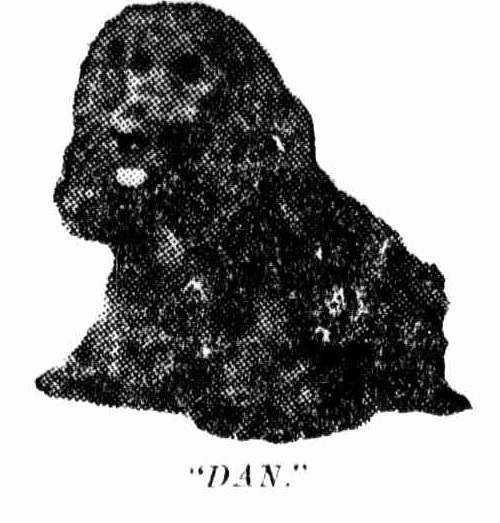
"DAN."
She is busy just at present packing, for she intends leaving for England by the Cathay on March 22. Lady Mackellar is going' with her, and they will be away for twelve months, or maybe longer. They are to remain in England until the Autumn, and then go south to Italy. As an Australian poetess Dorothea Mackellar is well known. Her verse is widely published, and is memorised and quoted in part by many lovers of the aesthetic. She commenced to publish at the early age of seventeen, and inspiration, with her, seems to have no ending. Not content with writing "mere" verse, she has. to her credit, written several novels. "Outlaw's Luck" is entirely her own composition, but two others — "Two's Company" and "The Little Blue Devil" — were written in collaboration with Ruth Bedford, a girl friend.
She finds now that family concerns take up much of her time, and is content, with the exception of odd verse publications, to leave writing for the time being in the background. England, Europe, Canada, Japan, Java, and other parts of the East are merely names to many of us, but not to Miss Mackellar. She has visited them all. In Australia also her time has not all been confined to the city. As a lover of Nature the country naturally appeals to her, and she has spent many months at odd times on stations in New South Wales and Queensland. She owns a small cottage at Broken Bay, where, when time permits, she enjoys a holiday.
Miss Mackellar is very interested in the work of the Bush Book Club. As head of the selection committee for reading matter for outback districts she has some extremely busy times, for the matter of selection and of reviewing the thousand) of books sent in is no small task, even for a committee of philanthropists. In amateur acting she is also interested, and has been associated with the Repertory Society for years, and is a member of the advisory committee of the Playbox Theatre. At one time she did a lot of acting herself.
While abroad Miss Mackellar hopes to be able to attend the P.E.N. Club Conference in Brussels in June, to which she has been invited by Mrs. C. A. Dawson Scott, the founder and well-known novelist, and of which she is also a member. The club is a cele-purely social. The membership is confined strictly to the lettered elite — publishers, editors, and novelists. P.E.N. What could be more apt? Miss Mackellar has hopes of establishing a branch here when she returns from abroad.
.jpg?timestamp=1652395662977)
MISS DOROTHY MACKELLAR.
Poetess and Novelist Dorothea Mackellar (1927, March 10). The Daily Telegraph (Sydney, NSW : 1883 - 1930), p. 5 (The Daily Telegraph Woman's Supplement). Retrieved from http://nla.gov.au/nla.news-article245876867
Royal Australian Institute of Architects & Institute of Architects of New South Wales & Board of Architects of New South Wales. Vol. 9 No. 1 (20 Jan 1921). THE FRONT DOOR OF MANLY, Architecture : an Australasian review of architecture and the allied arts and sciences Retrieved from http://nla.gov.au/nla.obj-3017319869
Towlers/Morning Bay Notes
The Trustees acquired an ordnance reserve of just over 3 acres (1.2 hectares) on the northern shore of Towlers Bay in July 1911. Upon this land were two cottages, a boatshed, workshop and timber jetty. This area together with a Powder Hulk moored in the bay had been the depot of the Explosives Department. One cottage became the residence of the Pittwater staff employed by the Chase Trust and the other cottage became a holiday cottage available to the public but it was mainly used by the Trustees.
The jetty at Towlers Bay was extended in 1905, a bathing pool was built in 1906 and a slipway for launches was erected in 1909. The timber jetty was replaced by a stone jetty in 1911. - (Sue Gould, Coasters Retreat, Pittwater: Recollections and historical notes, 1993.)

Section from Aerial map dated 1.1.1961

stated to be Towlers Bay wharf, circa 2000
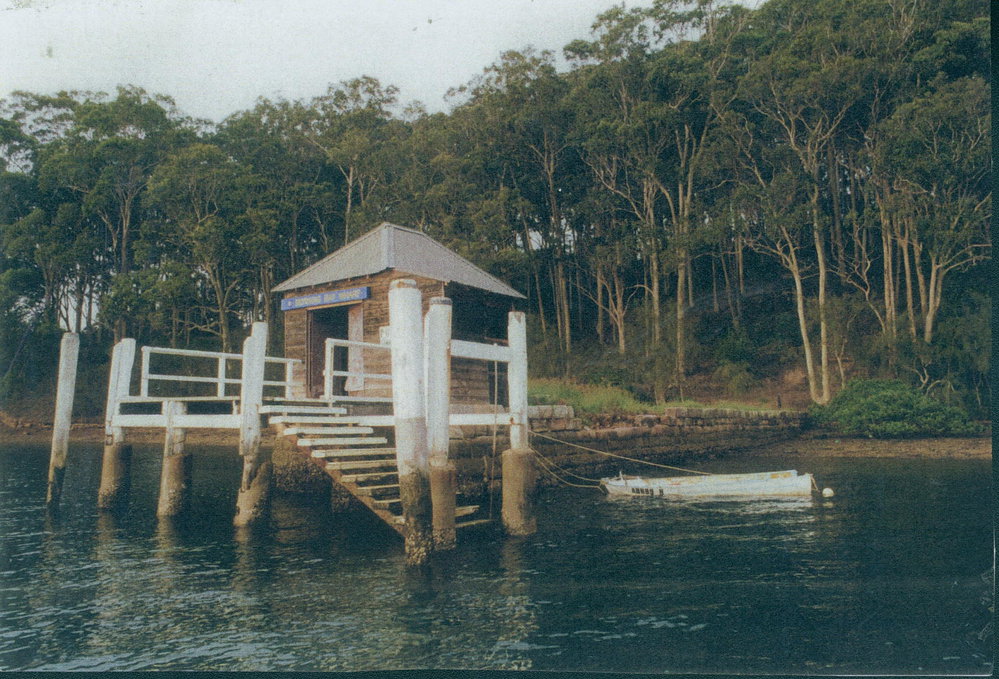
Stated to be Morning Bay wharf, circa 2000 - Pittwater Council records
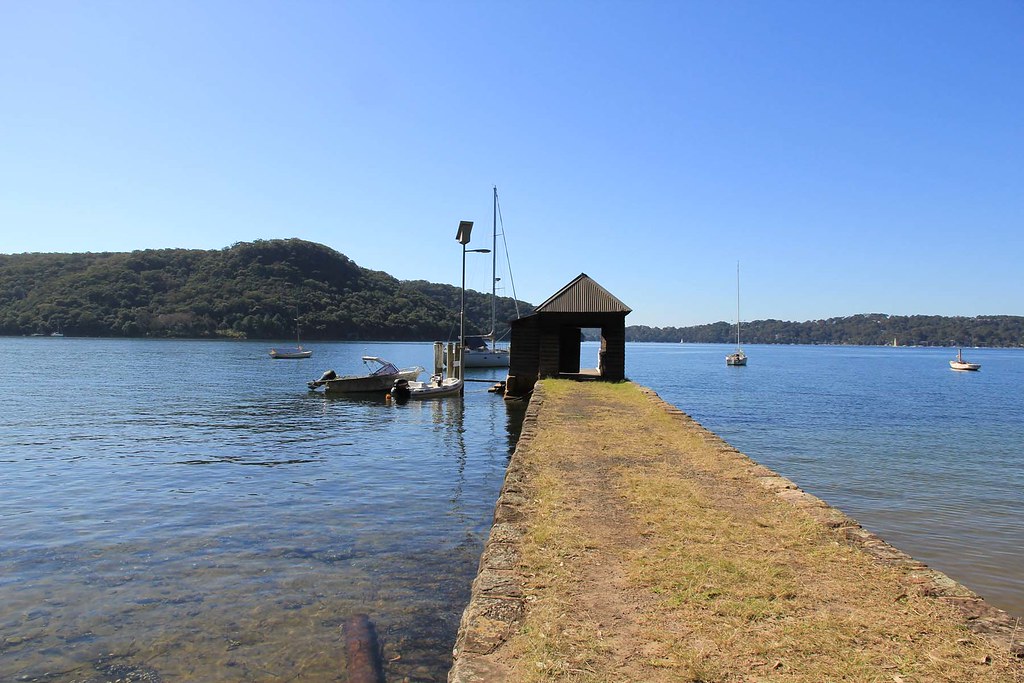
Towler's Bay wharf 2011, via Flickr
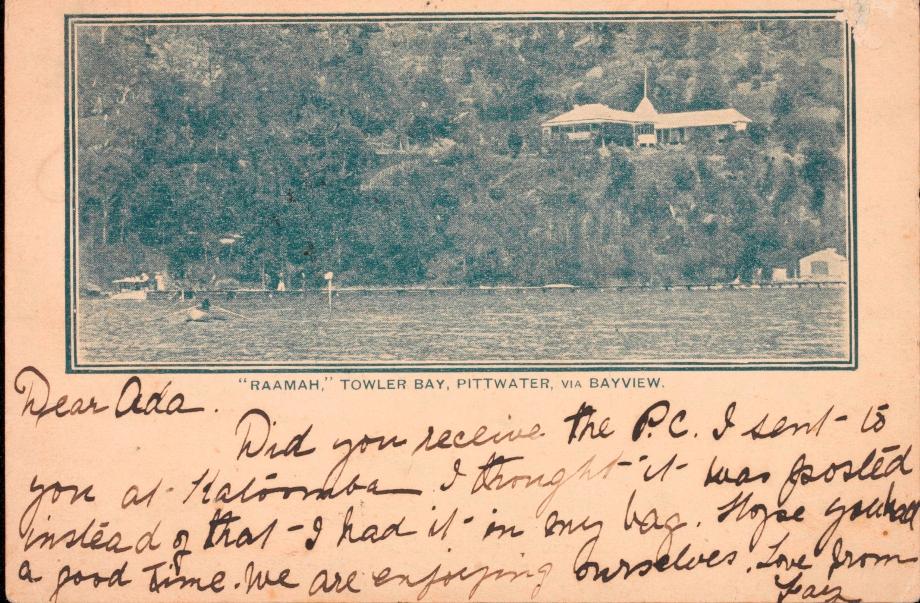
.jpg?timestamp=1757994850504)
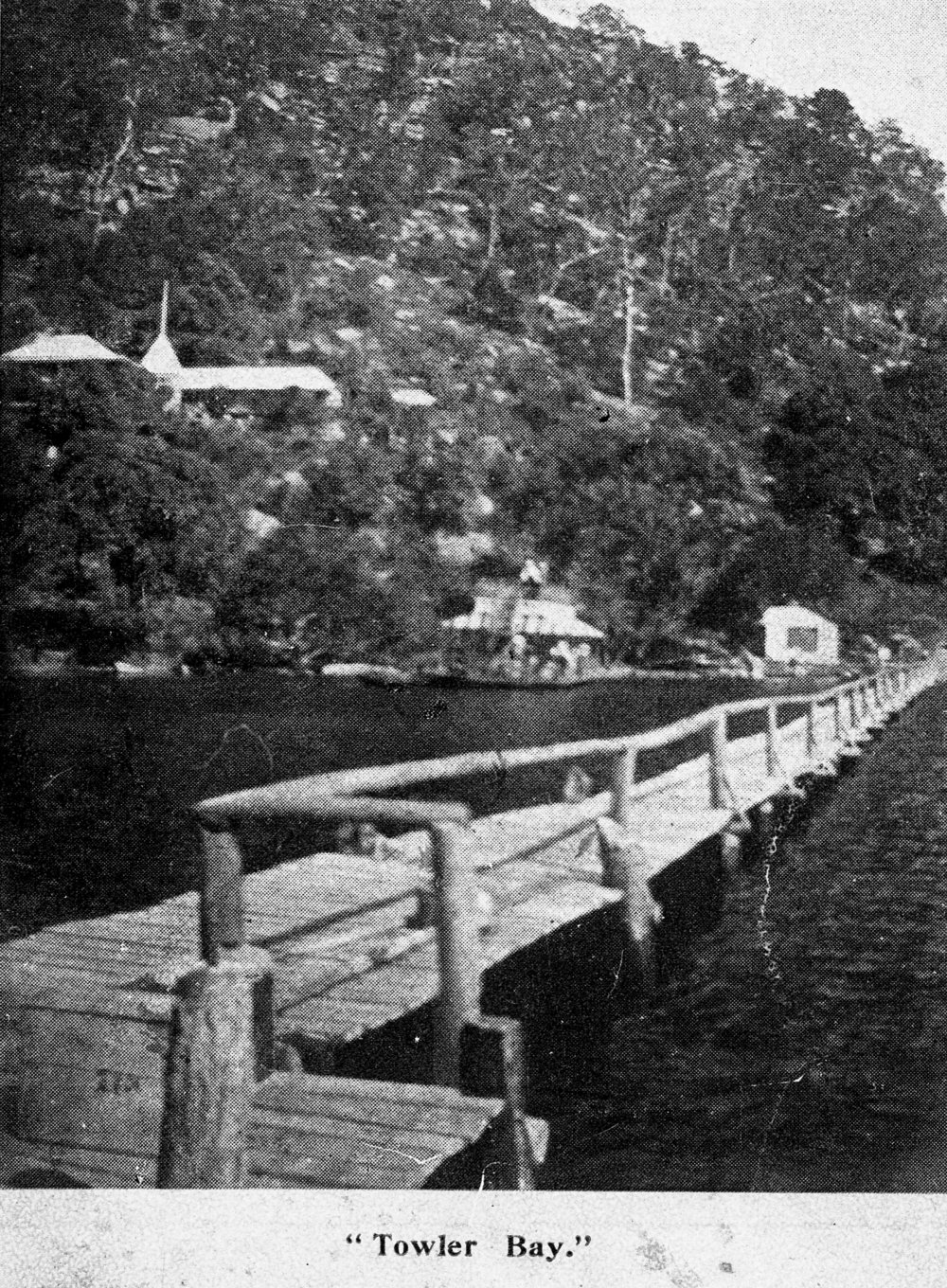
Towler's Bay Jetty, circa 1912, 'Raamah' can be seen in the background to left
This isn't same site, but worth noting:
PITTWATER. — Block of Land, 11 acres 3 roods 2 pers. WATER FRONTAGE TO LOVETT'S BAY. Hardie and Gorman. Advertising (1914, January 14). The Daily Telegraph (Sydney, NSW : 1883 - 1930), p. 4. Retrieved from http://nla.gov.au/nla.news-article239020170
Some New South Wales Grown Mangoes.
Since the article on mango cultivation appeared in these columns, a great deal of Interest has been awakened in this valuable sub-tropical fruit. The other day Mr. J. S. Edgar brought to this office several very fine mangoes that had been grown in the late Mr. R. Robinson's garden at Pittwater, Broken Bay. The trees, which are now about five years' old, were obtained from the Botanic Gardens, Rockhampton, Queensland, and have some excellent crops this year. They are growing in a deep, rich soil, about 50ft above sea level, and are a picture of health.. Notwithstanding the very dry season that has been experienced, the fruit is well developed and of good flavor. The mango trees at Pittwater go to prove that this sub-tropical fruit can be produced in sheltered positions in the neighborhood of Sydney. " Some New South Wales Grown Mangoes. (1899, March 11). Australian Town and Country Journal (Sydney, NSW : 1870 - 1919), p. 17. Retrieved from http://nla.gov.au/nla.news-article71325097
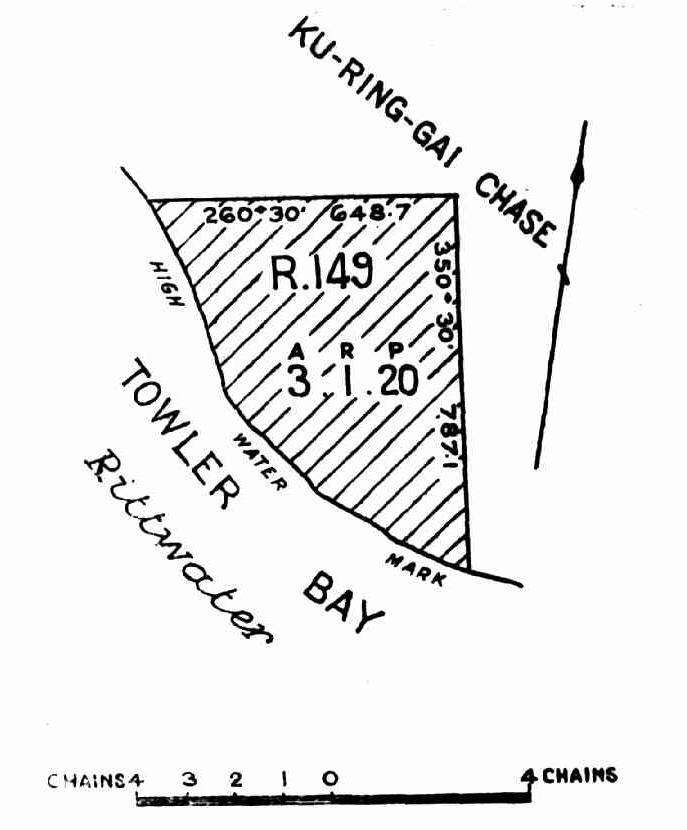
.jpg?timestamp=1758220445007)
.jpg?timestamp=1758220477591)
.jpg?timestamp=1758220537418)
Australian Women Novelists
By GILBERT MANT.
—THERE is plenty of feminine journalistic talent in Australia—but perhaps it is asking too much to expect them to enter the lists with less ephemeral writing!”
So Warren Graves concludes his article, “Women as Novelists” (W.M. 22/9/25). But surely the lists of fiction have been entered (and very capably, too) by nine or ten well-known Australian women writers! The influence of women on Australian literature is a very powerful one. In fact, all the most notable Australian novels of the last five years have been written by women —with the exception, perhaps, of Vance Palmer’s Cronulla. By Australian novels I mean those
revealing essentially Australian atmosphere and true-to-life characterisation. Many a book is dubbed “Australian” merely because its author happened to be a native of this country—for example, Dale Collins and his Ordeal. The first woman novelist’s name that comes into my mind is Mary Marlowe …. Rosemary Rees writes simply and with the strictest attention to detail; so that her This woman’s job is that of manager of the famous Iford Irish Wolf-hound Pack. She is here seen out exercising some of her charges at the kennels at Bromham, Bedfordshire. The Irish wolfhound, by the way, is one of the largest dogs in the world. Her stories never lack charm and are never overdrawn. Her latest novel is on the point of being published by Herbert Jenkins.
I do not propose to enlarge upon Miss M. L. Skinner’s work, since her book, Black Swans, was reviewed fully in the Mirror on September 15. It is pleasing, however, to see this brilliant West Australian authoress turning to individual effort instead of collaborating with D. H. Lawrence, an author whose realism is not particularly adaptable to Australian life.
I am now left with the youngest of our women novelists, and one who does not usually go to the bush for the settings of her charming stories. I refer to Jean Curlewis, the daughter of Australia’s most popular and well beloved children’s writer, Ethel Turner. Jean Curlewis is one of the most natural and delightful of writers. Her tales, as a rule, are woven around Palm Beach and Pittwater (N.S.W.), and the characters, simply and gracefully drawn, are always infectiously youthful and charming. Jean Curlewis might well be termed The Younger Generation’s Novelist; and yet book-lovers of more mature years can always read her stories of breathless adventures and love with unconcealed delight. And that, I think, is the supreme test of a young writer’s literary worth. In her last novel, The Dawn Man, Jean Curlewis’s writing has taken a more sophisticated note. That was inevitable, I suppose, but it is her earlier books, such as Beach Beyond and Drowning Maze, that have given me the most enjoyment. Of their class they are an achievement that any literary community might take pride in. In the matter of children’s stories, Australia has been particularly fortunate. Ethel Turner (who has not read Seven Little Australians?) , Lilian Turner, Mary Grant Bruce, Vera Dwyer and others, have done for us what the authoress of Little Women did for America. Australian mothers will always owe them a debt of gratitude. In conclusion, when one looks back over the field of the novel in Australia, one is impressed by the achievements of women writers, and appalled by the absence of their, masculine rivals. Apart from the publications of the N.S.W. Bookstall Company, the male influence in the Australian novel is almost negligible. The great Australian novel has not been written yet, but, examining the progress made so far, it seems more than likely that it will be a woman who first reaches that goal. Vol. 1 No. 50 (3 November 1925) . Australian Women Novelists, The Australian woman's mirror Retrieved from http://nla.gov.au/nla.obj-426922135
VARIOUS VERSE
[FOR THE BULLETIN.]
Pittwater.
From out the sapphire morning sea an eager
sun has sped,
Swift scattering his retinue of rose and
amber blent,
And arrogant above the hills has thrust
his aureate head
To look upon this rippled bay among the
long hills pent.
Oh, sheen of sparkling water between the
swaying trees,
Bird-clarions float joyously on every errant
breeze,
Wind-song in murmurous cadences is down
the valley borne
Look up, and drink the beauty of the morn!
Here in the dim-lit forest-ways bedight with
fern and bloom,
A sun-streaked path dips crookedly across
the little hill;
Like Autumn’s tawny leaves a-wing within
the dappled gloom
Drifts by a stream of butterflies blown
at the wind’s soft will.
Oh, golden-green of bushland against the
shimmering sky,
Deep in the azure water the bent tree-
shadows lie;
The sea sends from beyond the hills its old
insistent croon —•
Look up, and know the glory of the moon!
Soft has the dusk, the cool blue dusk, drop-
ped low on beach and hill;
The solitary vales are hid in trails of silver
mist;
The world in this brief twilight hour is
hushed and lone and still;
Long shadows steal across the slopes in
robes of amethyst.
Oh, little, winding seashore road that in the
darkness lies,
With lure of some dim, elfin path beneath
the velvet skies,
Clear glows the slim, curvated moon in
realms of waking light—
Look up, and feel the magic of the night!
N.S.W.
LILLA GORMHUILLE McKAY. Ran I twice the same year;
Vol. 43 No. 2203 (4 May 1922) VARIOUS VERSE [FOR THE BULLETIN.] Pittwater., The bulletin Retrieved from http://nla.gov.au/nla.obj-632671527 and Vol. 43 No. 2203 (4 May 1922). VARIOUS VERSE [FOR THE BULLETIN.] Pittwater., The bulletin Retrieved, from http://nla.gov.au/nla.obj-632671527

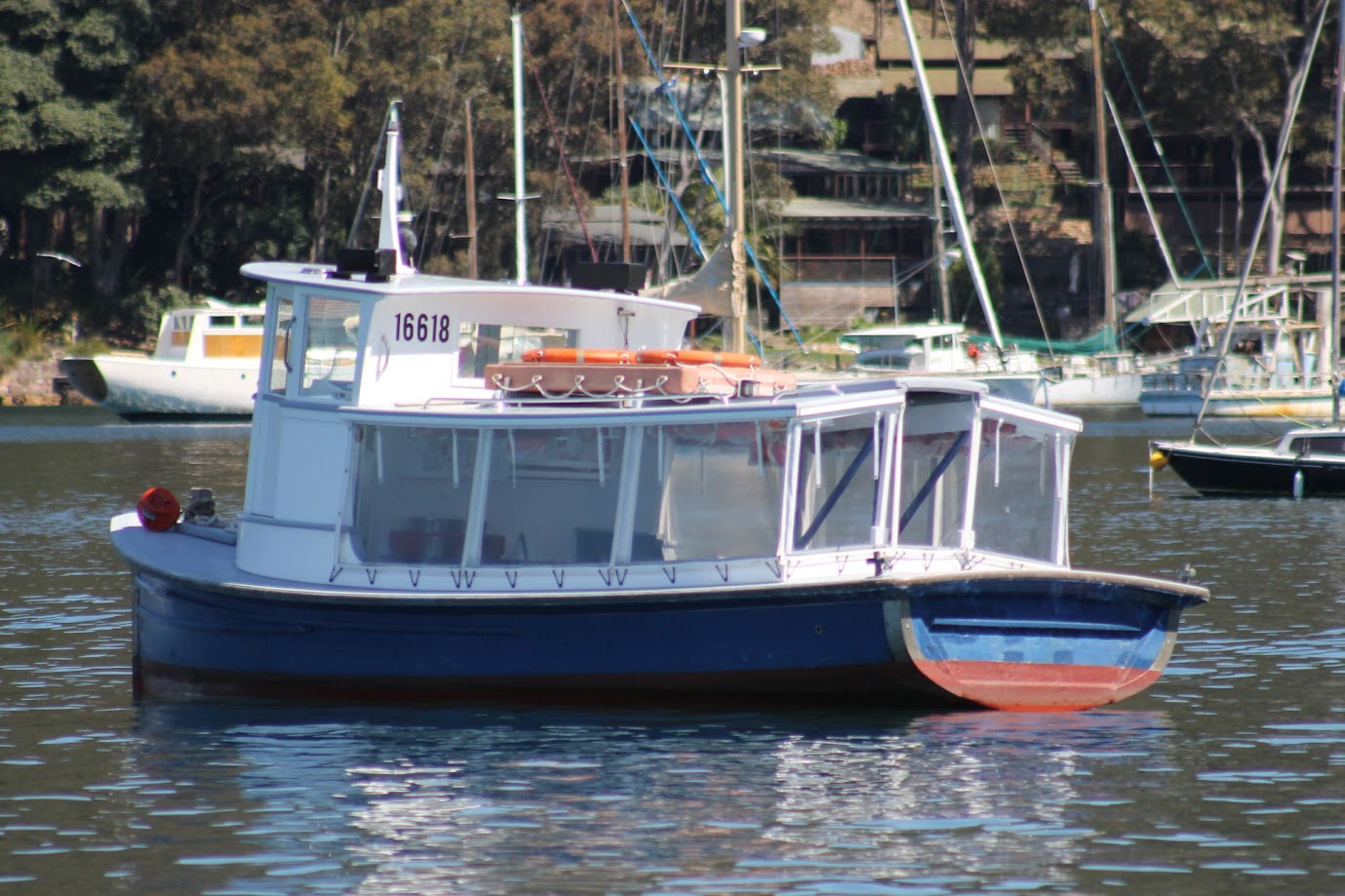
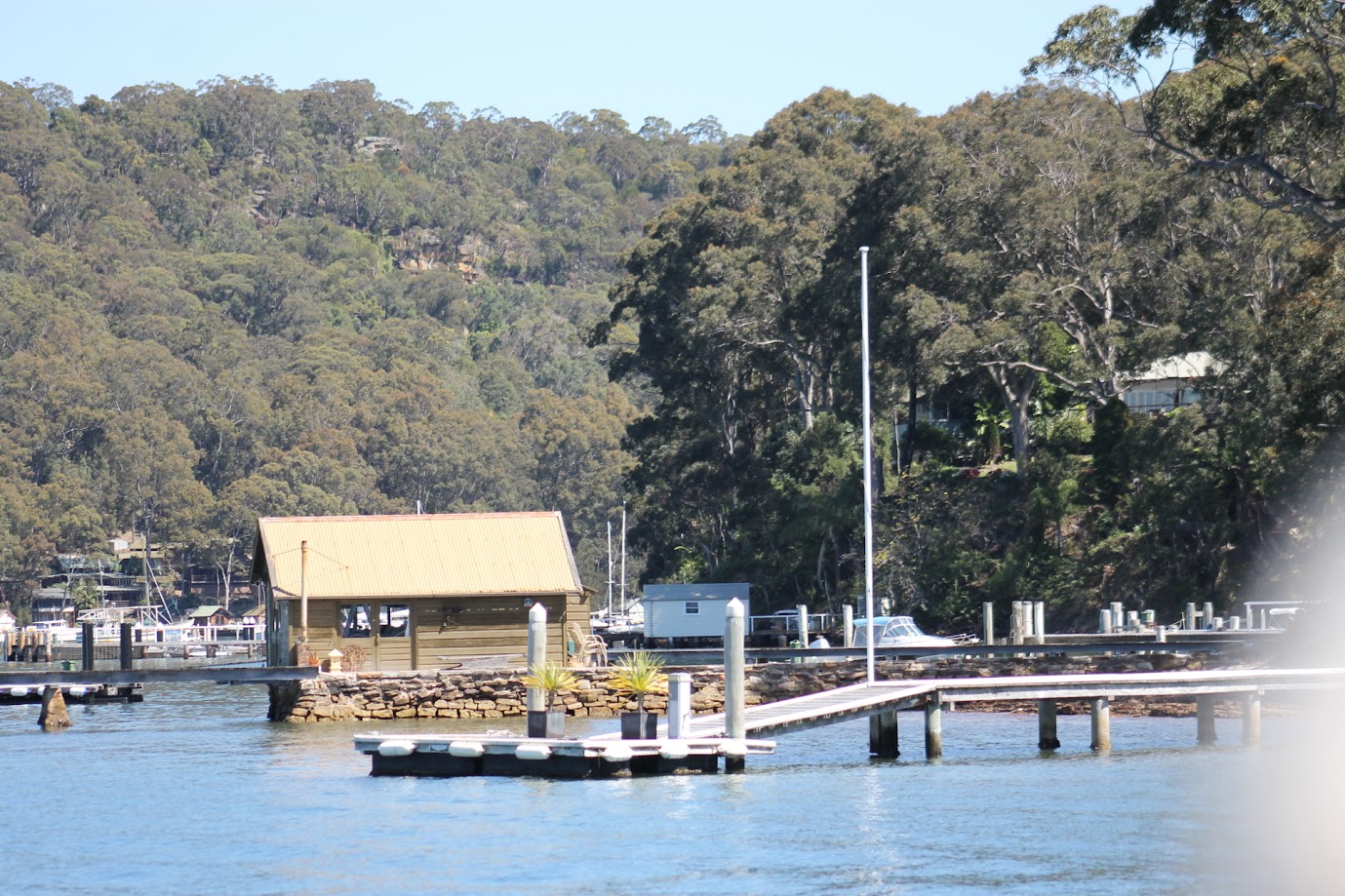
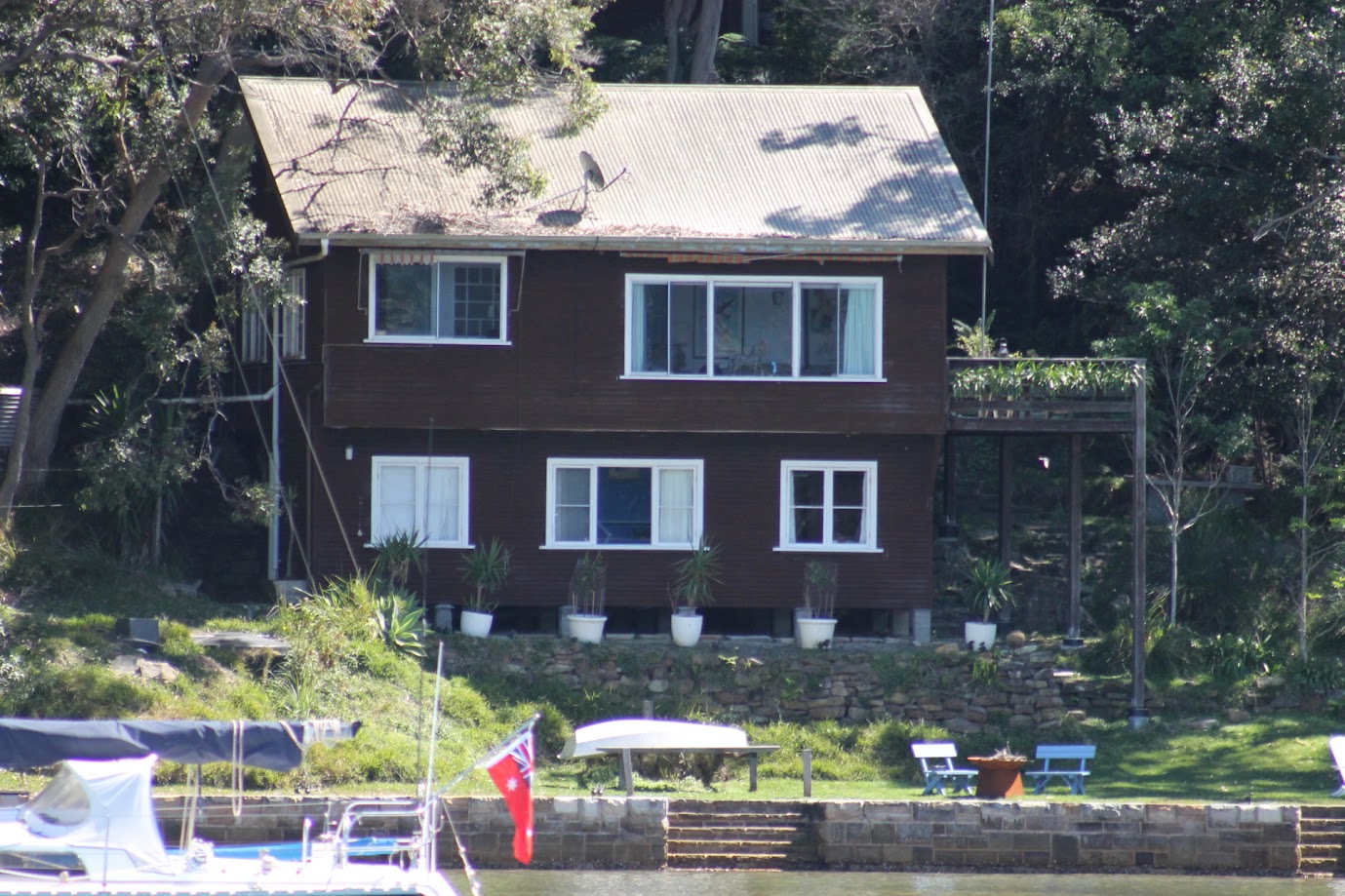
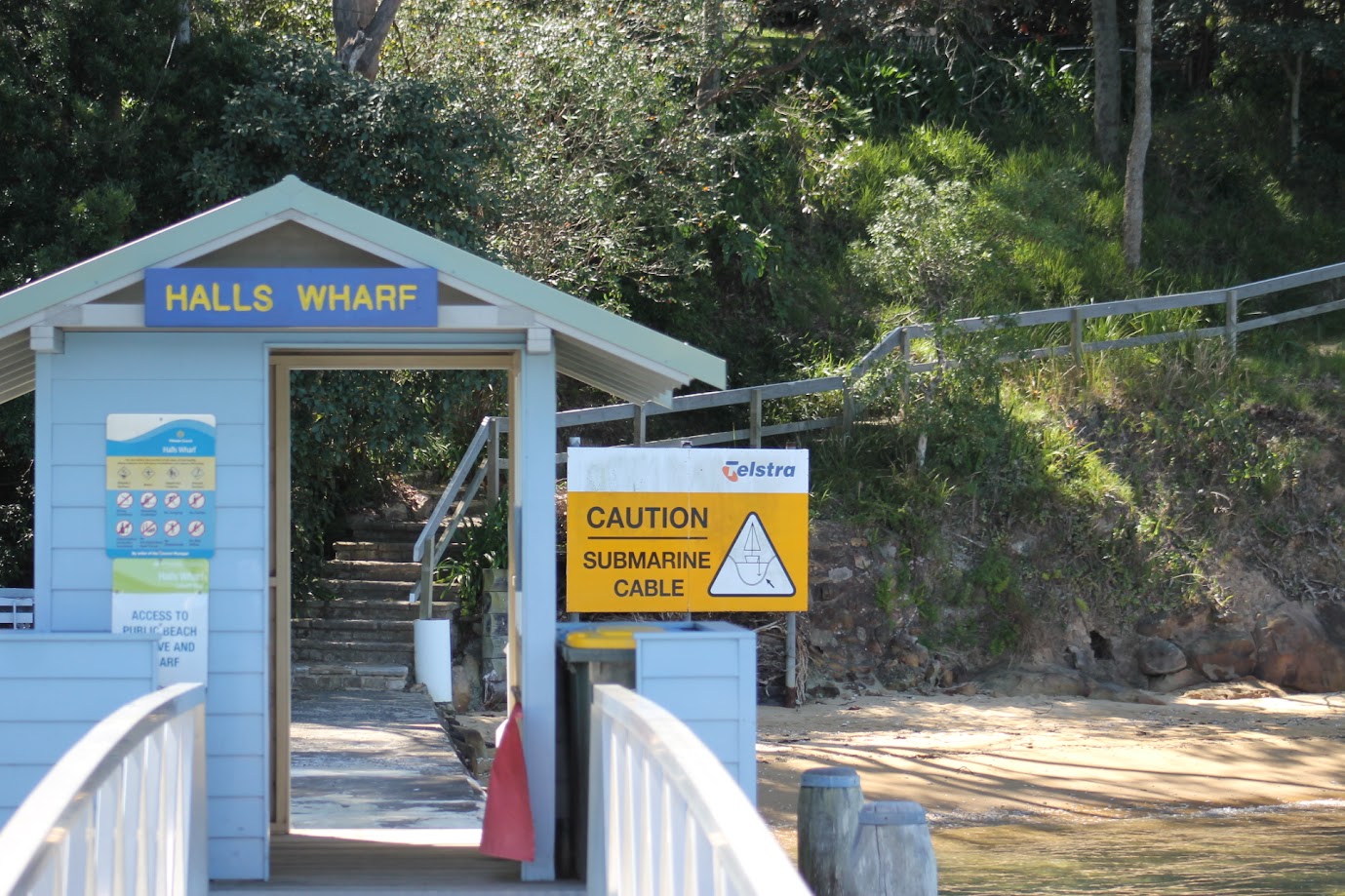
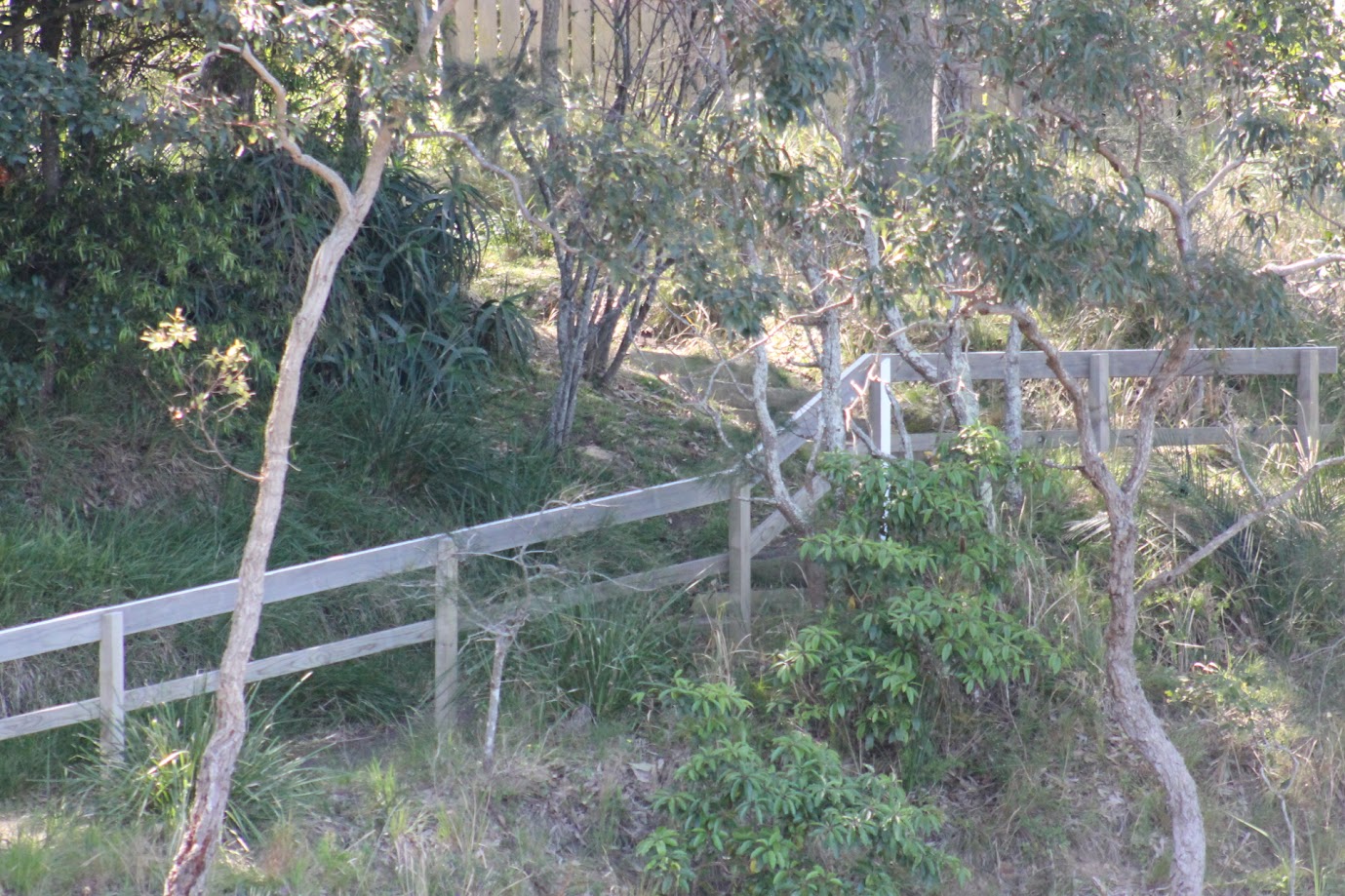
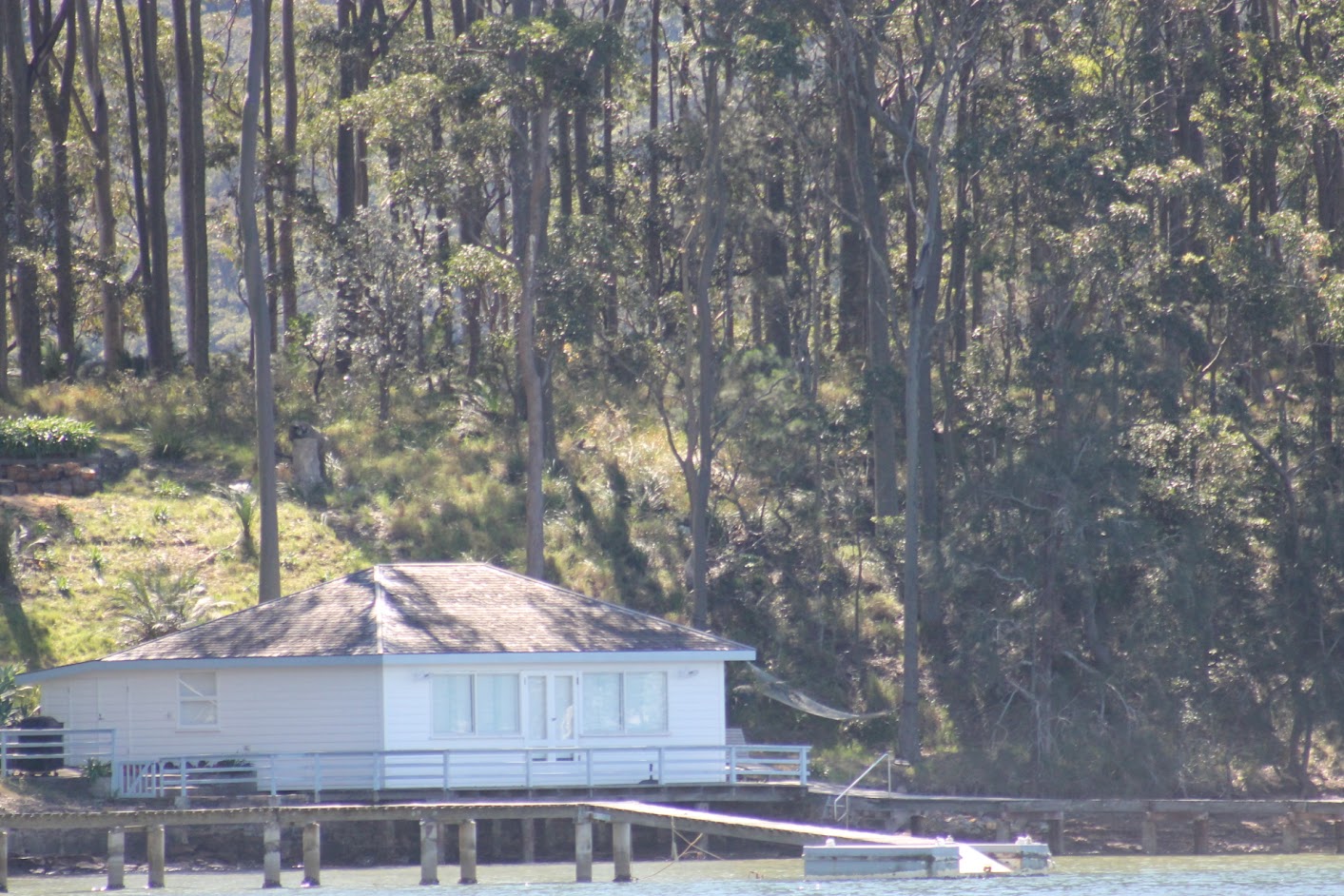
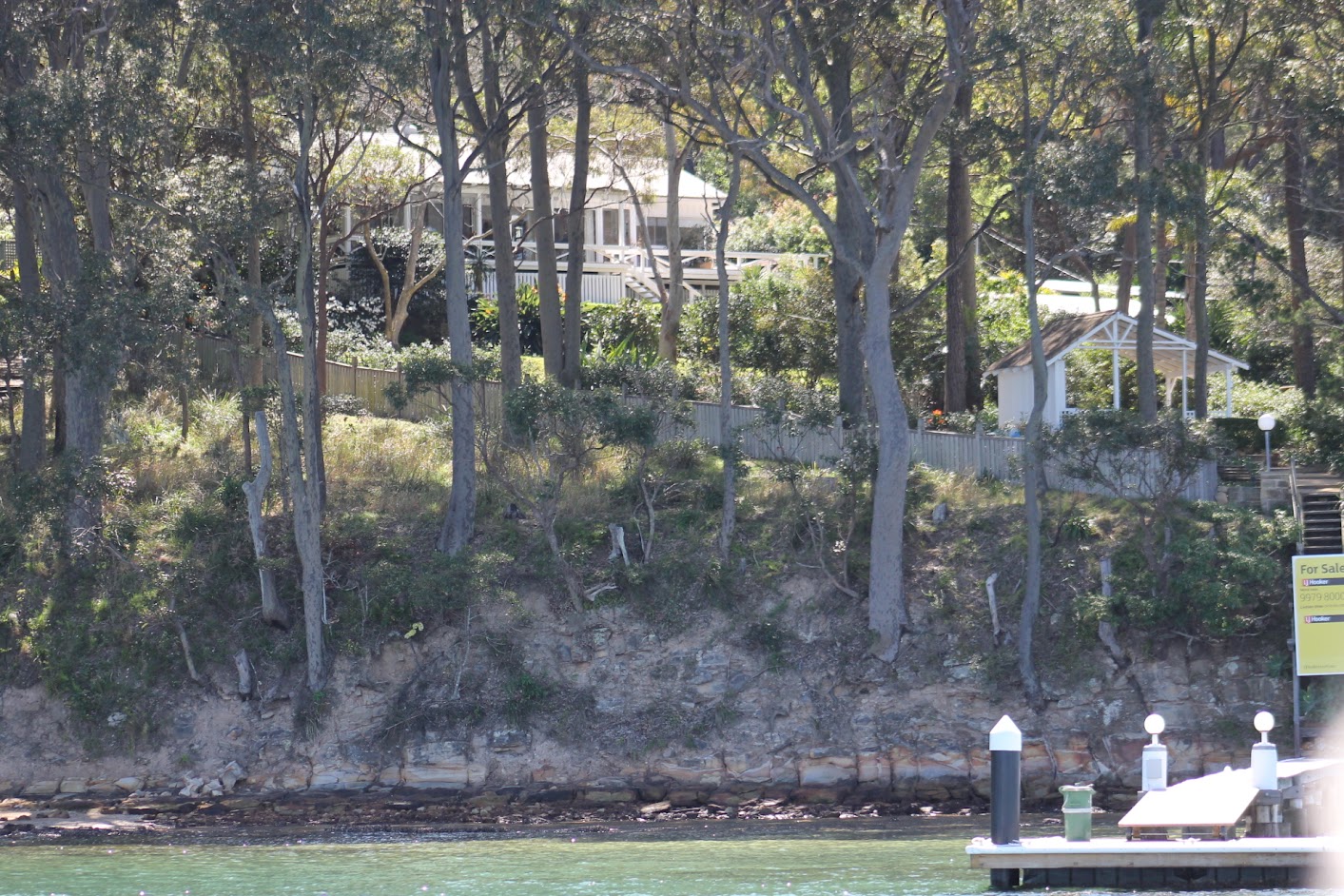
Lovett Bay Public Wharves: Some History - threads collected and collated by A J Guesdon, 2025
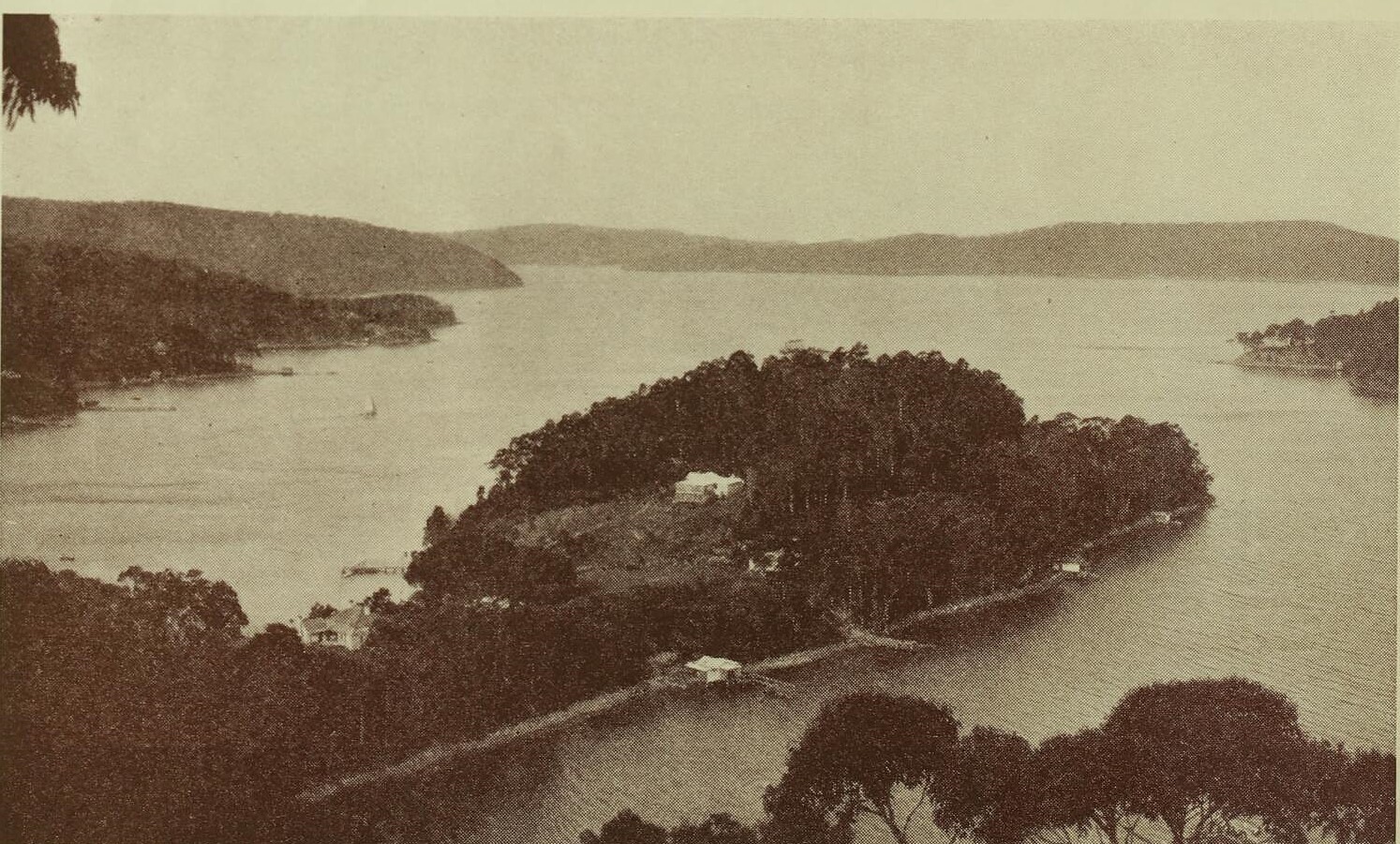
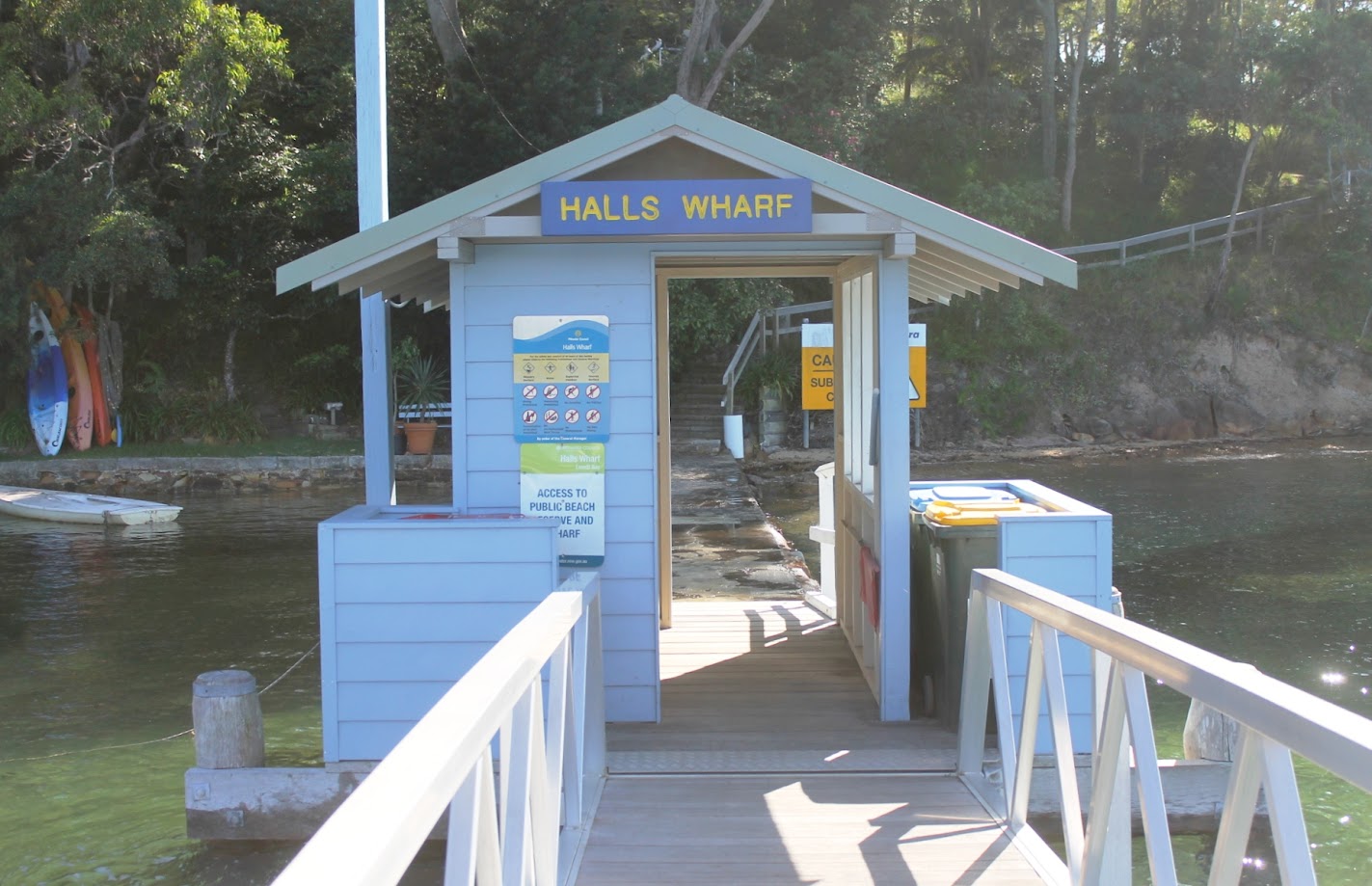
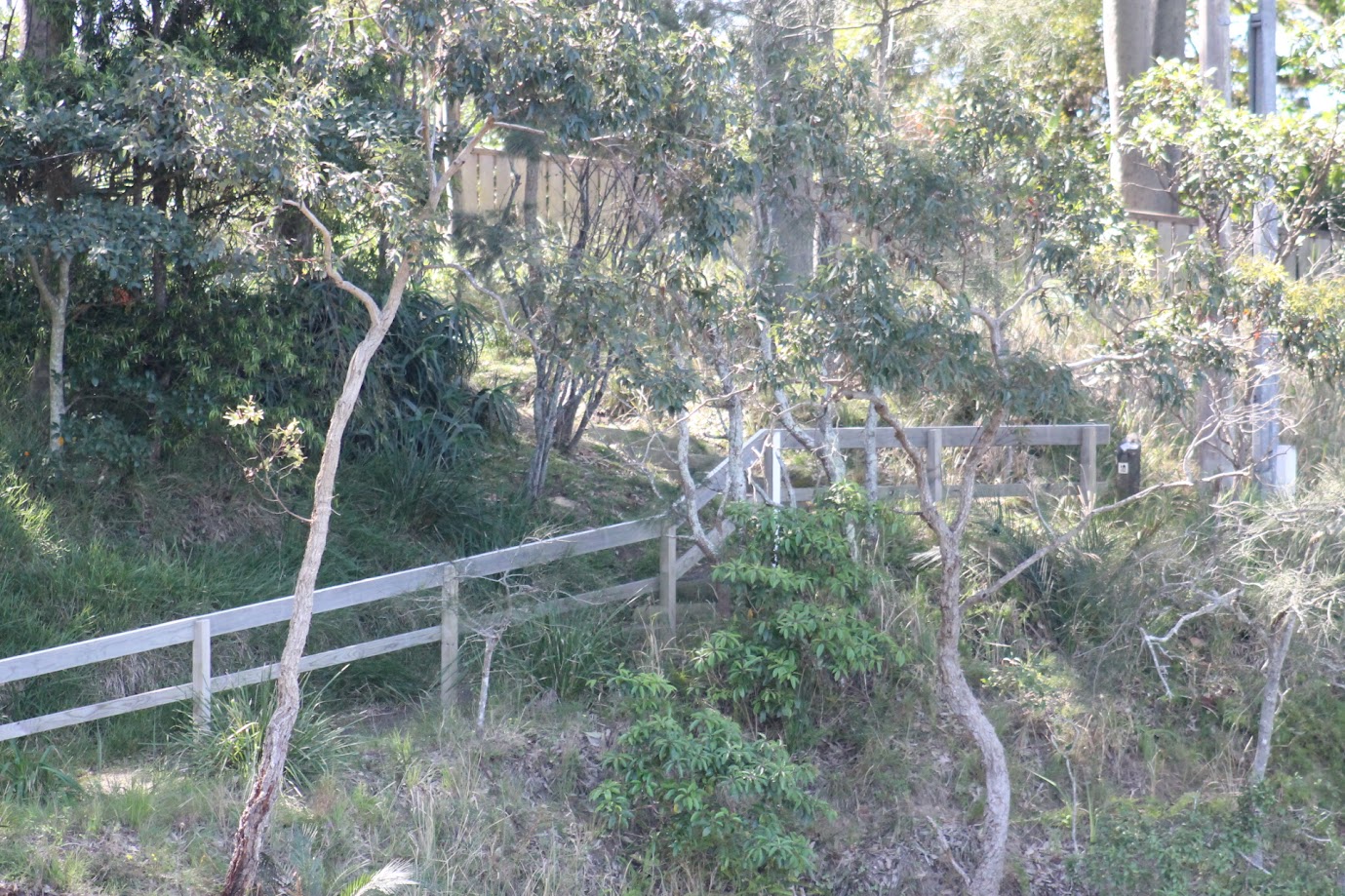
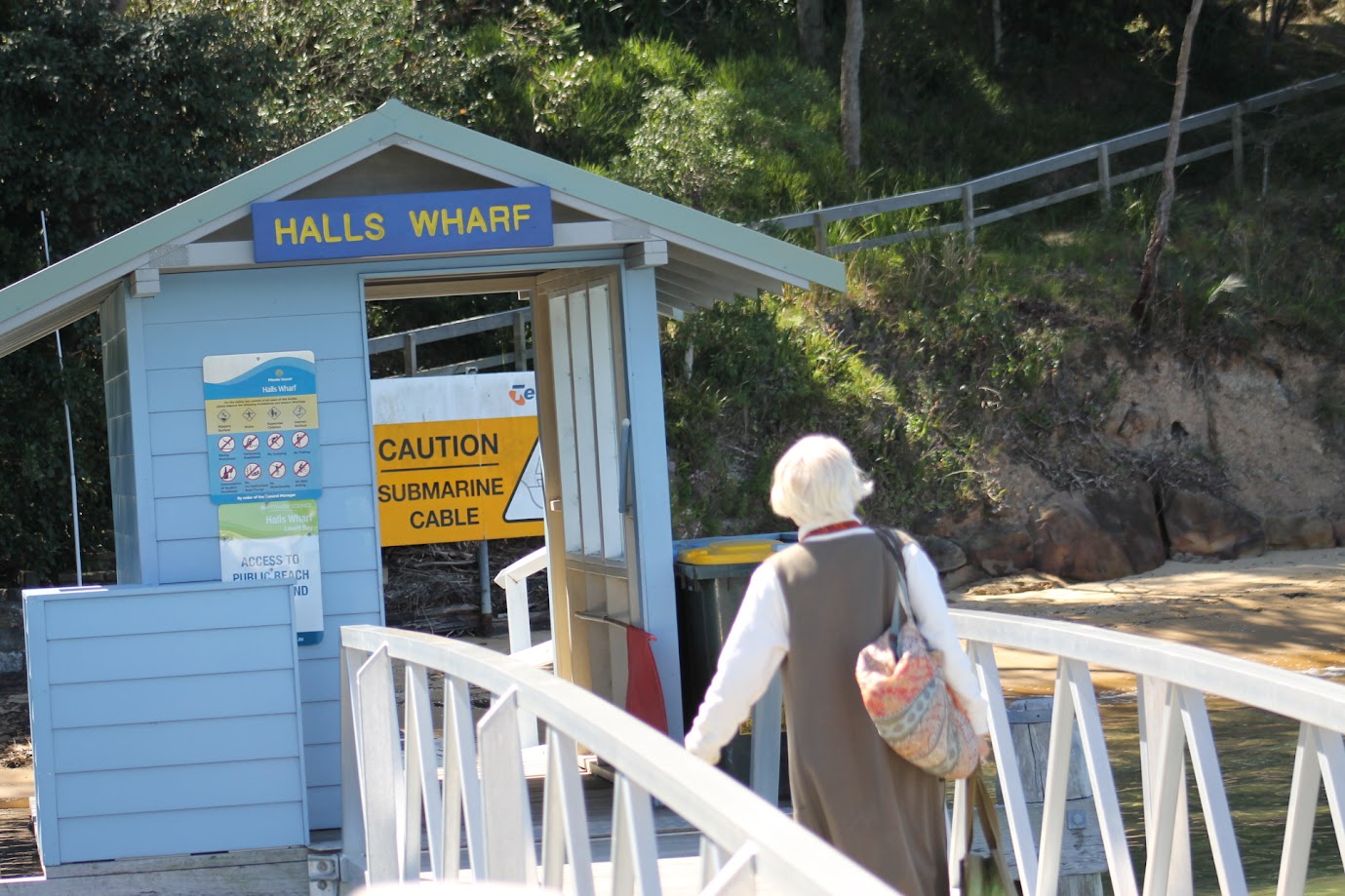
.jpg?timestamp=1758591865929)